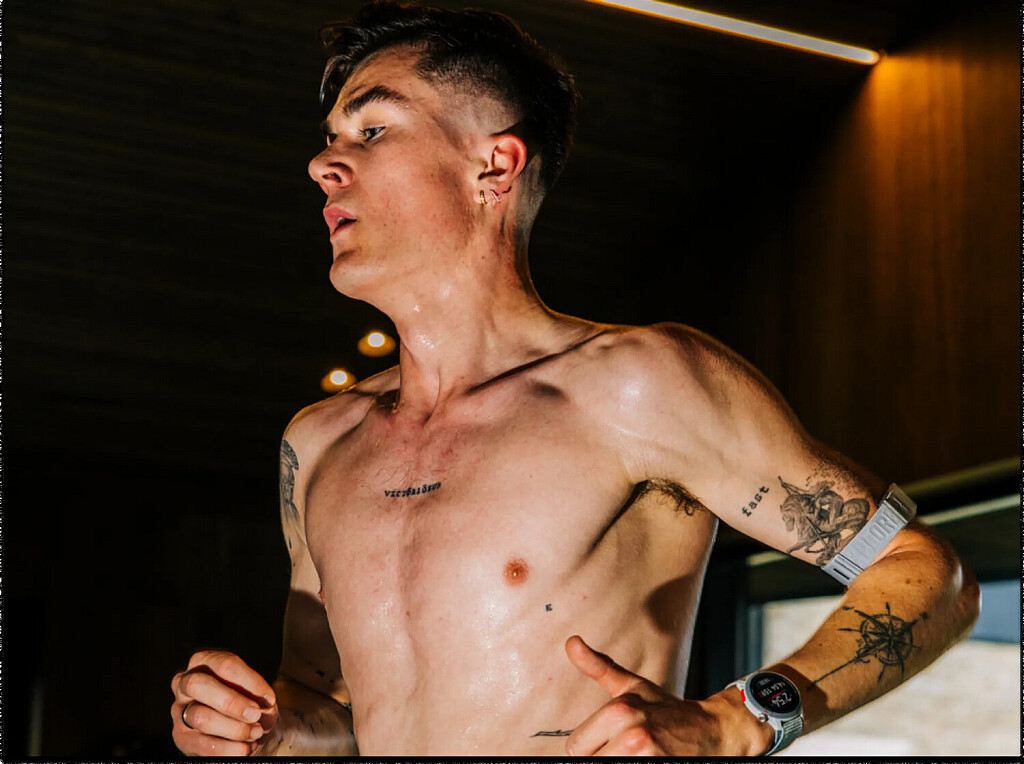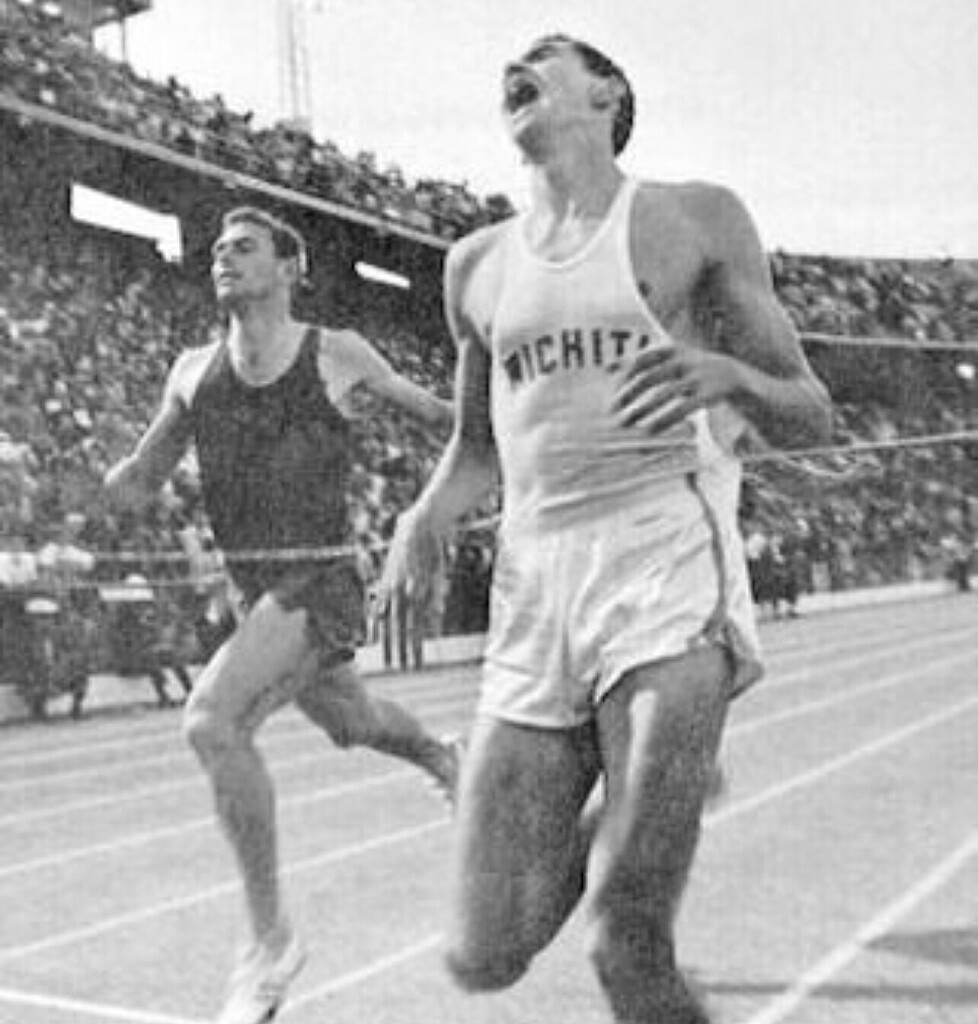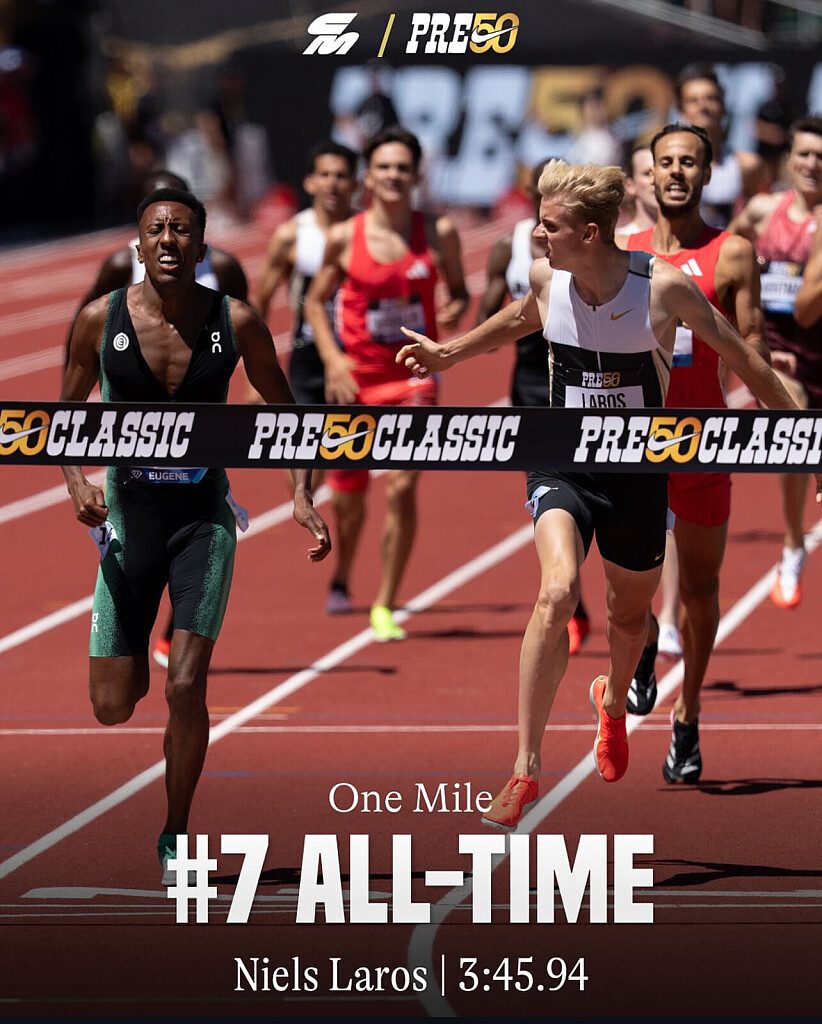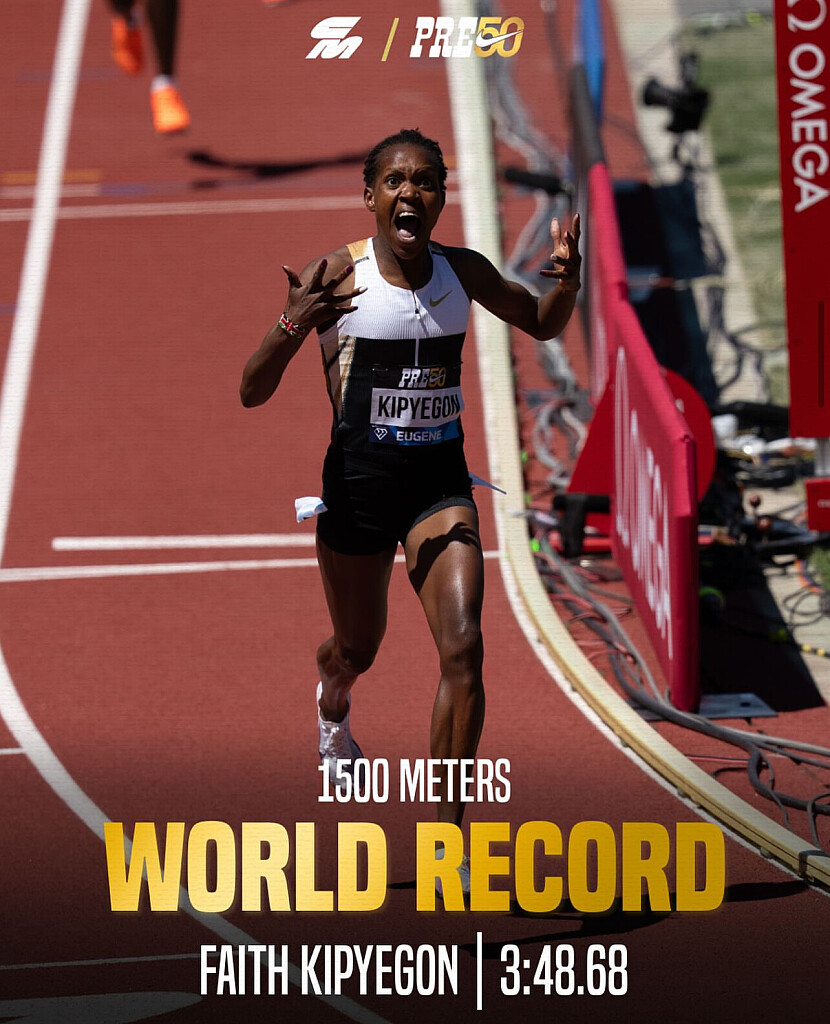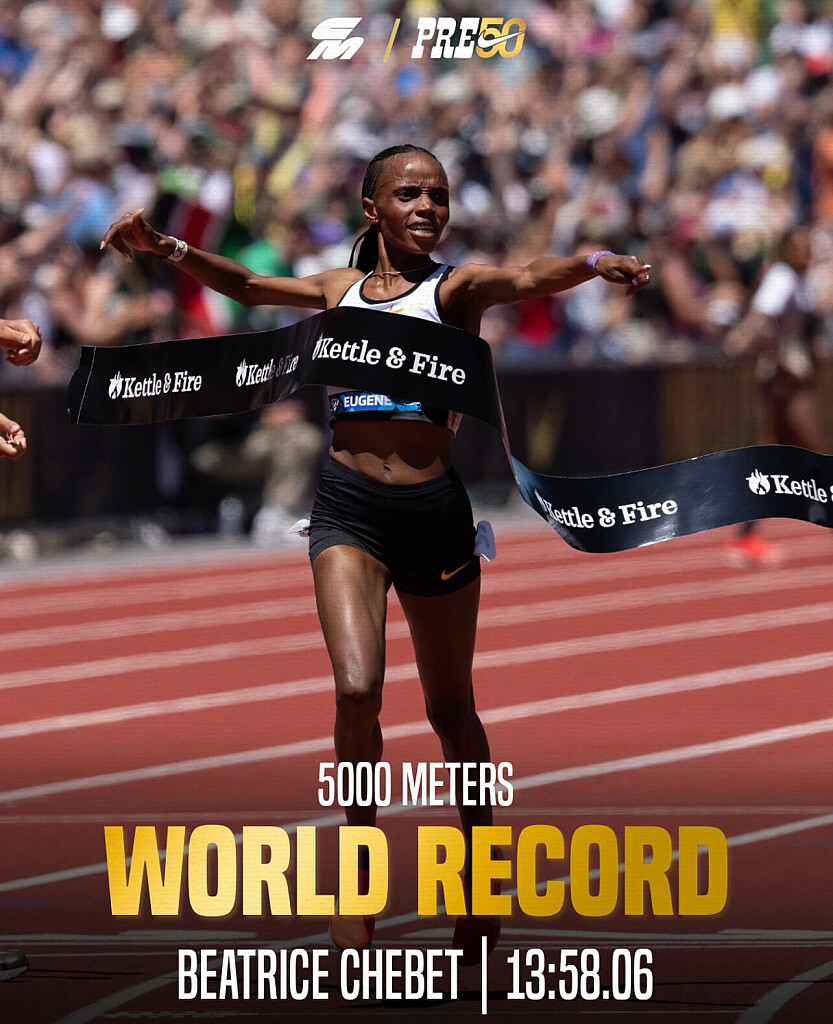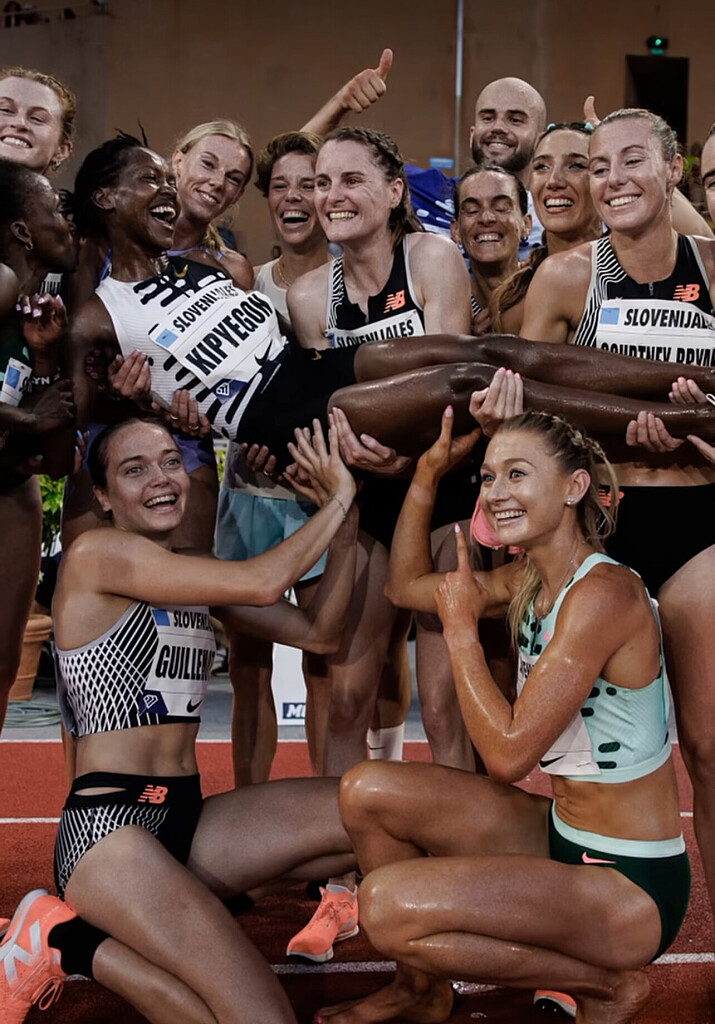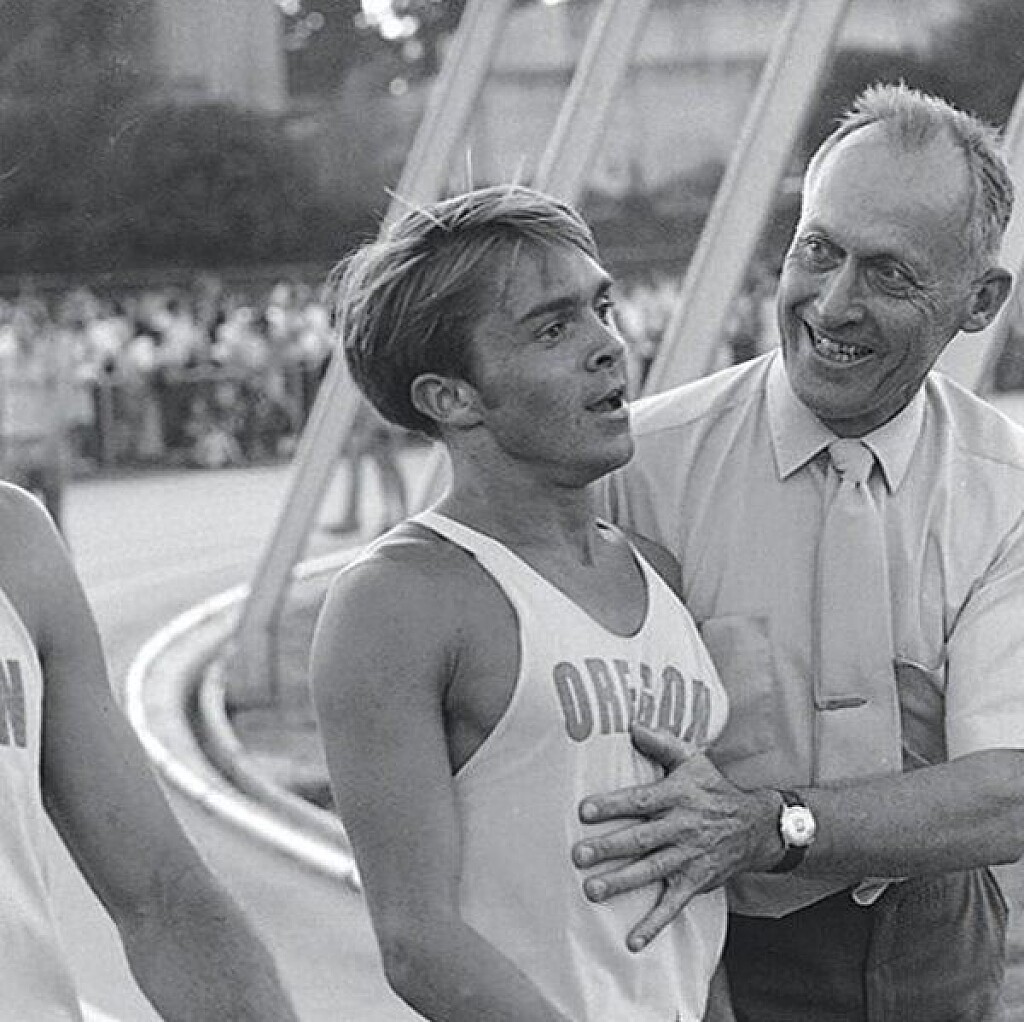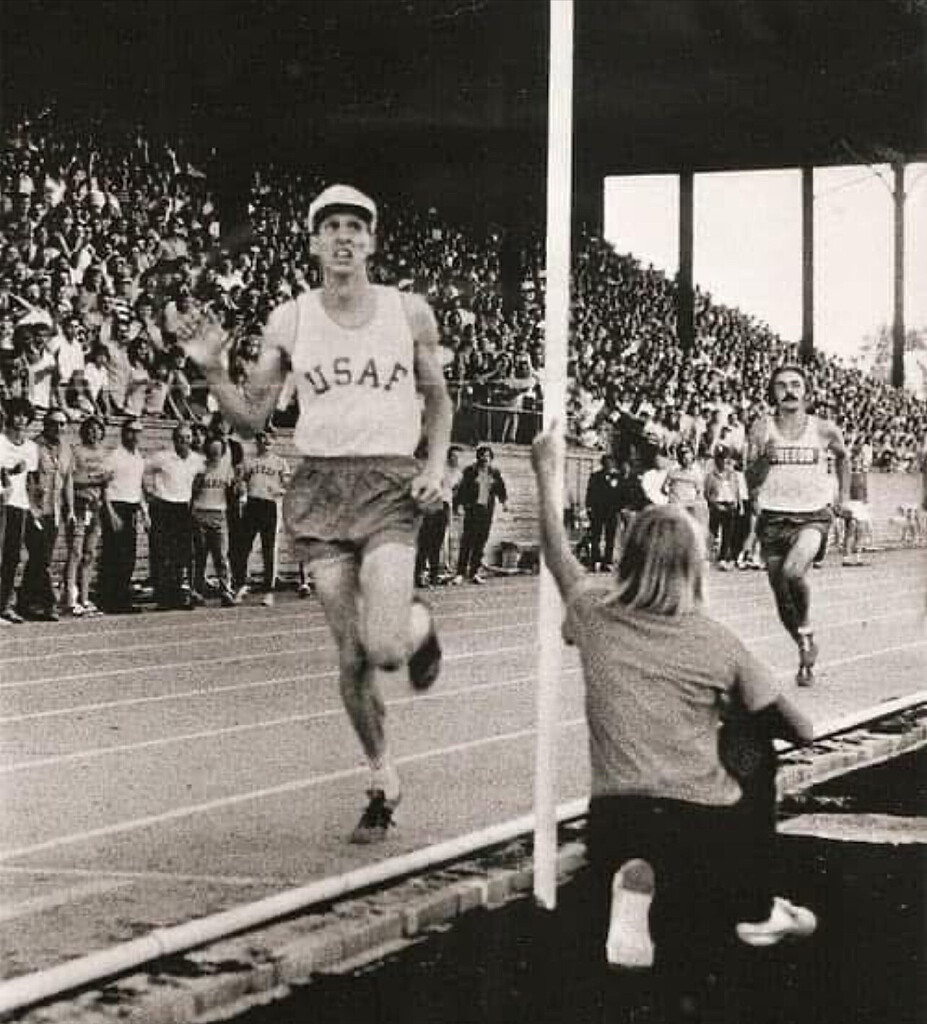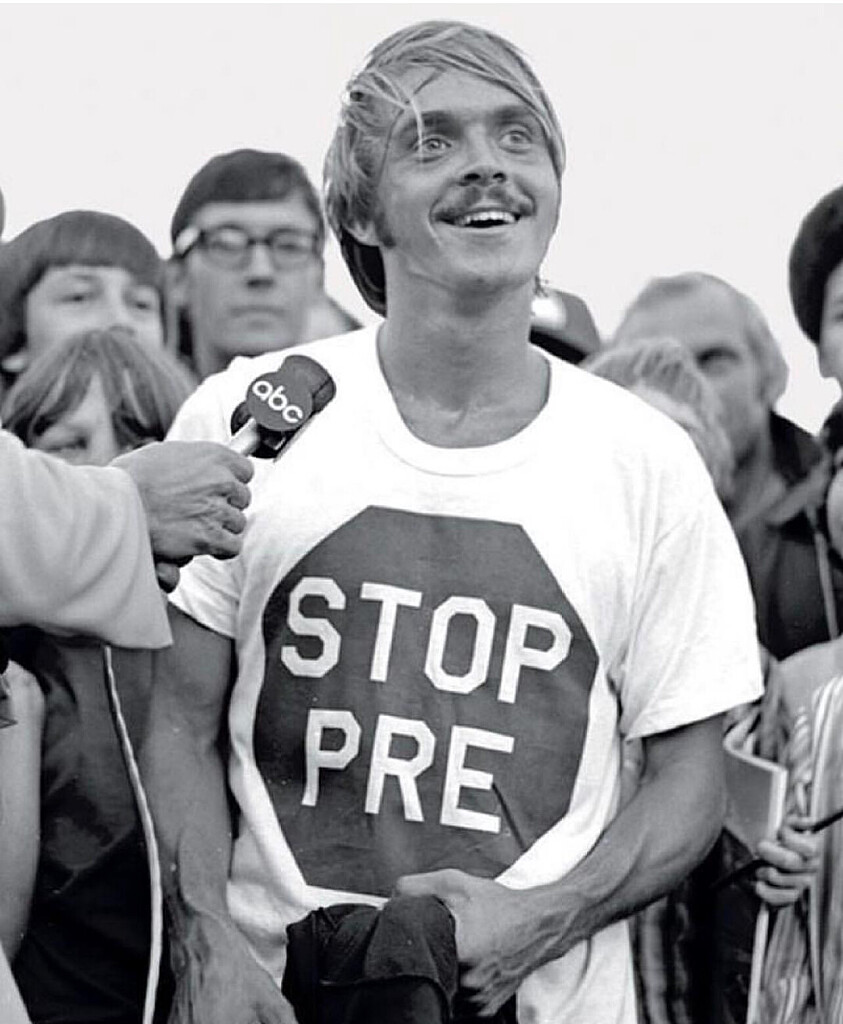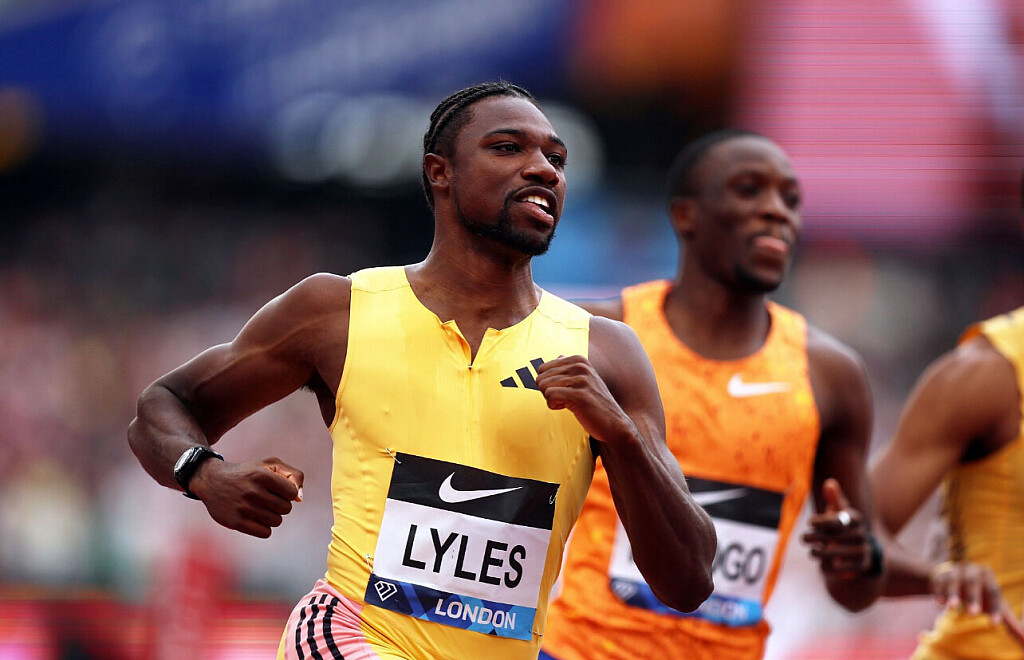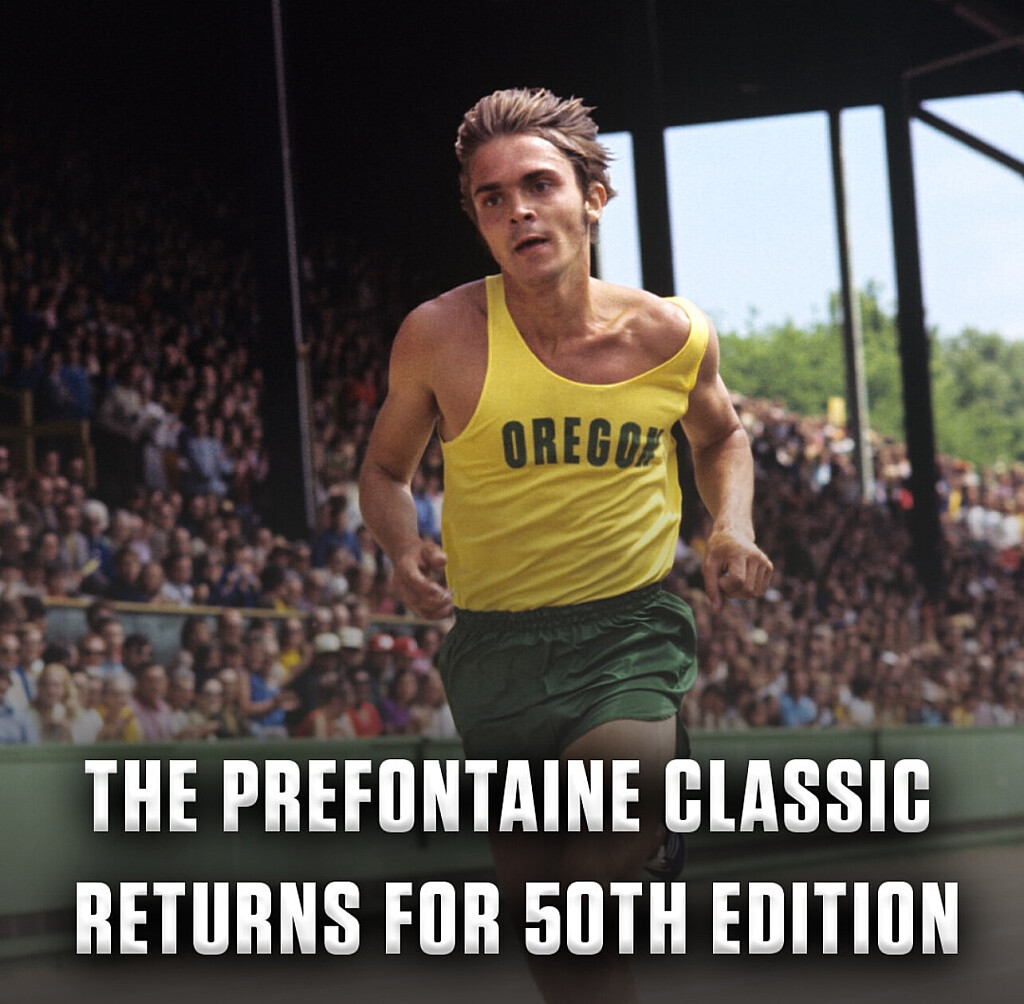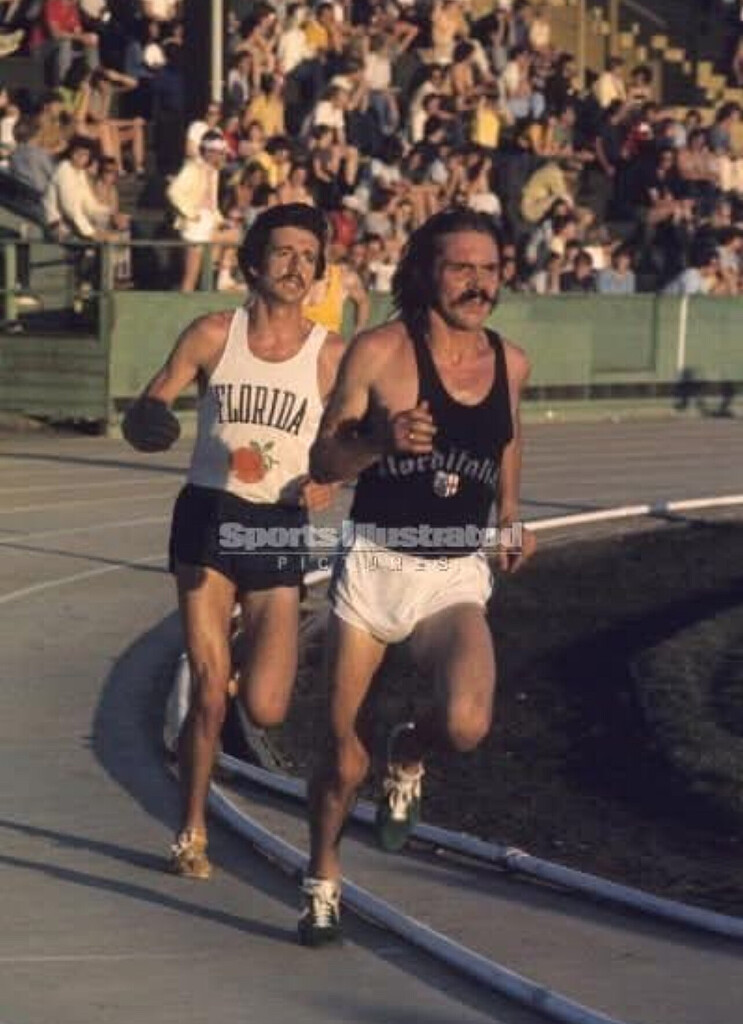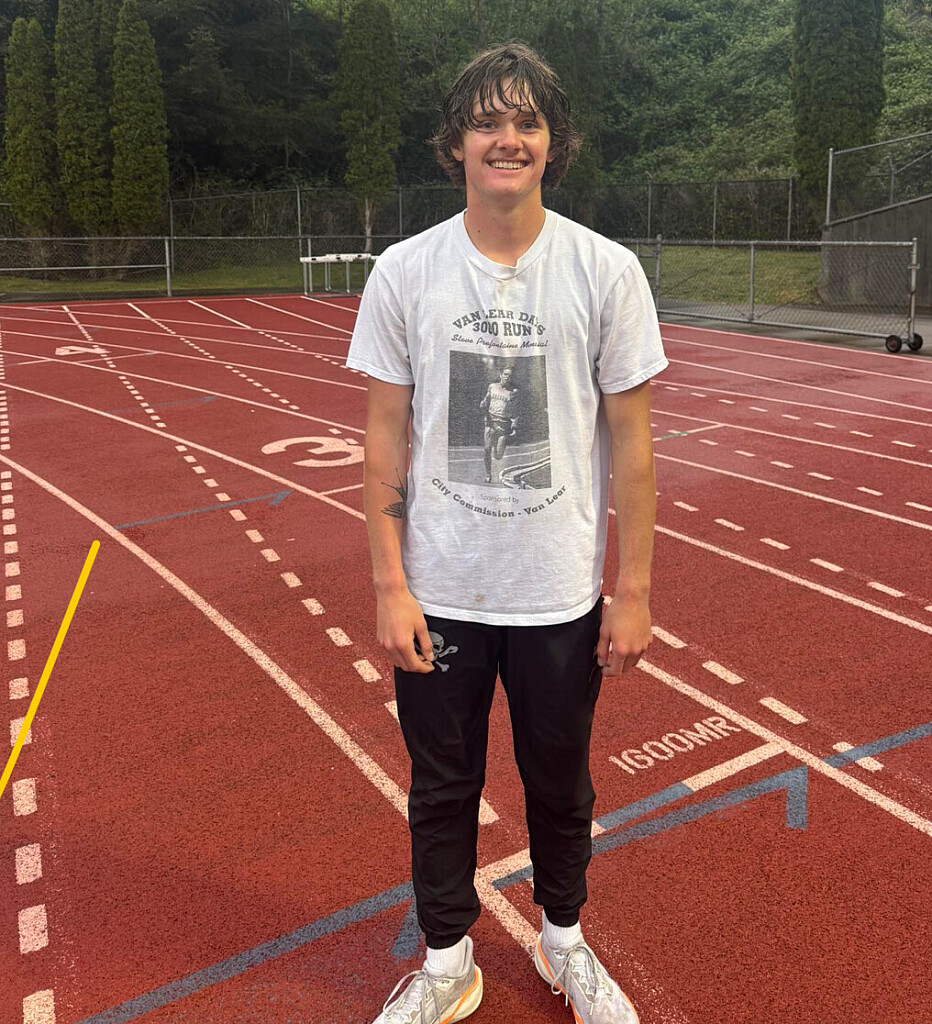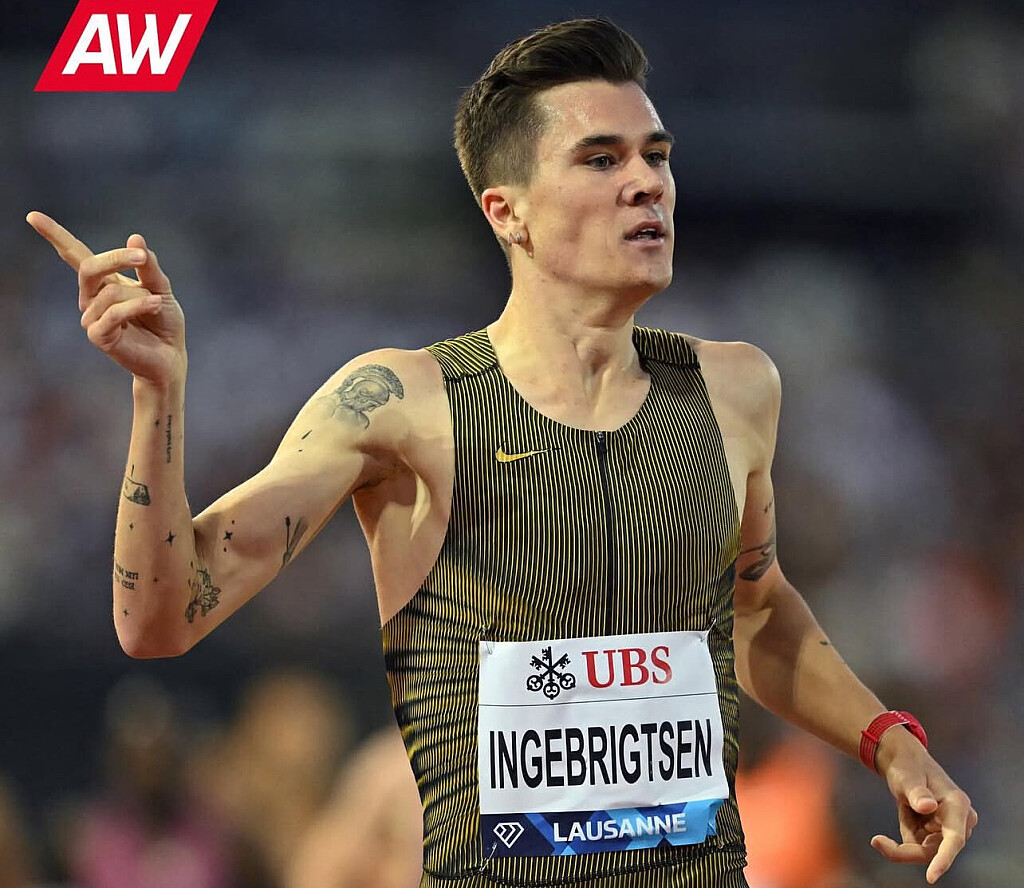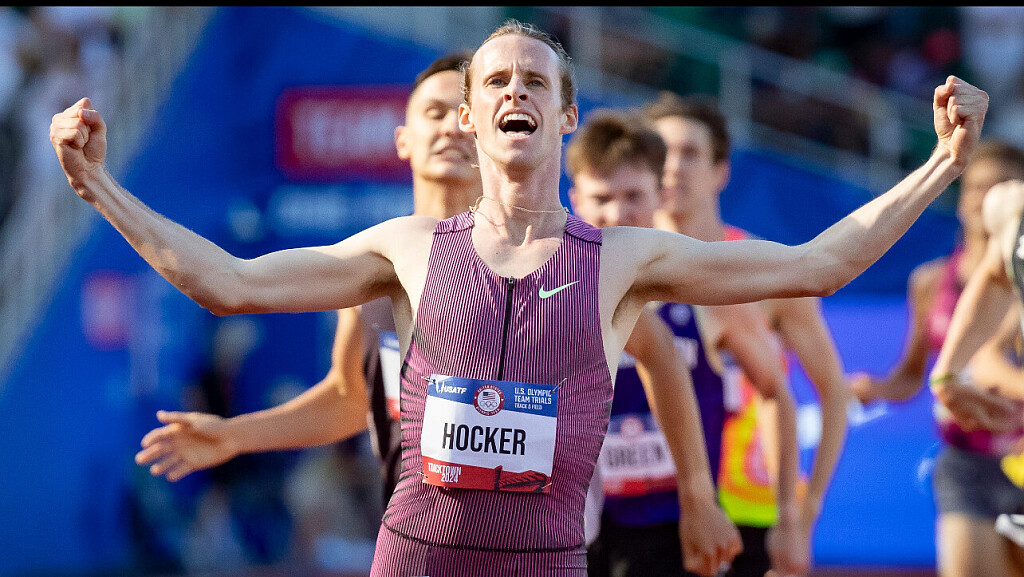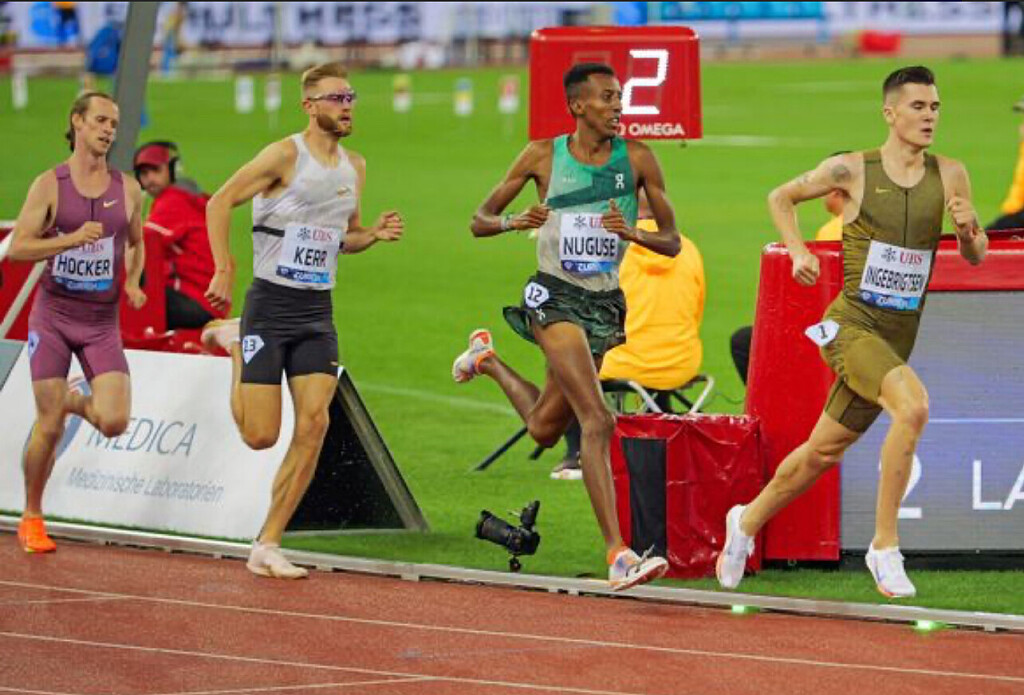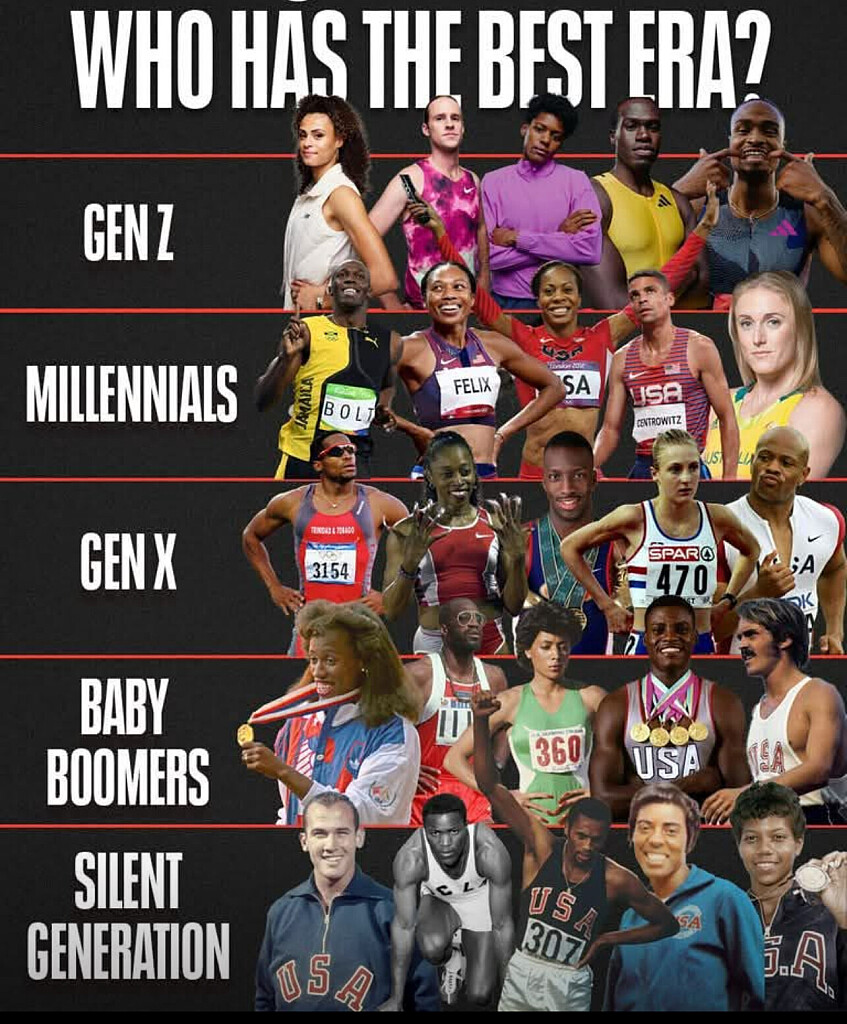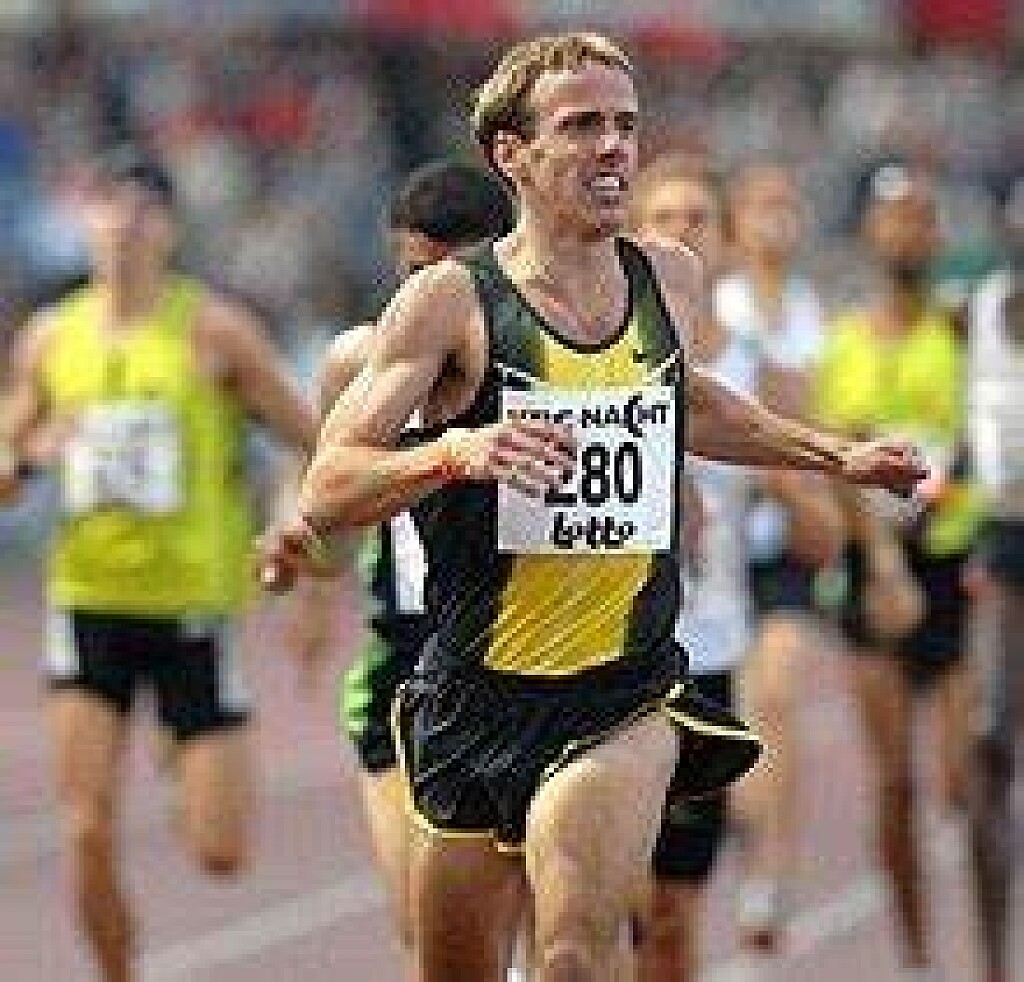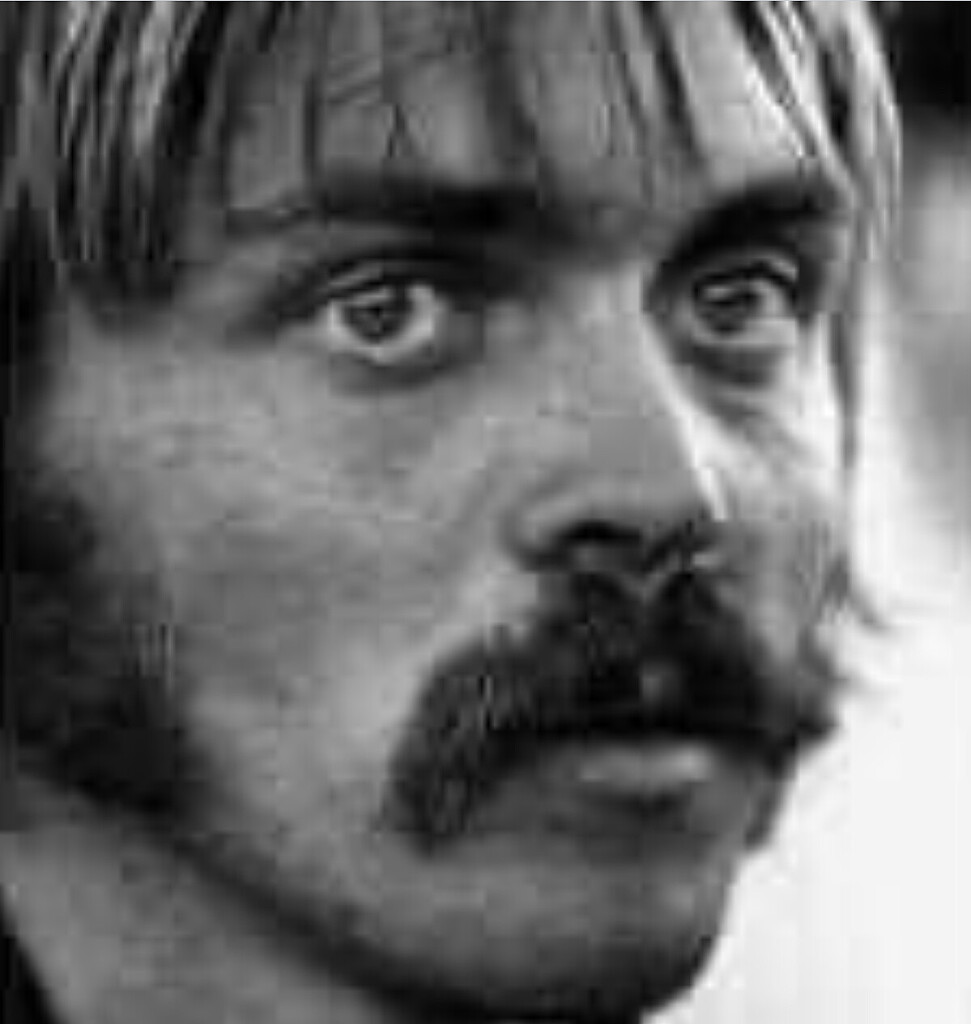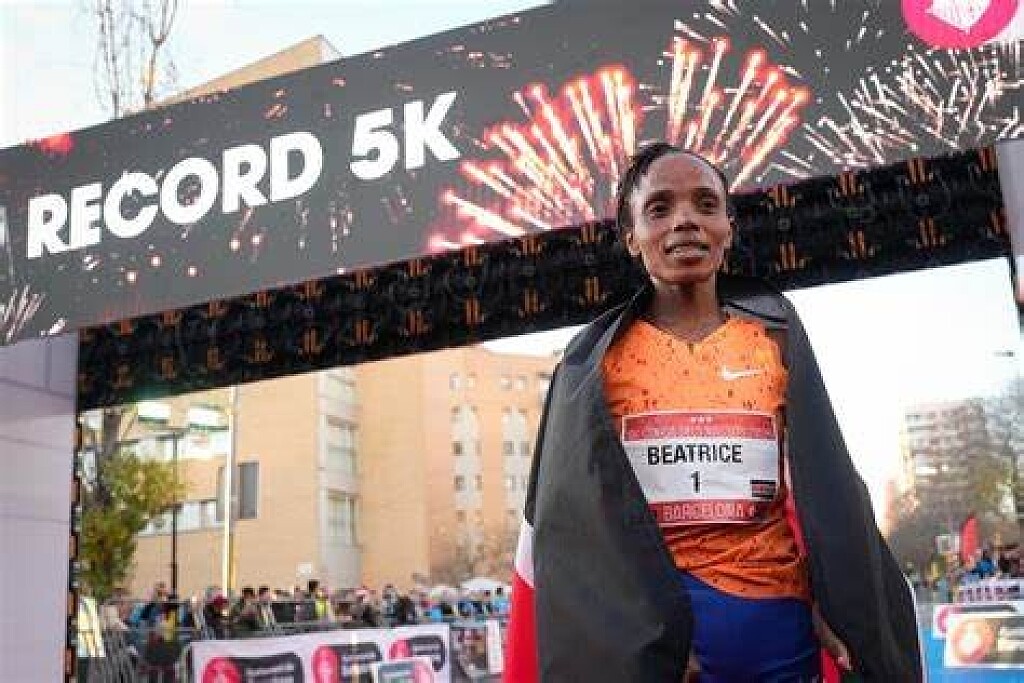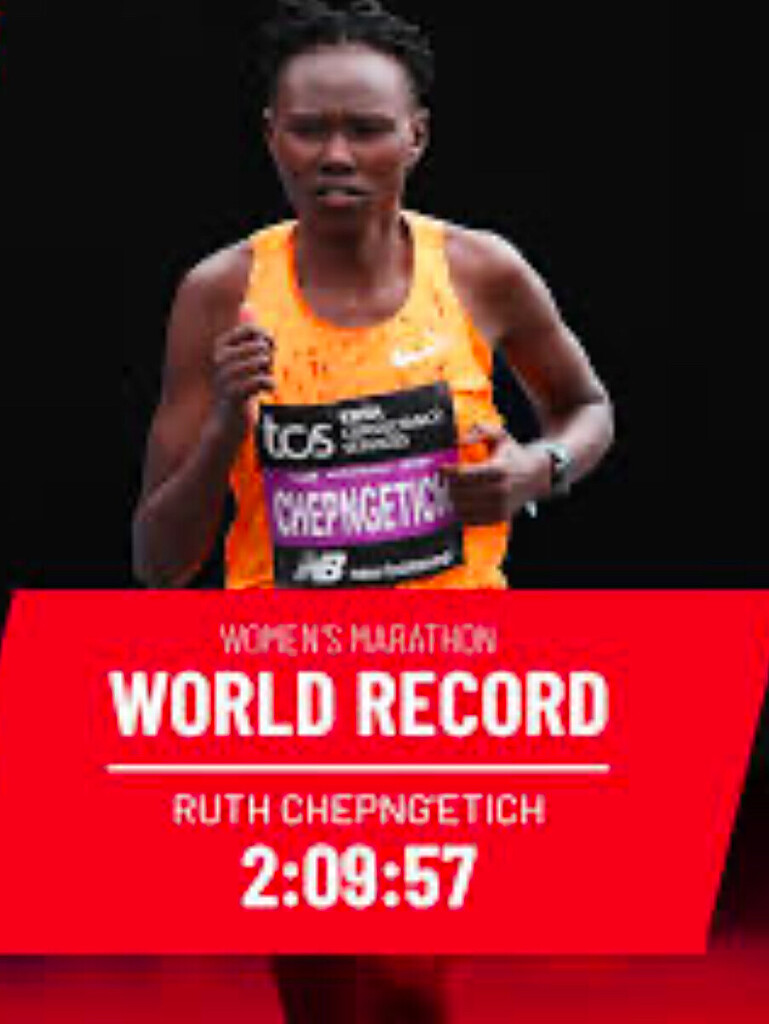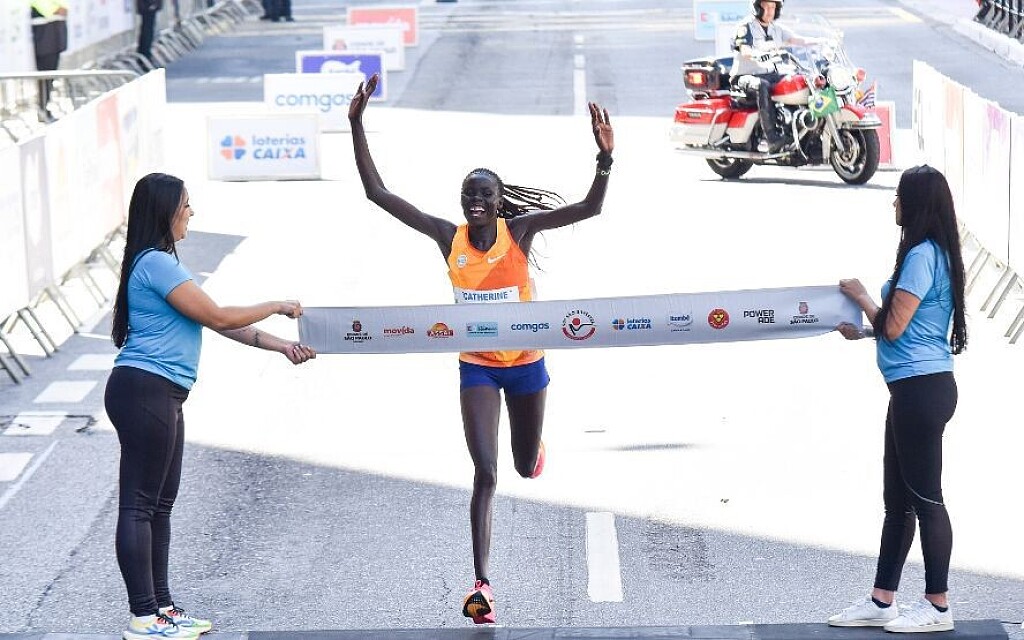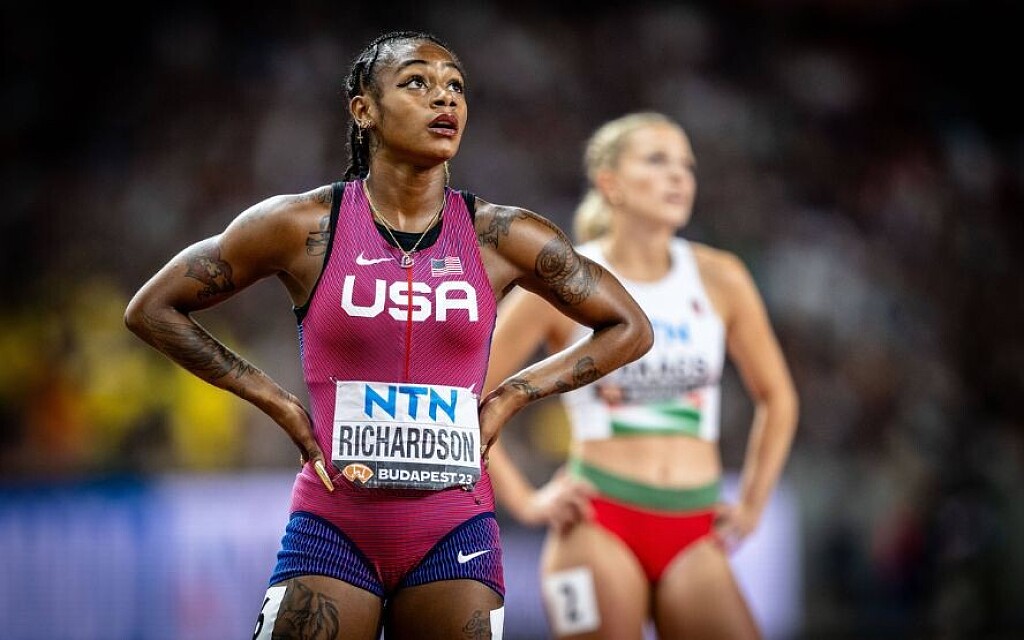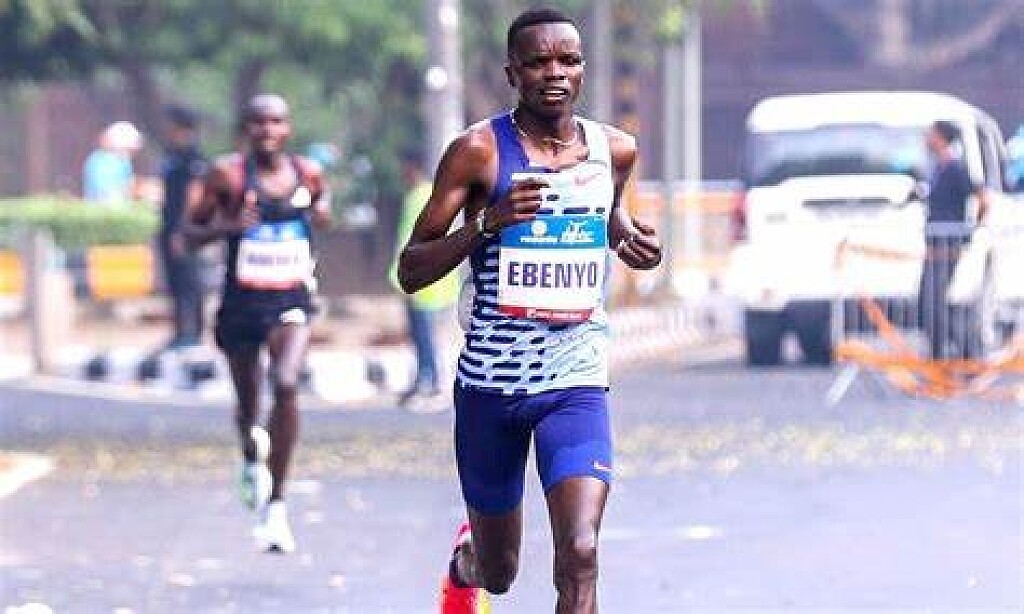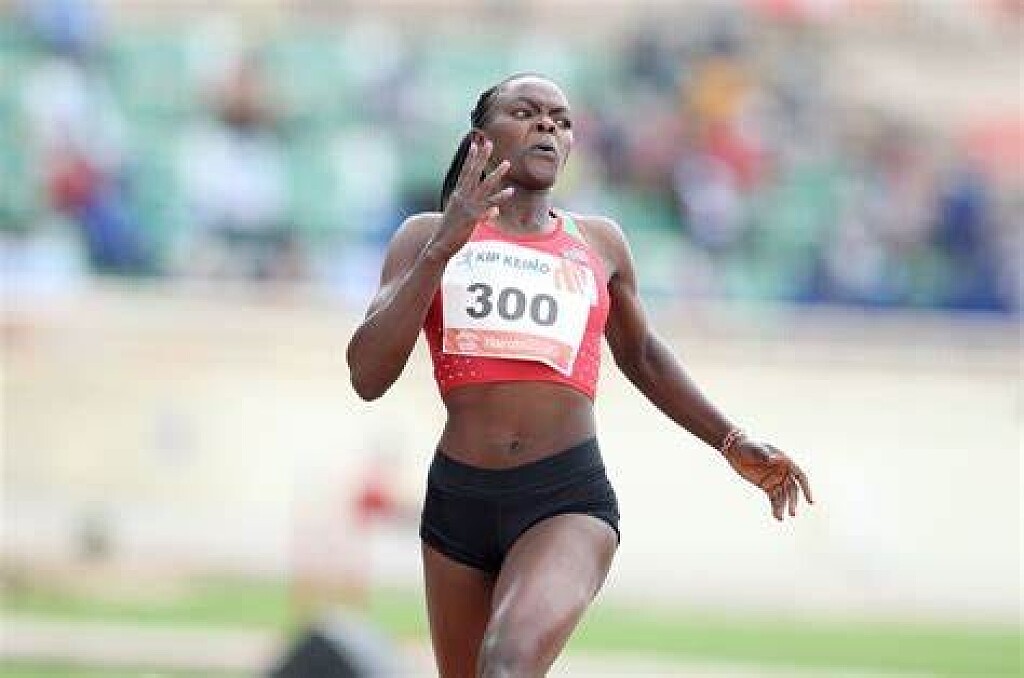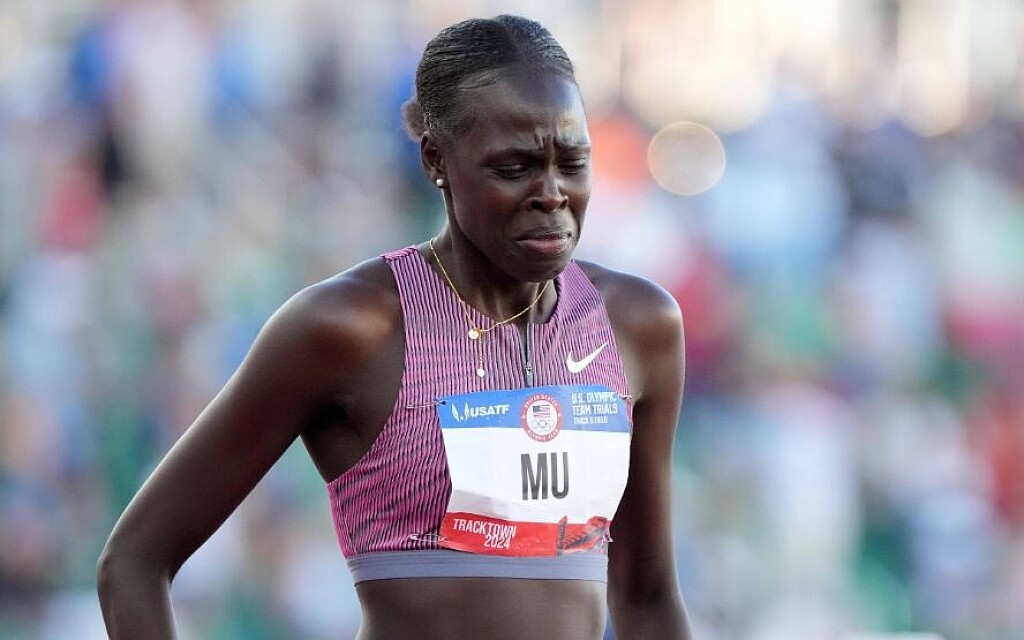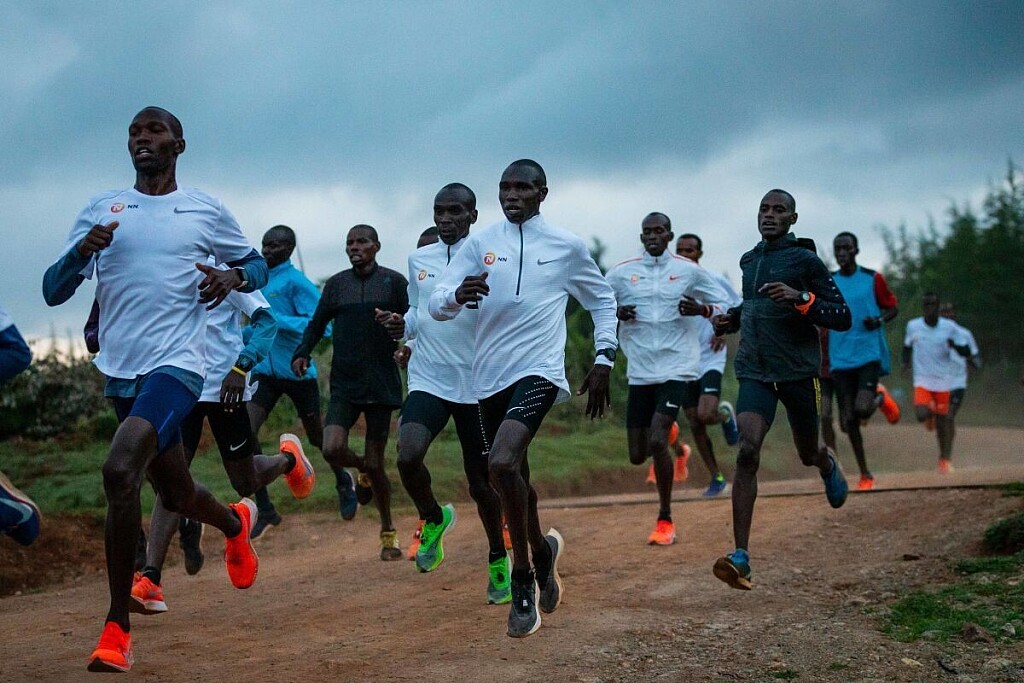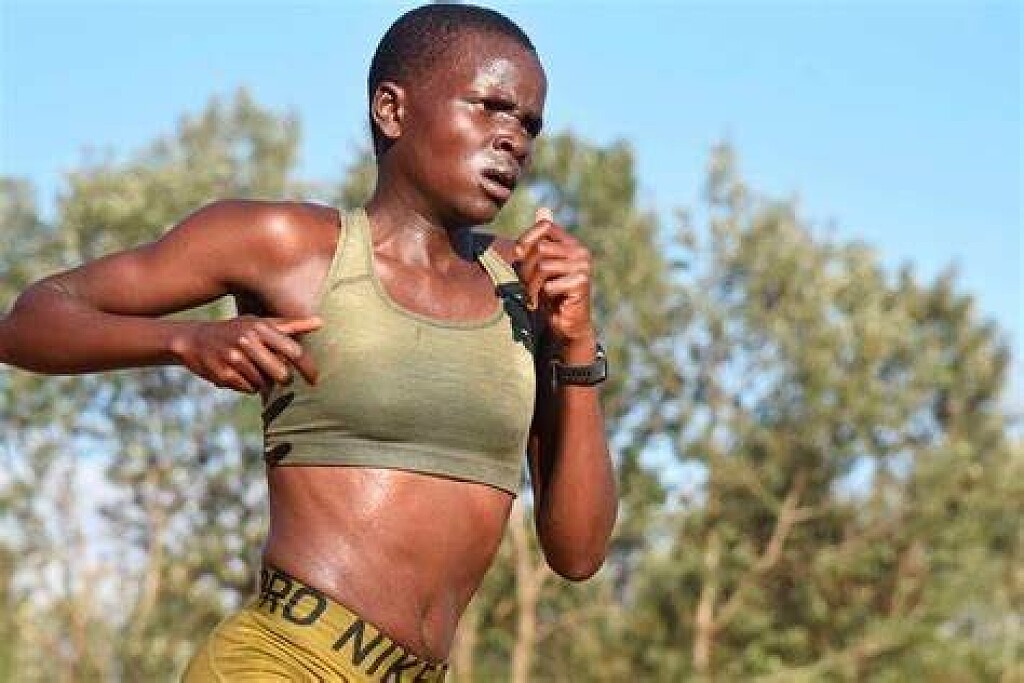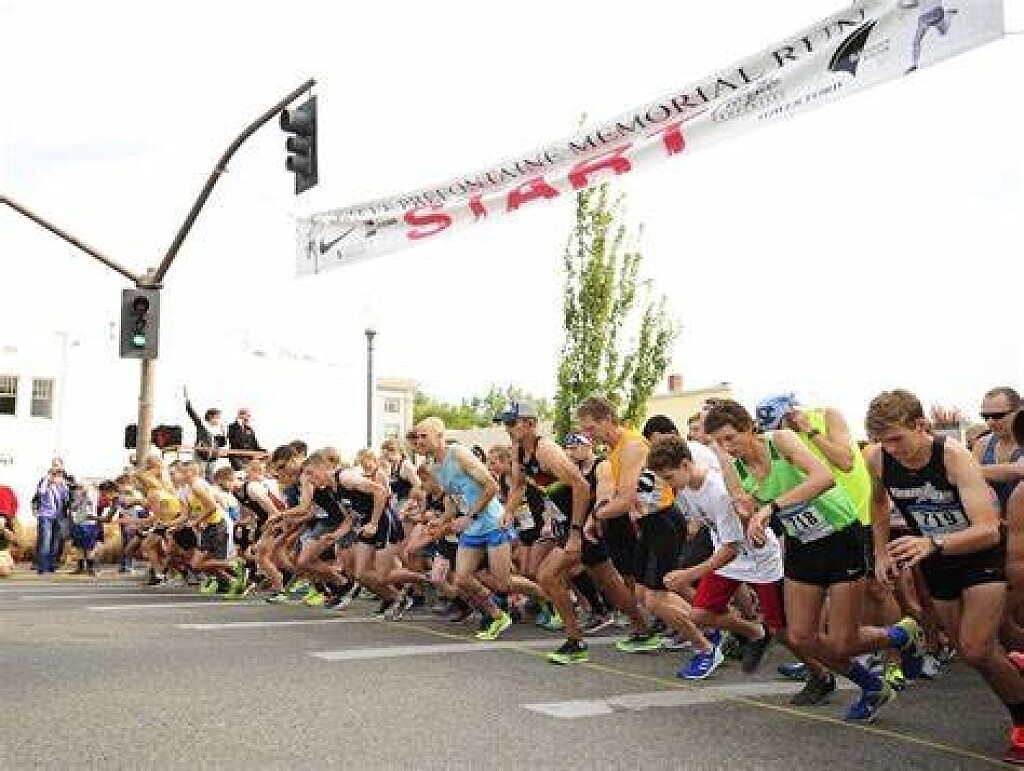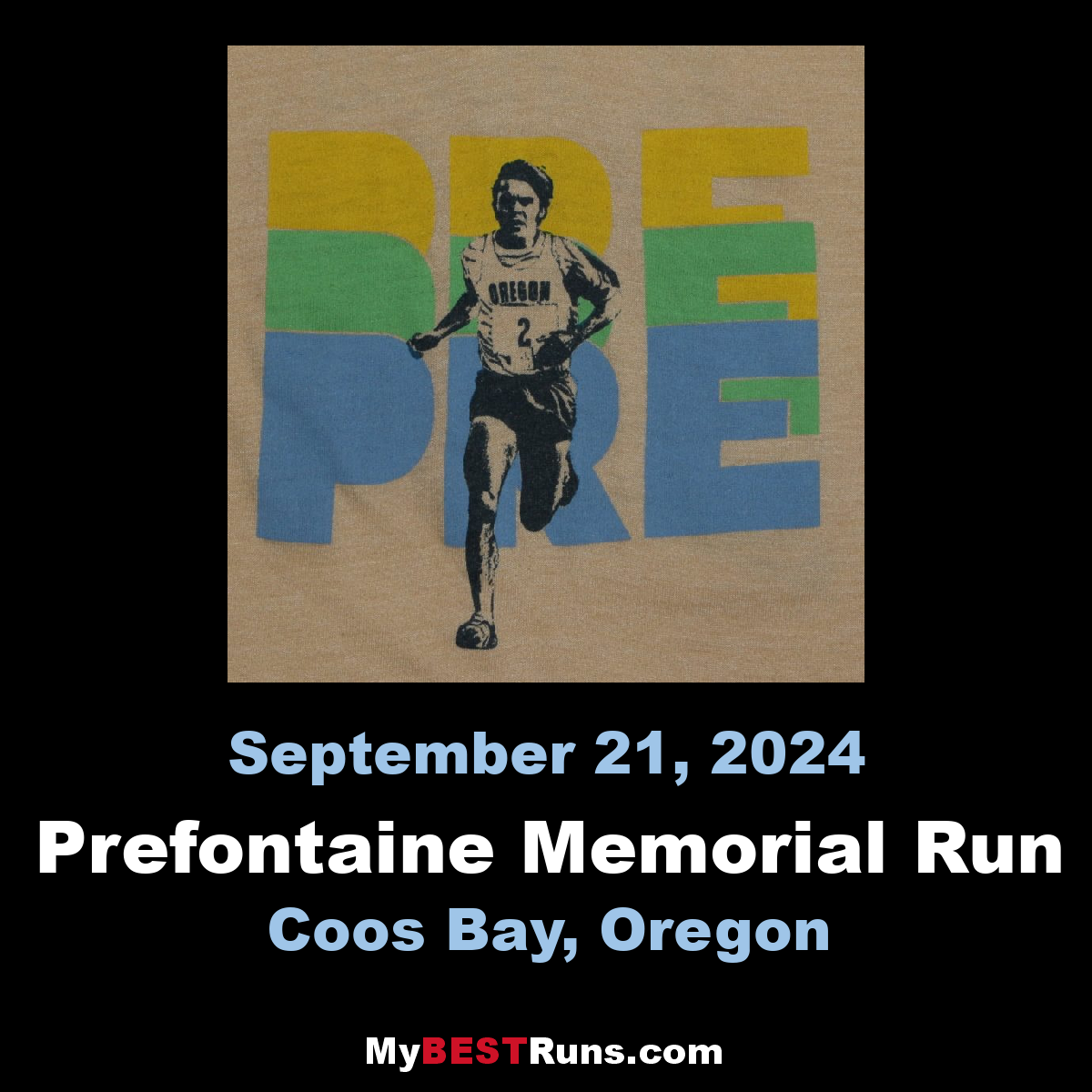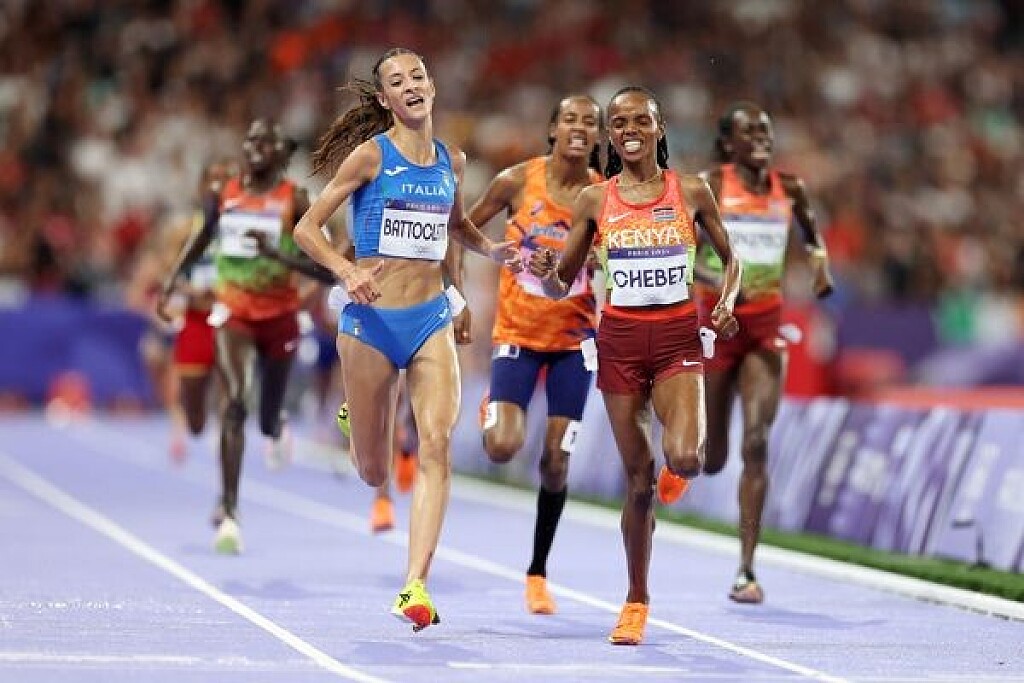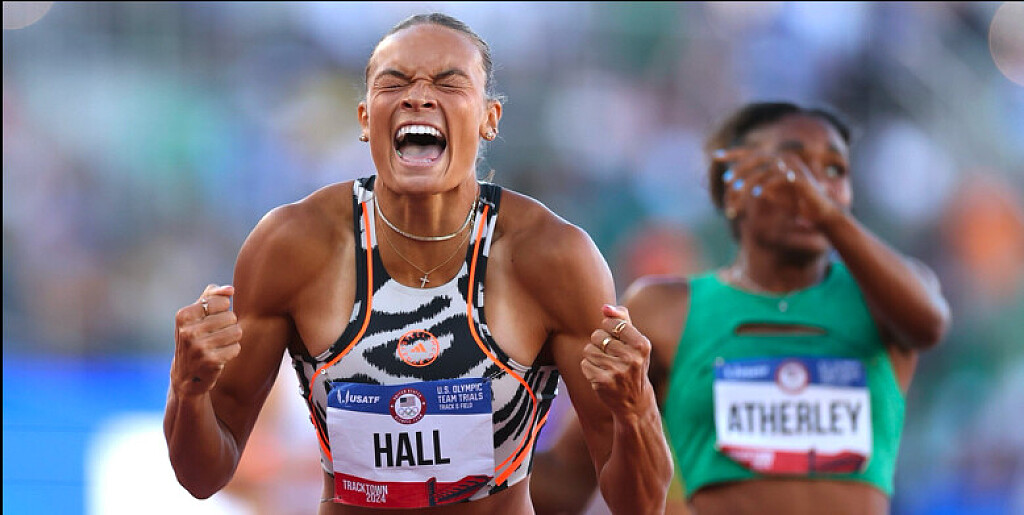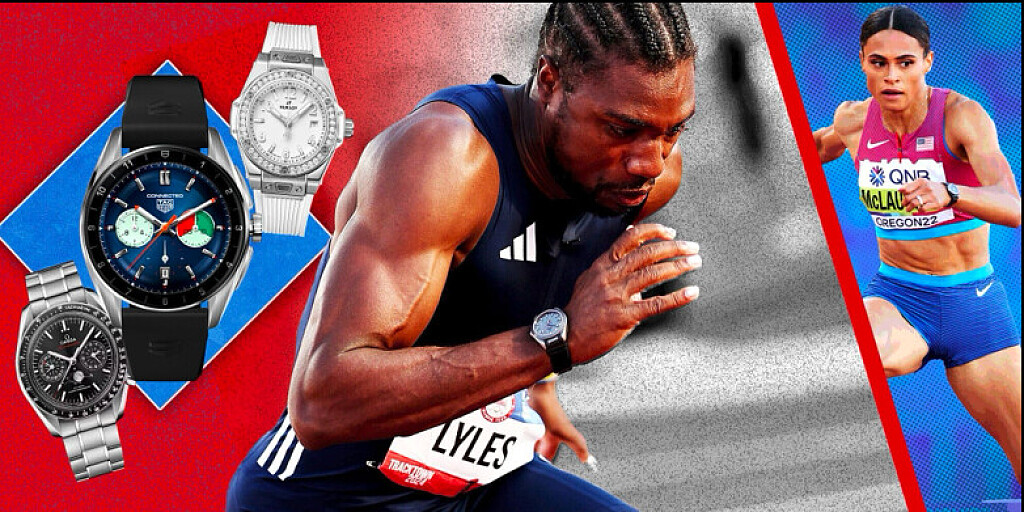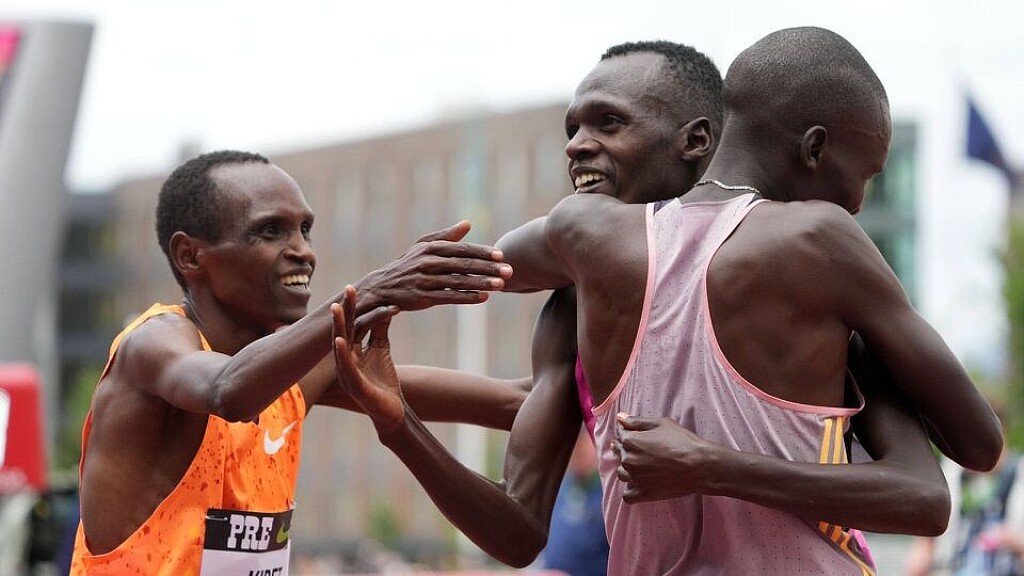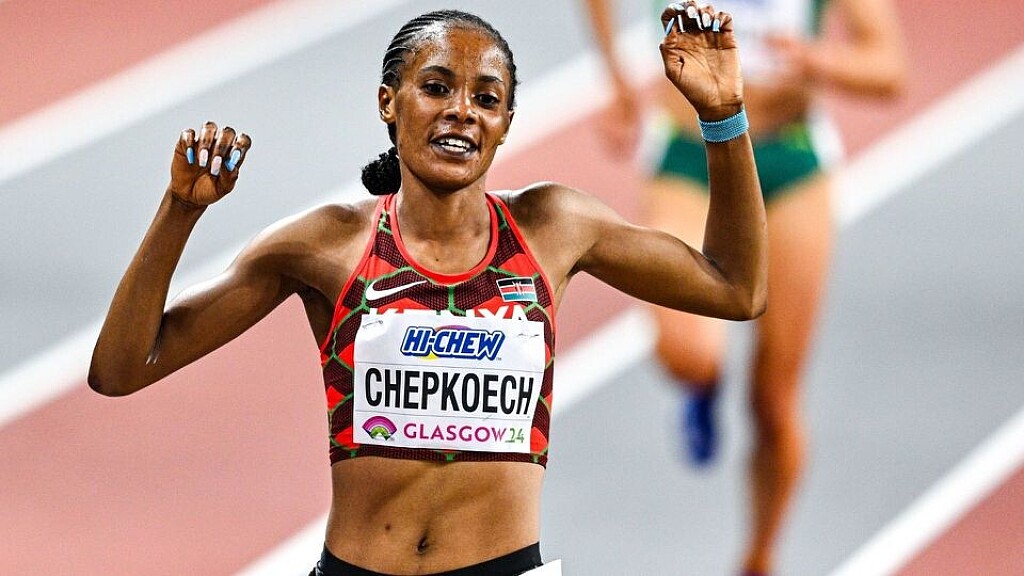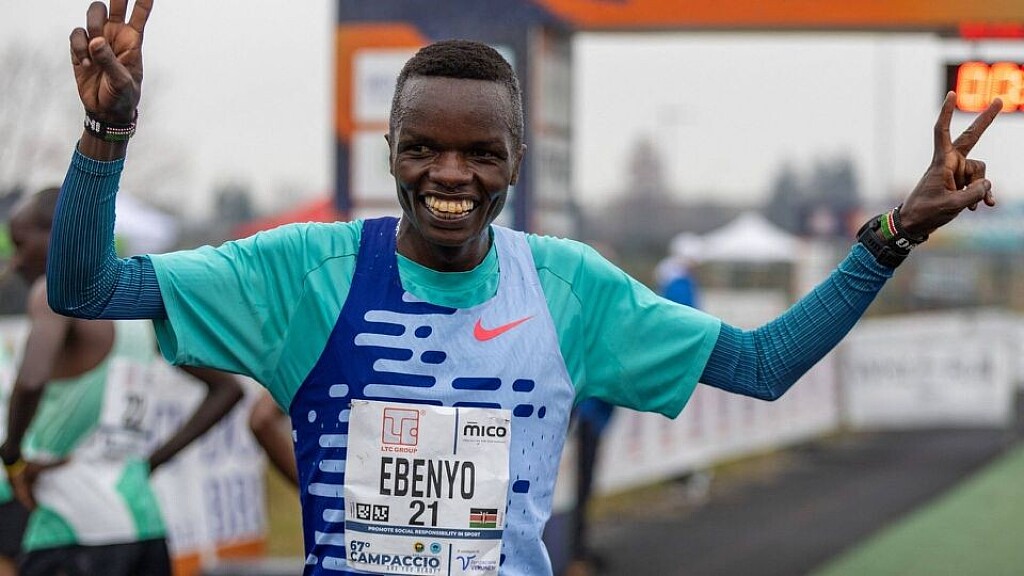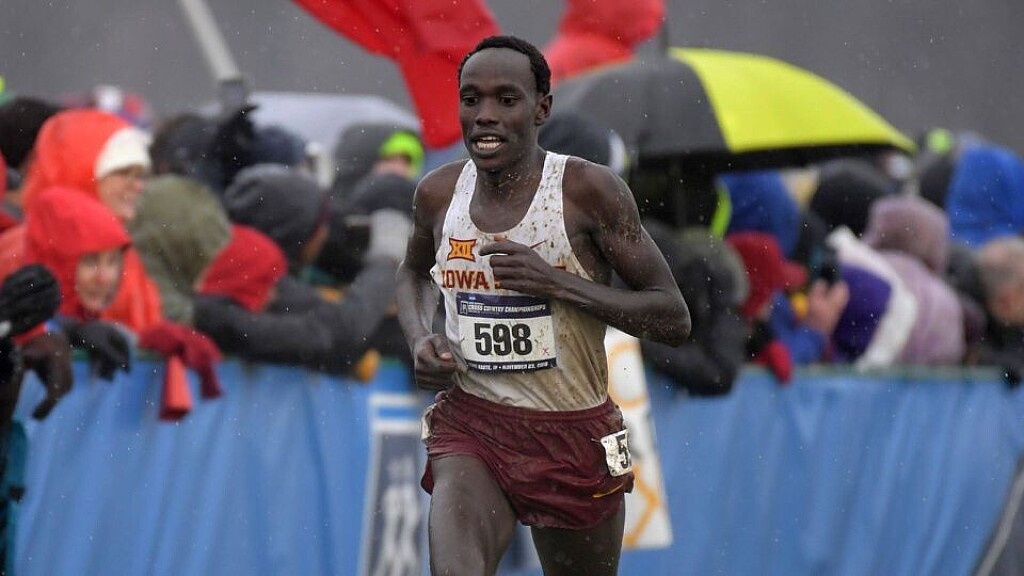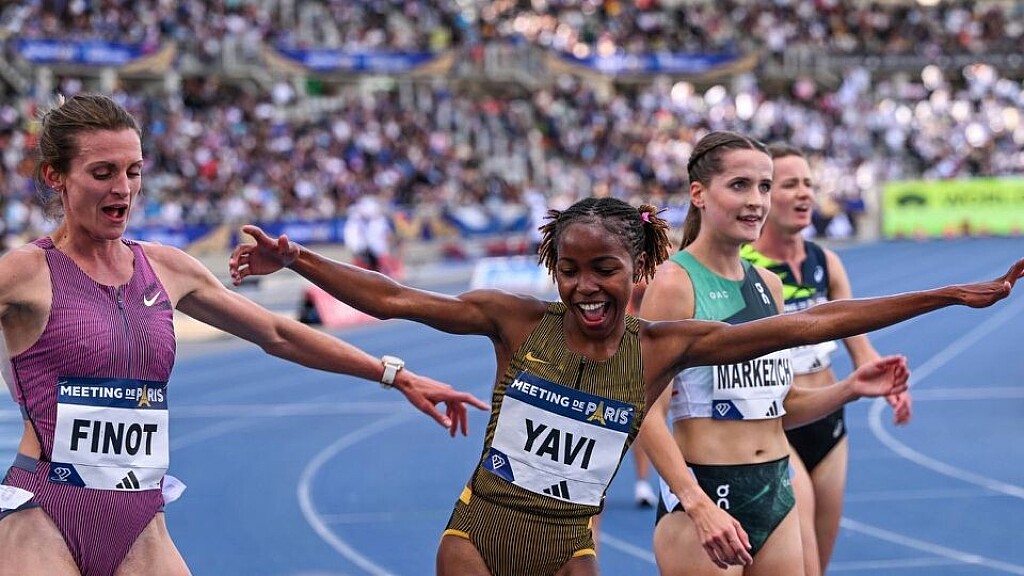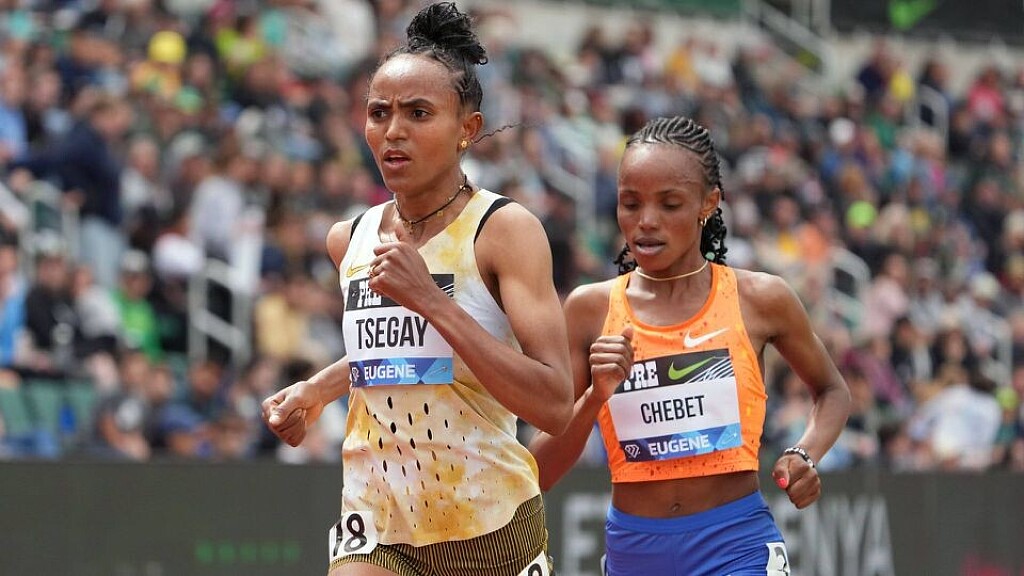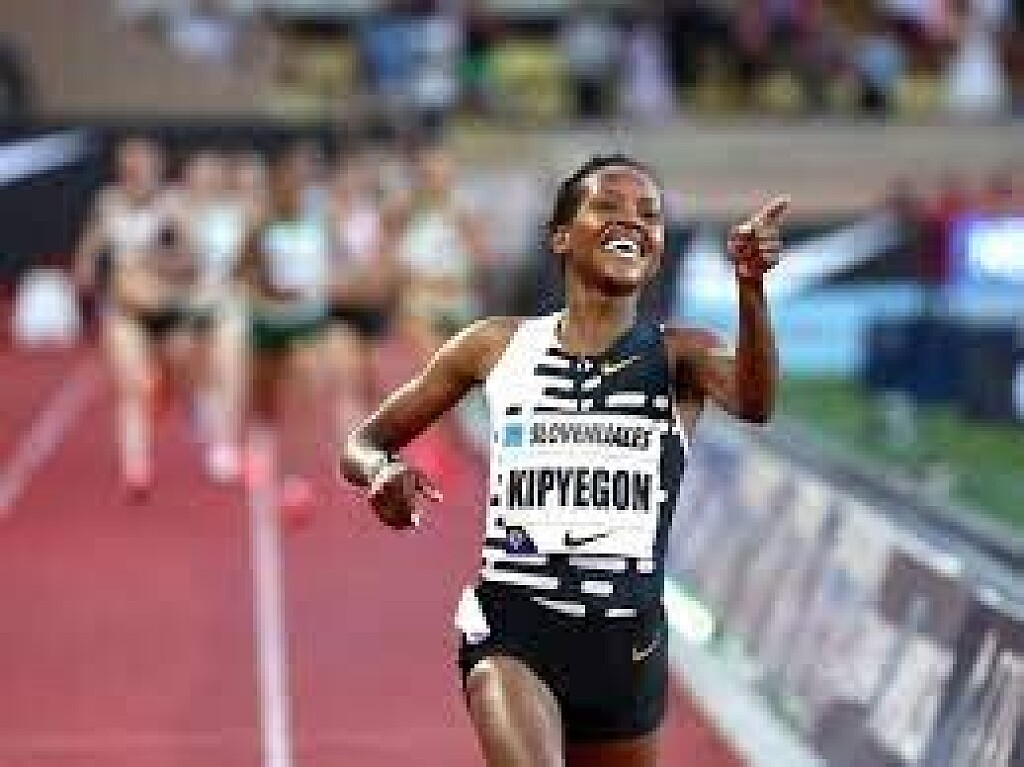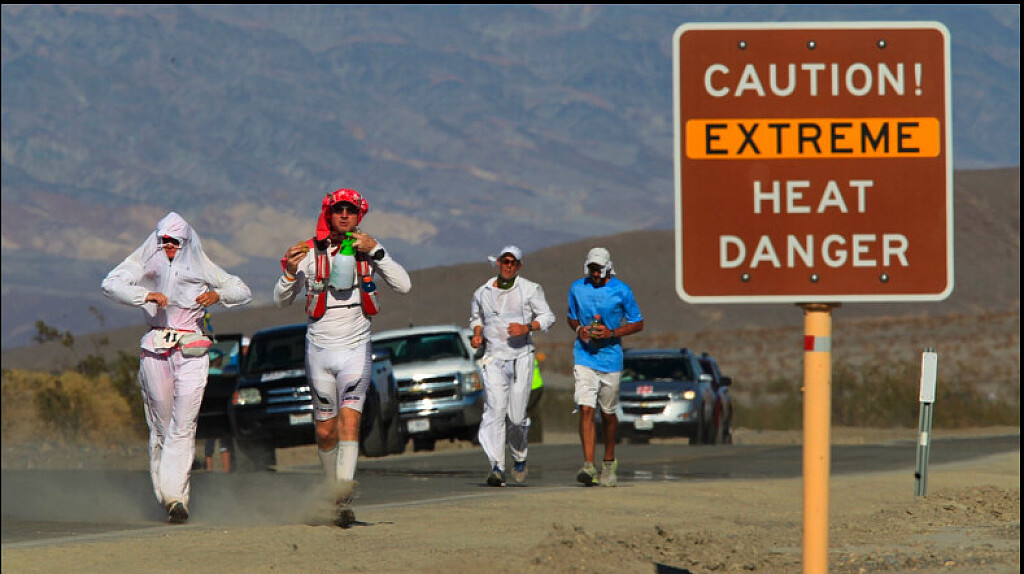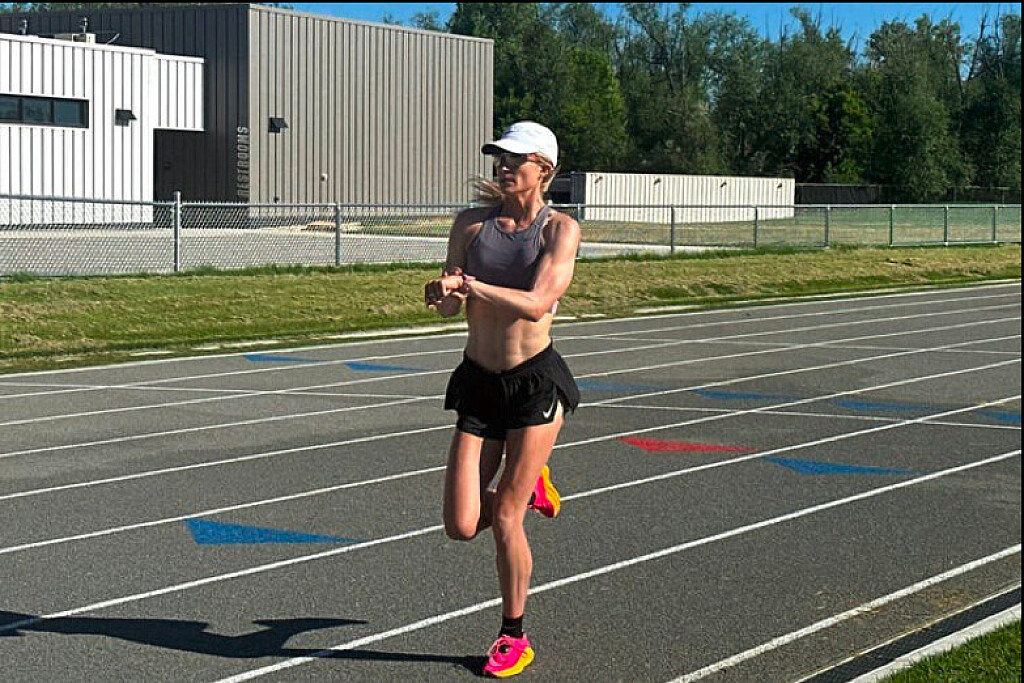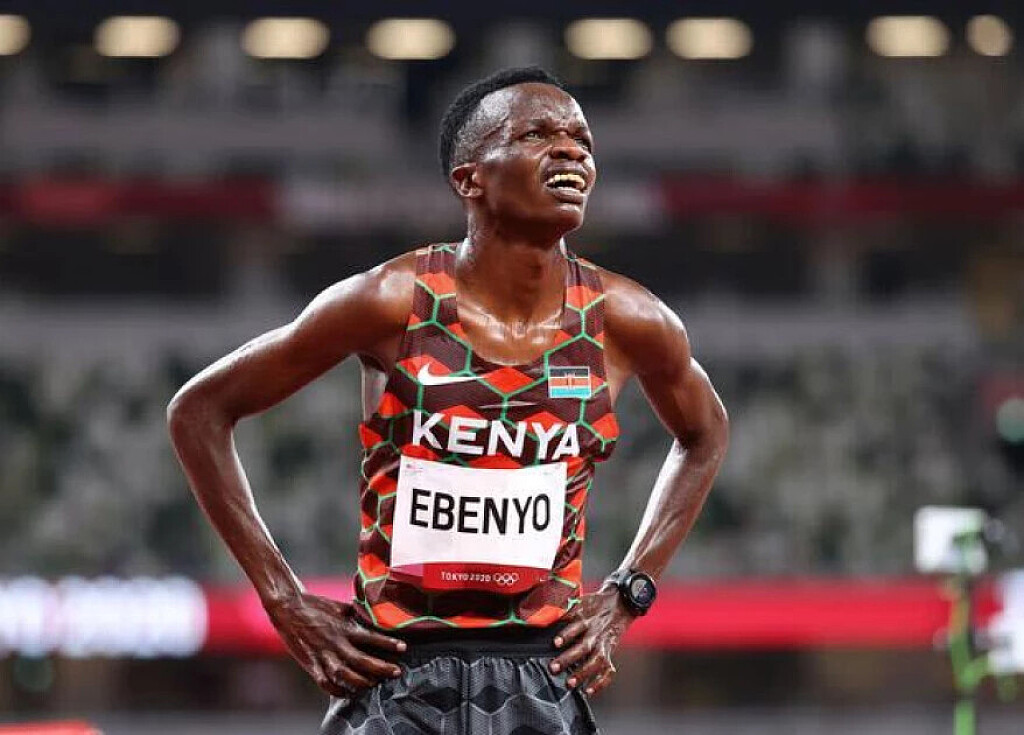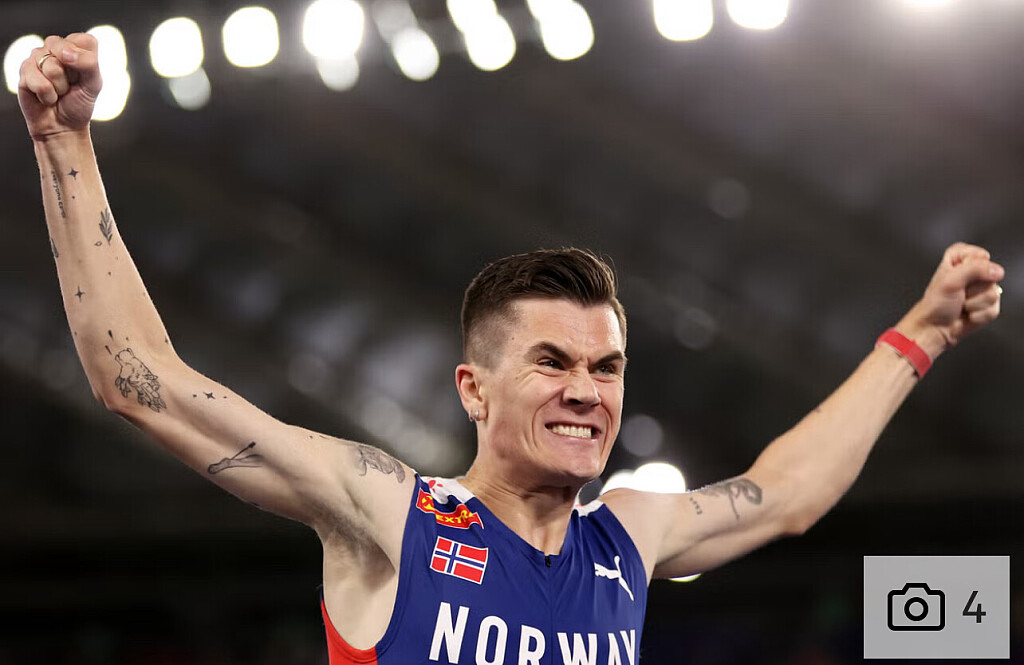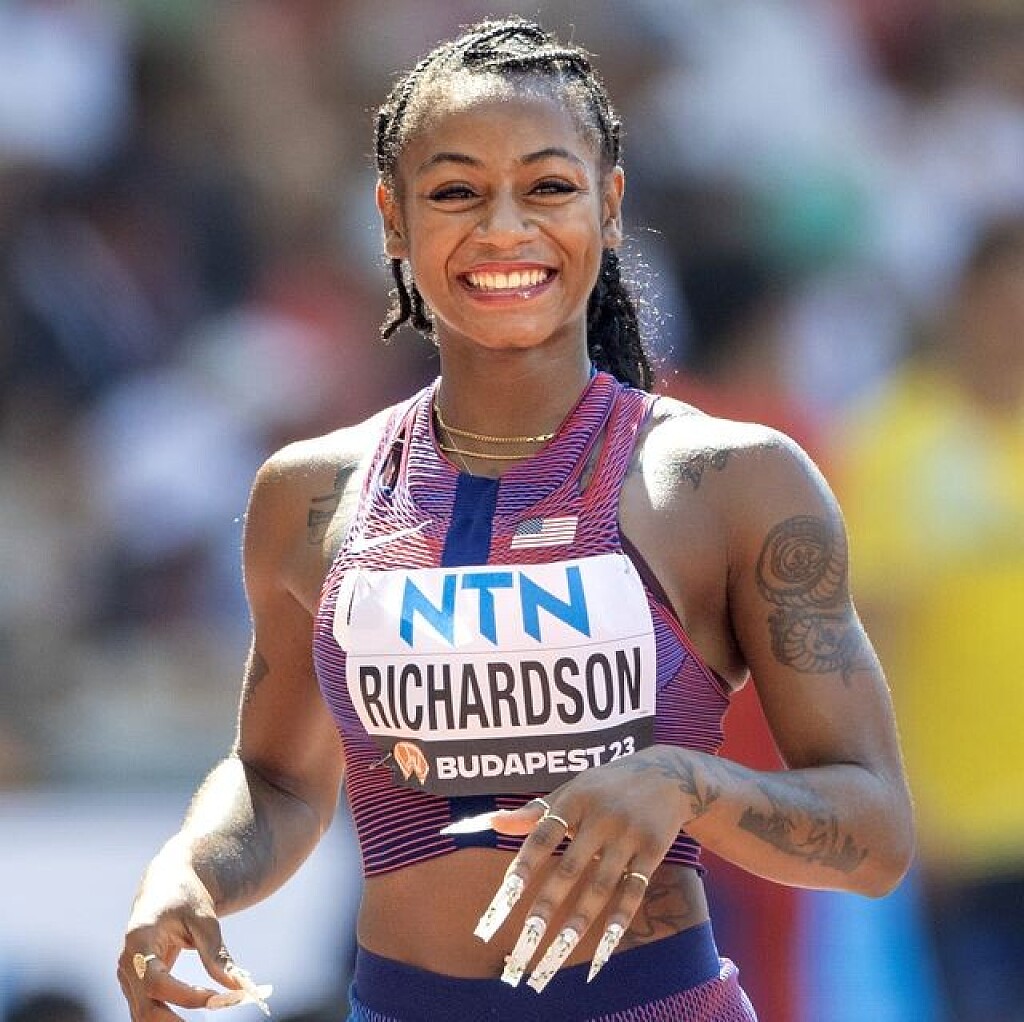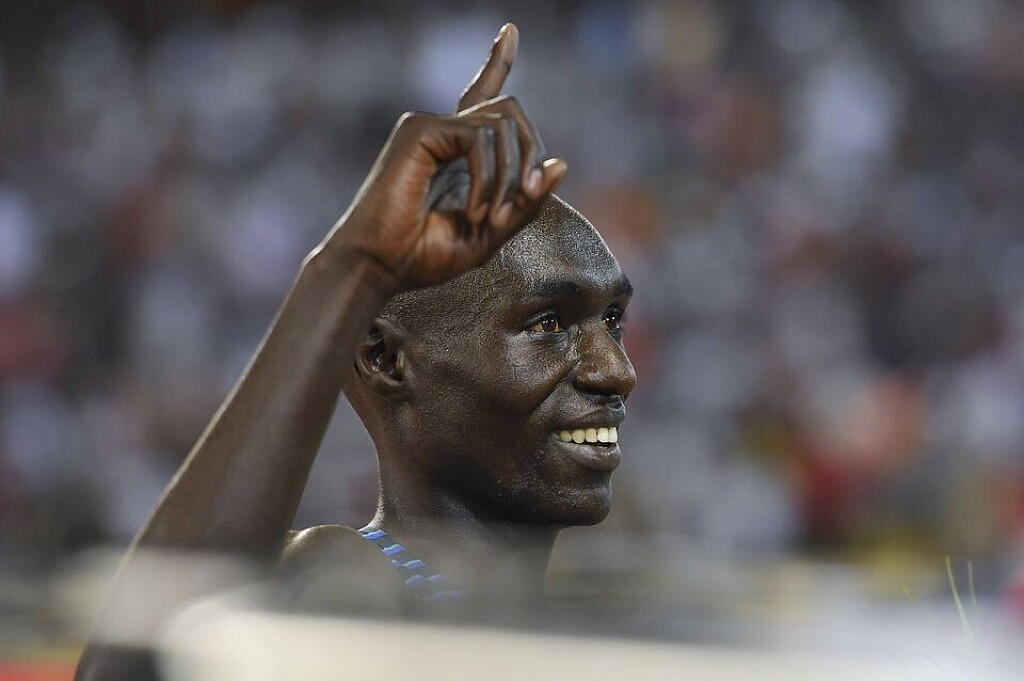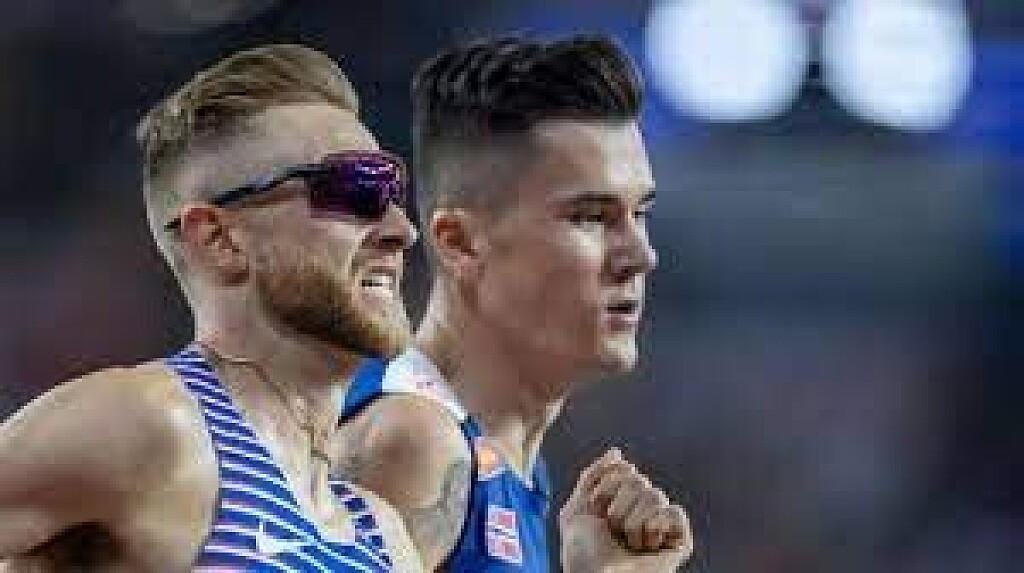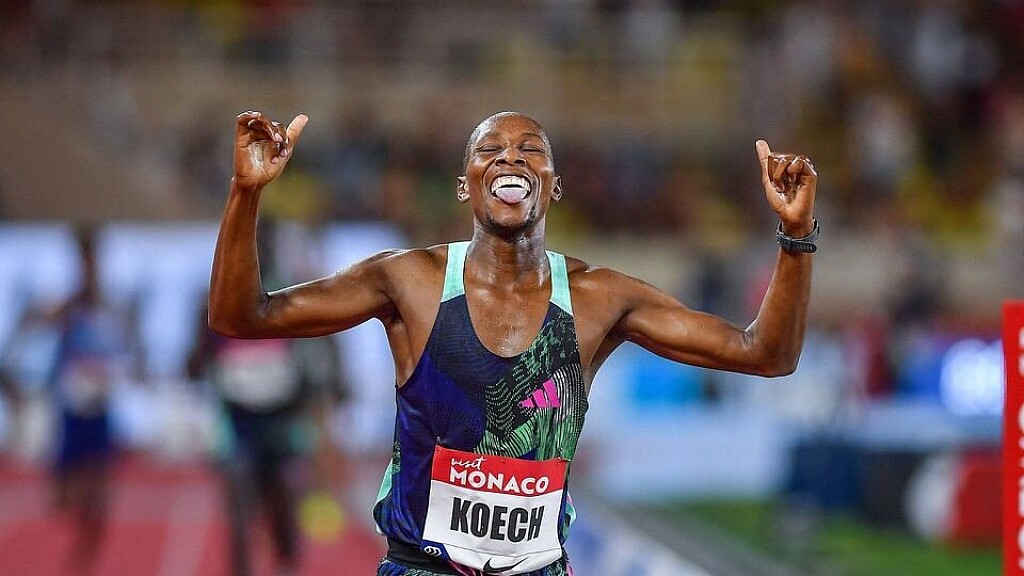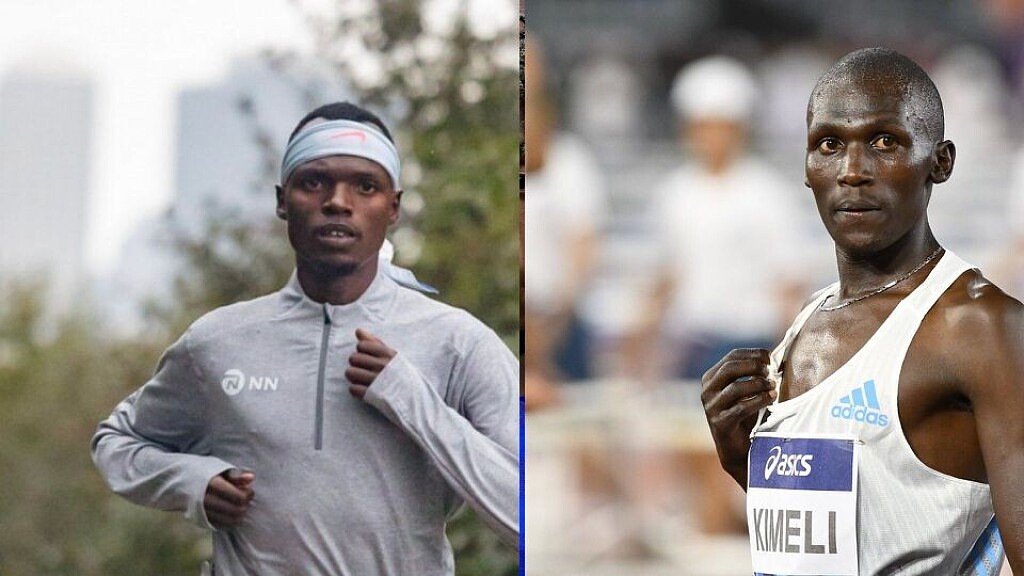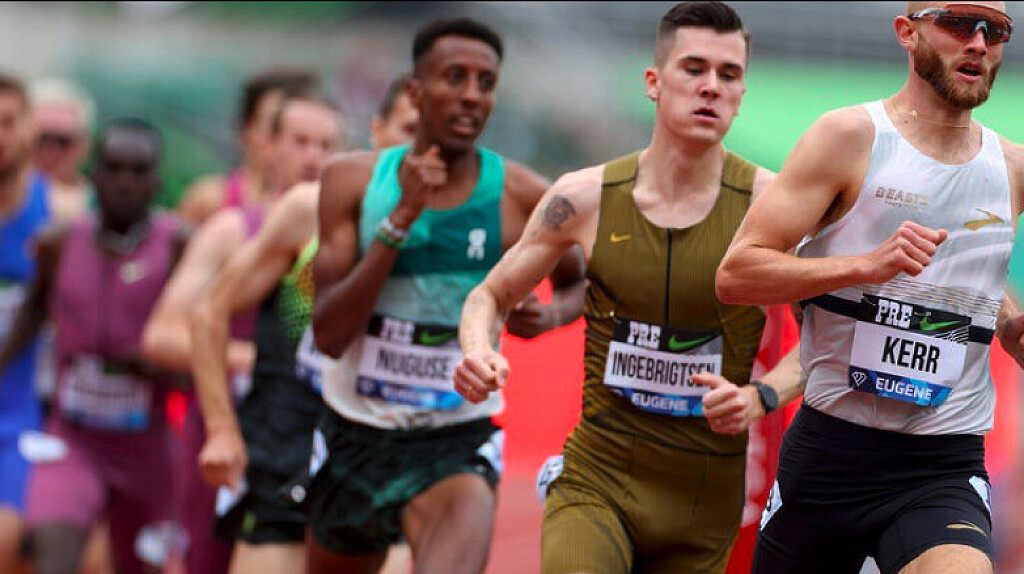Running News Daily
Running News Daily is edited by Bob Anderson. Send your news items to bob@mybestruns.com Advertising opportunities available. Train the Kenyan Way at KATA Kenya and Portugal owned and operated by Bob Anderson. Be sure to catch our movie A Long Run the movie KATA Running Camps and KATA Potato Farms - 31 now open in Kenya! https://kata.ke/
Index to Daily Posts · Sign Up For Updates · Run The World Feed
Articles tagged #Prefontaine
Today's Running News
Is the King Really Back? Jakob Ingebrigtsen Sends a Silent Shockwave with One Reel
Just when the doubters were growing bold, Jakob Ingebrigtsen dropped a bombshell—without saying a word.
After months of uncertainty, Achilles rehab, and a string of absences from marquee meets like Oslo and the Prefontaine Classic, the Olympic champion and world record holder resurfaced not with a headline but with a treadmill video on Instagram. The caption? Just five words:
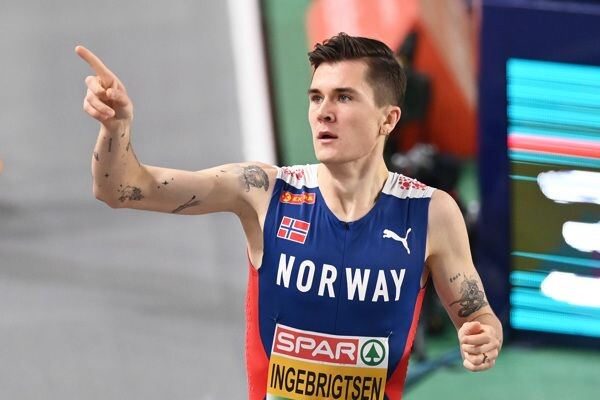
“Normal service has resumed ??.”
That was it. No interview. No press release. Just a smooth stride at full clip—and it was enough to send shockwaves through the sport.
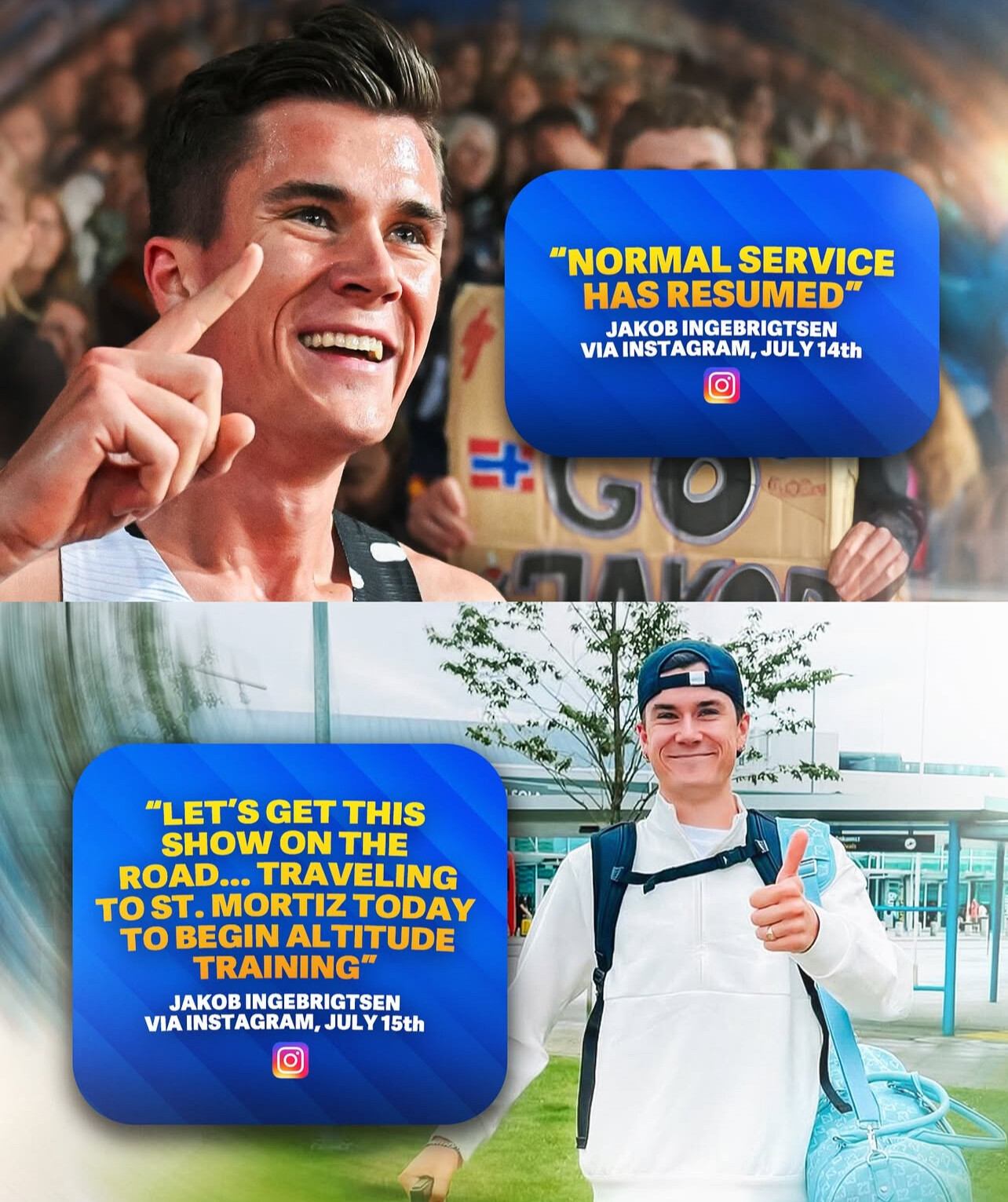
Jakob, still only 23, hasn’t raced since winning the European Cross Country Championships last December. In May, he confirmed his withdrawal from the London Diamond League on July 20 due to lingering Achilles irritation. But now, with the 2025 World Championships in Tokyo looming, fans and rivals alike are decoding every frame of that 12-second clip. Was this just training? Or a warning shot?
The Comeback Equation
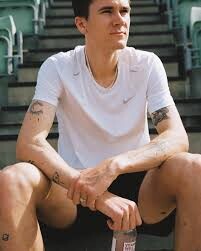
Jakob’s resume needs no embellishment:
Olympic 1500m champion (Tokyo 2021)
World 5000m champion (Paris 2023)
European record holder in the 1500m, mile, 3000m, and 5000m
World record holder in the 2000m and two miles
But since that shock defeat to Josh Kerr at the 2023 World Championships in Budapest—a tactical masterclass that broke Ingebrigtsen’s golden streak—Jakob has been unusually quiet. Injuries kept him from defending titles on the Diamond League circuit, while rivals like Kerr, Jake Wightman, and Yared Nuguse have stepped into the spotlight.
Now, that silence might be over.
Warning to Rivals?
The timing couldn’t be more dramatic. With Tokyo less than six weeks away, the treadmill reel could mark the start of Jakob’s final prep—if not for London, then for the Worlds. His message may have been short, but the implications are massive: he’s back in motion, the rhythm looks good, and if he toes the line in Tokyo, the narrative resets.
Rivals like Kerr, who’s coming off a strong win at the 2025 Bislett Games, won’t be underestimating him. Their rematch—if it happens—could be one of the defining moments of the championships.
Crown or Collision Course?
Is Jakob ready to reclaim his throne, or is he walking into the fiercest middle-distance rivalry we’ve seen in years? The answer is still unwritten—but one thing is clear:
Jakob Ingebrigtsen is not done. Not even close.
And now, the track world holds its breath.
by Boris Baron
Login to leave a comment
Eric Giacoletto: The Curator Preserving the Soul of Track and Field
In the fast-moving world of social media, few people are doing more to preserve the rich history of athletics than Eric Giacoletto. From his home in Albertville, France, Eric has become one of the most passionate archivists of the sport—sharing rare photos, insightful commentary, and forgotten moments that continue to inspire athletes and fans across the globe.
Though not a former elite runner himself, Eric’s knowledge runs deep, and his posts serve as daily reminders of what makes our sport timeless. He documents both legends and lesser-known heroes, giving context, names, and reverence to each moment he shares. His work has captured the attention of many—including My Best Runs founder Bob Anderson.
“What Eric is doing is important,” says Bob. “He’s preserving history—moments and athletes that might otherwise be forgotten. His posts are reminders of the beauty, pain, and glory of running.”
Just this past week, Eric posted dozens of compelling images from the golden eras of track and field. From that treasure trove, Bob Anderson selected eight photos he found particularly inspiring. Each tells a story—of courage, character, and the timeless spirit of competition.
Here are the eight photos Bob selected from Eric’s posts this past week:
Photo 1
Jim Ryun and Peter Snell – A Finish for the Ages
Two legends of the mile—Jim Ryun of Wichita and New Zealand’s Peter Snell—captured in one of the most dramatic finishes in middle-distance history. Ryun’s expression of anguish and Snell’s graceful stride speak volumes about what it takes to be world-class. An image that defines grit, shared by Eric earlier this week.
Photo 2
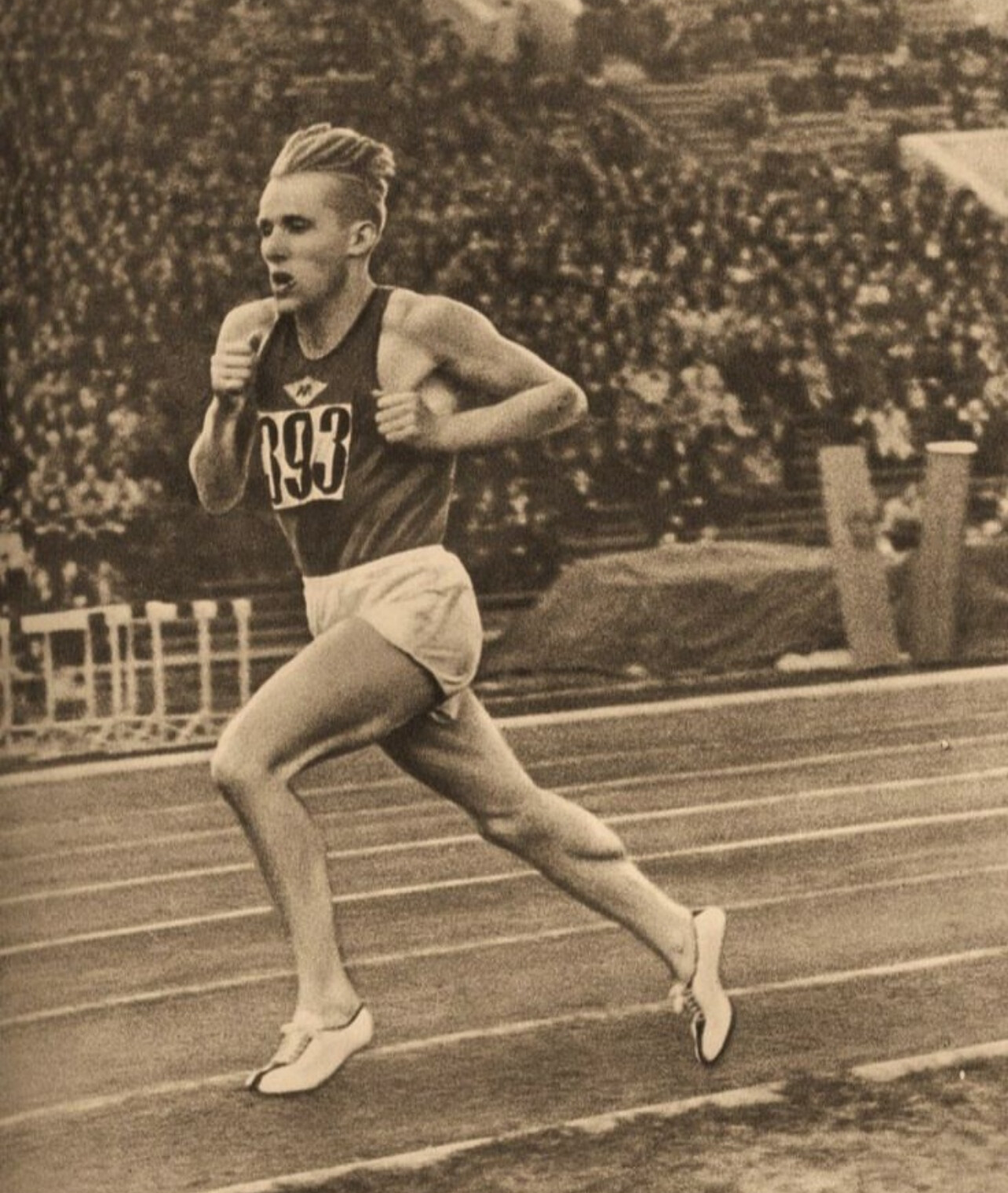
Vladimir Kuts – Soviet Powerhouse in Full Flight
Sprinting down the track with trademark aggression, Vladimir Kuts dominated the 1956 Olympics in Melbourne, winning both the 5,000m and 10,000m. Eric’s photo selection highlights Kuts’ unmistakable form and ferocity—a reminder of Eastern Bloc distance dominance during the Cold War era.
Photo 3
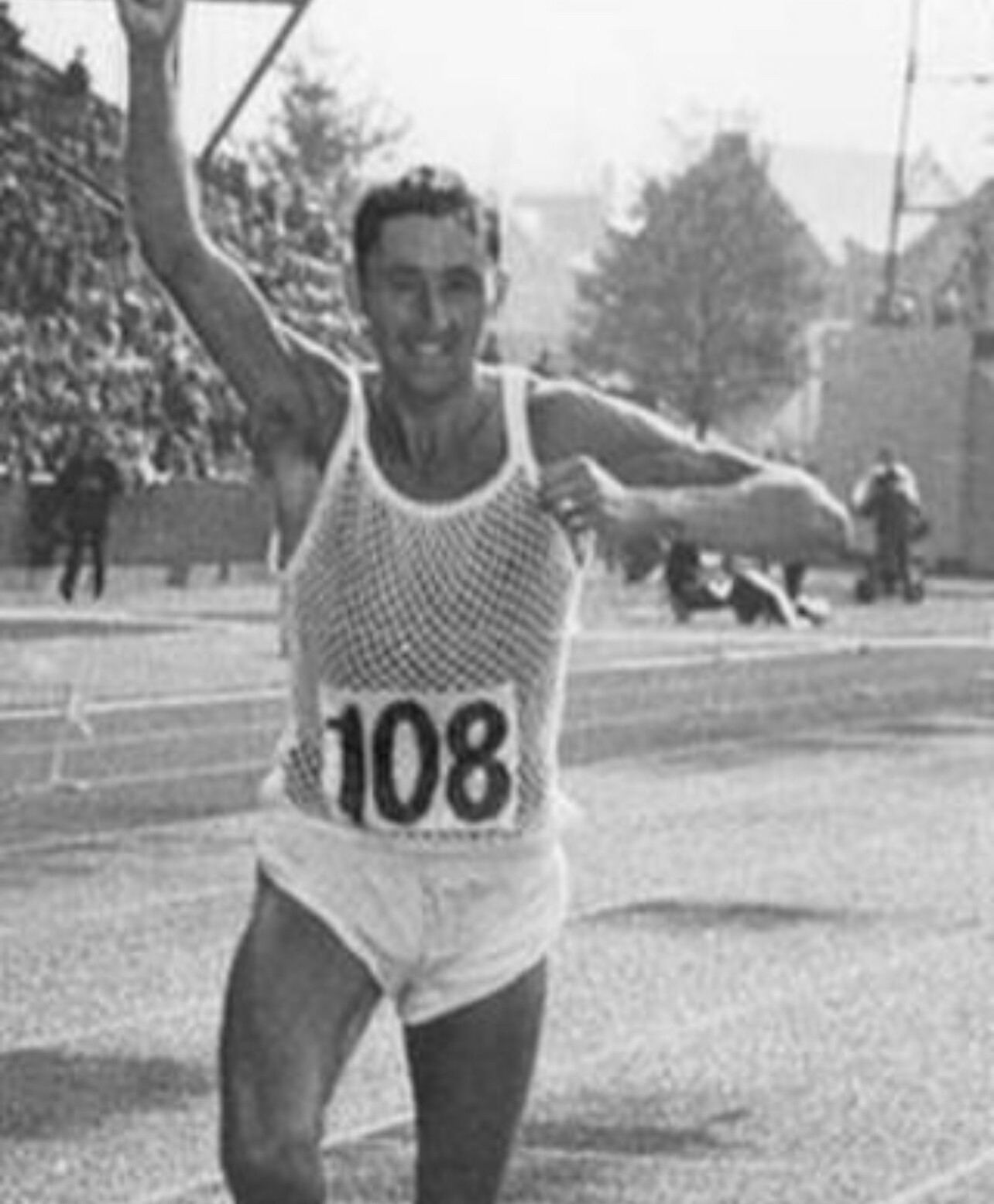
Ron Hill – 1970 Commonwealth Games, Edinburgh
Ron Hill, the pioneering English marathoner, crosses the line in his signature mesh singlet. By 2014, he had logged 159,106 lifetime miles—running at least one mile every day for 50 years. A legendary streak by a man who redefined commitment to the sport.
Photo 4
Steve Prefontaine in His Element
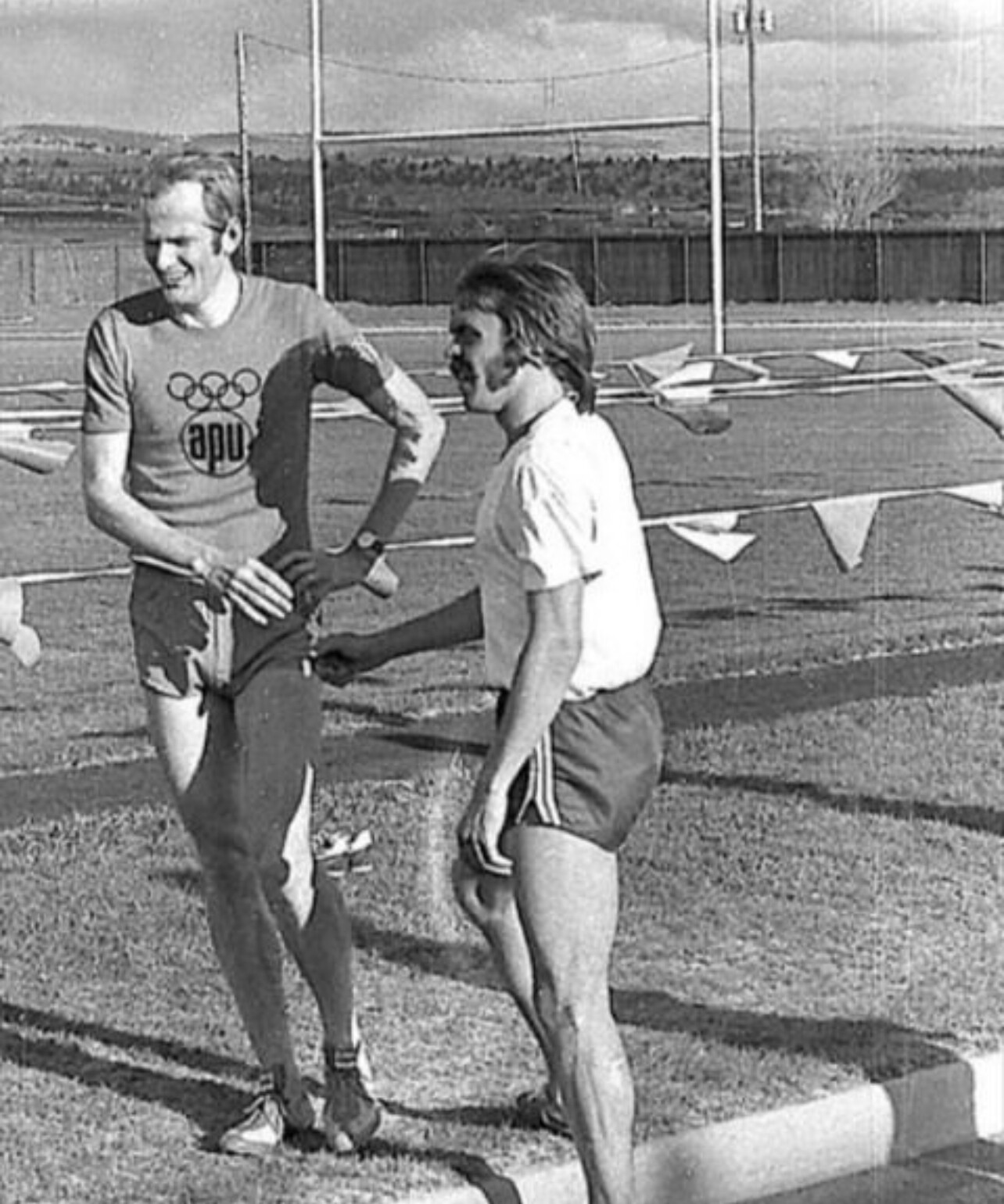
A candid photo of “Pre” during a training session, captured in conversation and camaraderie. Prefontaine’s fearless front-running style and outspoken personality made him a symbol of competitive fire. This relaxed moment shows the human side of a distance icon.
Photo 5
Herb Elliott – Training on the Dunes of Portsea
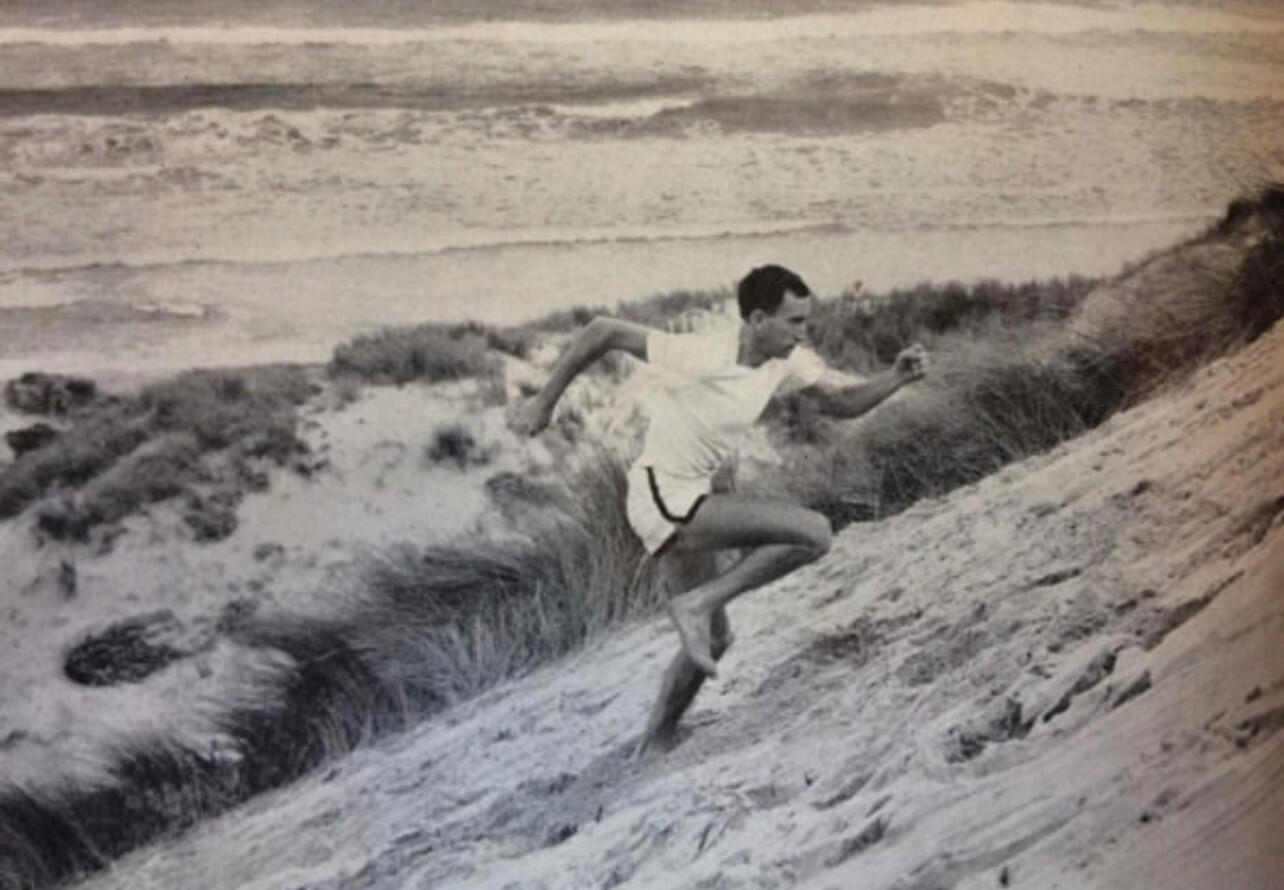
A powerful shot of Australian great Herb Elliott charging barefoot up the coastal sand dunes, guided by coach Percy Cerutty’s naturalist philosophy. Elliott never lost a 1500m or mile race in his career, and this photo shows the raw work behind that undefeated record.
Photo 6
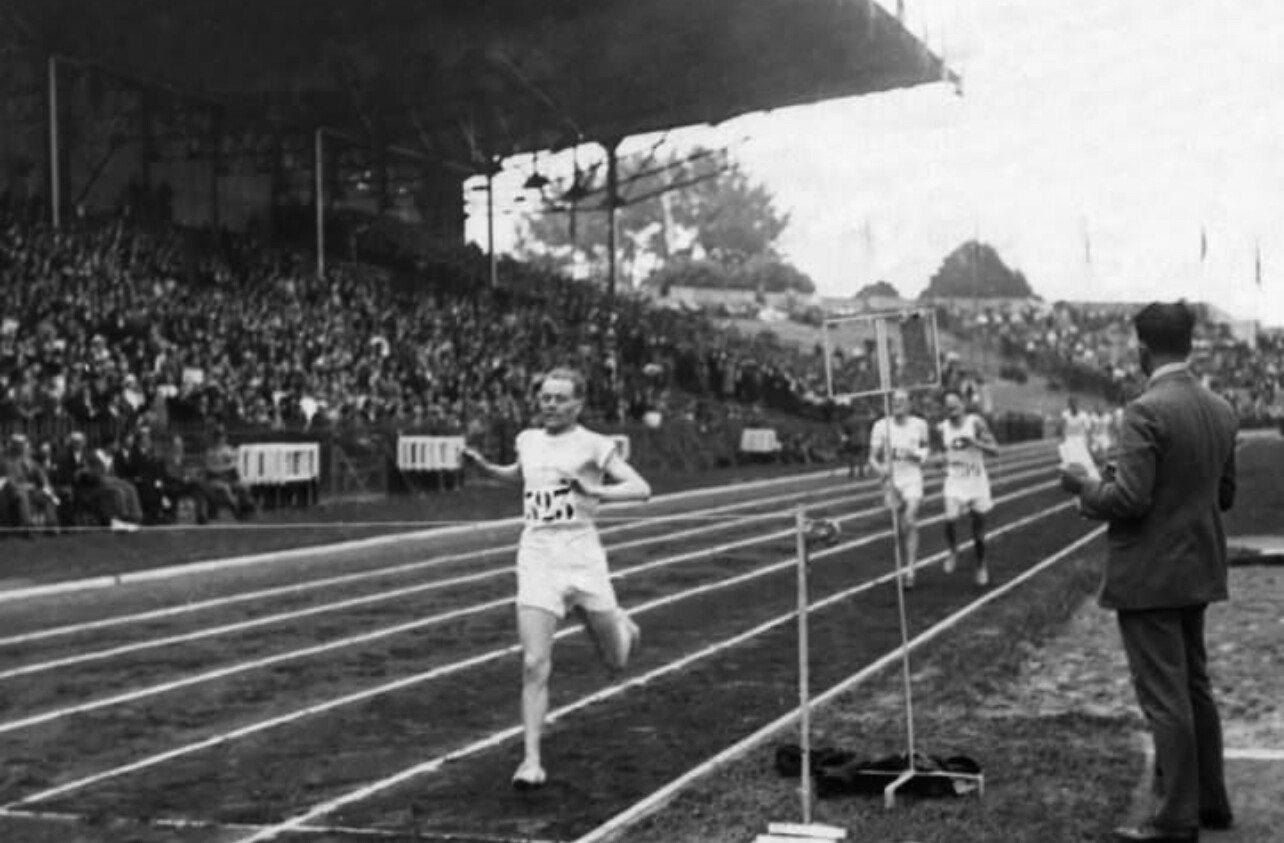
Paavo Nurmi – Double Gold in One Afternoon
Paris, July 10, 1924: Paavo Nurmi wins the 1500m, then returns just hours later to take gold again in the 5000m. This photo shows him well ahead of the field, delivering one of the most jaw-dropping performances in Olympic distance running history.
Photo 7
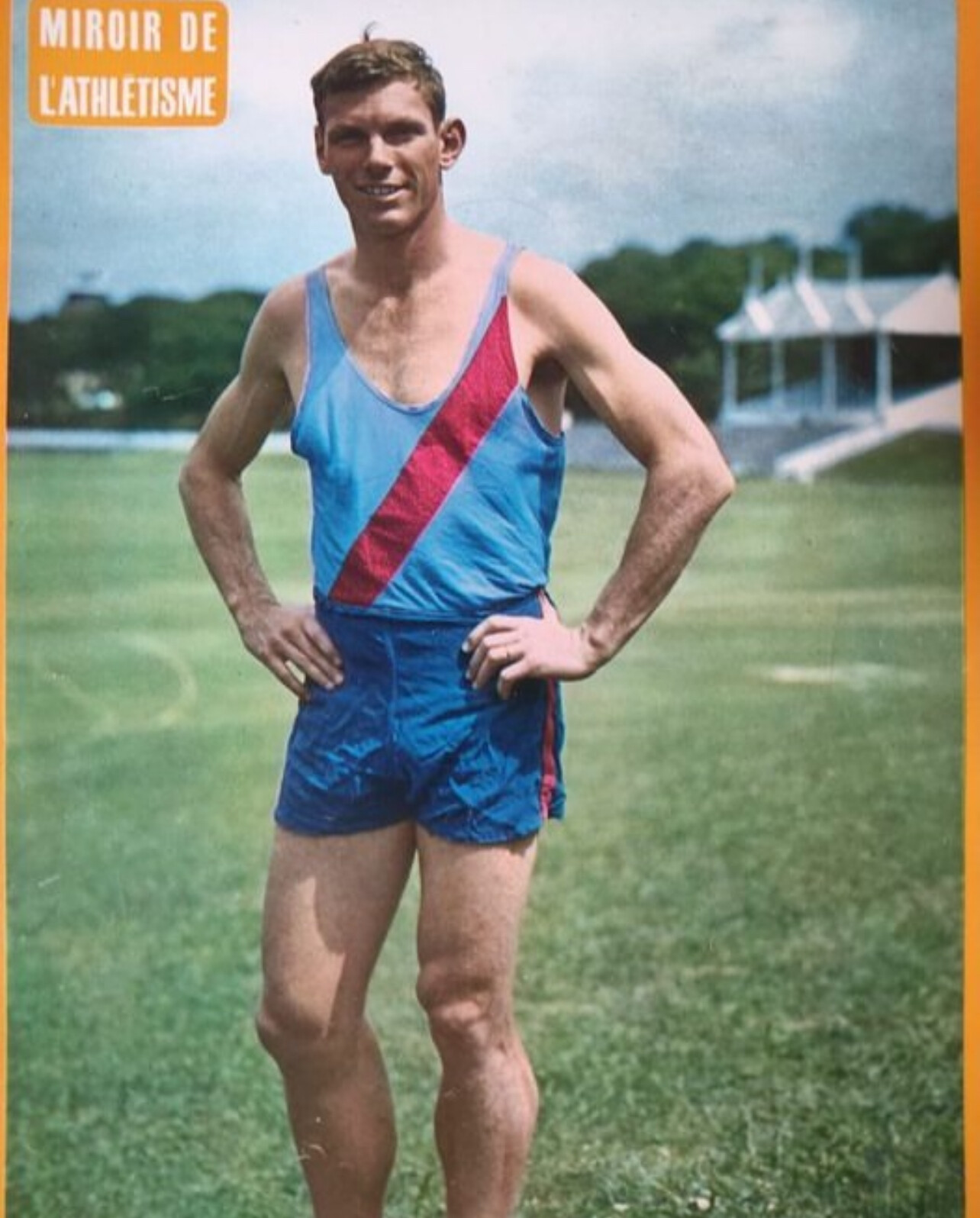
Peter Snell – Power and Poise in Color
A rare color image of New Zealand’s Peter Snell, one of the greatest middle-distance runners of all time. Winner of three Olympic gold medals, Snell combined strength with speed in a way few ever have. Eric’s post brings his iconic stature to life in full color.
Photo 8
Bill Rodgers – Boston Breakaway, 1975
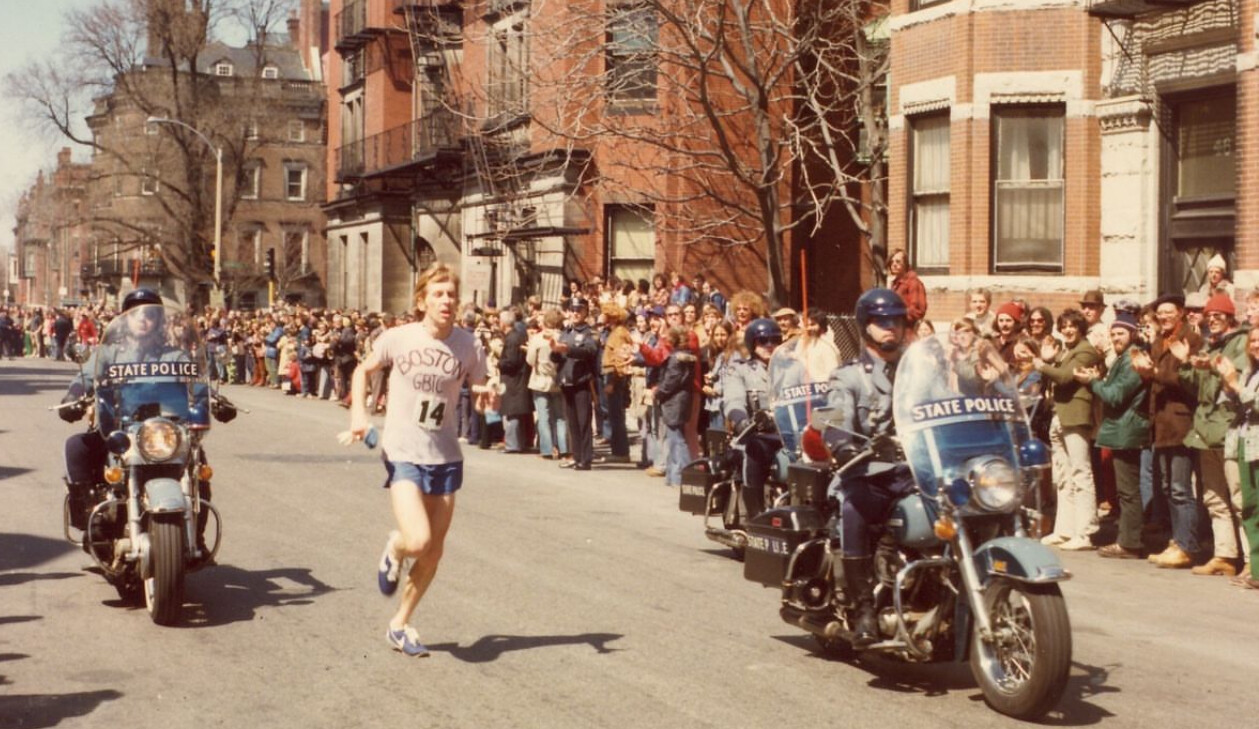
Captured mid-stride during his victory at the 1975 Boston Marathon, Bill Rodgers pulls away under the escort of state police motorcycles. His win that year—2:09:55—was part of a dominant streak that made him a U.S. marathon legend. A city, and a sport, in full celebration.
Honoring the Archivist
Eric’s posts on Facebook and Instagram (@ericgiacoletto) continue to spark meaningful conversations among athletes, historians, and lifelong fans. Whether he’s unearthing a forgotten race photo or celebrating an athlete’s legacy, Eric is doing more than documenting—he’s inspiring.
If you enjoyed this feature, and with Eric’s permission, we’d love to post more regularly here at My Best Runs. Let us know what you think—we’re always looking to spotlight the people and moments that keep the spirit of our sport alive.
by Boris Baron and Bob Anderson
Login to leave a comment
Niels Laros Stuns in Bowerman Mile, Edges Yared Nuguse by 0.01 Seconds
In one of the most electrifying finishes in recent mile history, 19-year-old Dutch phenom Niels Laros delivered a late-race surge to outkick American star Yared Nuguse, winning the Bowerman Mile at the Prefontaine Classic in an astonishing 3:45.94.
Nuguse, who looked in command entering the home stretch, clocked 3:45.95, just one-hundredth of a second behind the Dutch teenager. The dramatic showdown came down to the final 50 meters, where Laros unleashed a finishing kick that stunned fans and fellow competitors alike.
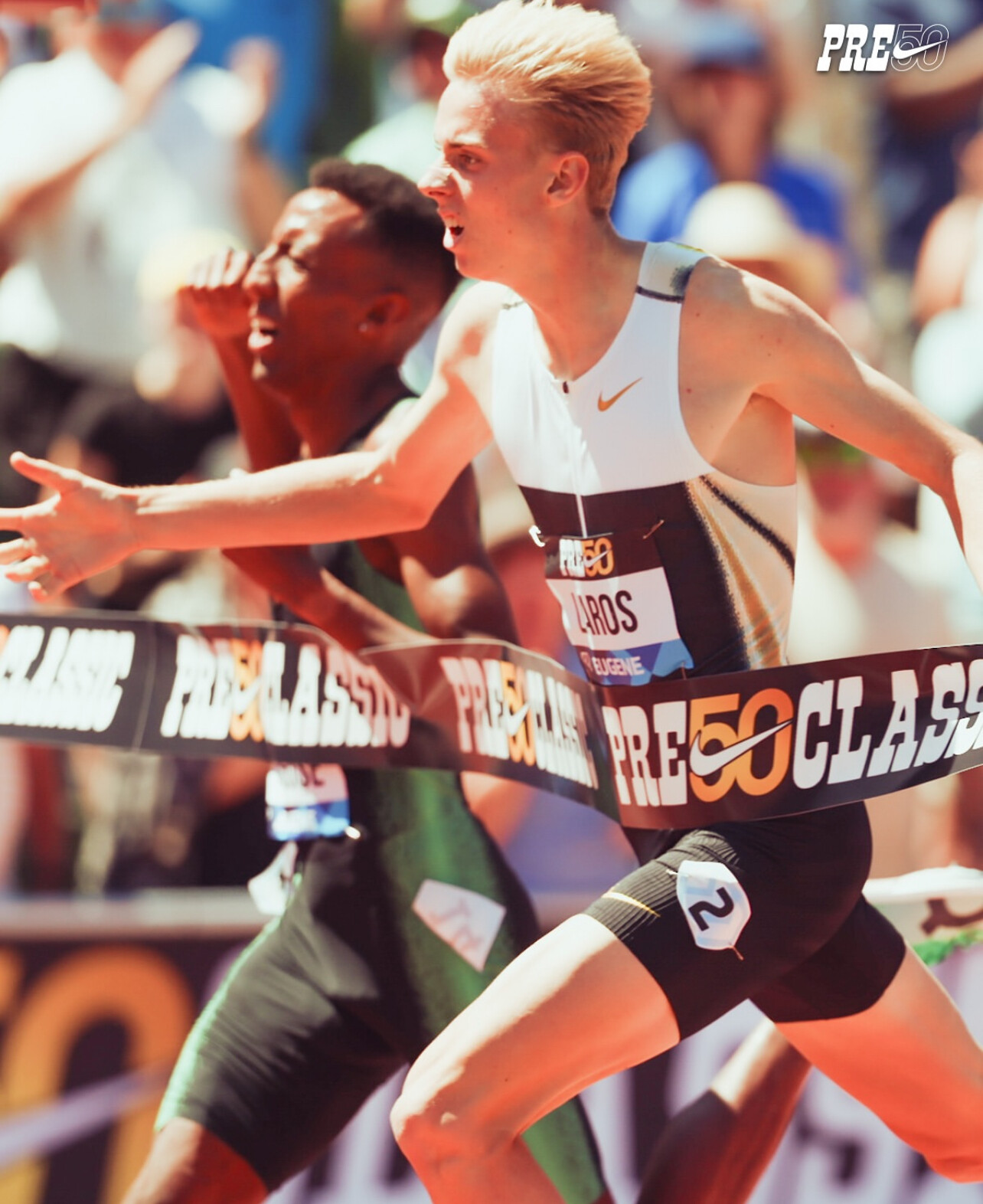
Third place went to Azzedine Habz of France, who crossed the line in 3:46.65.
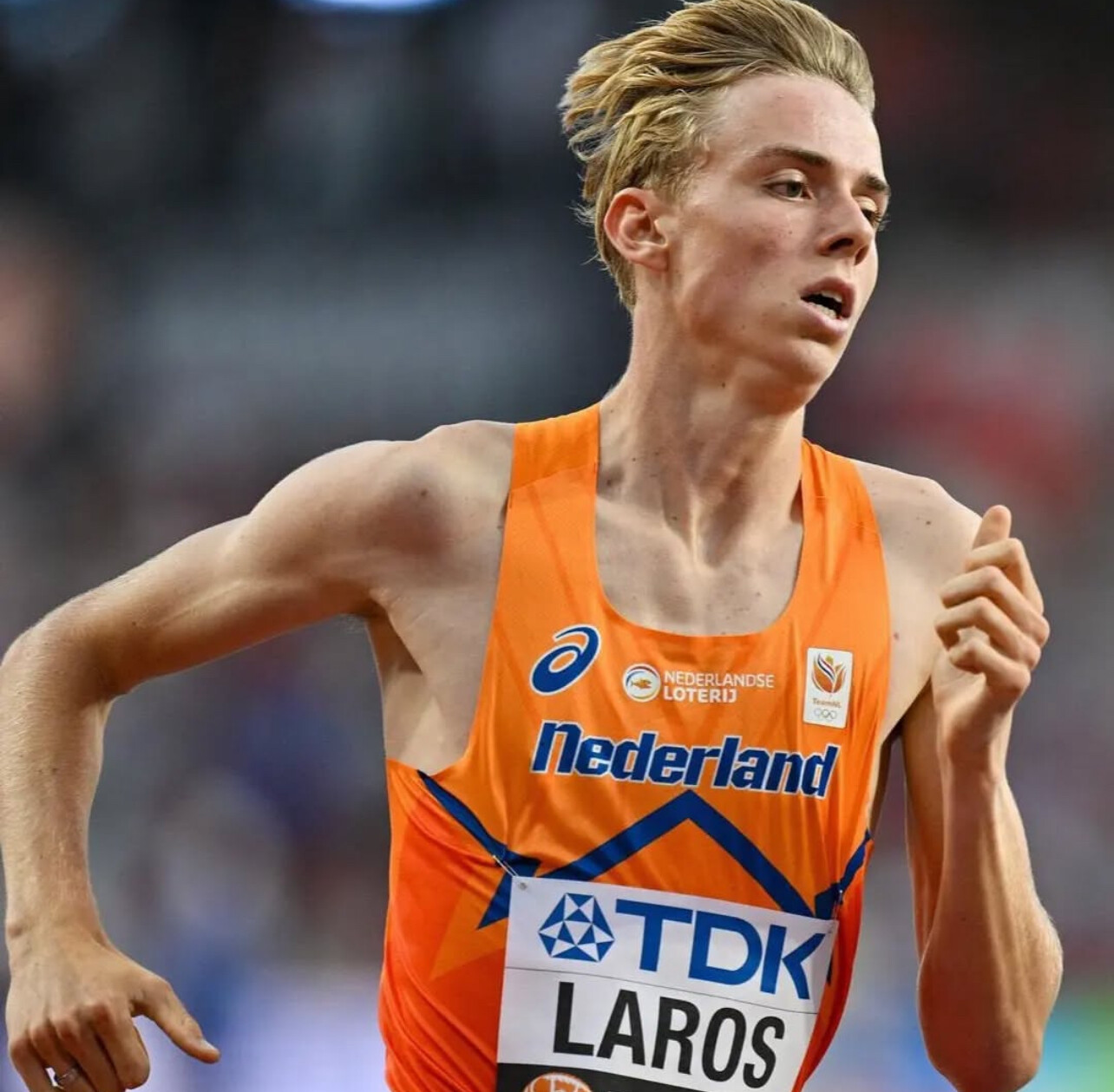
This result marks a major statement from Laros, already hailed as the future of European middle-distance running. His performance in Eugene solidifies his status as a major contender on the global stage heading into the Paris Olympics.
The Prefontaine Classic continues to be a magnet for world-class mile showdowns, and this edition did not disappoint. For Laros, this victory will be remembered not only for the time, but for the thrilling fashion in which it was secured.
Top 3 Results – Bowerman Mile
• ? Niels Laros (NED) – 3:45.94
• ? Yared Nuguse (USA) – 3:45.95
• ? Azzedine Habz (FRA) – 3:46.65
by Boris Baron
Login to leave a comment
Faith Kipyegon Sets New 1500m World Record with 3:48.68 at 2025 Prefontaine Classic
Faith Kipyegon continues to redefine greatness in women’s middle-distance running. On July 5, 2025, at the Prefontaine Classic in Eugene, Oregon, the Kenyan superstar set a new world record in the 1500m, clocking 3:48.68 and breaking her own previous mark of 3:49.04 set just a year earlier.
The Hayward Field crowd witnessed another chapter in what is becoming one of the most dominant careers the sport has ever seen.
Sharpened Focus, Sharper Speed
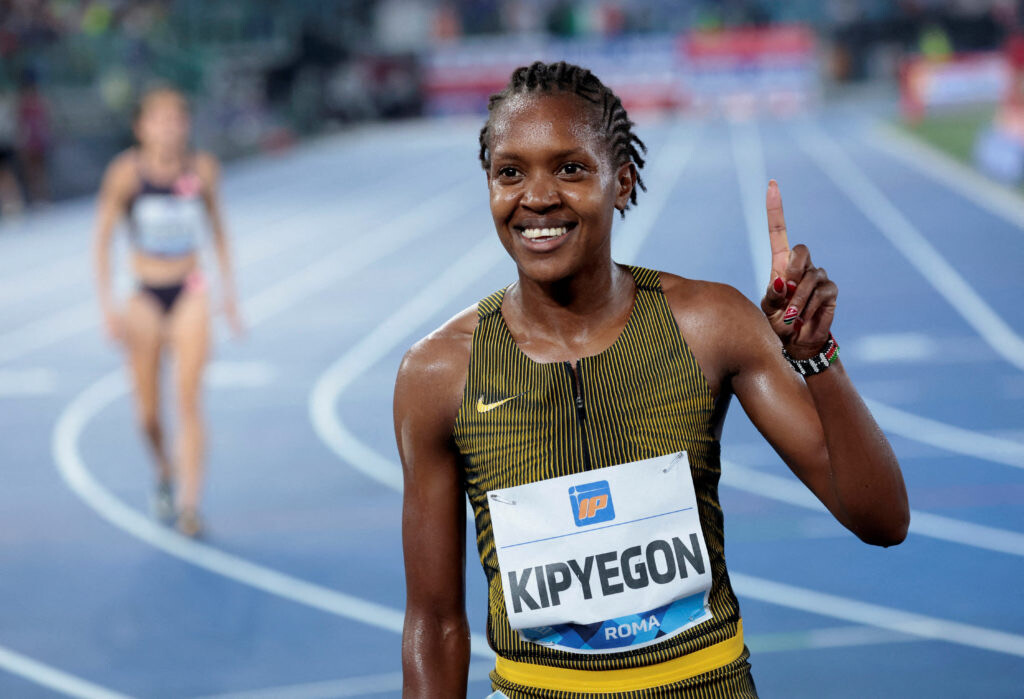
Kipyegon, already a two-time Olympic champion and multiple-time world champion, executed a flawless race. After a steady opening 800m behind the pacemaker, she began to pick up the tempo in lap three before unleashing her signature kick over the final 300 meters.
Her time of 3:48.68 now stands as the fastest women’s 1500m ever recorded — shaving more than three-tenths of a second off her previous world record from 2024.
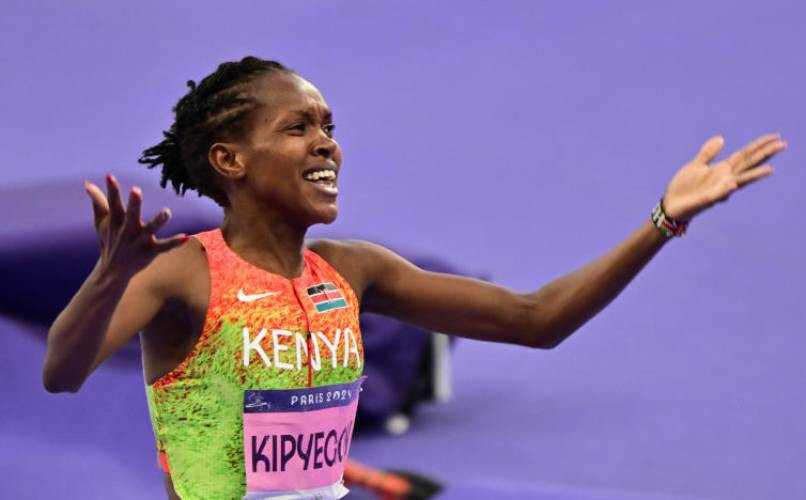
“I knew I was in shape to do something special,” said Kipyegon after the race. “Breaking the world record again, right here in front of this crowd, is a dream come true.”
One of the Greatest Careers in Track History
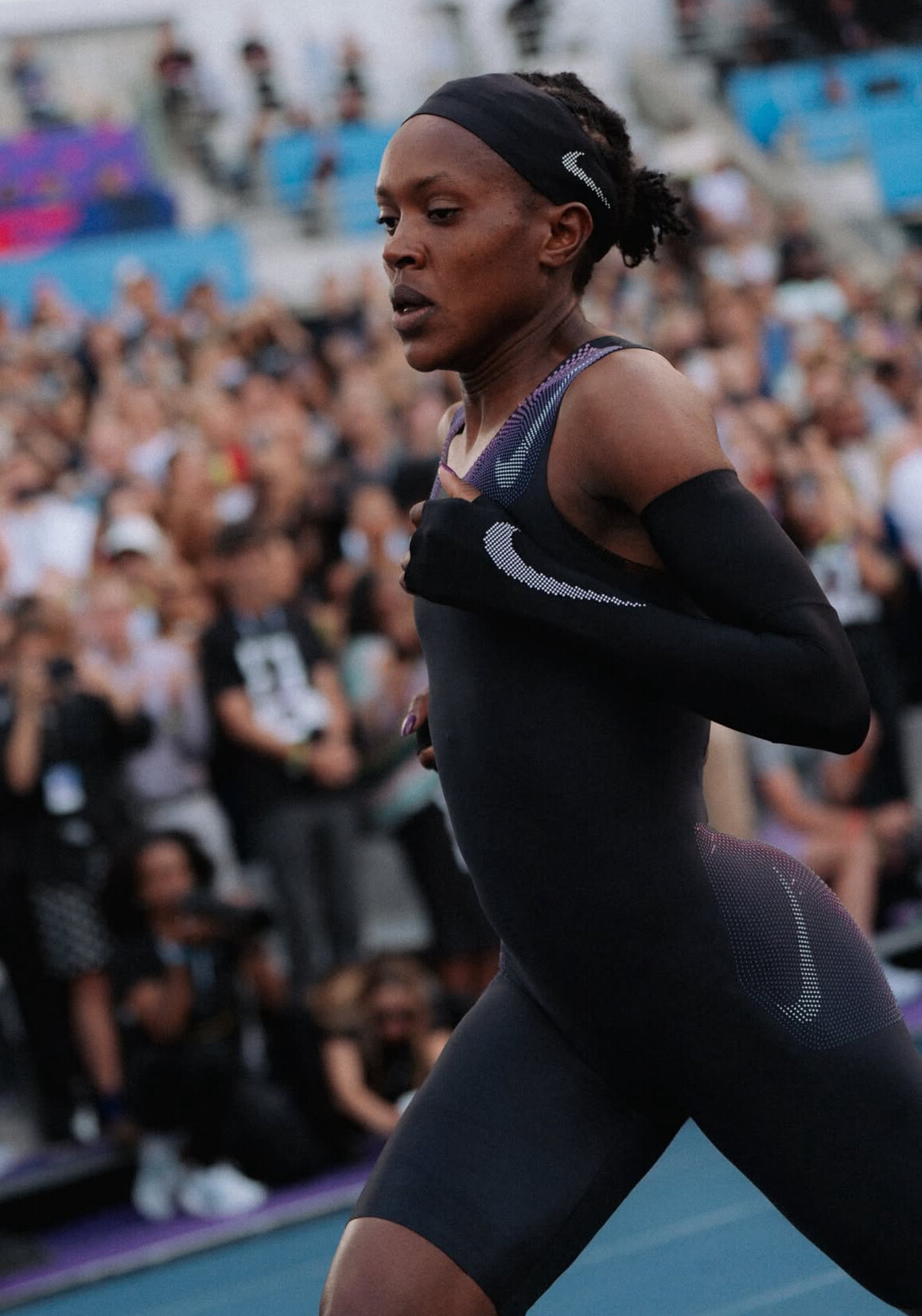
With this latest record, Kipyegon has now broken three world records in just over a year — the 1500m, mile, and 5000m — showcasing a range and consistency few have ever matched.
Her ability to dominate both the 1500m and 5000m places her in a category all her own. And after winning double gold in both events at the 2024 Paris Olympics, her legend continues to grow.
What’s coming up for Faith
With the 2026 World Championships in Tokyo looming, Kipyegon’s momentum couldn’t be stronger. She’s not just chasing titles — she’s rewriting the sport’s history.
As the only woman in history to run both sub-3:49 in the 1500m and sub-14 in the 5000m, Faith Kipyegon isn’t just winning races — she’s reshaping the limits of human performance.
by Boris Baron
Login to leave a comment
Prefontaine Classic
The Pre Classic, part of the Diamond League series of international meets featuring Olympic-level athletes, is scheduled to be held at the new Hayward Field in Eugene. The Prefontaine Classicis the longest-running outdoor invitational track & field meet in America and is part of the elite Wanda Diamond League of meets held worldwide annually. The Pre Classic’s results score has...
more...Beatrice Chebet Smashes Women’s 5000m World Record with Historic 13:58.06 at Prefontaine Classic
On a cool Saturday evening in Eugene, Oregon, Beatrice Chebet of Kenya made history — becoming the first woman ever to break the 14-minute barrier in the 5000m.
Chebet stormed to victory at the Prefontaine Classic on July 5, 2025, clocking an astonishing 13:58.06, obliterating the previous world record of 14:00.21 set by Ethiopia’s Letesenbet Gidey in 2020.
It was a performance that stunned the crowd at Hayward Field and sent shockwaves through the global athletics community.
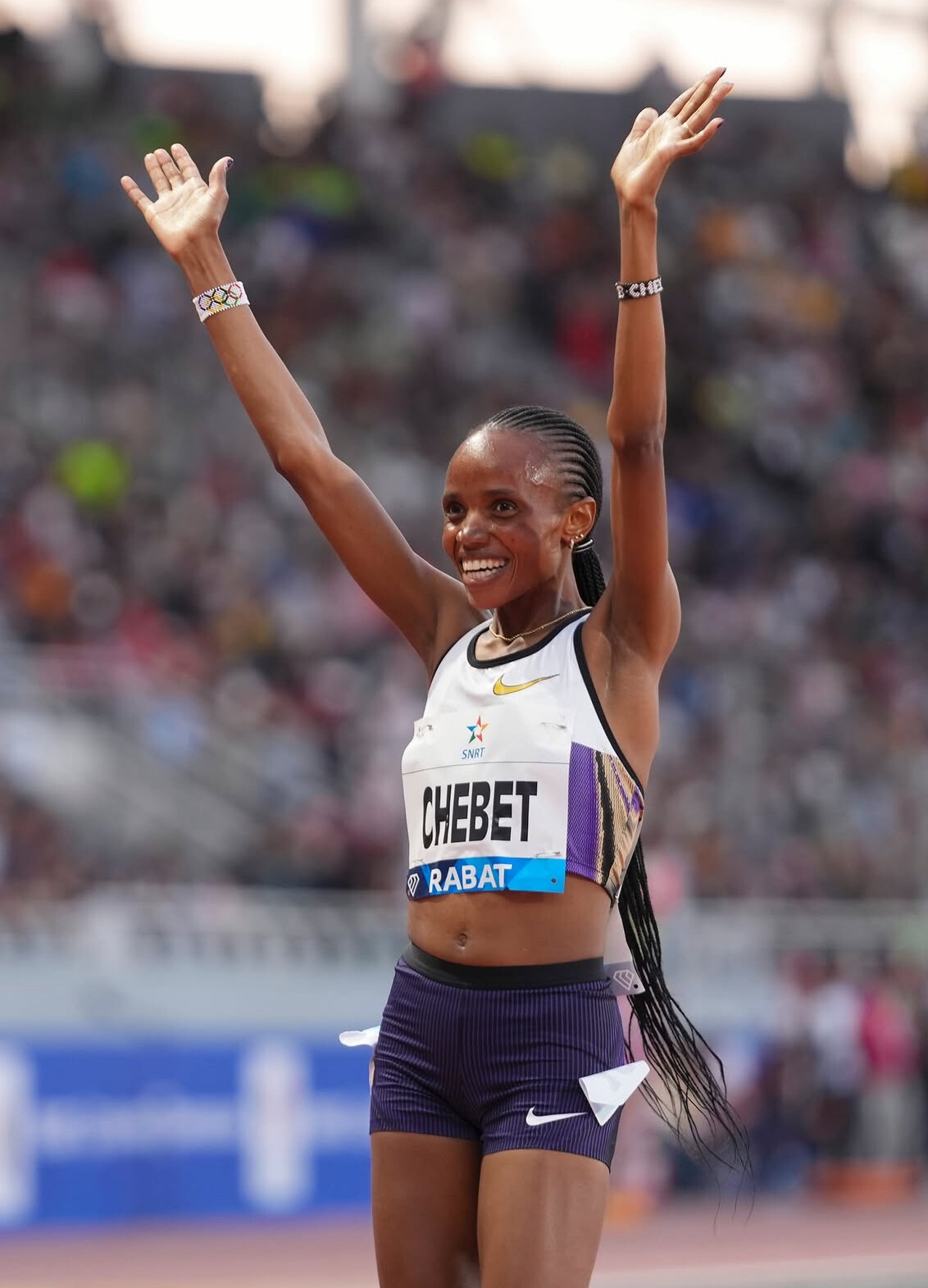
Making History in Style
From the gun, the race was electric. Pushed by strong pacing and an elite field, Chebet stayed composed and patient, moving smoothly through the early kilometers. But as the laps ticked down, she surged to the front with her trademark closing speed and never looked back.
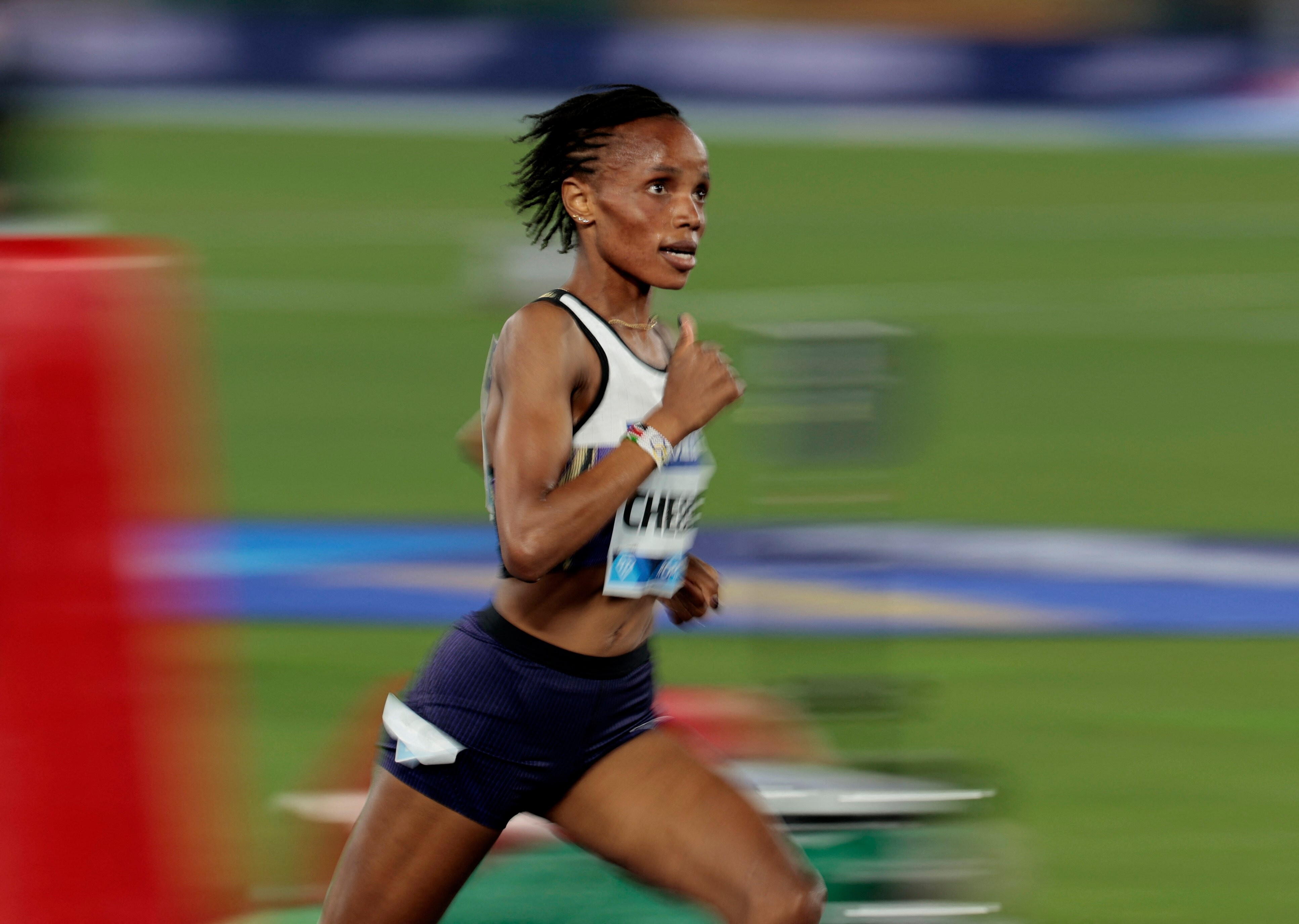
Her final time of 13:58.06 etched her name in the record books and established her as the new queen of the distance — a feat no woman in history had previously achieved.
“I knew the record was possible,” Chebet said after the race. “I trusted my training and my strength. This was for Kenya, for women, and for everyone who believes in breaking limits.”
A Star Ascending
At just 25, Beatrice Chebet has already had a career packed with accolades — World Cross Country champion, Diamond League winner, and now the fastest woman ever over 5000m.
With her Paris Olympic medal from last year and a World Championships season on the horizon, Chebet has shown that she is in the form of her life. Her historic run comes at a time when Kenyan distance running is enjoying a renaissance — especially among the women.
What’s Next for Beatrice
Chebet’s performance doesn’t just reset the record books — it redefines what’s possible in women’s distance running. The sub-14 club now exists, and she’s the founding member.
With competition heating up and eyes on the 2026 World Championships, Chebet has firmly taken the lead in the next chapter of women’s long-distance history.
by Boris Baron
Login to leave a comment
Prefontaine Classic
The Pre Classic, part of the Diamond League series of international meets featuring Olympic-level athletes, is scheduled to be held at the new Hayward Field in Eugene. The Prefontaine Classicis the longest-running outdoor invitational track & field meet in America and is part of the elite Wanda Diamond League of meets held worldwide annually. The Pre Classic’s results score has...
more...Faith Kipyegon Clocked 3:48.8 at 1500m During #Breaking4 Attempt—Eyes Another World Record at the Prefontaine Classic on July 5
Faith Kipyegon, the reigning queen of middle-distance running, continues to stretch the boundaries of what’s possible on the track. During a high-profile #Breaking4 mile time trial, the Kenyan superstar clocked a blistering 3:48.8 at the 1500-meter mark—faster than her official world record of 3:49.04, set in Florence in 2023.
Although the time trial format means the result won’t be ratified as an official record, the performance sent a clear message: Kipyegon is still getting faster.
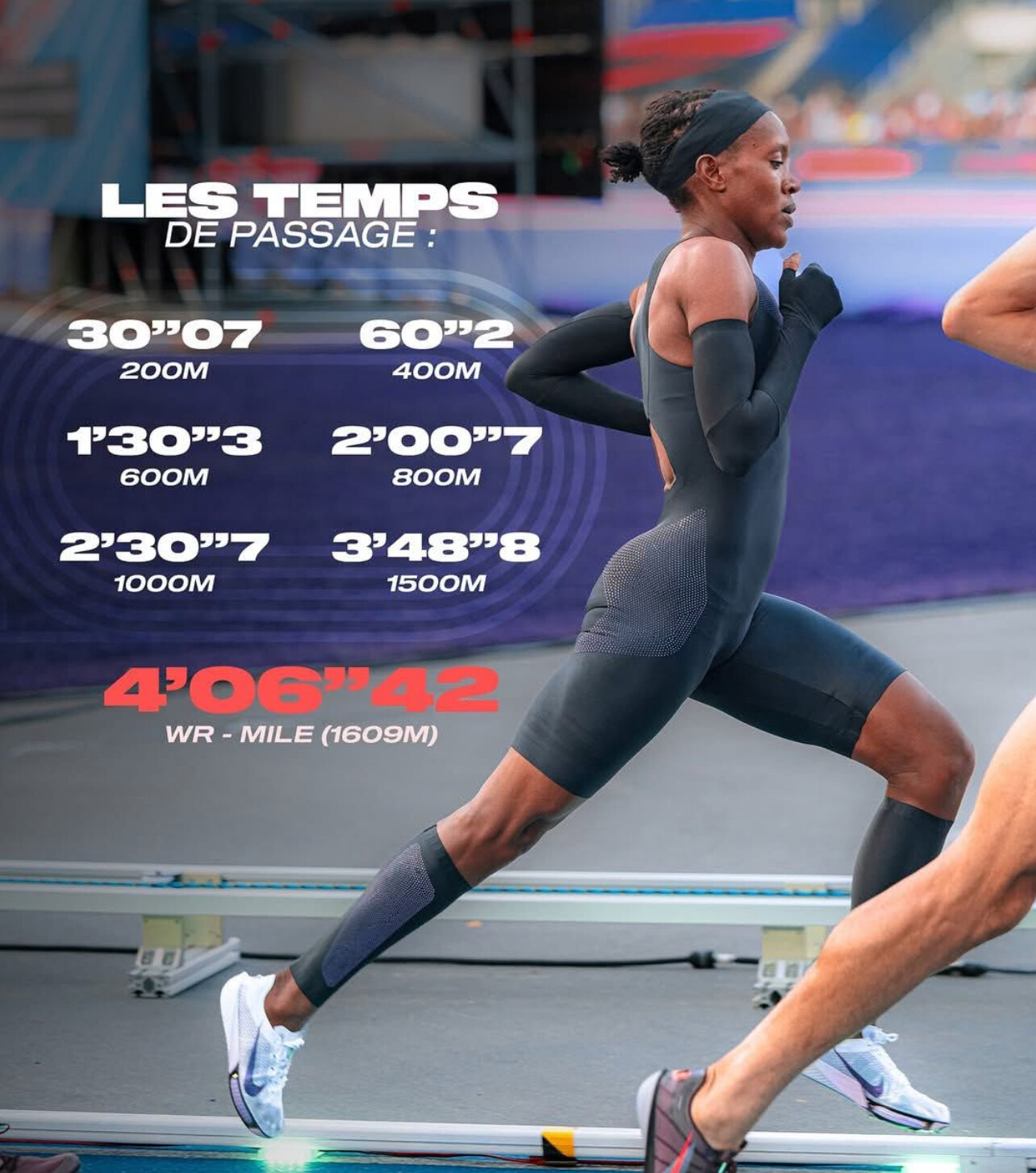
“This performance gives me great hope,” Faith said after the run. “To see 3:48.8 on the clock at 1500m confirms that sub-3:49 is within reach.”
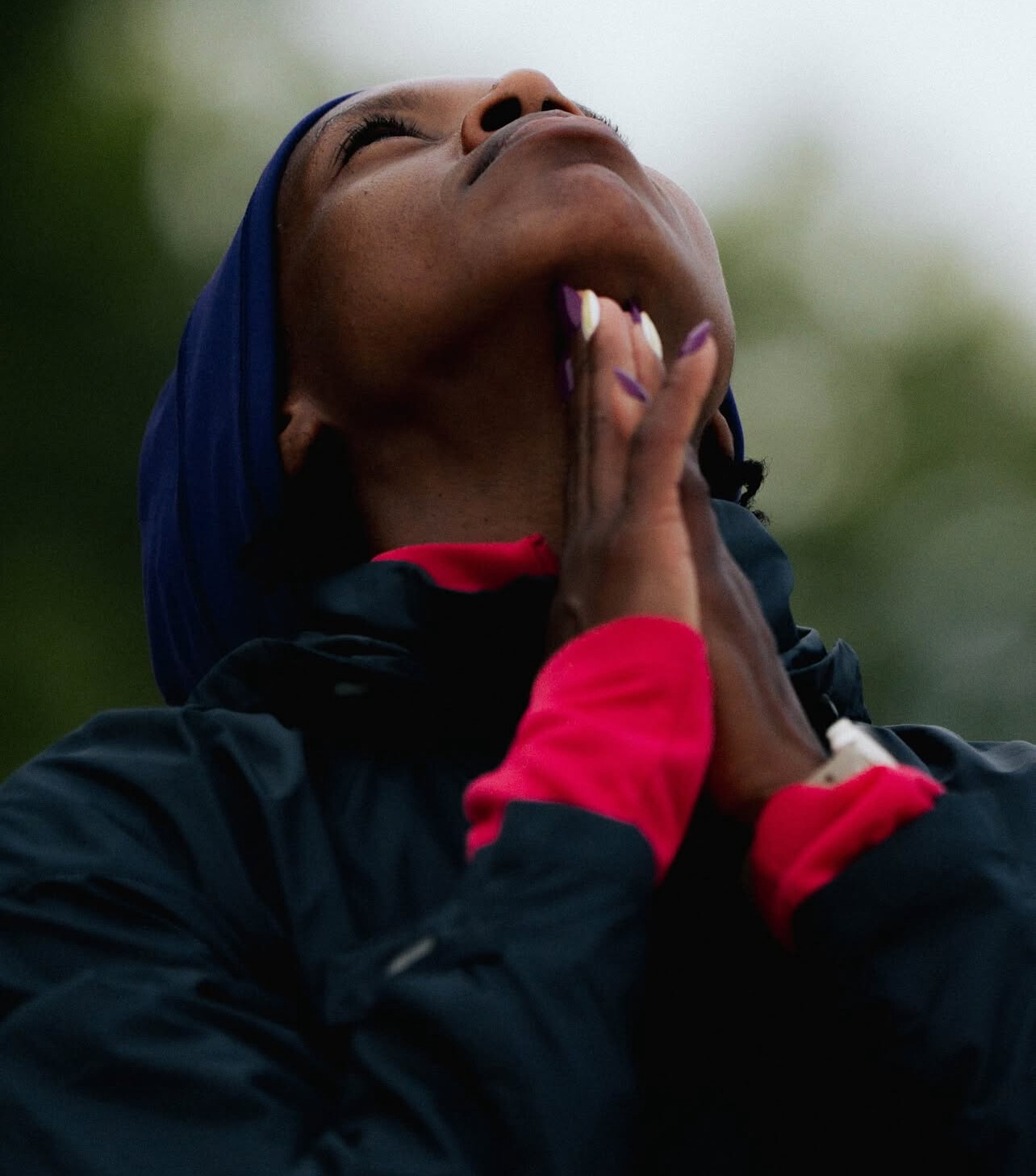
She’ll have her next big chance at the Prefontaine Classic in Eugene, Oregon, on July 5, 2025, where she’s planning a serious assault on the record books. Known for producing fast times at Hayward Field, the meet could see Faith rewrite history once again.
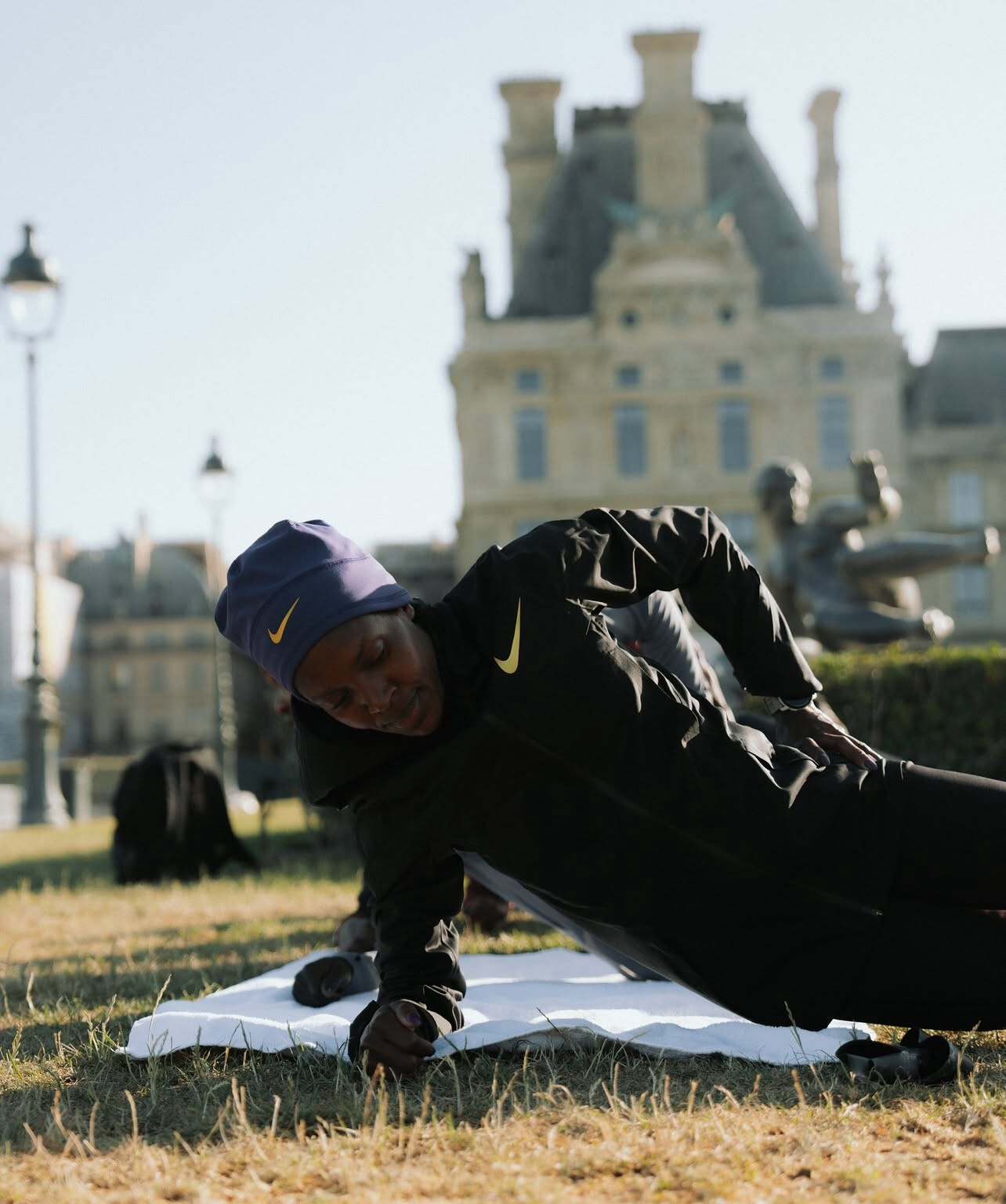
The Breaking4 attempt was designed to chase a barrier no woman has yet achieved under standard conditions: running a sub-four-minute mile. While Kipyegon ultimately finished the mile in 4:06.42, her 1500m split electrified fans and analysts alike.
Already the world record holder at 1500m, the mile, and 5000m, Kipyegon’s consistency and fearless racing continue to define this golden era in women’s distance running. Her run at the Pre Classic could mark the third time she’s broken the 1500m world record since 2023.
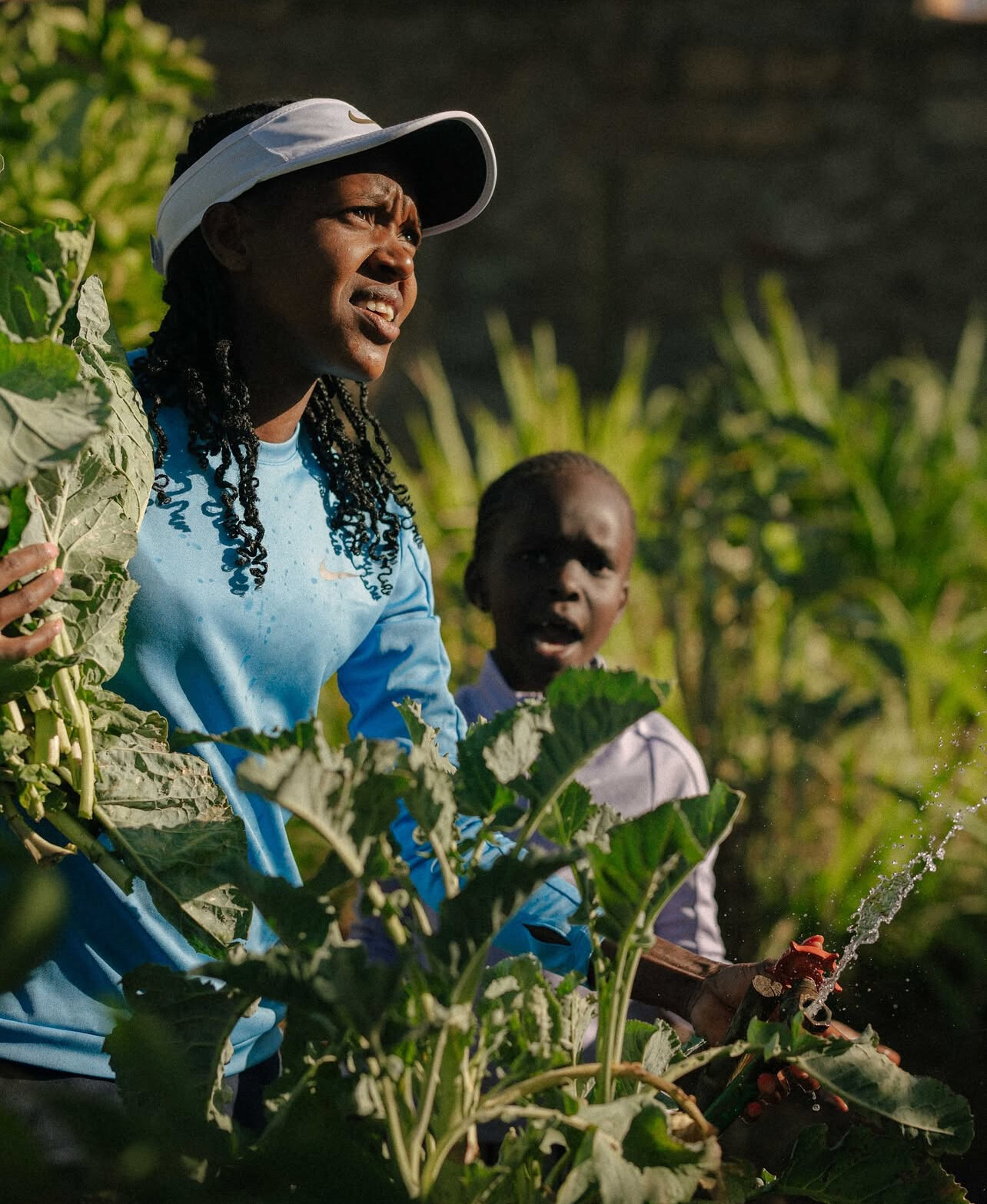
With the 2024 Paris Olympics now behind her, Kipyegon appears focused on cementing her legacy and pushing toward times no woman has ever reached.
The countdown to July 5 has officially begun.
My Best Runs
Follow us for full coverage of the Prefontaine Classic and the next chapter in Faith Kipyegon’s extraordinary journey.
by Boris Baron
Login to leave a comment
Bill Dellinger, Olympic Medalist and Legendary Coach, Passes Away at 91
The world of distance running is mourning the loss of one of its greats. Bill Dellinger, a three-time Olympian, Olympic bronze medalist, and one of the most influential coaches in U.S. track history, has passed away at the age of 91 on June 26.
Dellinger’s name is etched into the legacy of American distance running, both for his competitive fire and his ability to mentor champions. A fierce competitor on the track and a quiet architect of greatness on the sidelines, Dellinger leaves behind a legacy that stretches across generations.

Born on March 23, 1934, in Grants Pass, Oregon, Dellinger rose to national prominence while competing for the University of Oregon under coach Bill Bowerman. He represented the United States in three Olympic Games—Melbourne 1956, Rome 1960, and Tokyo 1964—earning a bronze medal in the 5000 meters in his final Olympic appearance.
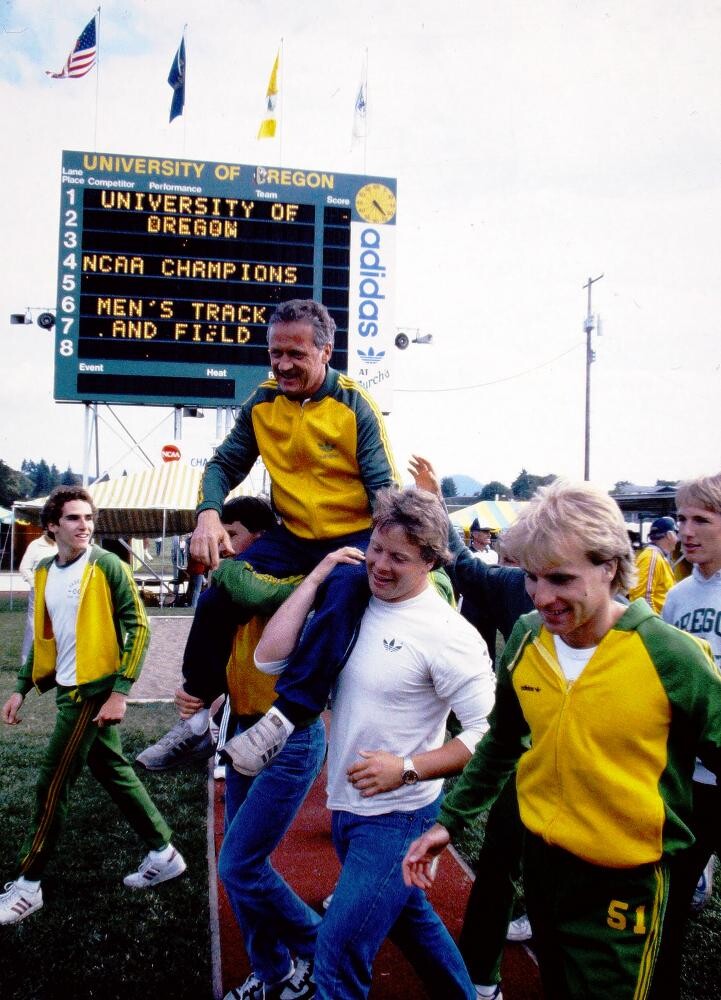
But Dellinger’s second act may have been even more impactful.
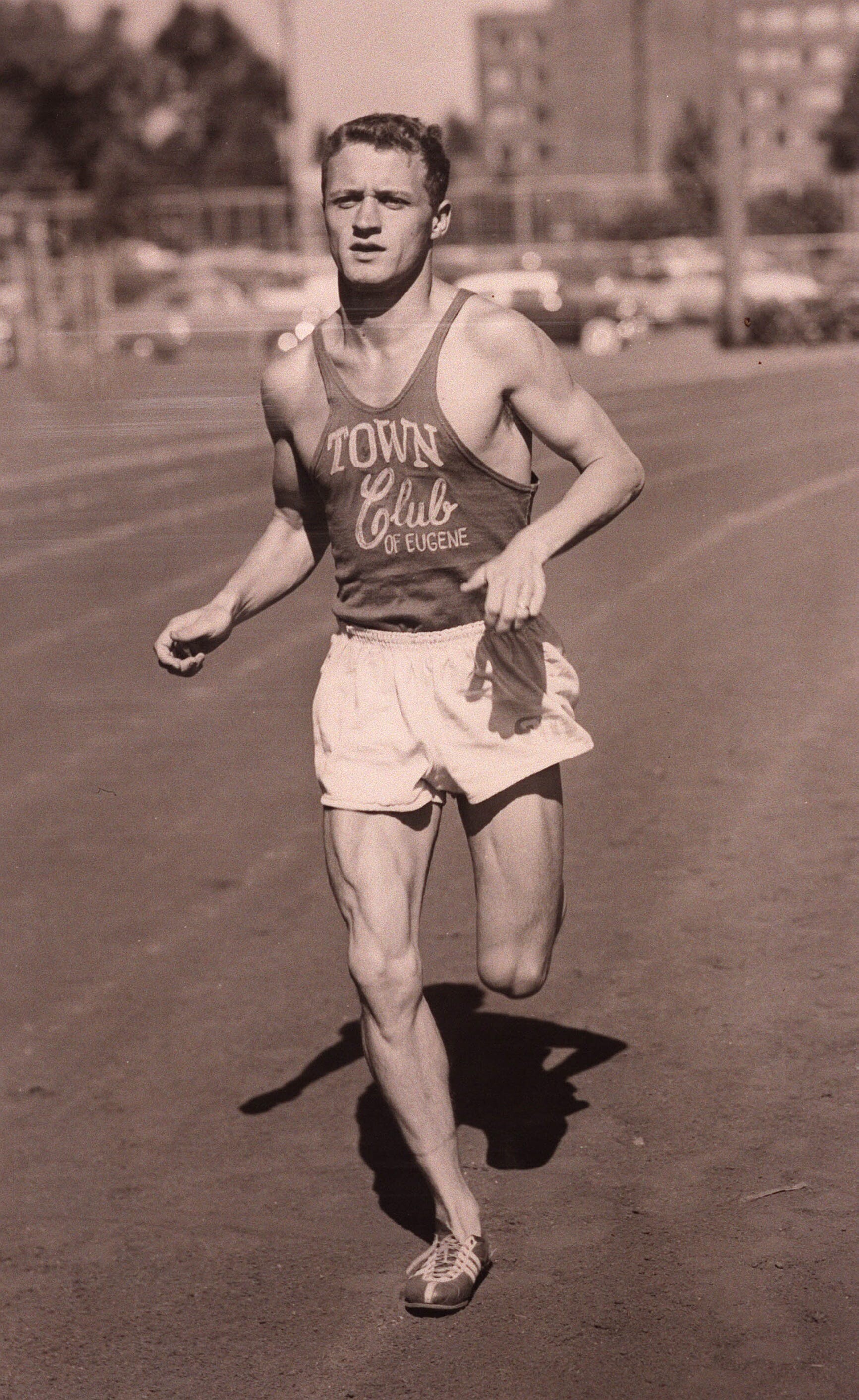
In 1973, he succeeded Bowerman as head coach at Oregon and immediately found himself guiding the nation’s most electric young runner—Steve Prefontaine. Their relationship transcended typical coach-athlete dynamics. Dellinger was more than a tactician; he was a stabilizing force for a fiercely independent and intense young star.
“Dellinger wasn’t just a coach. He was an architect of belief,” Prefontaine once said. “He knew when to push and when to trust.”
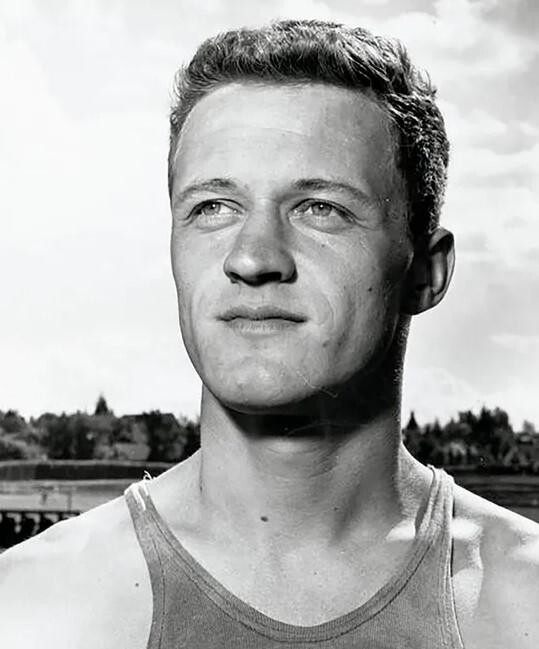
Dellinger coached at Oregon until 1998, mentoring athletes like Alberto Salazar, Matt Centrowitz Sr., Rudy Chapa, and many others who carried the Oregon tradition to global stages. He helped solidify Oregon’s reputation as the mecca of American distance running.
He was known for blending scientific training methods with an intuitive understanding of athlete development. His workouts were tough, his expectations high, but his support unwavering.
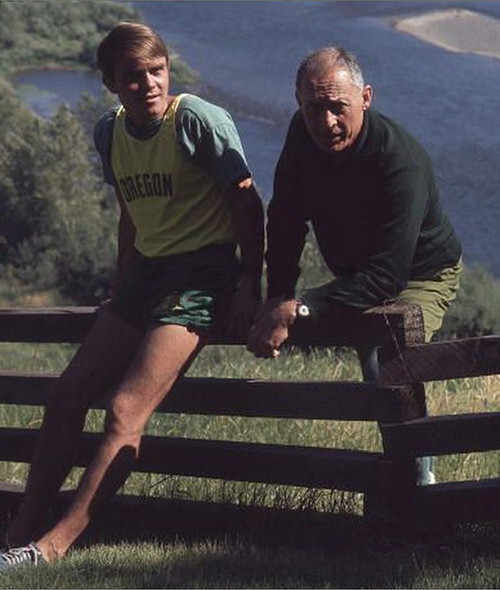
A Lifetime of Influence
Dellinger’s contributions to the sport extended well beyond the track. He co-authored training guides, helped shape early Nike culture, and lent his name to the prestigious Dellinger Invitational, one of the top collegiate cross-country meets in the country.
“Bill’s influence on distance running—first as a world-class athlete and then as a masterful coach—was profound,” said Bob Anderson, lifelong runner and founder of Runner’s World and My Best Runs.
“I hadn’t seen Bill in years, but his presence still echoes in the sport today. He inspired a generation and helped build the foundation of what American distance running has become. He may be gone, but he’ll never be forgotten.”
A Final Lap
Dellinger’s passing marks the end of an era, but his life’s work will continue on every time an Oregon singlet toes the line, every time a young coach references his methods, and every time a runner believes they can dig a little deeper.
He didn’t just coach champions—he helped shape the soul of American distance running.
Rest in peace, Coach Dellinger.
by Boris Baron
Login to leave a comment
Pre vs. Wottle: The Day Eugene Witnessed a Mile Duel for the Ages
Inspired by a post from Eric Giacoletto
On June 20, 1973, Hayward Field in Eugene, Oregon, hosted one of the most legendary mile showdowns in U.S. track history—a dramatic match race between Steve Prefontaine and Dave Wottlethat captivated a sold-out crowd and etched itself into the sport’s folklore.
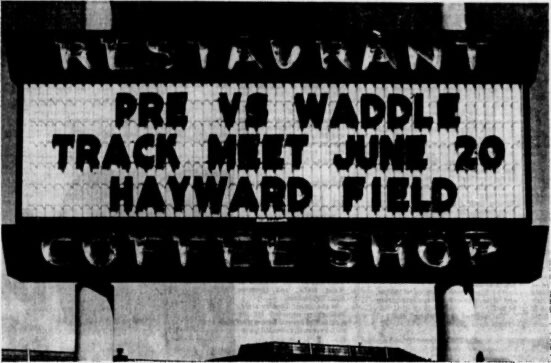
The event was the Hayward Restoration Meet, a grassroots effort to raise funds to rebuild the stadium’s deteriorating wooden grandstands, which had been condemned by the Eugene Fire Department. Prefontaine, ever the promoter and competitor, helped organize a marquee matchup to fill the stands and elevate the cause.
Pre invited Dave Wottle, who was then riding high after winning gold in the 800 meters at the 1972 Munich Olympics, for a one-mile race that would bring elite energy to Eugene. Wottle accepted the challenge.
According to Giacoletto’s telling, Prefontaine told Wottle:
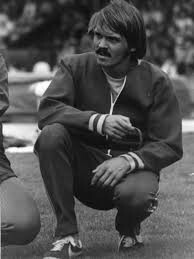
“We’ll go after the world record in the mile, and I’ll set the pace. I’ll bring you through in 2:56, and then it’s each man for himself on the last lap.”
On race day, true to his word, Pre hit the 880-yard mark in 1:56.8 and the three-quarter mile in 2:56.0—perfect pacing for a potential world record.
But with just over 220 yards remaining, Wottle unleashed his signature long sprint. In front of a roaring Hayward crowd, Wottle surged past Pre to win in 3:53.3, the third-fastest mile in history at the time, behind only Jim Ryun’s 3:51.1 world record (1967) and Marty Liquori’s 3:52.2 (1971).
Prefontaine finished second in 3:54.7, which tied him for ninth on the all-time list. John Hartnett of Villanova and Ireland kicked hard to take third in 3:54.8, placing 11th all-time.
Why This Race Still Resonates
• It was Wottle’s career-best mile, proving his range extended well beyond 800 meters.
• It showed Prefontaine’s commitment to elevating the sport, even at the risk of losing.
• It became a key chapter in Hayward Field’s history and Oregon’s running identity.
As Eric Giacoletto beautifully summarized, this was “an epic day in track nerd history”—a pure demonstration of guts, pacing, and competitive fire that helped shape American distance running.
by Boris Baron
Login to leave a comment
Remembering Steve Prefontaine: 50 Years Since His Untimely Passing
On May 30, 1975, the running world lost one of its most charismatic and determined figures: Steve Prefontaine. Known simply as “Pre,” he wasn’t just a distance runner—he was a phenomenon, captivating fans with his relentless style and rebellious spirit. As we mark 59 years since his passing, let’s celebrate his life by sharing stories and facts that many may not know.
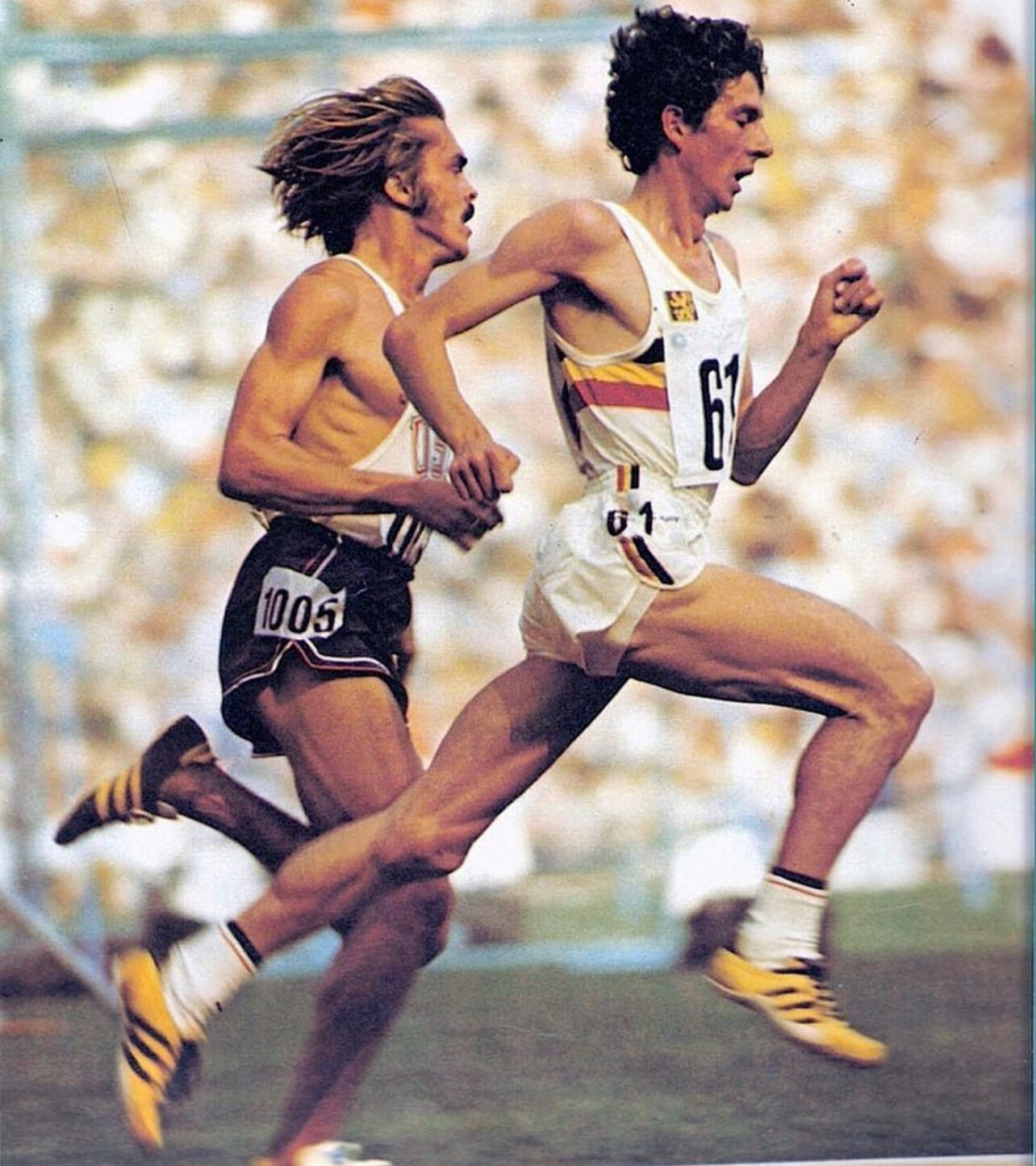
The Man Behind the Legend
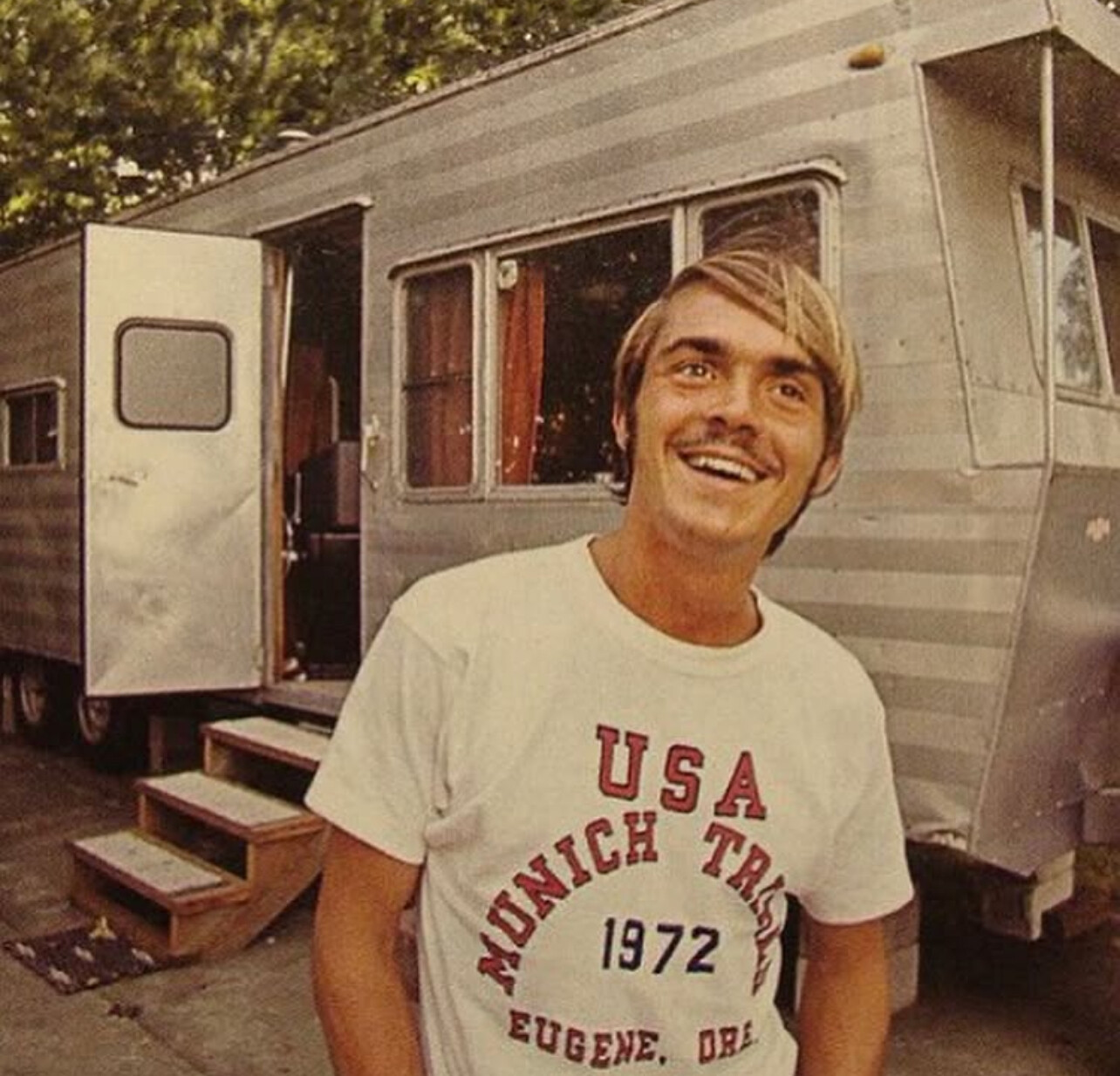
Born in Coos Bay, Oregon, Steve Prefontaine became a running icon in an era dominated by more conservative racing strategies. His front-running style—pushing the pace from the gun—symbolized not just his physical prowess but his sheer will to win.
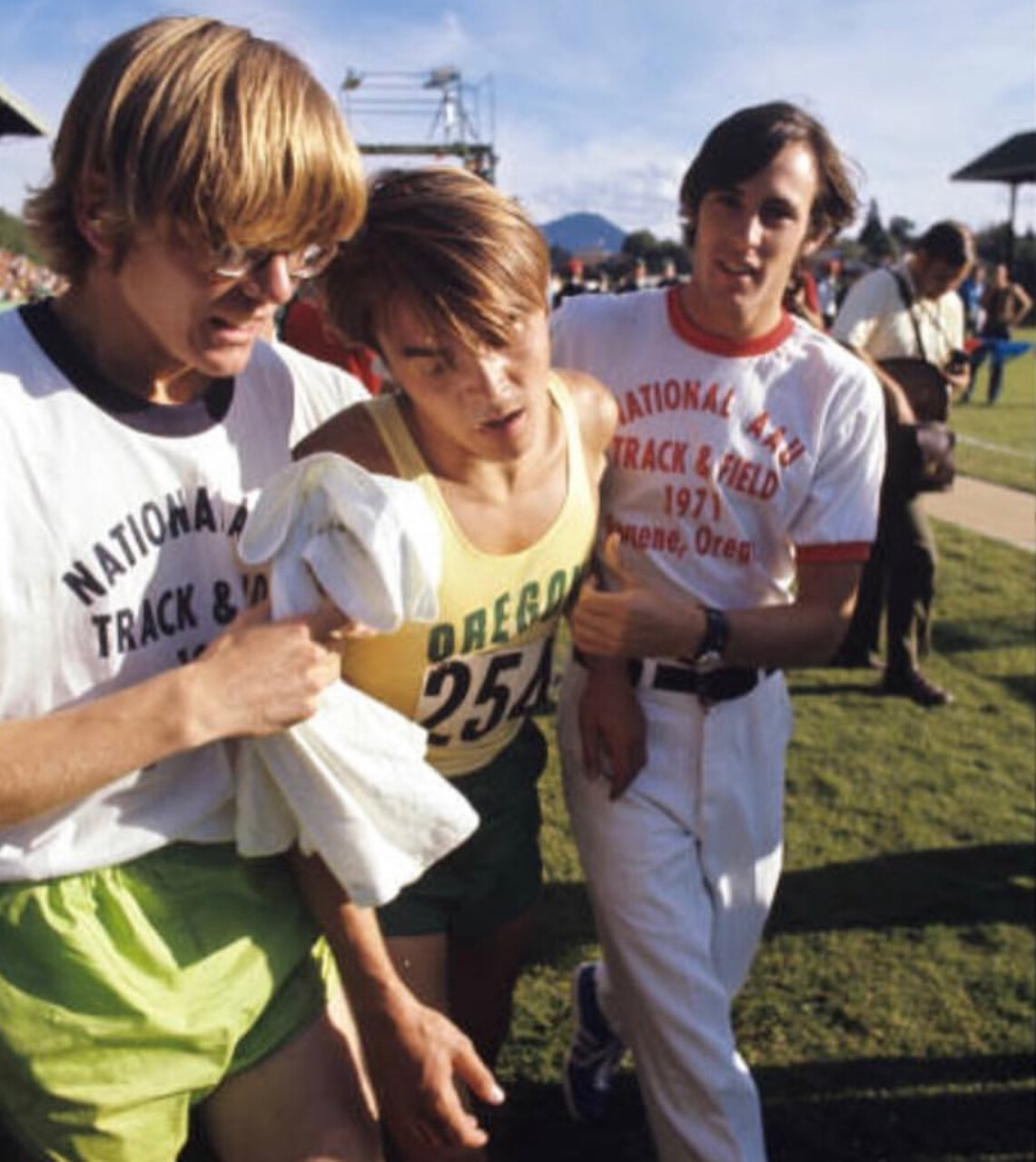
While many remember his records, charisma, and tragic death at age 24, there’s more to Pre’s story:
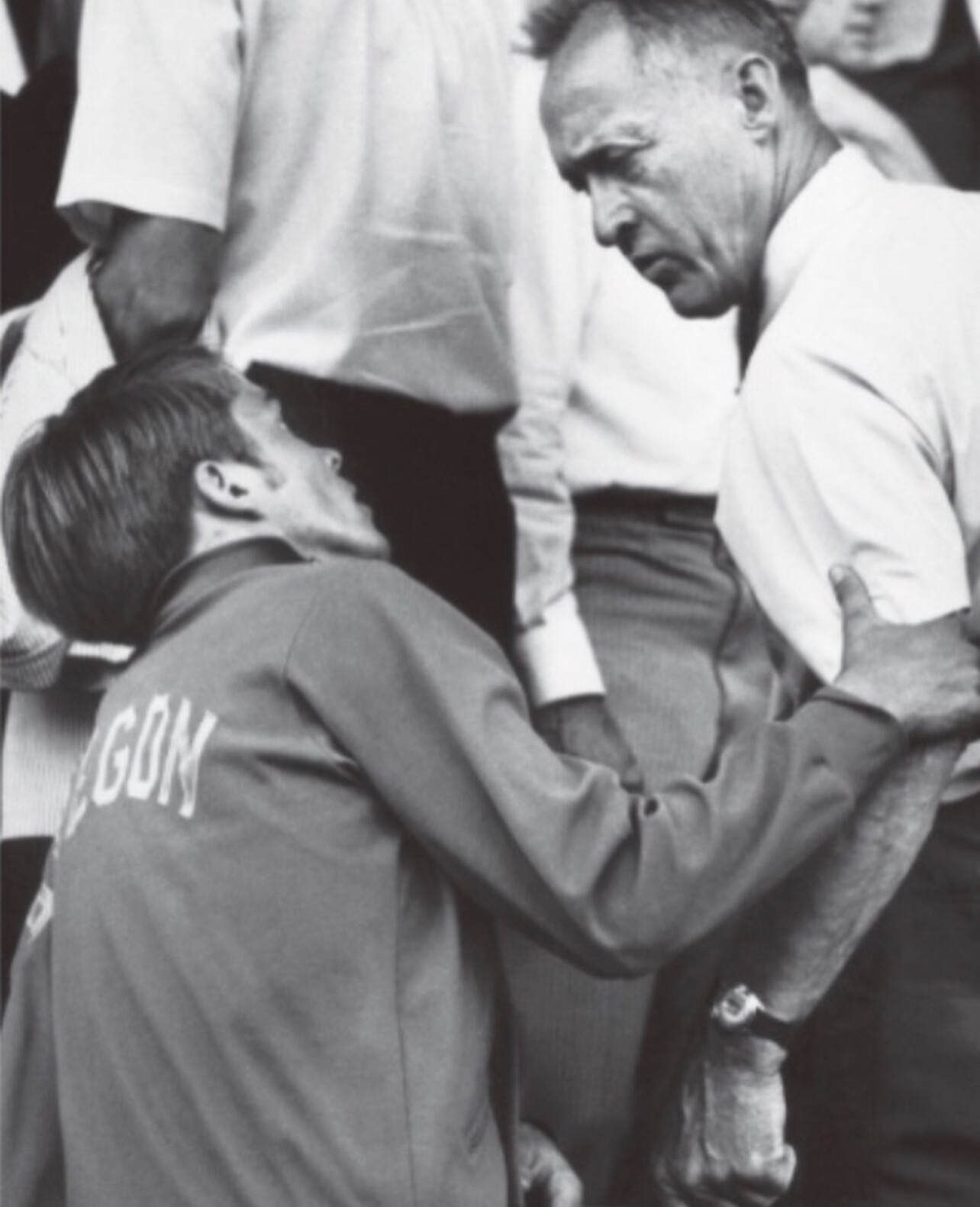
Lesser-Known Facts About Steve Prefontaine
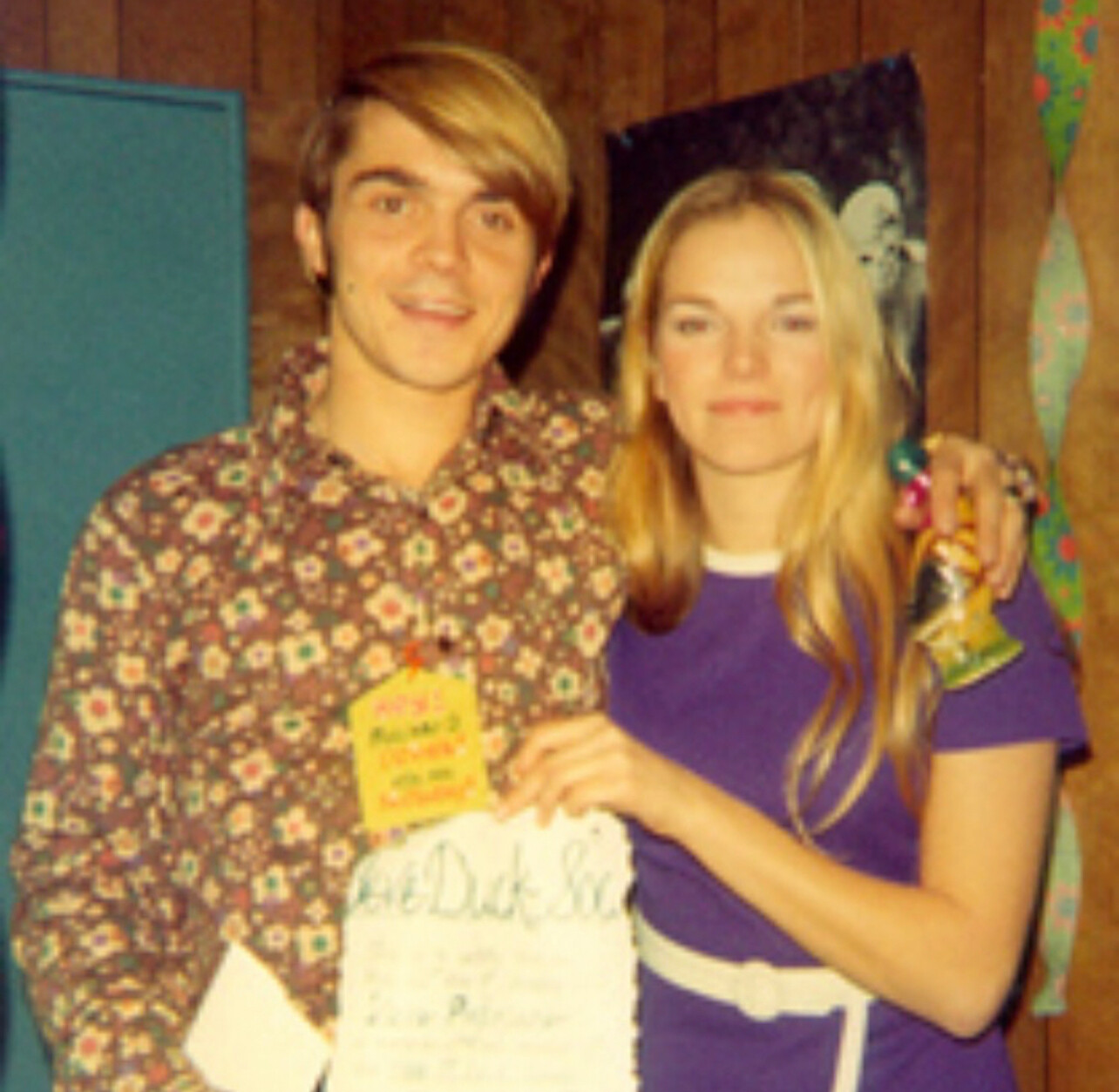
✅ His First Love Was Football
Before he discovered distance running, Prefontaine dreamed of playing football. His small stature (just over 5’9”) eventually led him to cross-country and track, where his natural talent shone.
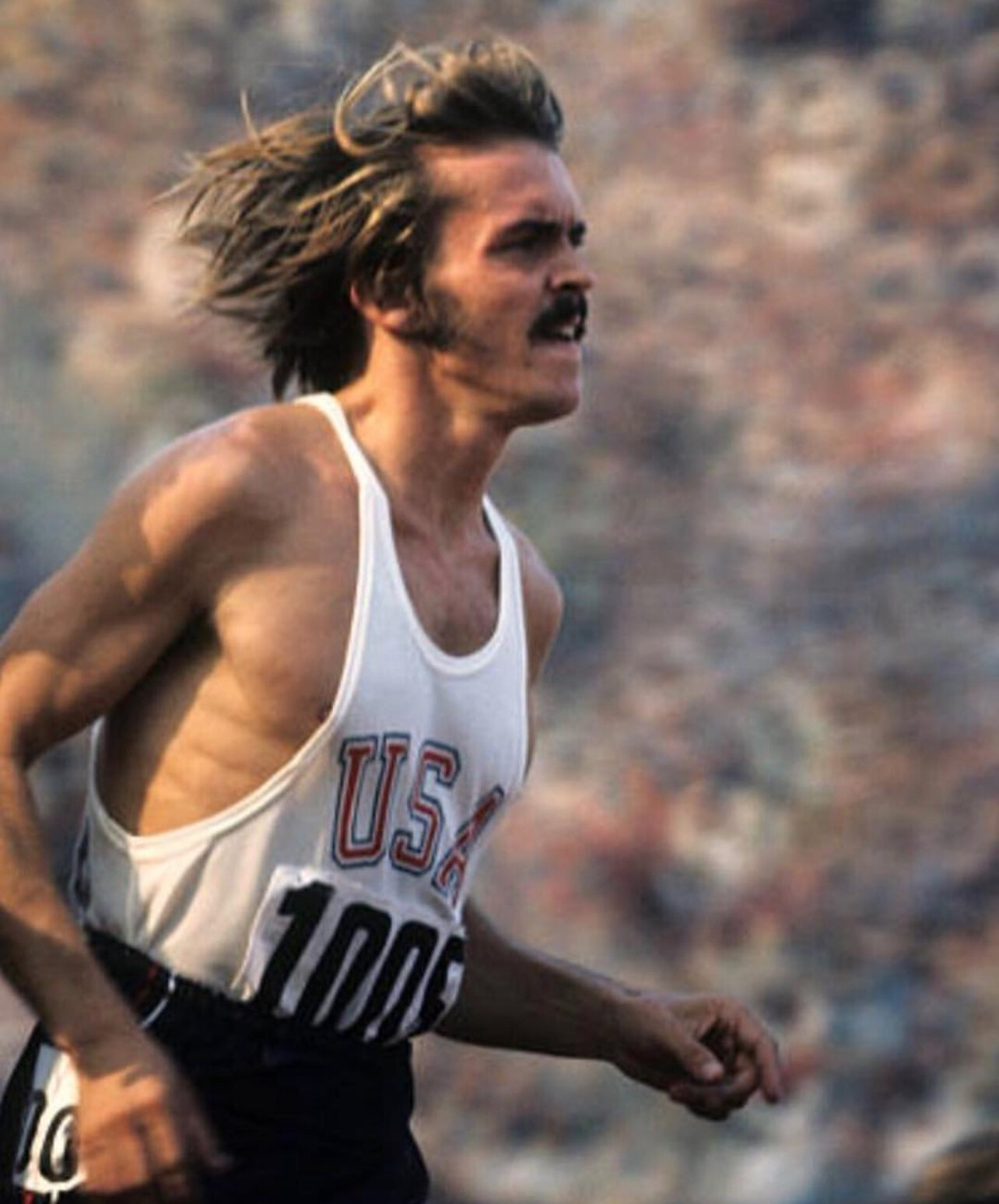
✅ He Was a Student of the Sport
Pre wasn’t just a competitor—he was a student of running. He meticulously logged his workouts and was known to study race tactics and course layouts in detail, even though he famously raced “without a watch.”
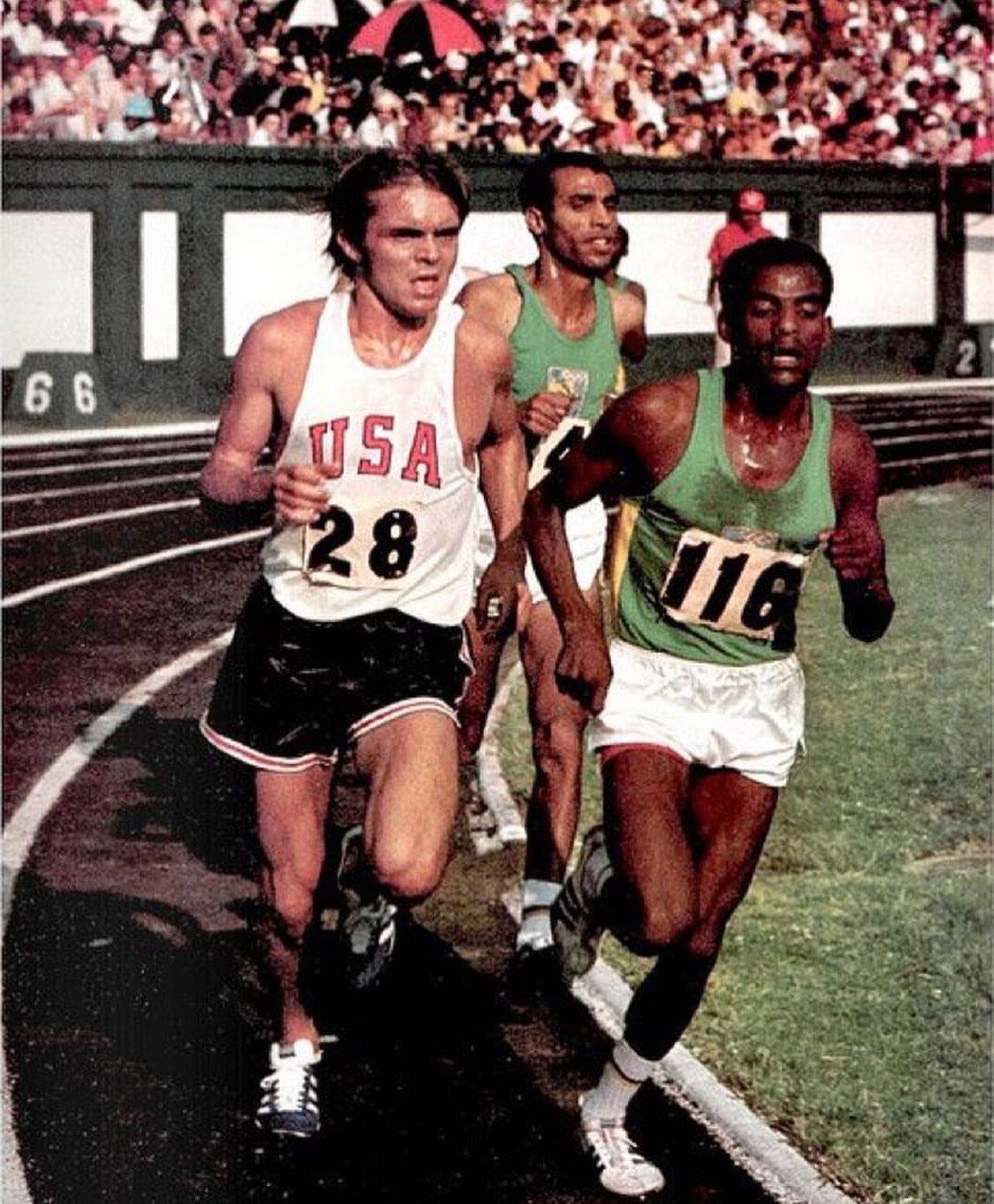
✅ He Worked Hard Off the Track
While at the University of Oregon, Prefontaine worked part-time at a bar called The Prince Pückler’s Ice Cream Parlor to make ends meet. He was known for being personable and engaging with customers.
✅ He Advocated for Amateur Athletes
Pre was a vocal critic of the AAU (Amateur Athletic Union) and its restrictive policies. He championed athlete rights, paving the way for future reforms in track and field compensation and professionalism.
✅ He Had an Eye for Art
Many don’t know that Prefontaine had a strong artistic side. He enjoyed sketching and was known to doodle during downtime, particularly in college.
✅ The 1972 Munich Olympics Fueled His Fire
After finishing fourth in the 5000 meters in Munich, just shy of the medals, Pre’s determination was stronger than ever. He was already planning his strategy for the 1976 Montreal Olympics—a dream tragically cut short.
✅ His Car Crash Had Controversial Theories
While officially ruled an accident (his MGB sports car flipped after hitting a rock wall), there have been whispers over the years of mechanical failure or other drivers being involved. Regardless, the crash at 24 years old left the running world stunned.
✅ He Was an Early Nike Ambassador
Phil Knight, co-founder of Nike, was an early supporter of Prefontaine. Pre wore early versions of Nike shoes and even helped test prototypes, playing a key role in building the brand’s credibility among elite athletes.
Legacy Beyond the Finish Line
Steve Prefontaine’s legacy isn’t just about times or places—it’s about spirit. His courage to lead from the front, his determination to fight for athletes’ rights, and his ability to inspire transcended the track. His story continues to resonate with runners and fans, even 59 years after his death.
As we reflect today, let’s honor Pre’s legacy not just by remembering his races, but by embracing his passion, fearlessness, and commitment to excellence.
by Boris Baron
Login to leave a comment
Who’s the Fastest Man in the World Right Now?
Sprint Showdown 2025: Lyles, Knighton, and Tebogo Ignite a New Era of Speed on the Diamond League Stage
The 2025 Diamond League season is heating up fast, and the men’s sprints are once again the center of attention. Three names are defining the early action: Noah Lyles, Erriyon Knighton, and Letsile Tebogo—each with the potential to end the season as the world’s fastest man.
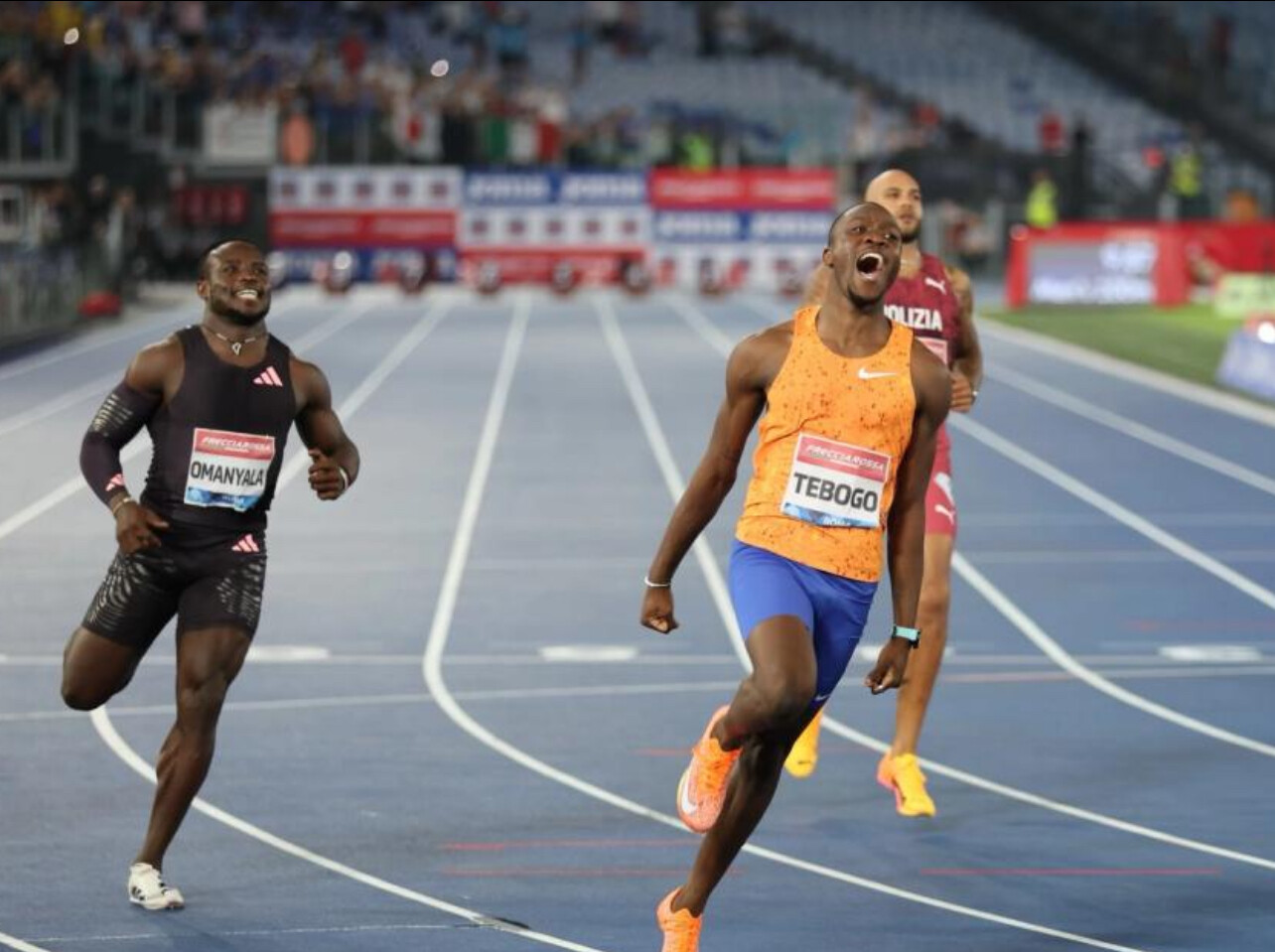
Noah Lyles: The Champion with a Target on His Back
Reigning Olympic and World Champion Noah Lyles is the man to beat. Though he hasn’t yet raced on the Diamond League circuit this year, his resume speaks volumes. He clocked 9.83 in the 100m and 19.47 in the 200m during the 2024 season and claimed double gold in Paris. All eyes are on when—and where—he’ll make his 2025 Diamond League debut. With a long-standing goal of breaking Usain Bolt’s 200m world record, Lyles remains the top contender.
Erriyon Knighton: Poised to Pounce
Still just 21 years old, Erriyon Knighton hasn’t raced yet in 2025, but anticipation is building. The American phenom owns a personal best of 19.49 in the 200m, set in 2022 as a teenager. After earning Olympic silver behind Lyles in Paris, Knighton is expected to return to the track soon and challenge for dominance in both the 100m and 200m this summer.
Leslie Tebogo: The Early Season Leader
Botswana’s Letsile Tebogo, the reigning Olympic 200m silver medalist and one of Africa’s brightest young stars, is already making headlines in 2025. He opened his season with a 10.20 in Xiamen and followed that with a 10.03 in Shanghai—finishing third in both Diamond League meets. Tebogo is scheduled to run his primary event, the 200m, at the Doha Diamond League on May 16, which could be a statement race as he builds toward the World Championships in Tokyo later this year.
What’s Next: A Collision Course
While all three athletes are on different timelines this season, the Diamond League is setting the stage for dramatic head-to-head clashes. Lyles and Knighton have yet to toe the line, while Tebogo is already building momentum. Their inevitable meeting—possibly at the Prefontaine Classic or in Europe this summer—could define the sprinting landscape in 2025.
The sprint wars are officially on. The only question left: Who will own the title of the world’s fastest man by season’s end?
by Boris Baron
Login to leave a comment
Faith Kipyegon and Jakob Ingebrigtsen Headline Historic 2025 Pre Classic
The 50th edition of the Prefontaine Classic, set for July 5 at Hayward Field in Eugene, Oregon, promises to be one of the most exciting track meets of the year. Headlining the event is three-time Olympic gold medalist Faith Kipyegon, who returns to the Pre Classic in search of her seventh career victory in the women’s 1500m.
Kipyegon, the world record holder in both the 1500m (3:49.04) and the mile (4:07.64), shattered the 1500m mark in Paris on July 7, 2024. Now, nearly a year later, she’ll look to reassert her dominance in front of a packed crowd at one of the sport’s most prestigious meets.
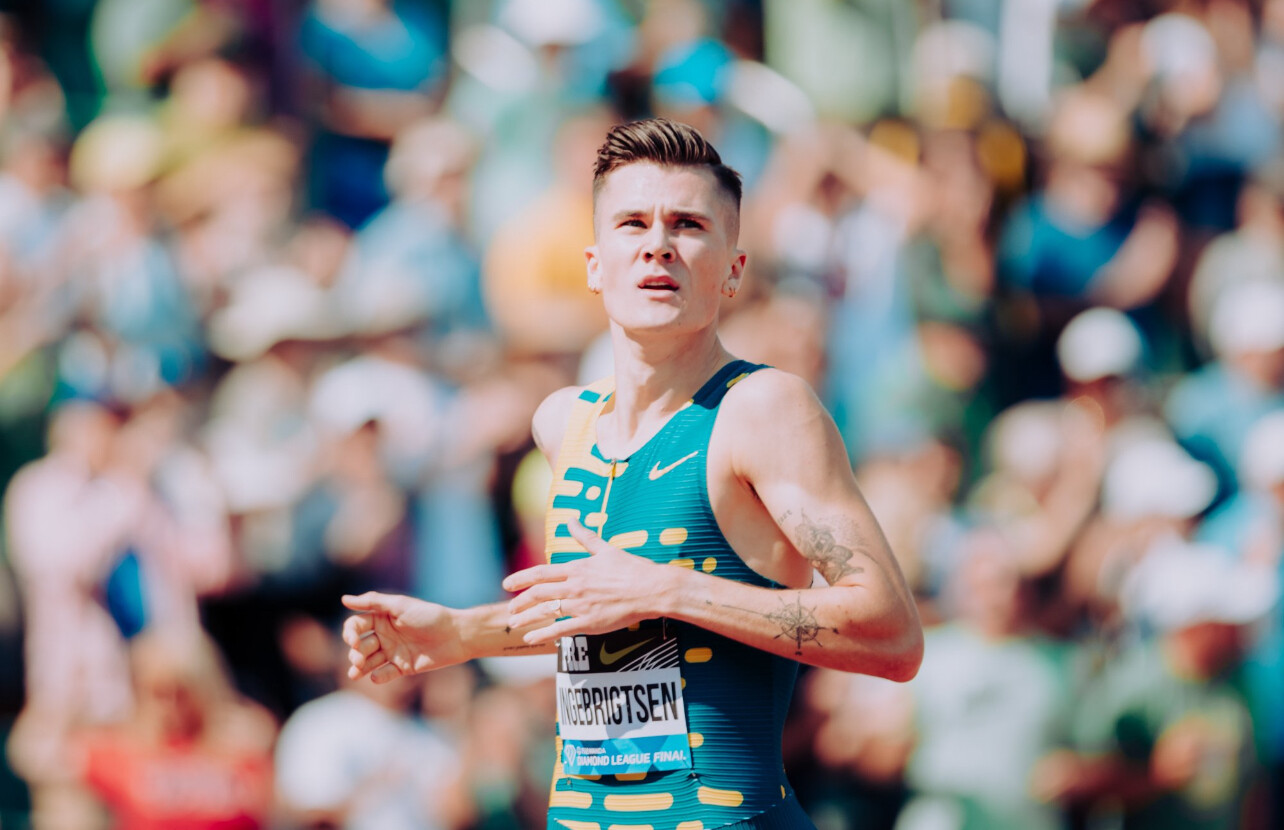
Joining Kipyegon in the 1500m are her fellow 2024 Olympic medalists—silver medalist Jessica Hull of Australia and bronze medalist Georgia Bell of Great Britain. Hull, a former University of Oregon standout, also holds the current world record in the 2000m.
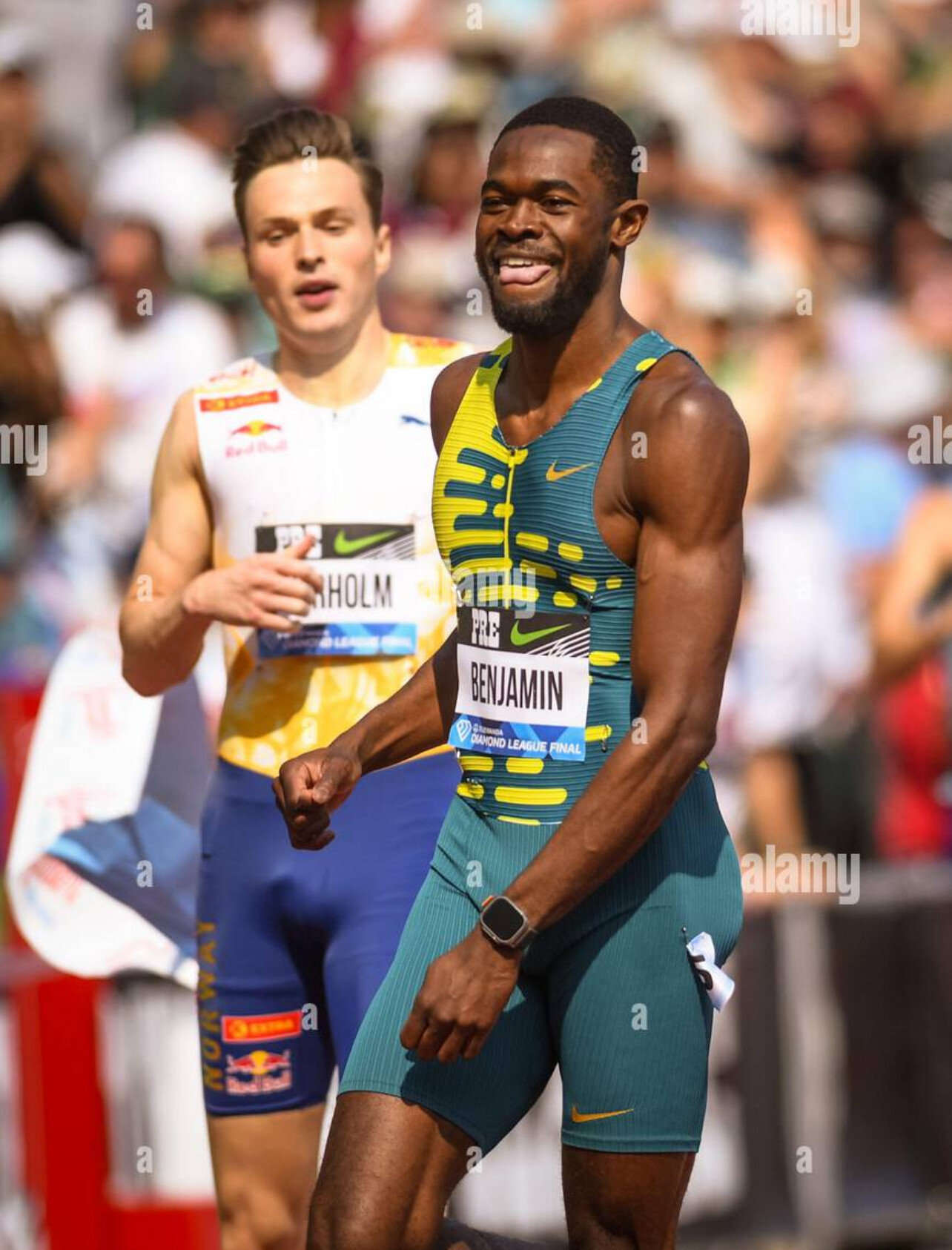
But Kipyegon isn’t the only big name set to thrill fans in Eugene. The men’s Bowerman Mile will feature a stacked lineup that includes:
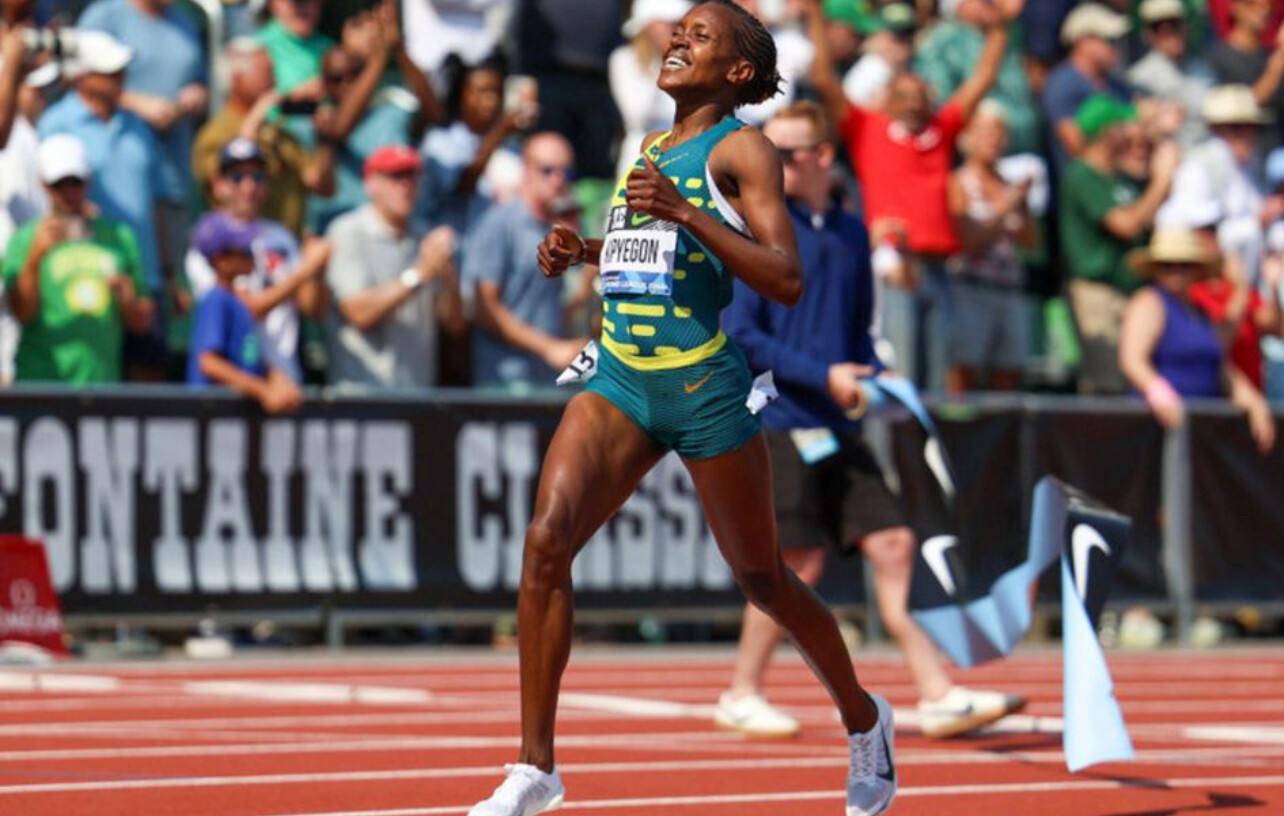
• Jakob Ingebrigtsen (Norway) – Olympic gold medalist and multiple-time Bowerman Mile champion
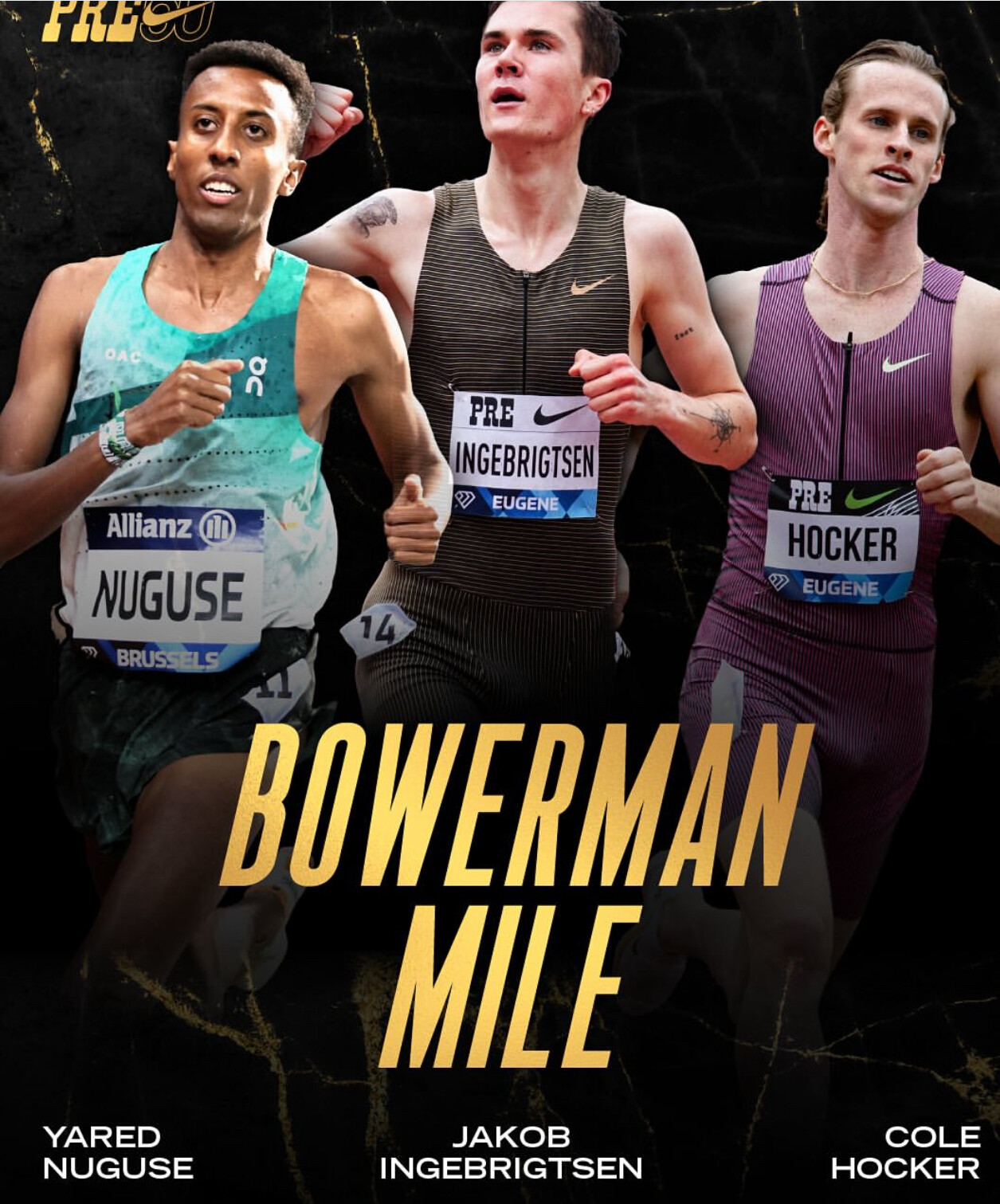
• Cole Hocker (USA) – 2024 Olympic 1500m champion
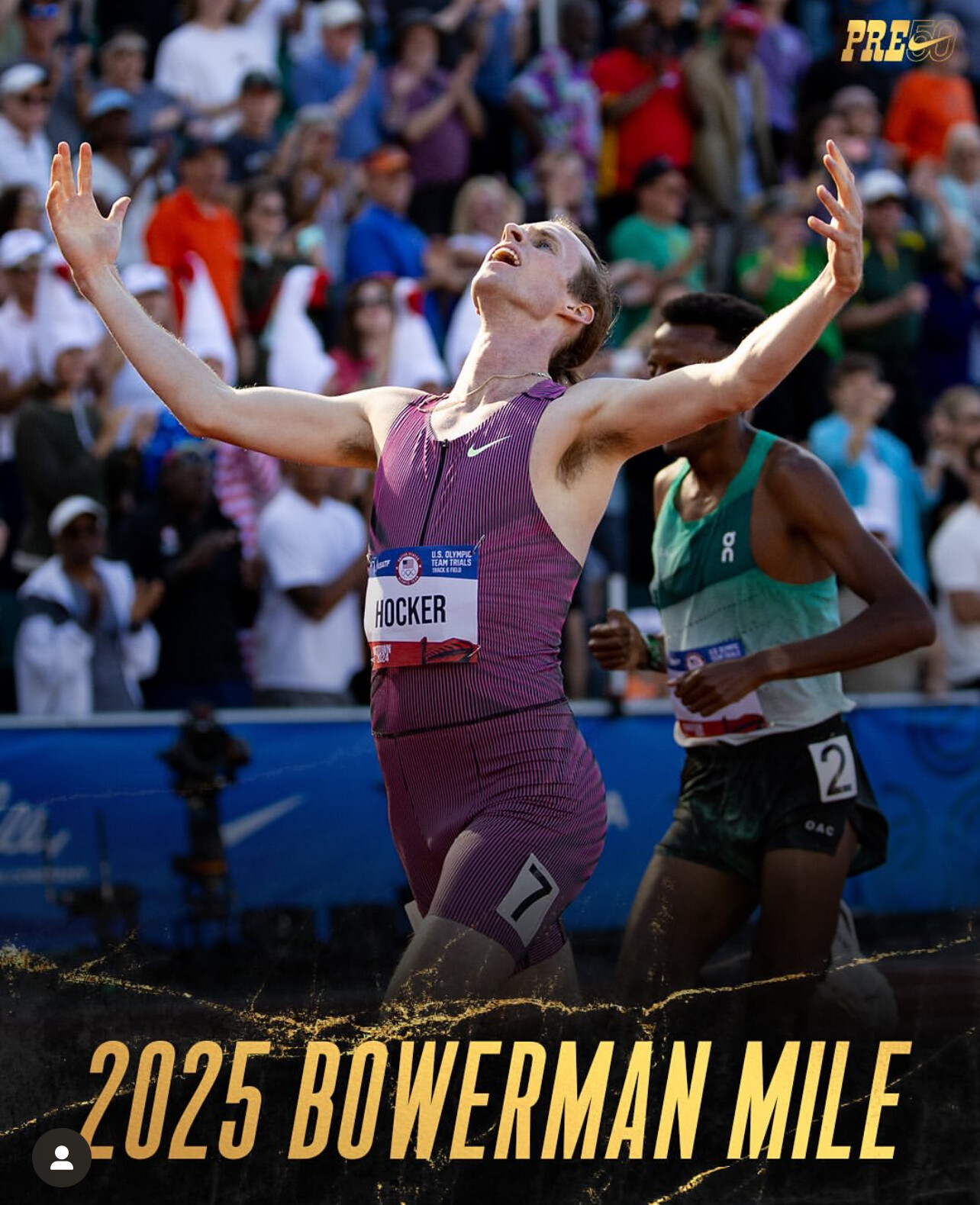
• Yared Nuguse (USA) – Olympic bronze medalist and former indoor mile world record holder
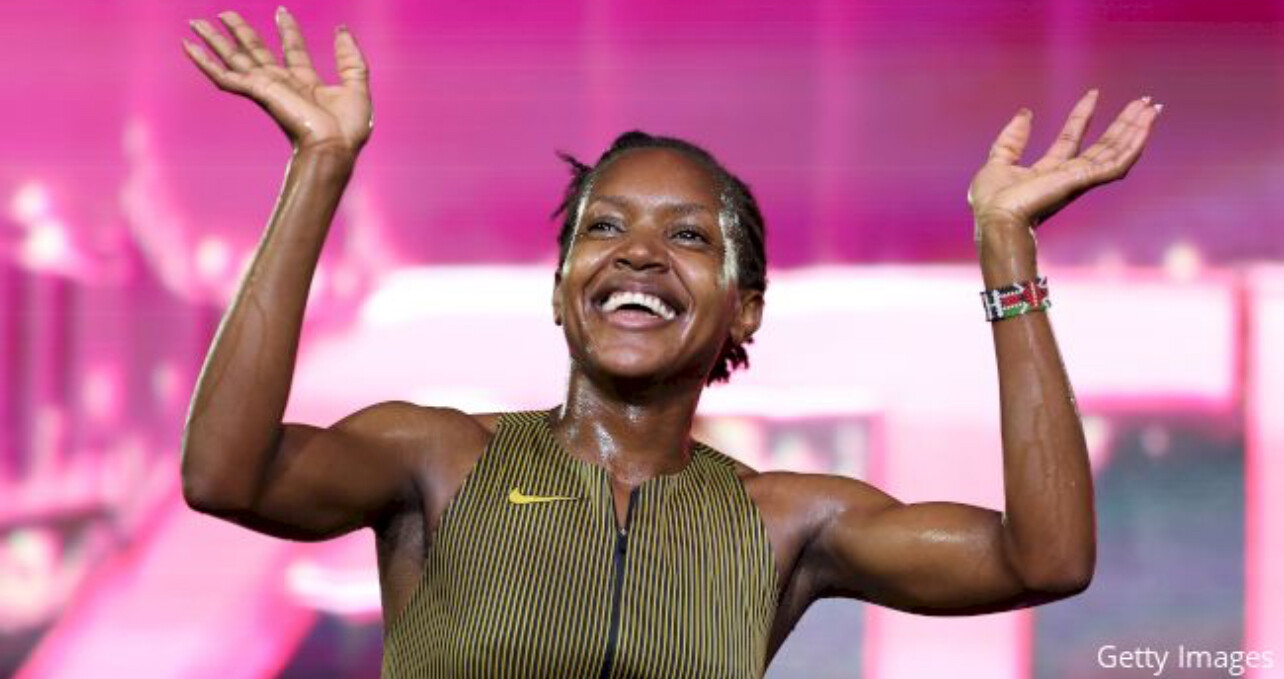
• Timothy Cheruiyot (Li Kenya) – Former world champion
• Jake Wightman (Great Britain) – 2022 world champion
• Grant Fisher (USA) – Olympic bronze medalist in both the 5000m and 10,000m
• Plus rising stars including Oliver Hoare, Neil Gourley, Azeddine Habz, Hobbs Kessler, Niels Laros, Cameron Myers, Stefan Nillessen, and Reynold Cheruiyot
In the men’s 400m hurdles, Olympic silver medalist Rai Benjamin will headline a competitive field that also includes CJ Allen, Trevor Bassitt, Clement Ducos, Malik James-King, Abderrahman Samba, and Assinie Wilson.
The 2025 Prefontaine Classic will feature 14 Diamond League disciplines, including the women’s 800m, 5000m, and 3000m steeplechase—each with world-class fields expected to be announced soon.
As the sport celebrates this milestone edition of the Pre Classic, the meet is shaping up to be not just a tune-up for global championships, but a showcase of track and field at its absolute best.
by Boris Baron
Login to leave a comment
Steve Prefontaine’s Final Race: A Victory Etched in History
On May 30, 1975, under the golden light of an Oregon evening, Steve Prefontaine ran what would become the final race of his life. The setting was Hayward Field in Eugene, Oregon—his home track and the spiritual center of American distance running.
In the 5,000 meters that evening, Pre surged past Olympic champion Frank Shorter in the final laps, delivering a trademark gutsy performance. He crossed the finish line first in 13:25, cheered on by a passionate home crowd. It was a classic Prefontaine finish: fearless, front-running, and fiercely competitive.
Tragically, just hours later, Prefontaine died in a car crash driving his MGB, ending the life and career of one of America’s most iconic runners at just 24 years old.
This powerful image—captured by Sports Illustrated—shows Pre in command, moments before his final victory. It remains a poignant reminder of the passion he brought to the sport and the legacy he left behind.
Special thanks to Eric Giacoletto for remembering and sharing this historic moment.
by Boris Baron
Login to leave a comment
Bodey Lutes Breaks Prefontaine’s 800m Record at Marshfield High
A new chapter has been written in the storied history of Marshfield High School’s track program. On May 2, senior Bodey Lutes broke the school’s 800-meter record with a time of 1:53.00, surpassing a mark set by none other than running legend Steve Prefontaine, who held the previous record of 1:53.8 for over 50 years.
Lutes’ performance came on the Pirates’ home track in Coos Bay, Oregon—just miles from where Prefontaine’s legacy began. Social media lit up with praise for the standout senior, with fans calling the effort “an incredible accomplishment” and some suggesting he now deserves a mural of his own—alongside the iconic image of Pre that already adorns school walls.
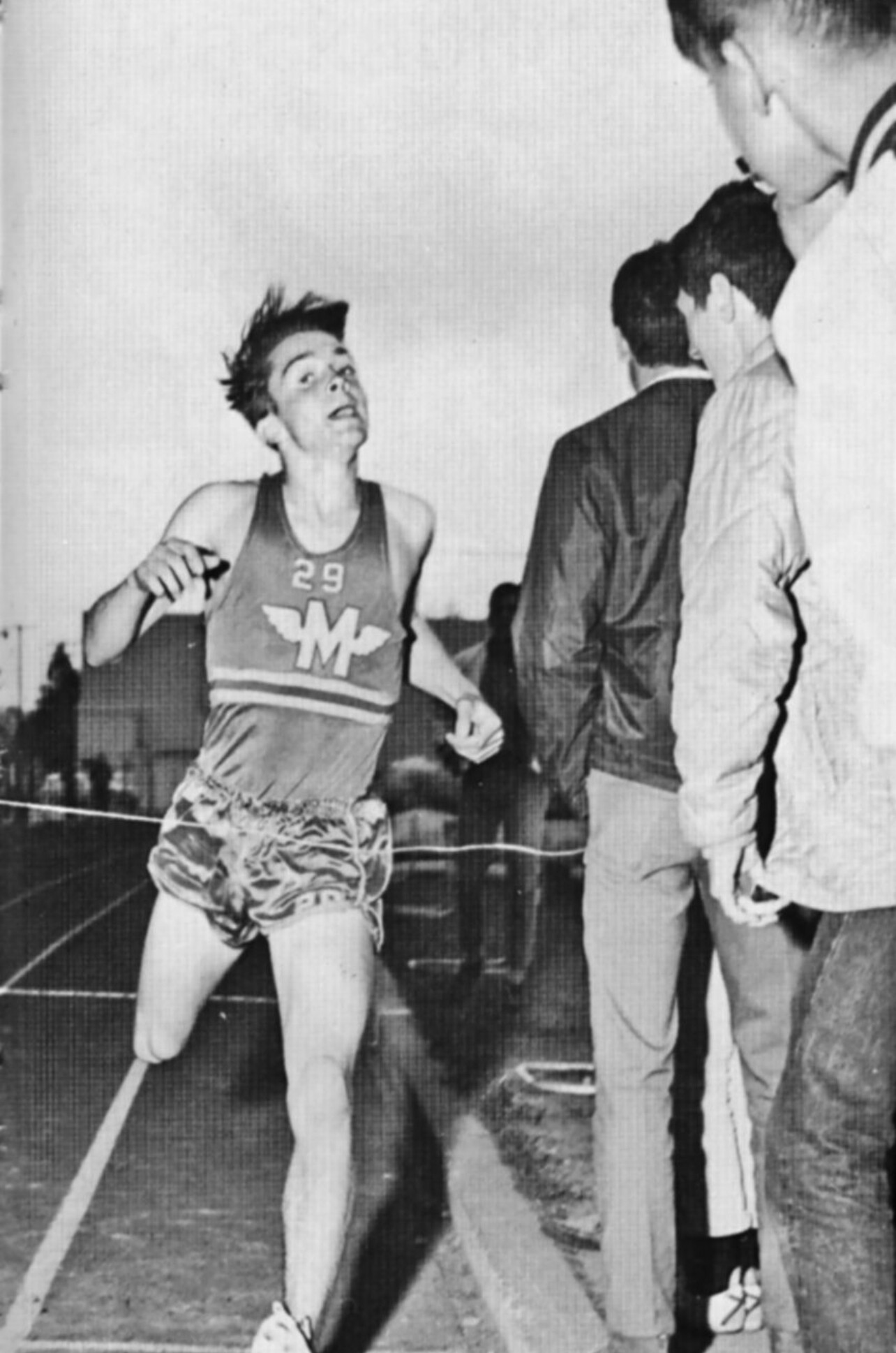
Prefontaine, who graduated in 1969, went on to become one of America’s most celebrated distance runners, holding numerous American records and captivating the world with his fearless front-running style. For Lutes to break one of his school records is not just a personal triumph—it’s a moment that links past and present in Oregon’s rich running tradition.
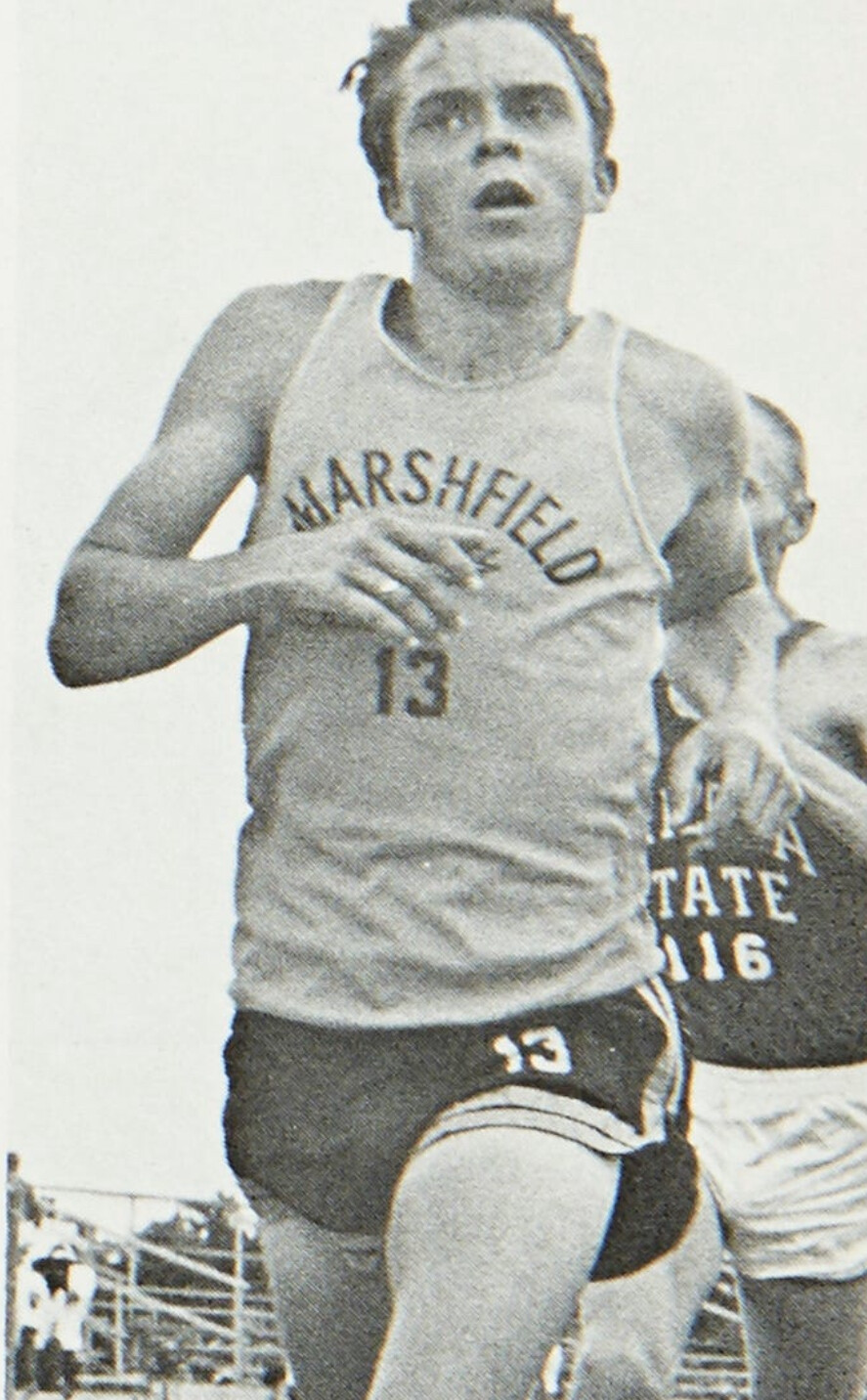
“It’s an honor just to be mentioned alongside Prefontaine,” Lutes said. “He paved the way for so many runners, and to be part of that story now means everything.”
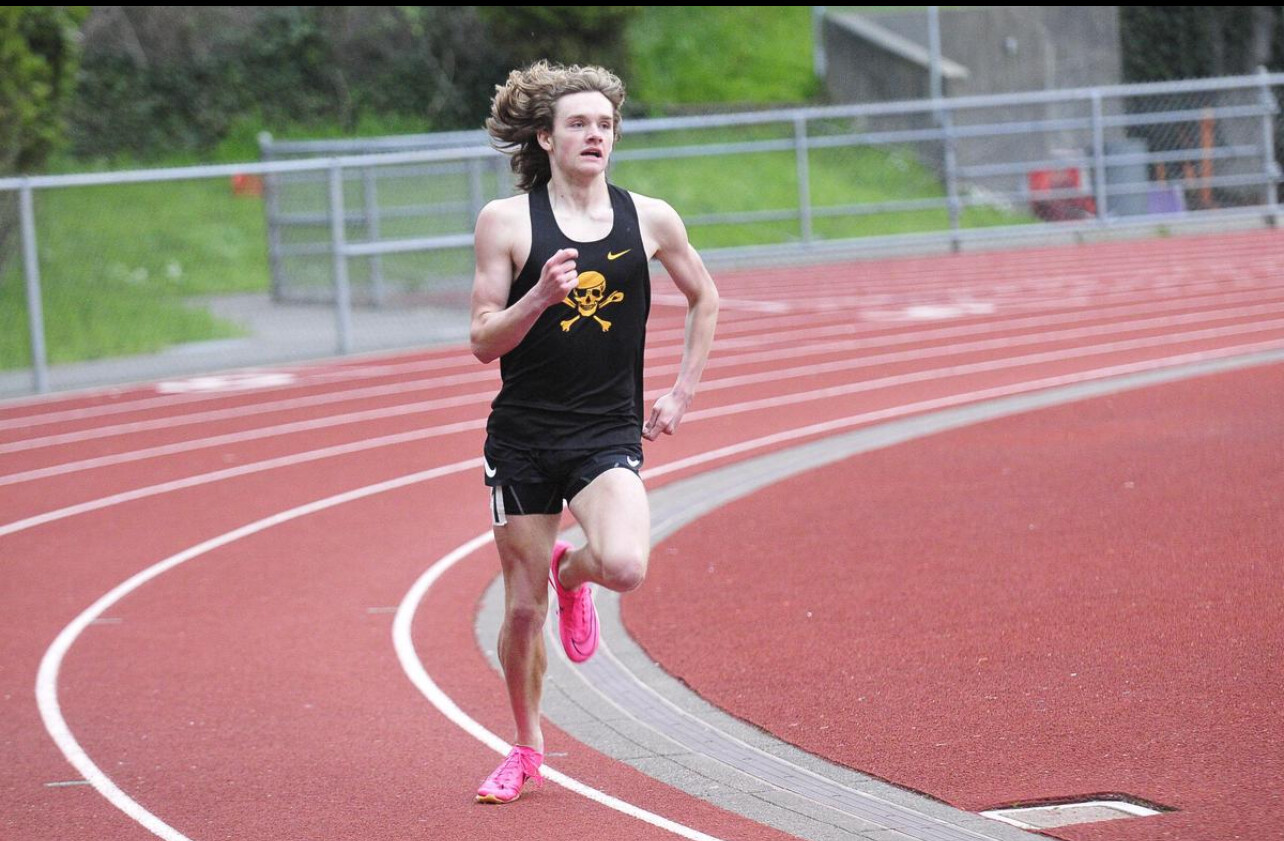
As Bodey Lutes prepares for state championships and a future that likely includes collegiate competition, his name is now forever etched in Marshfield history—right next to one of the greatest names in the sport.
by Boris Baron
Login to leave a comment
Showdowns Set to Define 2025 Diamond League Season with over 9 million in prize money
With the season opener just days away, rivalries from 800m to 10,000m are heating up on the Road to Zurich
The 2025 Wanda Diamond League kicks off on April 26 in Xiamen, China, launching a new season of high-stakes track and field action. For the world’s best middle- and long-distance runners, this marks the beginning of the Road to the Final—a journey that will culminate in Zurich on August 27–28.
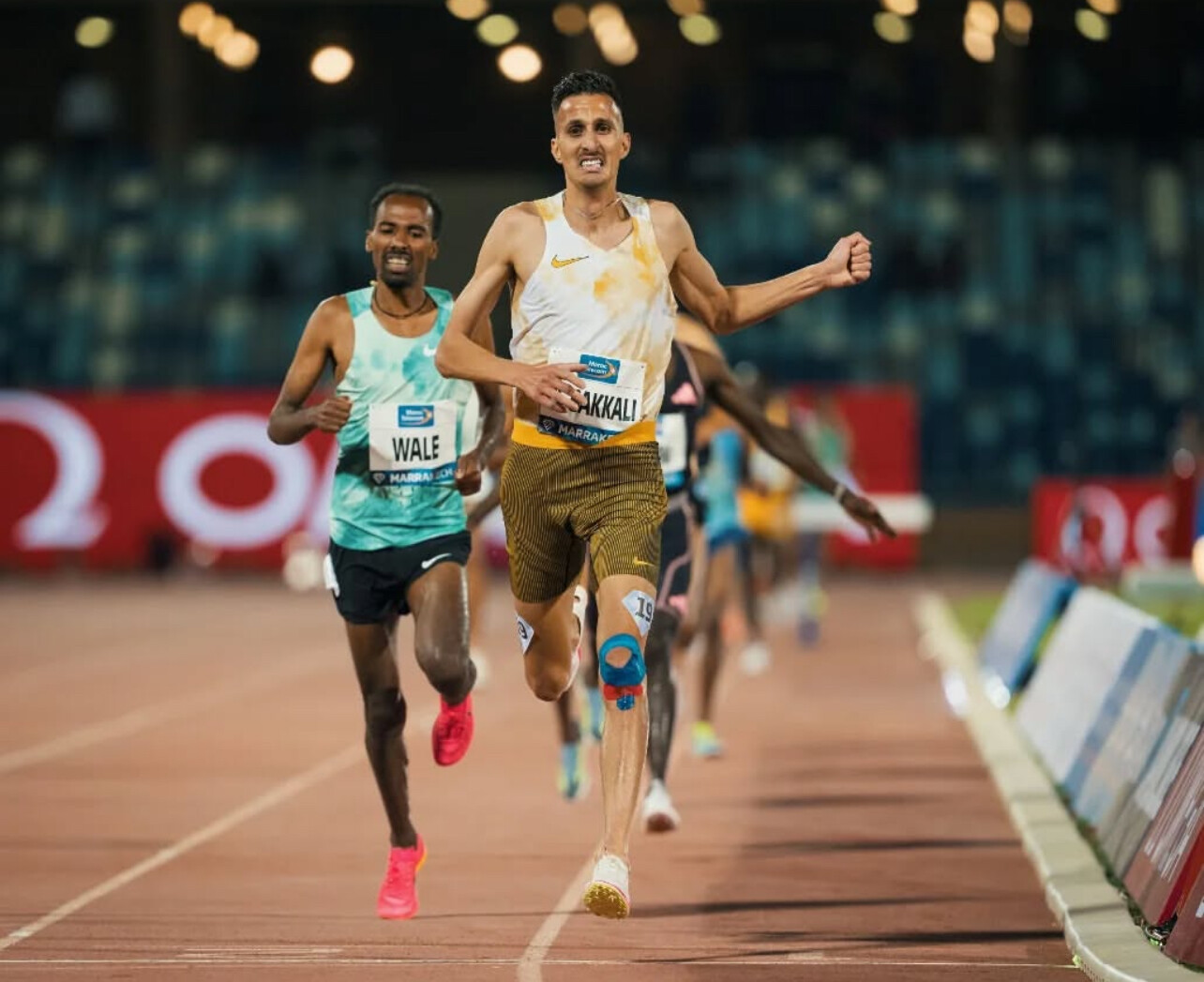
And if the early headlines are any indication, the upcoming season will be nothing short of electric.
Ingebrigtsen vs. Kerr: A Rivalry Rekindled
One of the fiercest rivalries in the sport will light up the men’s 1500m once again as Jakob Ingebrigtsen and Josh Kerr go head-to-head at the London Diamond League on July 19.
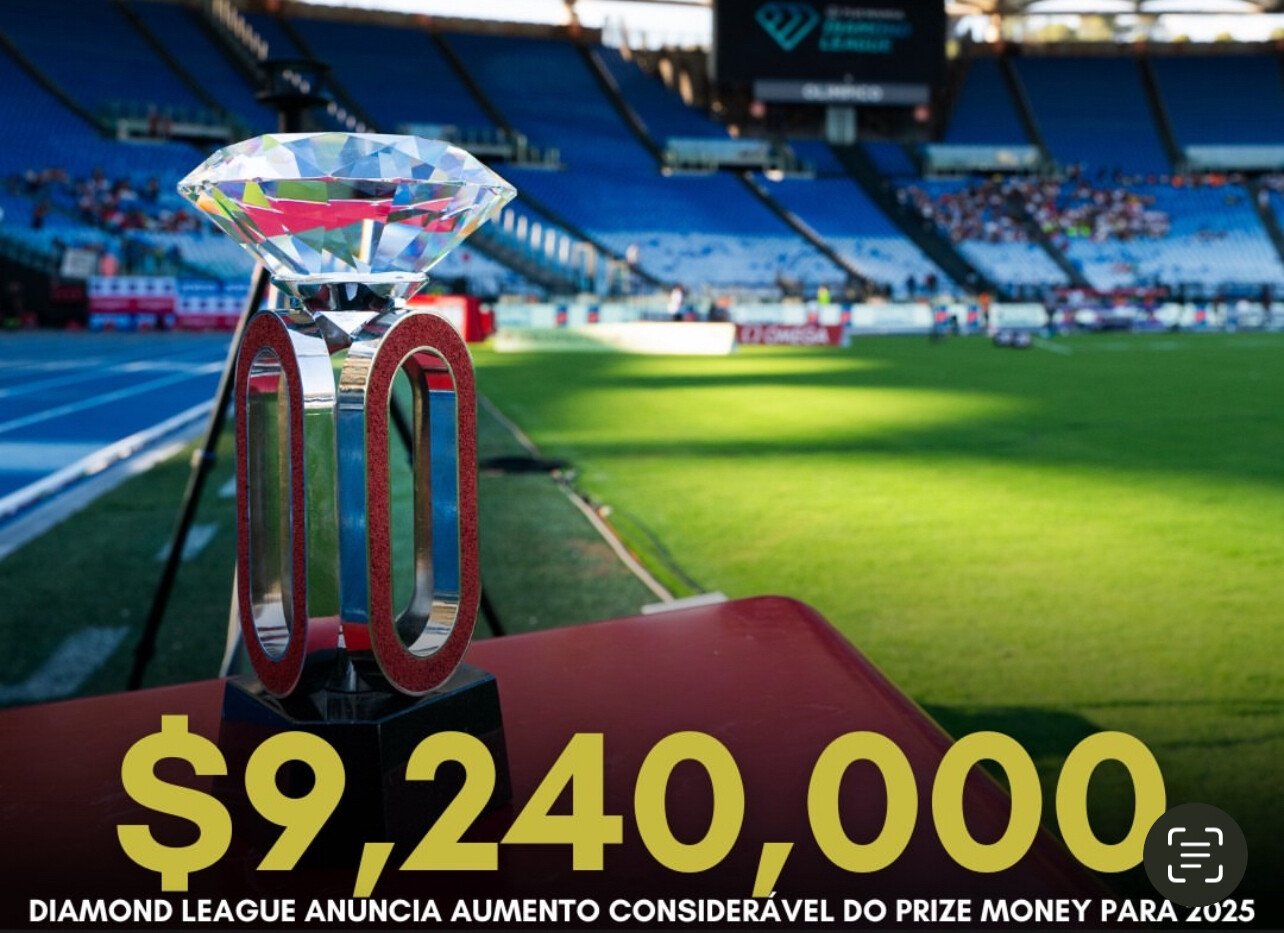
Their tension has been simmering since Kerr stunned Ingebrigtsen to win the world title in Budapest in 2023. The Norwegian responded with a strong victory in Zurich, but the scoreboard is far from settled.
Ingebrigtsen, now chasing his fifth career Diamond League title, will also line up against Olympic medalists Yared Nuguse and Cole Hocker in the Bowerman Mile at the Prefontaine Classic in Eugene on July 5, setting up another world-class clash.
Doha’s Steeplechase Rematch
The women’s 3000m steeplechase promises a rematch of Olympic proportions in Doha, where Winfred Yavi will face off against fellow medalists Peruth Chemutai and Faith Cherotich.
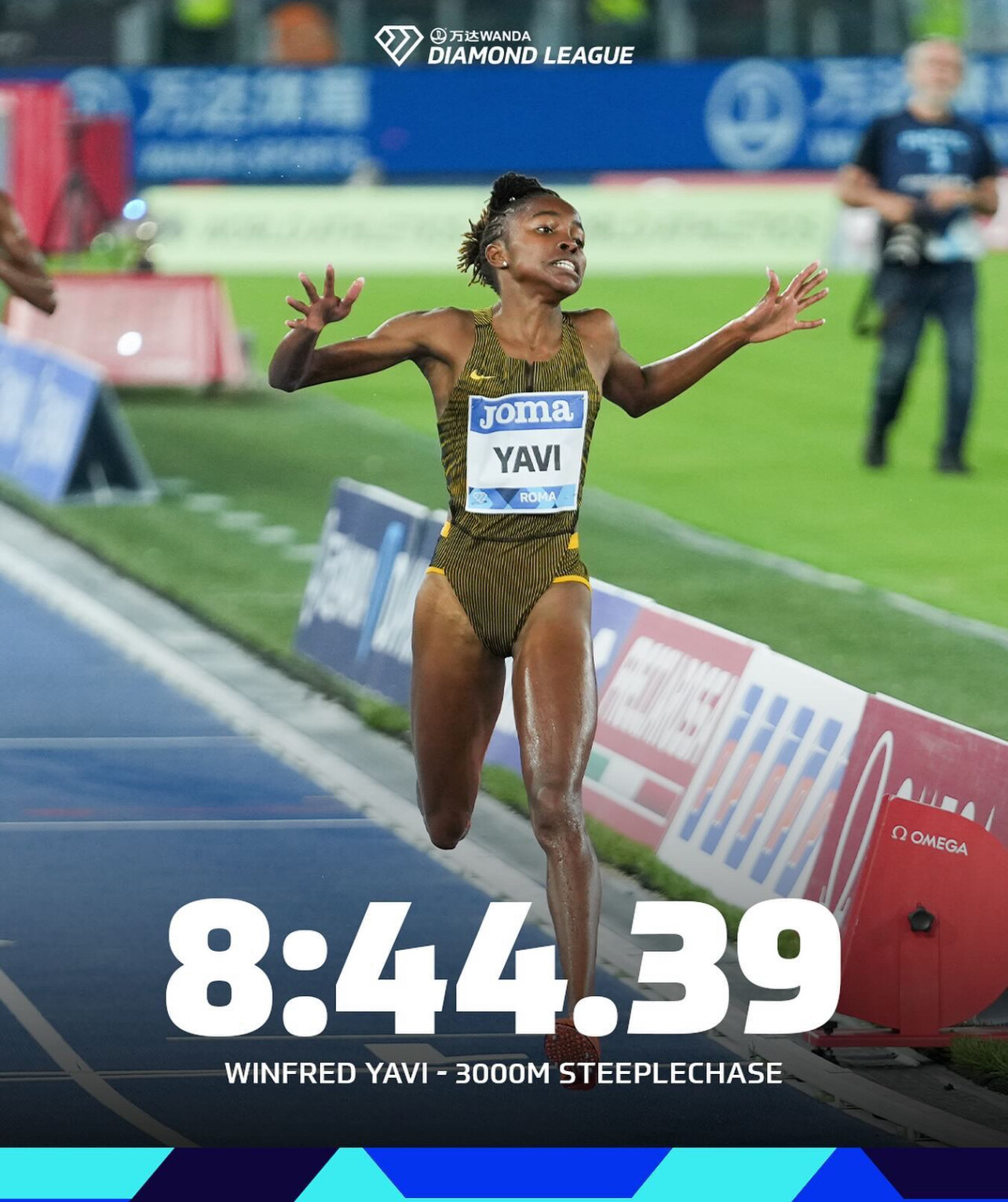
Yavi, the reigning Olympic champion, came within a whisker of the world record in Rome last season, while Cherotich enters 2025 as the Diamond League titleholder. Their early-season clash in Qatar could set the tone for one of the most compelling storylines in women’s distance running.
Eyes on Rome: A Distance-Lover’s Dream
The Pietro Mennea Golden Gala in Rome on June 6 is already shaping up to be one of the key middle- and long-distance showpieces of the year.
While final entries are still being confirmed, the women’s 800m is expected to feature a powerhouse lineup, potentially including Keely Hodgkinson, Athing Mu, and Mary Moraa. On the men’s side, stars like Emmanuel Wanyonyi, Marco Arop, and Djamel Sedjati are expected to battle for points in a crowded field of Olympic contenders.
Rome, known for producing fast times and historic finishes, could once again deliver career-defining performances.
2025: A Season Built for Distance Drama
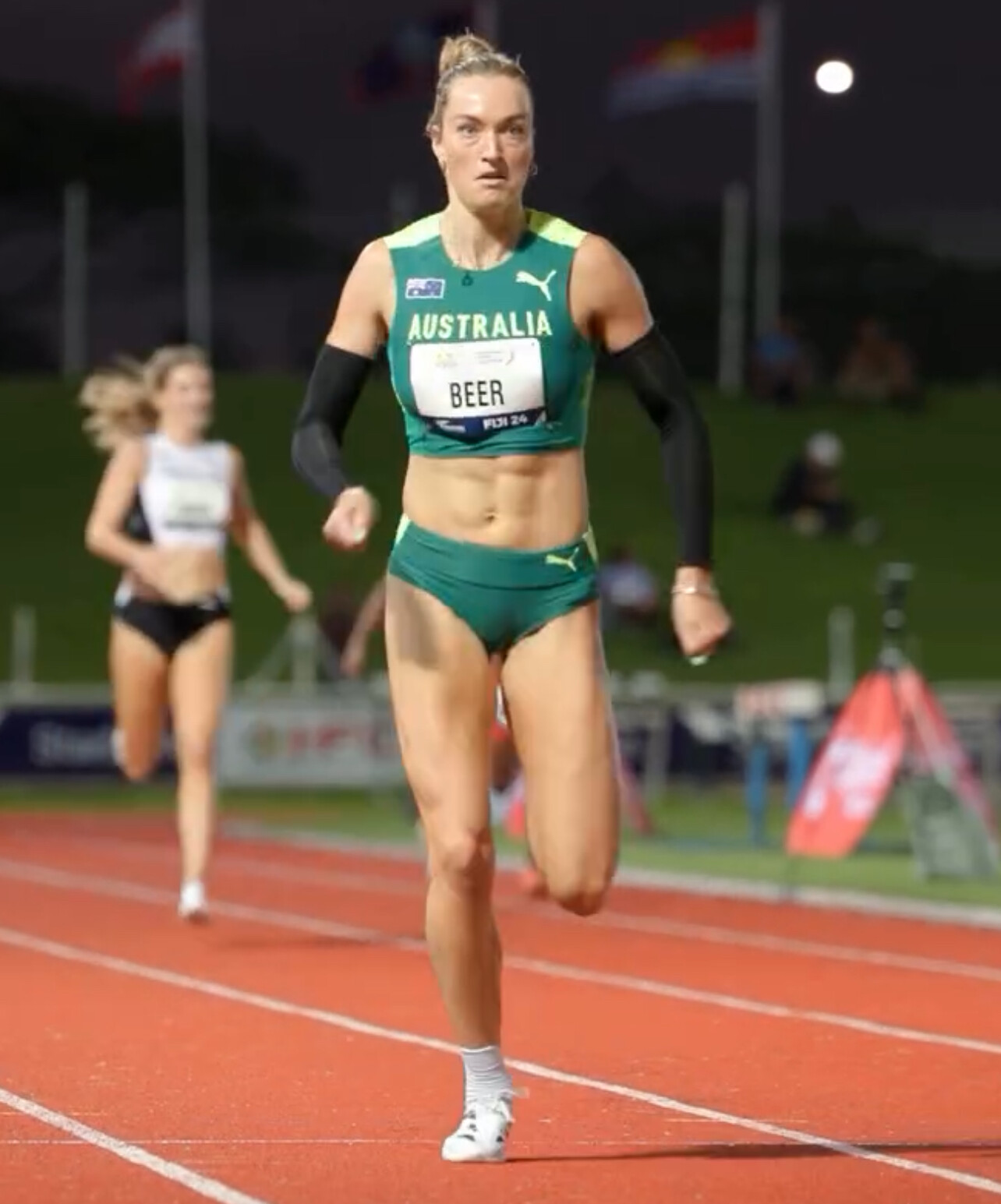
The Wanda Diamond League includes 14 series meets across four continents, leading to the two-day Final in Zurich, where only the top point-earners will compete for the Diamond Trophy. With increased prize money—ranging from $30,000 to $50,000 per discipline at series meetings and $60,000 to $100,000 at the Final—and millions watching worldwide, every race matters.
2025 is already shaping up to be a banner year for middle- and long-distance running. With fierce rivalries, Olympic-level fields, and rising stars chasing career breakthroughs in the 800m, 1500m, mile, steeplechase, 5000m, and 10,000m, the stage is set for one of the most thrilling Diamond League seasons yet.
by Boris Baron
Login to leave a comment
Cole Hocker Is Just Getting Started
Cole Hocker’s rise from NCAA standout to Olympic champion has been anything but conventional. After winning gold in the 1500 meters at the 2024 Paris Olympics with a stunning 3:27.65—an Olympic record—Hocker has emerged as one of the most formidable middle-distance runners in the world.
Training in the Shadows
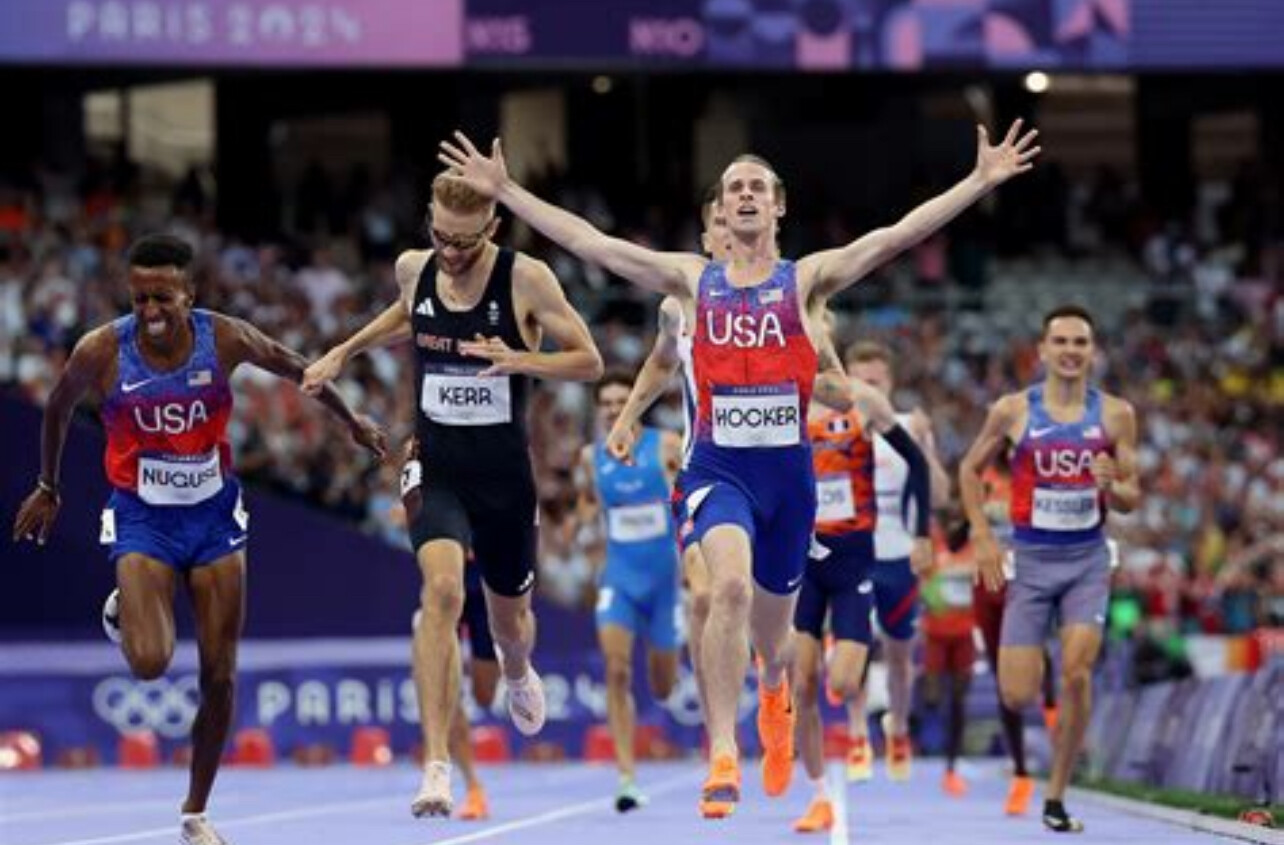
While many elite runners chase the spotlight, Hocker has chosen a different path. He trains in the quiet town of Blacksburg, Virginia, under the guidance of longtime coach Ben Thomas. Alongside training partner Cooper Teare, Hocker focuses on a regimen that emphasizes quality over quantity, rarely exceeding 80 miles per week. Their workouts often include hill repeats, pace variability, and strategic rest days, fostering both physical endurance and mental resilience.
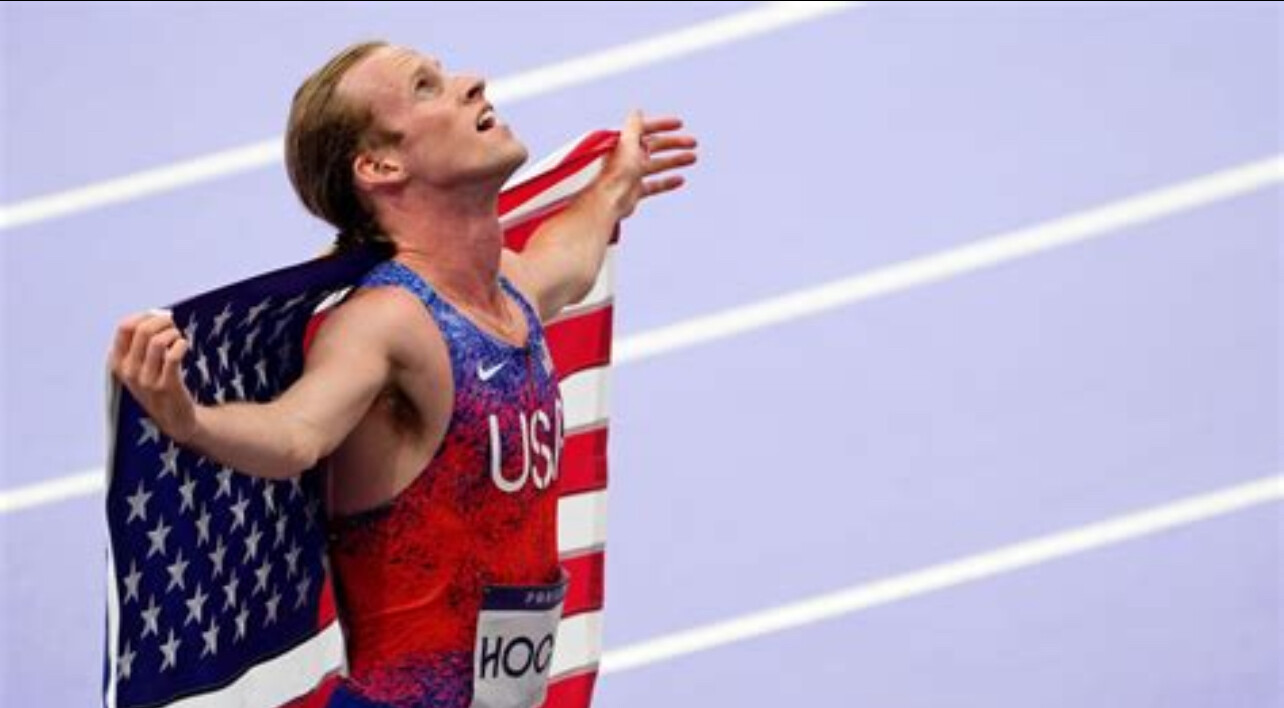
Expanding His Range
Hocker isn’t content with dominating just the 1500 meters. In 2025, he has set his sights on longer distances, competing in the 3000 meters at the Millrose Games and clocking a personal best of 7:23.14, making him the second-fastest American ever at that distance. He also achieved a 5000-meter personal best of 12:57.82 at the BU Terrier DMR Challenge, securing the world standard for the upcoming World Championships.
Upcoming Showdowns
Hocker’s competitive spirit will be on full display at the 2025 Prefontaine Classic’s Bowerman Mile, where he will face off against rivals Jakob Ingebrigtsen and Yared Nuguse. This race promises to be a thrilling encounter among some of the world’s best middle-distance runners.
A Relentless Competitor
What sets Hocker apart isn’t just his physical prowess but his mental tenacity. Despite setbacks and fierce competition, he maintains an unwavering belief in his abilities. As he continues to push the boundaries of his sport, Hocker remains a testament to the power of determination and strategic training.
by Boris Baron
Login to leave a comment
Ingebrigtsen Ready to Battle Hocker and Kerr on Their Home Turf—All Roads Lead to Tokyo
Jakob Ingebrigtsen is preparing for two of the most anticipated races of the 2025 Diamond League season—each taking place on the home turf of his fiercest rivals.
The double world indoor champion is set to headline the Bowerman Mile at the Prefontaine Classic in Eugene on July 5, where he’ll take on U.S. Olympic gold medalist Cole Hocker and American 1500m record-holder Yared Nuguse. Then, on July 19, he travels to London for a highly anticipated 1500m duel against Great Britain’s world champion Josh Kerr—who will be racing in front of a home crowd.
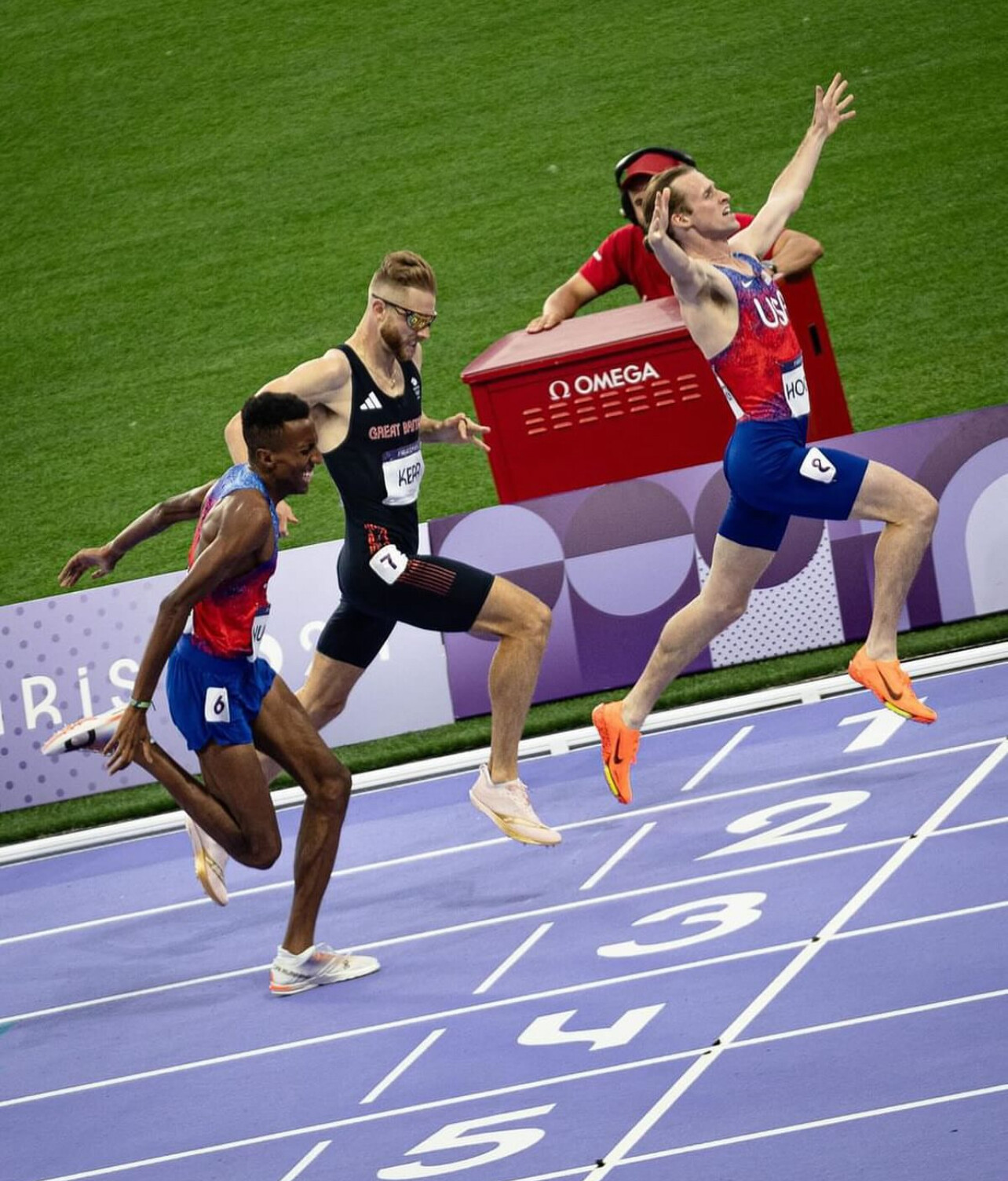
Ingebrigtsen, last season’s Diamond League overall champion, is no stranger to success at Hayward Field. At the 2023 Diamond League Final, he delivered a blazing 3:43.73 in the Bowerman Mile—setting both a European and Diamond League record. But this year, the challenge is steeper. Both Hocker and Nuguse outkicked him in the 1500m final at the 2024 Paris Olympics, and they’ll be looking to repeat that feat on home soil.

And in London, the rivalry with Kerr will reignite. The Brit also finished ahead of Ingebrigtsen in Paris, and the 1500m clash in front of a UK crowd will be packed with tension and stakes.

“I’ve recovered well from the indoors and training is going well,” said Ingebrigtsen, who claimed double gold in the 1500m and 3000m at both the World and European Indoor Championships this spring. Earlier this season, he also broke the world indoor records for the mile and 1500m in Lievin.
“I’ve never been afraid to show up, and it felt good to come away from indoors with four gold medals. My focus now is on the summer—and on returning to Tokyo, where I won Olympic gold in 2021, to win another global title.”
That return to Tokyo refers to the 2025 World Athletics Championships, where Ingebrigtsen hopes to reaffirm his dominance on the global stage after back-to-back Olympic defeats.
My Best Runs founder and lifetime runner Bob Anderson shared his thoughts on the coming matchups.
“I’m so impressed by the spirit Jakob Ingebrigtsen brings to our sport,” Anderson said. “His confidence is electric—he’s a showman, and often has most of the field beaten at the starting line. But Josh Kerr and Cole Hocker aren’t backing down. They have their own vision of who will cross the line first. That’s what makes these showdowns so compelling.”
by Boris Baron
Login to leave a comment
Who Had the Best Era in Track & Field? A Generational Showdown
Track and field has long been the stage for some of the most electrifying athletic performances in history. Each generation has produced legends who have redefined what is possible in sprinting, distance running, and field events. But which era stands above the rest?
From the Silent Generation pioneers to the Gen Z record-breakers, every period has contributed to the evolution of the sport. Let’s break down each era’s greatest stars and their lasting impact on track and field.
Gen Z (Born 1997 - 2012): The Future of Track & Field
The newest generation of elite athletes is already making waves on the world stage. With the benefit of cutting-edge training, nutrition, and recovery techniques, these young stars are smashing records at a rapid pace.
Notable Sprinters & Field Athletes:
• Sydney McLaughlin-Levrone (USA) – 400m hurdles world record holder and Olympic champion
• Mondo Duplantis (Sweden) – Pole vault world record holder
• Erriyon Knighton (USA) – One of the fastest teenagers ever in the 200m
Notable Distance Runners:
• Jakob Ingebrigtsen (Norway) – Olympic 1500m champion, European mile record holder
• Joshua Cheptegei (Uganda) – 5000m and 10,000m world record holder
• Jacob Kiplimo (Uganda) – Half marathon world record holder (57:31)
• Gudaf Tsegay (Ethiopia) – World champion in the 1500m, dominant in middle distances
Gen Z athletes are not only breaking records but also shaping the future of the sport through their influence on social media and global visibility. With their combination of speed, endurance, and access to modern sports science, they may soon surpass all who came before them.
Defining Traits: Explosive, record-breaking, tech-savvy
Millennials (Born 1981 - 1996): The Superstars of the Modern Era
No discussion of dominant track and field generations is complete without mentioning Usain Bolt. The Jamaican sprinting legend captured the world’s attention with his charisma and untouchable world records.
Notable Sprinters:
• Usain Bolt (Jamaica) – Fastest man in history (100m: 9.58, 200m: 19.19)
• Allyson Felix (USA) – Most decorated female Olympian in track history
• Shelly-Ann Fraser-Pryce (Jamaica) – One of the most dominant sprinters of all time
Notable Distance Runners:
• Eliud Kipchoge (Kenya) – The greatest marathoner of all time, first to break two hours in a marathon
• Mo Farah (UK) – Dominated the 5000m and 10,000m at two Olympic Games
• Genzebe Dibaba (Ethiopia) – 1500m world record holder
• Ruth Chepngetich (Kenya) – First woman to break the 2:10 barrier in the marathon, setting a world record of 2:09:56 at the 2024 Chicago Marathon
Millennials excelled across all track and field disciplines. They ushered in an era of professional distance running dominance, with African runners setting standards in middle and long distances. Meanwhile, Kipchoge’s sub-2-hour marathon attempt was a historic milestone in human endurance.
Defining Traits: Charismatic, dominant, endurance revolutionaries
Gen X (Born 1965 - 1980): The Tough and Versatile Competitors
Gen X athletes were the bridge between the amateur days of track and the fully professional era. They pushed the sport forward with fierce rivalries and new records, while also seeing the globalization of track and field.
Notable Sprinters:
• Maurice Greene (USA) – Former world record holder in the 100m (9.79)
• Marion Jones (USA) – One of the most dominant sprinters of the late ‘90s
Notable Distance Runners:
• Haile Gebrselassie (Ethiopia) – Olympic and world champion, former marathon world record holder
• Paul Tergat (Kenya) – Pioneered marathon running dominance for Kenya
• Tegla Loroupe (Kenya) – First African woman to hold the marathon world record
This era marked a golden age for distance running, with Gebrselassie and Tergat setting the stage for the marathon revolution that would come in the next generation. With increased sponsorships, the road racing circuit became more competitive, and Kenyan and Ethiopian dominance solidified.
Defining Traits: Tough, globalized, long-distance pioneers
Baby Boomers (Born 1946 - 1964): The Golden Age of Track & Field
The Baby Boomers took track and field into the modern Olympic era, producing some of the most iconic figures in the sport’s history.
Notable Sprinters:
• Carl Lewis (USA) – Nine-time Olympic gold medalist across sprints and long jump
• Florence Griffith-Joyner (USA) – 100m (10.49) and 200m (21.34) world record holder
Notable Distance Runners:
• Sebastian Coe (UK) – 800m and 1500m Olympic champion, middle-distance legend
• Steve Prefontaine (USA) – One of the most influential distance runners in history
• Miruts Yifter (Ethiopia) – 5000m and 10,000m Olympic champion
This era brought middle and long-distance running into the mainstream, with rivalries like Coe vs. Ovett and Prefontaine vs. the world captivating fans. The Baby Boomers were the first generation of professional-level training and saw athletes truly dedicated to their craft year-round.
Defining Traits: Bold, revolutionary, multi-talented
Silent Generation (Born 1928 - 1945): The Pioneers of Kenya’s Dominance
This generation laid the foundation for modern track and field, producing legends whose influence still resonates today.
Notable Distance Runners:
• Kip Keino (Kenya) – The pioneer of Kenya’s dominance in distance running, winning Olympic gold in the 1500m (1968) and 3000m steeplechase (1972)
• Emil Zátopek (Czechoslovakia) – Triple gold in 5000m, 10,000m, and marathon at the 1952 Helsinki Olympics
• Paavo Nurmi (Finland) – Nine-time Olympic gold medalist in long-distance events
Kip Keino’s triumph over Jim Ryun in the 1500m final at the 1968 Mexico City Olympics is considered one of the greatest upsets in Olympic history. Competing at high altitude, Keino used a fast early pace to break Ryun, ushering in an era of Kenyan middle-distance dominance that continues today.
Defining Traits: Groundbreaking, resilient, visionary
Which Generation Had the Greatest Impact?
Each generation of track and field athletes has contributed to the sport’s evolution in unique ways:
• Millennials brought global superstardom (Bolt, Felix, Fraser-Pryce, Kipchoge, Chepngetich)
• Gen X athletes were fierce competitors in a rapidly changing sport (Greene, Gebrselassie, Tergat)
• The Baby Boomers set records that still stand today (Carl Lewis, Flo Jo, Coe, Prefontaine)
• The Silent Generation laid the foundation for modern track and field (Owens, Zátopek, Kip Keino)
• Gen Z is already breaking records and shaping the future of the sport (McLaughlin-Levrone, Ingebrigtsen, Cheptegei)
While it’s hard to declare one era the best, one thing is certain: the sport of track and field continues to evolve, with each generation pushing the limits of human performance.
Which generation do you think is the greatest? Let us know in the comments!
by Boris Baron
Login to leave a comment
The Evolution of the High School Sub-4 Mile Club
On May 6, 1954, Roger Bannister made history by running the first sub-4-minute mile, clocking 3:59.4 in Oxford, England. His groundbreaking achievement redefined what was possible in middle-distance running, inspiring generations of athletes to chase the elusive mark.
For decades, breaking the 4-minute barrier remained an extraordinary feat, but in recent years, more high school runners in the United States have joined this exclusive club. As of February 2025, 23 American high school boys have accomplished this milestone, with notable additions in 2024 and 2025.
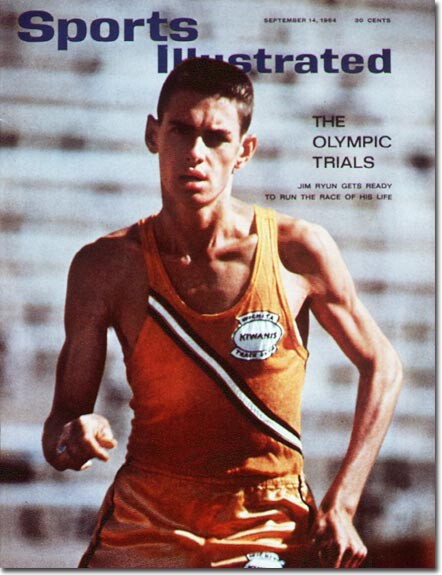
The Latest High School Runners to Break Four Minutes
The most recent athletes to achieve the sub-4-minute mile in high school competition are:
- Drew Griffith – 3:57.72 (May 30, 2024, Festival of Miles, St. Louis, Missouri)
- JoJo Jourdon – 3:59.87 (February 3, 2024, New Balance Indoor Grand Prix, Boston, Massachusetts)
- Zachary Hillhouse – 3:59.62 (June 16, 2024, New Balance Nationals Outdoor, Philadelphia, Pennsylvania)
- Owen Powell – 3:57.74 (February 15, 2025, UW Husky Classic, Seattle, Washington)
These runners continue to prove that the sub-4-minute mile, once thought to be nearly impossible for young athletes, is an achievable milestone with the right combination of talent, training, and opportunity.
Jim Ryun and Alan Webb: The Legends of the High School Mile
Jim Ryun: A Historic Career
Jim Ryun was the first high school runner to break the 4-minute mile, running 3:59.0 in 1964 as a junior. He later set the national high school record of 3:55.3 in 1965, a time that stood for 36 years.
After his historic high school career, Ryun went on to break the world record in the mile twice—first in 1966, and then again in 1967 when he ran 3:51.1. At 19 years old, he remains the youngest world record holder in the mile to date. His record stood for nine years before being broken in 1975.
Ryun represented the United States in three Olympic Games (1964, 1968, and 1972), winning a silver medal in the men’s 1500m at the 1968 Olympics. His dominance in middle-distance running made him one of the greatest milers in history.
Alan Webb: The New Generation's Record-Breaker
In 2001, Alan Webb broke Ryun’s long-standing high school mile record by running 3:53.43 at the Prefontaine Classic. Webb’s performance redefined expectations for young milers and set a new benchmark for high school runners.
Webb continued his success post-high school and later set the American record in the mile, running 3:46.91 in 2007. This remains one of the fastest mile performances ever by an American.
Despite his success, Webb’s professional career was marked by injuries, including Achilles tendonitis and stress fractures, which affected his consistency. However, his high school and professional achievements cemented his place as one of the greatest milers in U.S. history.
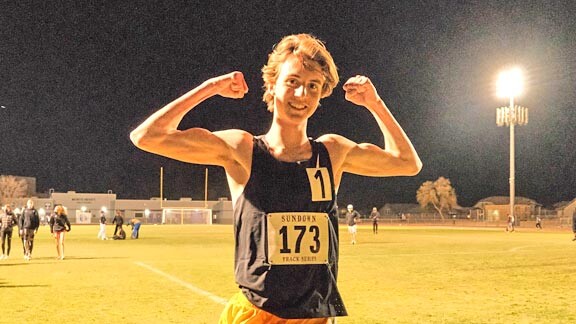
The Complete List of High School Sub-4 Milers
Below is the full list of American high school runners who have broken the 4-minute mile, ranked by their fastest time achieved during high school competition:
- Alan Webb (first photo) – 3:53.43 (May 27, 2001, Prefontaine Classic, Eugene, Oregon)
- Jim Ryun (second photo) – 3:55.3 (June 27, 1965, AAU Championships, San Diego, California)
- Colin Sahlman (third photo) – 3:56.24 (May 28, 2022, Prefontaine Classic, Eugene, Oregon)
- Drew Griffith – 3:57.72 (May 30, 2024, Festival of Miles, St. Louis, Missouri)
- Hobbs Kessler – 3:57.66 (February 7, 2021, American Track League Invitational, Fayetteville, Arkansas)
- Drew Hunter – 3:57.81 (February 20, 2016, NYRR Millrose Games, New York City, New York)
- Gary Martin – 3:57.89 (June 2, 2022, Festival of Miles, St. Louis, Missouri)
- Connor Burns – 3:58.83 (June 2, 2022, Festival of Miles, St. Louis, Missouri)
- Tim Danielson – 3:59.4 (June 11, 1966, San Diego Invitational, San Diego, California)
- Reed Brown – 3:59.30 (June 1, 2017, Festival of Miles, St. Louis, Missouri)
- Matthew Maton – 3:59.38 (May 8, 2015, Oregon Twilight Meet, Eugene, Oregon)
- Grant Fisher – 3:59.38 (June 4, 2015, Festival of Miles, St. Louis, Missouri)
- Michael Slagowski – 3:59.53 (April 29, 2016, Jesuit Twilight Invitational, Portland, Oregon)
- Leo Daschbach – 3:59.54 (May 23, 2020, The Quarantine Clasico, El Dorado Hills, California)
- Simeon Birnbaum – 3:57.53 (June 1, 2023, Festival of Miles, St. Louis, Missouri)
- Rheinhardt Harrison – 3:59.33 (June 3, 2022, Golden South Series #2, Tarpon Springs, Florida)
- Marty Liquori – 3:59.8 (June 23, 1967, AAU Championships, Bakersfield, California)
- Lukas Verzbicas – 3:59.71 (June 11, 2011, Adidas Grand Prix, New York City, New York)
- JoJo Jourdon – 3:59.87 (February 3, 2024, New Balance Indoor Grand Prix, Boston, Massachusetts)
- Zachary Hillhouse – 3:59.62 (June 16, 2024, New Balance Nationals Outdoor, Philadelphia, Pennsylvania)
- Owen Powell – 3:57.74 (February 15, 2025, UW Husky Classic, Seattle, Washington)
- Tinoda Matsatsa – 3:58.70 (June 1, 2023, Festival of Miles, St. Louis, Missouri)
- Jackson Heidesch – 3:59.08 (June 1, 2023, Festival of Miles, St. Louis, Missouri)
The Sub-4 Mile Remains an Iconic Benchmark
Roger Bannister’s 1954 breakthrough redefined human potential in distance running, and the high school sub-4-mile club continues to grow. As competition and knowledge improve, the question isn’t whether more young runners will join the club, but just how fast the next generation can go
Login to leave a comment
Celebrating Steve Prefontaine: A Legend Who Inspires Generations
January 25 marked what would have been Steve Prefontaine's 74th birthday. Though his life ended far too soon in 1975, his legacy of passion, resilience, and determination continues to burn brightly. Known not only for his remarkable achievements on the track but also for his unwavering spirit, Prefontaine embodied a relentless pursuit of excellence that transcended the world of running.
Pre as he was affectionately called, left an indelible mark not just on the sport of Track and Field but on the hearts of people from all walks of life. His drive to push limits and his commitment to living boldly have inspired countless individuals to dream bigger and strive harder in their own endeavors. Whether it was his gutsy performances in competition or his belief that effort defines success, Prefontaine's story continues to ignite passion and determination worldwide.
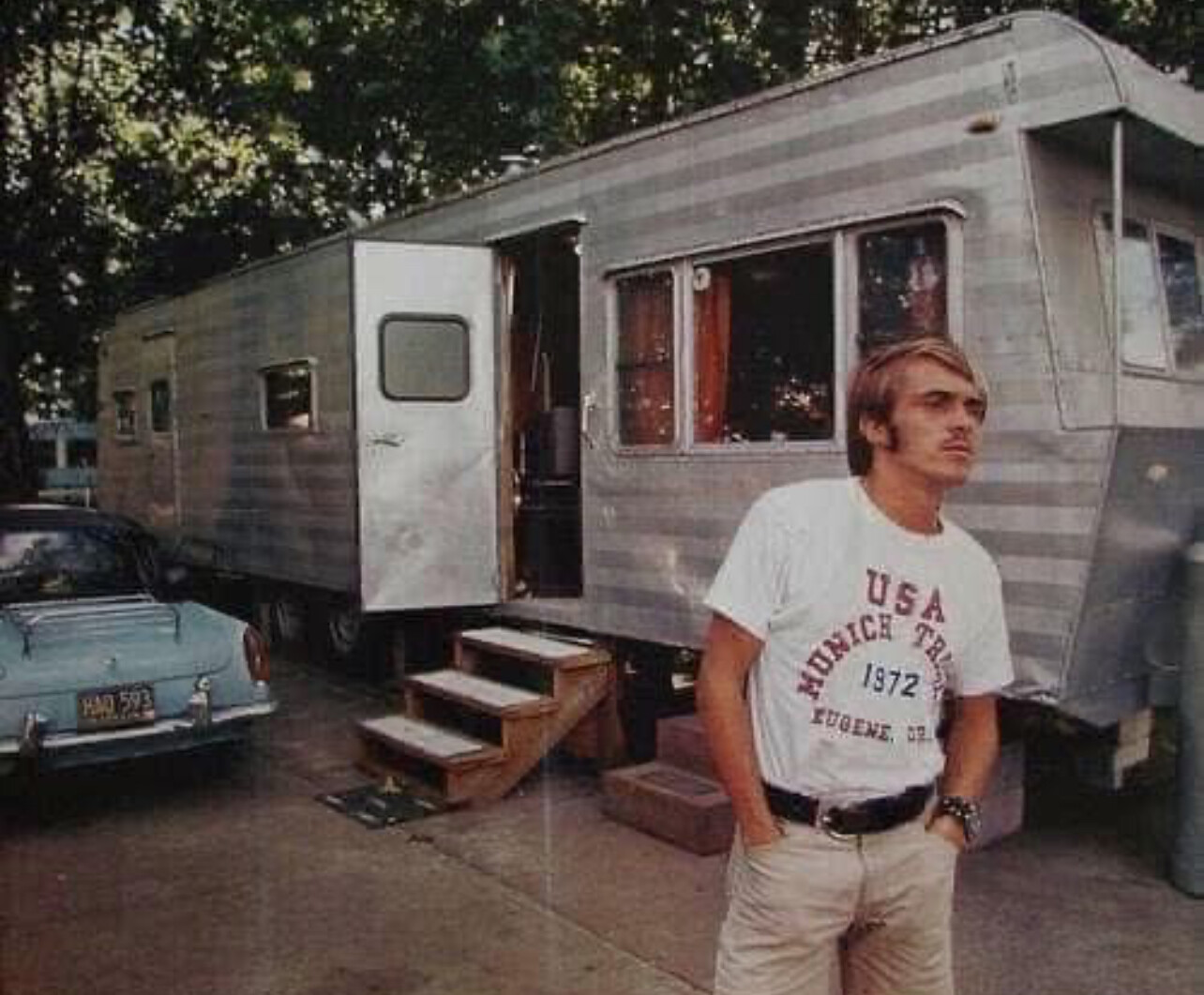
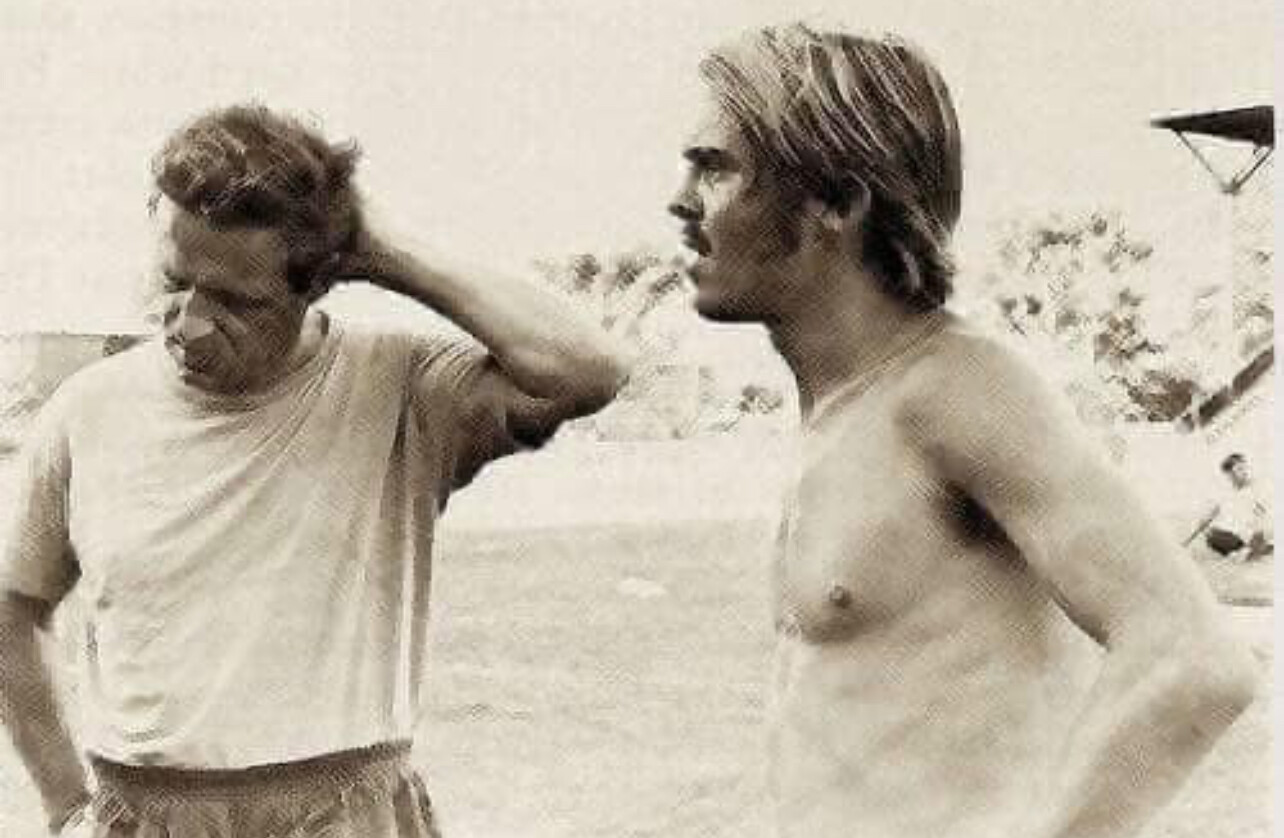
Though his earthly years were brief, Steve's influence reaches far beyond his time. His legend is a timeless reminder that greatness is achieved not just through talent but through an unyielding spirit and an uncompromising will to succeed.
Happy Birthday, Pre. Your legacy lives on. Go Pre!
by Boris Baron
Login to leave a comment
Record-breaker's diet: Beatrice Chebet reveals what she eats to fuel her to world records and gold medals
Double Olympics champion Beatrice Chebet is basking in the glory of yet another world record following her heroics in Barcelona but what does she eat to fuel her to success?
Beatrice Chebet is among the athletes who had a fantastic 2024 season when she won two Olympics titles and broke world records.
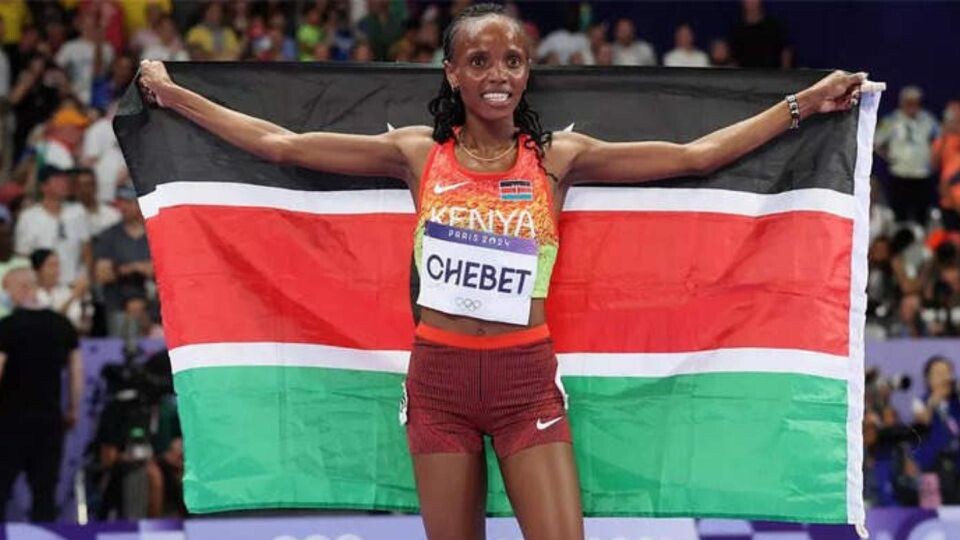
Chebet signed off the year in style as she smashed the 5km world record by running 13:54, to shave 19 seconds off the previous mark, at the Cursa dels Nassos in Barcelona on New Year’s eve.
It was a great way to end a year that was filled with so much success for her, having started by defending her World Cross Country title, before smashing the 10,000m world record at the Prefontaine Classic in May.
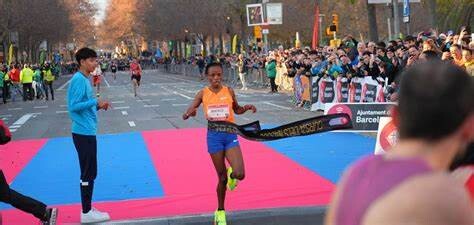
Chebet would then go on to win two Olympics gold medals in Paris, claiming the 5,000m and 10,000m titles before adding the Diamond League crown.
Having such a remarkable season needs good preparations and for Chebet what she eats matters a lot because it is what fuels her to success.
The 24-year-old keeps it simple when it comes to diet and sticks to Kenyan delicacies which have served her quite well going by her achievements on the track.
“I like ugali because it has energy and after training, I have to eat it,” Chebet told NTV just days before her record-breaking feat in Barcelona.
“I also love white meat and chapati is also my favourite. Milk is also good, mursik [fermented milk that is a staple for the Kalenjin community] is a good accompaniment for ugali.
“Generally, I eat everything as long as my body does not react to it because at the end of it, I do a lot of training.”
Like most of her Kenyan peers, Chebet sticks to what she knows and grew up eating, resisting the allure of trying out new things.
As she starts 2025, more glory is expected from her with the success of 2024 increasing pressure to do the same, or even better, this year especially at the World Championships in Tokyo, Japan in September.
by Joel Omotto
Login to leave a comment
The Distance Running Scene in 2024: A Year of Remarkable Achievements
The global distance running scene in 2024 was marked by incredible performances, new records, and innovative approaches to training and competition. From marathons in bustling city streets to ultramarathons through rugged terrains, the year showcased the resilience, determination, and evolution of athletes from all corners of the globe.
The World Marathon Majors—Tokyo, Boston, London, Berlin, Chicago, and New York—continued to be the centerpiece of elite distance running, each event contributing to a year of unprecedented performances and milestones.
Tokyo Marathon witnessed a remarkable performance by Kenya's Ruth Chepngetich, who set a new women's marathon world record with a time of 2:11:24. This achievement sparked discussions about the rapid advancements in women's long-distance running and the influence of technology in the sport.

In the Boston Marathon, Ethiopia's Amane Beriso delivered a dominant performance, winning in 2:18:01. On the men's side, Kenya's Evans Chebet defended his title, highlighting Boston's reputation for tactical racing over sheer speed.
London Marathon saw Ethiopia's Tamirat Tola take the men's crown, besting the field with a strong tactical race. Eliud Kipchoge, despite high expectations, did not claim victory, signaling the growing competitiveness at the top of men’s marathoning. On the women's side, Kenya's Peres Jepchirchir triumphed, adding another major victory to her impressive resume.
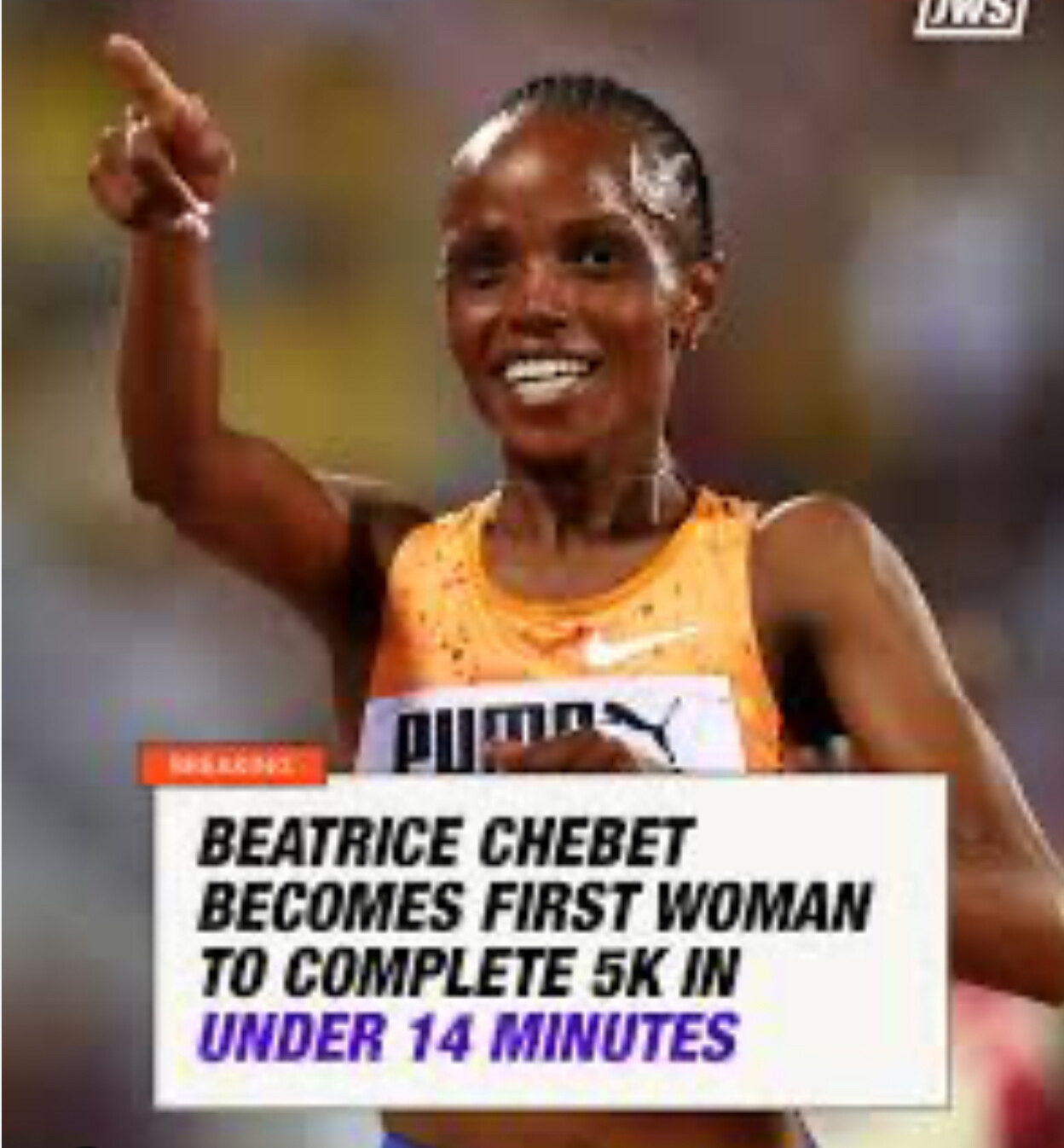
The Berlin Marathon in 2024 showcased yet another extraordinary performance on its fast course, though it was Kelvin Kiptum’s world record from the 2023 Chicago Marathon (2:00:35) that remained untouched. In 2024, Berlin hosted strong fields but no records, leaving Kiptum’s achievement as the defining benchmark for men’s marathoning.
The Chicago Marathon was the highlight of the year, where Kenya's Ruth Chepngetich made history by becoming the first woman to run a marathon in under 2:10. She shattered the previous world record by nearly two minutes, finishing in 2:09:56. This groundbreaking achievement redefined the possibilities in women's distance running and underscored the remarkable progress in 2024.
The New York City Marathon showcased the depth of talent in American distance running, with emerging athletes achieving podium finishes and signaling a resurgence on the global stage.
Each marathon in 2024 was marked by extraordinary performances, with athletes pushing the boundaries of human endurance and setting new benchmarks in the sport.
Olympic Preparations: Paris 2024 Looms Large
With the 2024 Summer Olympics in Paris just around the corner, many athletes used the year to fine-tune their preparations. Qualifying events across the globe witnessed fierce competition as runners vied for spots on their national teams.
Countries like Kenya, Ethiopia, Japan, and the United States showcased their depth, with surprising performances by athletes who emerged as dark horses. Japan’s marathon team, bolstered by its rigorous national selection process, entered the Olympic year as a force to be reckoned with, particularly in the men's race.
Ultramarathons: The Rise of the 100-Mile Phenomenon
The ultramarathon scene continued to grow in popularity, with races like the Western States 100, UTMB (Ultra-Trail du Mont-Blanc), and Leadville 100 drawing record participation and attention.
Courtney Dauwalter, already a legend in the sport, extended her dominance with wins at both UTMB and the Western States 100, solidifying her reputation as the GOAT (Greatest of All Time) in ultrarunning.
On the men’s side, Spain’s Kilian Jornet returned to form after an injury-plagued 2023, capturing his fifth UTMB title. His performance was a masterclass in pacing and strategy, showcasing why he remains a fan favorite.
Notably, ultramarathons saw increased participation from younger runners and athletes transitioning from shorter distances. This shift signaled a growing interest in endurance challenges beyond the marathon.
Track and Road Records: Pushing the Limits
The year 2024 witnessed groundbreaking performances on both track and road, with athletes shattering previous records and setting new benchmarks in distance running.
Beatrice Chebet's Dominance: Kenya's Beatrice Chebet had an exceptional year, marked by multiple world records and championship titles.
10,000m World Record: In May, at the Prefontaine Classic, Chebet broke the women's 10,000m world record, becoming the first woman to run the distance in under 29 minutes, finishing in 28:54.14.
Olympic Triumphs: At the Paris Olympics, Chebet secured gold in both the 5,000m and 10,000m events, showcasing her versatility and dominance across distances.
5km World Record: Capping off her stellar year, on December 31, 2024, Chebet set a new women's 5km world record at the Cursa dels Nassos race in Barcelona, finishing in 13:54. This achievement made her the first woman to complete the 5km distance in under 14 minutes, breaking her previous record by 19 seconds.
Faith Kipyegon's Excellence: Kenya's Faith Kipyegon continued her dominance in middle-distance running by breaking the world records in the 1500m and mile events, further cementing her legacy as one of the greatest athletes in history.
Joshua Cheptegei's 10,000m World Record: Uganda's Joshua Cheptegei reclaimed the men's 10,000m world record with a blistering time of 26:09.32, a testament to his relentless pursuit of excellence.
Half Marathon Records: The half marathon saw an explosion of fast times, with Ethiopia’s Yomif Kejelchabreaking the men's world record, running 57:29 in Valencia. The women's record also fell, with Kenya’s Letesenbet Gidey clocking 1:02:35 in Copenhagen.
These achievements highlight the relentless pursuit of excellence by distance runners worldwide, continually pushing the boundaries of human performance.
The Role of Technology and Science
The impact of technology and sports science on distance running cannot be overstated in 2024. Advances in carbon-plated shoes, fueling strategies, and recovery protocols have continued to push the boundaries of human performance.
The debate over the fairness of super shoes reached new heights, with critics arguing that they provide an unfair advantage. However, proponents emphasized that such innovations are part of the natural evolution of sports equipment.
Data analytics and personalized training plans became the norm for elite runners. Wearable technology, including advanced GPS watches and heart rate monitors, allowed athletes and coaches to fine-tune training like never before.
Grassroots Running and Mass Participation
While elite performances stole the headlines, 2024 was also a banner year for grassroots running and mass participation events. After years of pandemic disruptions, global races saw record numbers of recreational runners.
Events like the Great North Run in the UK and the Marine Corps Marathon in the U.S. celebrated inclusivity, with participants from diverse backgrounds and abilities.
The popularity of running as a mental health outlet and community-building activity grew. Initiatives like parkrunand local running clubs played a pivotal role in introducing more people to the sport.
Diversity and Representation
Diversity and representation became central themes in distance running in 2024. Efforts to make the sport more inclusive saw tangible results:
More women and runners from underrepresented communities participated in major events. Notably, the Abbott World Marathon Majors launched a program to support female marathoners from emerging nations.
Trail and ultrarunning communities embraced initiatives to make races more accessible to runners from diverse cultural and economic backgrounds.
Challenges and Controversies
Despite the many successes, 2024 was not without its challenges:
Doping Scandals: A few high-profile doping cases marred the sport, reigniting calls for stricter testing protocols and greater transparency.
Climate Change: Extreme weather conditions impacted several races, including the Boston Marathon, which experienced unusually warm temperatures. Organizers are increasingly focusing on sustainability and adapting to climate-related challenges.
Looking Ahead to 2025
As the year closes, the focus shifts to 2025, which promises to build on the momentum of 2024. Key storylines include:
The quest for a sub-2-hour marathon in a record-eligible race, with Kelvin Kiptum and Eliud Kipchoge at the forefront.
The continued growth of ultrarunning, with new records likely to fall as more athletes take up the challenge.
The evolution of distance running as a global sport, with greater inclusivity and innovation shaping its future.
Conclusion
The distance running scene in 2024 was a celebration of human potential, resilience, and the unyielding pursuit of greatness. From record-breaking marathons to grueling ultramarathons, the year reminded us of the universal appeal of running. As the sport evolves, it continues to inspire millions worldwide, proving that the spirit of running transcends borders, ages, and abilities.
by Boris
Login to leave a comment
Kenya's Catherine Reline stamps authority with Abu Dhabi Marathon win to pocket Ksh. 6 million
Catherine Reline claimed victory at the 2024 ADNOC Abu Dhabi Marathon, earning a $50,000 prize.
Catherine Reline has successfully conquered the marathon in her second attempt this year, claiming top honors at the 2024 ADNOC Abu Dhabi Marathon.
Reline clocked a spectacular time of 2:20:34 to claim top honors and walk away with a prize purse of US$50,000. Eritrea’s Dolshi Teklegergish came in second in the race, clocking a stunning 2:23:47 with another Kenyan, Aurelia Kiptui sealing the podium in 2:26:48.
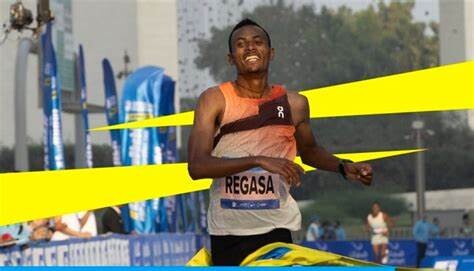
The Kenyan made her full marathon debut at this year’s London Marathon but failed to finish the race. Her win in Abu Dhabi displays her resilience and hard work as she did not give up on herself and continued competing and training hard.
She started her season with a third-place finish at the Sirikwa Classic Cross-Country Tour before heading to a sixth-place finish at the Ras Al Khaimah Half Marathon.
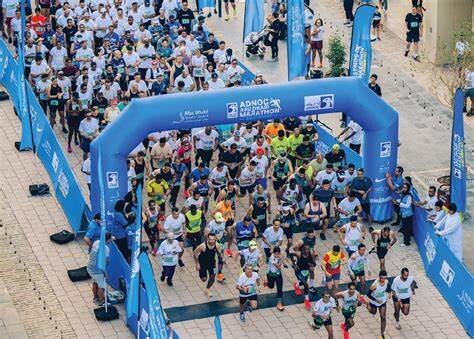
Catherine Reline proceeded to the London Marathon where she could not finish the race and quickly switched to the track where she finished seventh in the 10,000m at the Prefontaine Classic which acted as trials for the Athletics Kenya team to the Paris Olympic Games. Prior to the Abu Dhabi Marathon, she finished an impressive third at the Copenhagen Half Marathon.
The 22-year-old showcased her mastery with a tactical race in Abu Dhabi and she is certainly destined for greatness.
Meanwhile, the men’s race saw Ethiopian Chala Ketema Regassa claim the win after shaking off competition from his challengers.
The Ethiopian road running ace clocked 2:06:16 to smash the previous course record, crossing the finish line first ahead of Ibrahim Bouh and Kenyan Wilfred Kigen who challenged him fiercely in the last 10km.
Ibrahim Bouh finished second in a time of 2:06:33 as Kenya’s Wilfred Kigen rounded up the podium in 2:06:47.
by Abigael Wafula
Login to leave a comment
ADNOC Abu Dhabi Marathon
The Abu Dhabi Marathon is shaping up to being first class marathon for both elite runners and average runners as well. Take in the finest aspects of Abu Dhabi's heritage, modern landmarks and the waters of the Arabian Gulf, at this world-class athletics event, set against the backdrop of the Capital's stunning architecture.The race offered runners of all abilities the...
more...'I literally can’t wait'- Sha'Carri Richardson eyeing LA 2028 after humbling Olympic debut
Sha'Carri Richardson is bubbling with excitement ahead of the LA 2028 Olympics after her successful debut in Paris.
Sha’Carri Richardson is already thinking about the LA 2028 Olympic Games after making her debut at the Paris Olympic Games.
The reigning world 100m champion in an interview with Blavity TV, explained that her Olympic debut was quite a humbling experience and there was a lot she took from that. She explained that there was a lot of lessons to be learnt and she had a great time competing against great women.
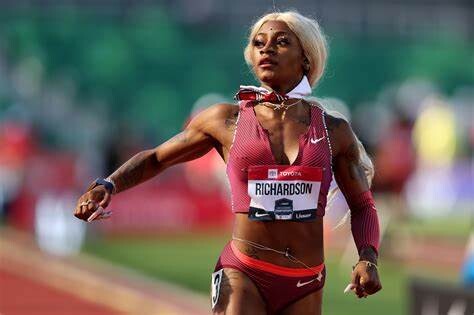
Sha’Carri Richardson went into the Olympic Games hoping to claim her first individual gold medal but failed to live up to the billing. She was certainly the pre-race favourite but Julien Alfred had better legs that day.
Alfred claimed top honours in a time of 10.72 seconds as Sha’Carri Richardson and Melissa Jefferson came in second and third in respective times of 10.87 seconds and 10.92 seconds.

She used the 100m disappointment to go for the title in the women’s 4x100m relay. After tasting Olympic glory, she is already looking forward to the 2028 Olympic Games on home tuff.
“Honestly, competing in Paris, at the Olympics, has been an honour, it has been humbling, it has been fun and I literally can’t wait for LA. I’m almost like jumping like three years ahead because this experience was something like totally unbelievable,” Sha’Carri Richardson said.
Sha’Carri Richardson has had a quite turbulent season this year, starting off with two 200m losses at the Diamond League Meetings in Xiamen and Suzhou. She then claimed her first win of the season at the Prefontaine Classic, the Diamond League Meeting in Eugene.
The world 200m bronze medallist then proceeded to the US Olympic trials where she claimed top honours in the women’s 100m, setting a world leading time of 10.71 seconds and later finished fourth in the 200m, missing out on the Olympic Games.
At the Paris Olympic Games, Sha’Carri Richardson took silver in the women’s 100m then later claimed gold in the relay. She got her sweet revenge over Julien Alfred with a win at the Diamond League Meeting in Zurich. She ended her season with an eighth-place finish at the Diamond League Meeting final in Brussels.
by Abigael Wafula
Login to leave a comment
LA 2028 Summer Olympics Games
Discover how the Los Angeles Candidature Committee describes their vision for the Games and the legacy they plan to leave behind: For centuries, people have been following the sun to California – to a coastal paradise of beautiful weather, inspiring landscapes and an ocean of possibilities. Since it was first settled, LA – the City of Angels – has built...
more...Daniel Ebenyo, Benson Kipruto confirmed for high-profile race in India
Daniel Ebenyo and Benson Kipruto are among top runners scheduled to compete in India this weekend.
If you think athletes are taking a break from running since the festive season is here, maybe you should fasten up your seat belt because things are just getting started.
The track season is now over and the runners have shifted focus to the road races to continue chasing the bag and staying in the loop as far as fitness is concerned. Top athletes have since been confirmed for the Tata Steel World 25K Kolkata, the World’s 1st Gold Label 25K scheduled for December 15.
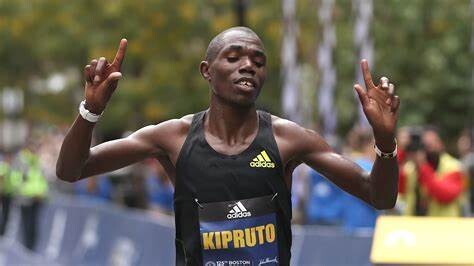
Daniel Ebenyo is not resting on his laurels and he is just fresh from racing in the senior men’s race at the Athletics Kenya cross-country leg in Bomet. Ebenyo has had a mixed season and he was just taking some time off before coming back into the grind, ready to show the world what they have missing out on.
He was hoping to make his Olympic debut in Paris, France but a tragic fall during the 10,000m trials at the Prefontaine Classic saw him miss out on a podium finish, something that still haunts him to date. Daniel Ebenyo insisted that he was in the form of his life and would have won Kenya a medal.
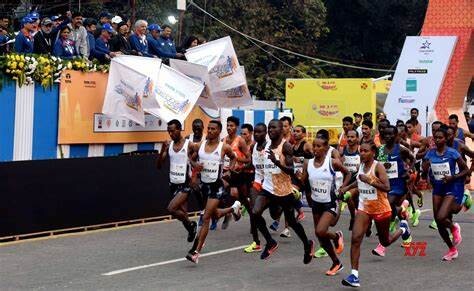
The world 10,000m silver medallist made a huge milestone later in the season, making his full marathon debut at the Chicago Marathon where he placed fifth. He returns to a familiar course where he threatened the 25km world best last year with his dominant win. He won the race in a new course record time of 1:11:13.
“The Kolkata roads are fast, and conditions are ideal; it is a perfect opportunity for me to defend my title and better my timing,” the reigning champion Daniel Ebenyo revealed.
He will be challenged by Benson Kipruto, a master in road running who will be out to continue his dominant form in India. Kipruto won the Tokyo Marathon earlier this year, beating Eliud Kipchoge and then proceeded to claim the bronze medal at the Paris Olympic Games.
Meanwhile, the women’s defending champion, Sutume Kebede also returns after winning last year’s race dominantly in 1:18:47. Kebede has been impressive this season, improving her personal best times in the half marathon (1:04:37) and marathon (2:15:55) to take initial world leads in both events this season.
US $142,214 prize money has been set aside for the top finishers. The top three finishers will win $15000, $10000, and $7000, respectively.
by Abigael Wafula
Login to leave a comment
Kolkata 25k
In Kolkata, a city rich in history, culture and custom, the third Sunday in December is a date that is eagerly anticipated. The Tata Steel Kolkata 25K (TSK 25K) has become synonymous with running in eastern India since it began in 2014. India’s first AIMS-certified race in the unique 25 km distance, the TSK 25K went global in its fourth...
more...Mary Moraa 'back to the grind' ahead of tough 2025 season
Mary Moraa has resumed training as she plans to defend her world title amid the rise of strong 800m runners including Keely Hodgkinson and Athing Mu.
Mary Moraa has resumed training ahead of a tough 2025 season where she has a huge task of defending her world title at the World Championships in Tokyo, Japan.
The reigning world champion will battle for the title alongside very formidable 800m runners who have emerged this season. The Commonwealth Games champion lines up against Keely Hodgkinson, Tsige Duguma and Athing Mu alongside other 800m athletes.
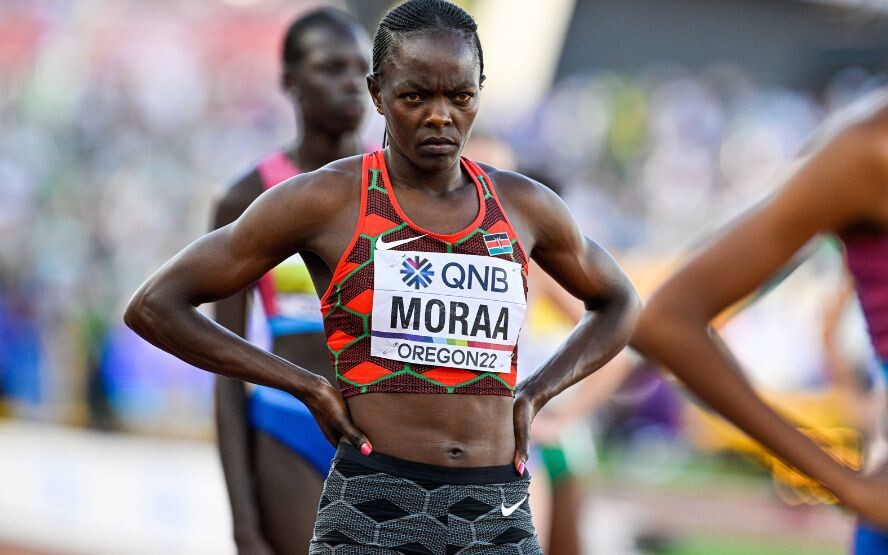
Mary Moraa had a mixed season this year and she will be looking to work on the finer things so as to be ready next season. She was off to a great start to her season, winning the 400m at the African Games then anchored the 4x400m mixed relay team to a bronze medal.
The Kenyan 800m star then proceeded to claim the win at the Kip Keino Classic before reigning supreme at the Diamond League Meeting in Doha and finished second at the USATF Los Angeles Grand Prix and Prefontaine Classic.

Moraa then finished second at the Kenyan Olympic trials and then won the bronze medal at the Paris Olympics. She bounced back to take the win at the Diamond League Meeting in Lausanne and finished third in Silesia. She won the 600m in a world best time at the ISTAF 2024 and then claimed wins in Zurich and the Diamond League Meeting final in Brussels.
Mary Moraa rounded up her season with a second-place finish at the Athlos NYC. Going back into training, she hopes to polish a lot of things and bounce back stronger to maintain a winning streak in 2025.
“It's about time...back to the grind ?,” Mary Moraa shared in a post on her Facebook page, adding, “Nice morning cruise with Brandon and the gang after a deserved break.”
Her competitors are also not resting on their laurels with Keely Hodgkinson, the reigning Olympic champion, making it clear that she will be going for the world title since it’s one of the titles she has yet to win.
Her coaches, Jenny Meadows and Trevor Painter have also revealed that she will be attacking both the indoor and outdoor world records in the near future.
“There’s no silvers and bronzes, now we have to do gold all the way forward, we don’t want to take any backward step and I just hopefully think that Keely can dominate and we’ve got the indoor world record to go at and in the next couple of years we’ll go after the tough world record. I think she can do it,” Jenny Meadows said.
“If she’s got the leg speed to get closer to her rivals, then they can’t out strength her so it was magic. The indoor one is easier to get than the outdoor but we’ll have a crack of both and see what happens,” Trevor Painter added.
On her part, after a heartbreaking 2024 season marred with injuries and missing out on the Paris Olympic Games, Athing Mu has already started preparation for the 2025 season.
The former world champion noted that the World Championships are her major target for the season and she is working towards making it through the trials and then heading to Tokyo.
“Well, trackwise we have the World Championships in September next year and it’s in Tokyo…first of all I pray we make it through trials and then we make it to that race,” Athing Mu said.
“I feel like it’s going to be a circle moment for me because that’s basically where I started and then I had some highs and lows.”
by Abigael Wafula
Login to leave a comment
Athing Mu finally opens up on the pain of failing to make US team to Paris 2024 Olympics
Athing Mu reflected on her challenging season, marked by injuries and disappointment at the US Olympic trials, but remains hopeful, trusting in her faith for a major comeback.
Athing Mu has for the first time expressed her emotions after her unfortunate fall at the US Olympic trials earlier this season.
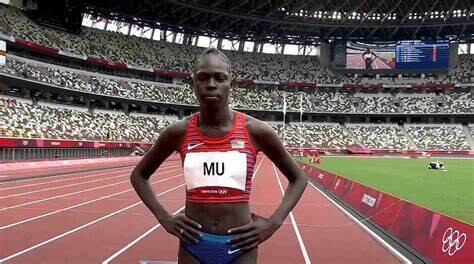
The former Olympic 800m champion got an injury earlier in the season and had to start her campaign at the US Olympic trials. She had been confirmed to open her season at the Prefontaine Classic but had to withdraw due to the injury.
Mu was off to a great start at the trials, finishing third in her heat before winning the semifinal. In the final, the unfortunate happened as she fell down and faded to a ninth-place finish. Athing Mu tried to bounce back at the Holloway Pro Classic but could only afford a fifth-place finish and ended her season there.
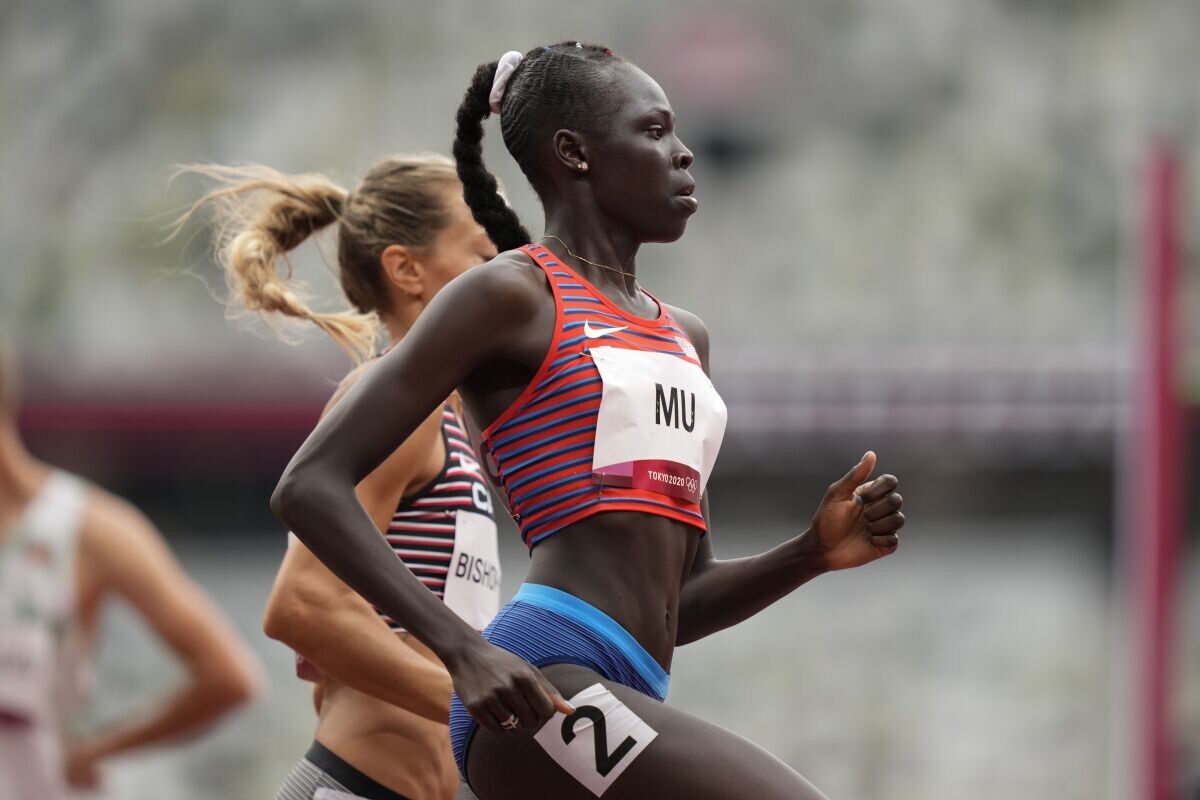
Speaking on the Jinger and Jeremy Vuolo show, Athing Mu pointed out that her season turned out awful and it was something she never expected. She was hopeful of defending her title but after the injury, reality started dawning on her that she might the Olympic Games.
However, she felt ready to get back to the track at the US Olympic trials and making it to the final was a confidence booster for her but things did not go as planned in the final.
“Olympic trials were a very tough time and I guess, just this whole in season part of the year has been really tough because a lot of things have happened, leading up and then post-Olympic trials. About six weeks before the Olympic trials, I tore my hamstring and that was the first thing we needed to heal from before going into the Olympic trials,” Athing Mu said.
“When that happened, I was still kind of hopeful about the Olympic trials but I didn’t know what was going to happen but the idea of going and winning was a little bit diminishing because I knew that healing a hamstring was a pretty tough injury to speed up.
“Making it to the Olympic trials was great and I gained a little bit of confidence throughout the rounds and then running the final, super unfortunate, I did not expect that to happen at all. I was absolutely distraught but finishing the race, I can’t really say,” she added.
After the Olympic trials, she dealt with a lot of emotions before finally getting back into training. After a few training sessions in Europe, she got another injury and could not continue with her season.
She revealed that having to end her season in such a way was devastating but she had to trust in her strong faith.
“I actually broke down a little bit and I didn’t know if I could do it and I decided to get myself together and just trust in what the LORD would do at the end of the season. when I went to train in Europe, I got another injury and knew this season was done,” she said.
by Abigael Wafula
Login to leave a comment
50 Motivational Running Quotes About Racing
Find Inspiration from Running Icons and Legends
Even the most motivated among us occasionally has a challenging time wanting to lace up our shoes and hit the pavement running. Bookmark this page for the next time motivation is waning for you. Read on for inspirational race quotes to pump you up before your next run.
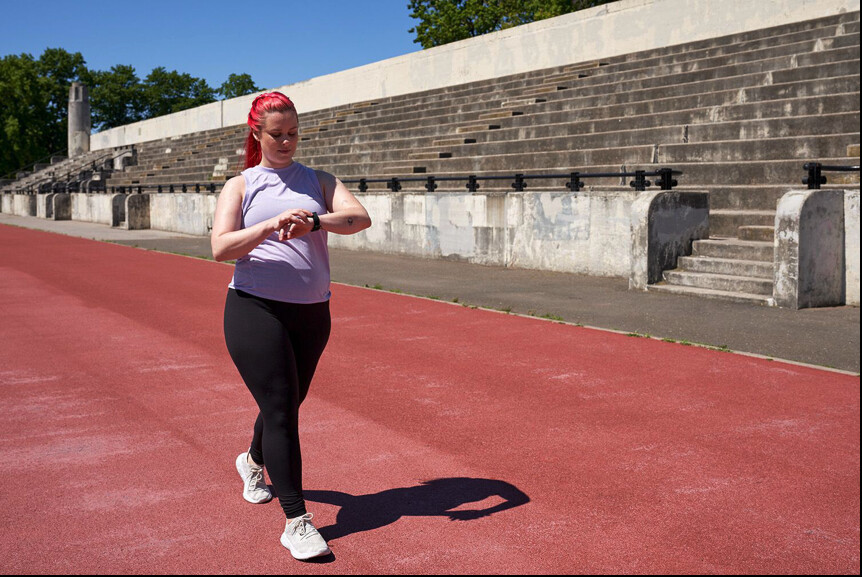
"The miracle isn't that I finished. The miracle is that I had the courage to start." —John Bingham, running speaker and writer
"Fear is gradually replaced by excitement and a simple desire to see what you can do on the day." —Lauren Fleshman, American distance runner
"It doesn't matter whether you come in first, in the middle of the pack, or last. You can say, 'I have finished.' There is a lot of satisfaction in that." —Fred Lebow, co-founder of the New York City Marathon
"When you put yourself on the line in a race and expose yourself to the unknown, you learn things about yourself that are very exciting." —Doris Brown Heritage, women's distance running pioneer
"Good health, peace of mind, being outdoors, camaraderie: those are all wonderful things that come to you when running. But for me, the real pull of running—the proverbial icing on the cake—has always been racing." —Bill Rodgers, winner of four Boston Marathons
"Big occasions and races which have been eagerly anticipated almost to the point of dread, are where great deeds can be accomplished." —Jack Lovelock, environmentalist and futurist
"I also realize that winning doesn't always mean getting first place; it means getting the best out of yourself." —Meb Keflezighi, 2004 Olympic Marathon silver medalist
"Why race? The need to be tested, perhaps; the need to take risks; and the chance to be number one." —George Sheehan, running columnist and writer
RELATED: A Beginner's Guide to Becoming a Runner
"Everyone in life is looking for a certain rush. Racing is where I get mine." —John Trautmann, Olympic runner
"I'm always nervous. If I wasn't nervous, it would be weird. I get the same feeling at all
"My thoughts before a big race are usually pretty simple. I tell myself: 'Get out of the blocks, run your race, stay relaxed. If you run your race, you'll win.'" —Carl Lewis, nine-time Olympic gold champion
RELATED: How to Plan a Running Route Using Map Apps on Your Phone
"I love controlling a race, chewing up an opponent. Let's get down and dirty. Let's fight it out. It's raw, animalistic, with no one to rely on but yourself. There's no better feeling than that." —Adam Goucher, U.S. Nationals 5K race champion
"I'm going to work so that it's a pure guts race at the end, and if it is, I am the only one who can win it." —Steve Prefontaine, legendary American long-distance runner
"Let's just say it and be done with it. Racing hurts. But here's another truth: having put in the effort to prepare for a race and then not giving it your all hurts even more. The first kind of hurt goes away in hours or a day. The second kind of hurt can last a lifetime." —Larry Shapiro, author of Zen and the Art of Running
"Different people have different reasons for racing, but
"Running is in my blood—the adrenaline flows before the races, the love/hate of butterflies in your stomach." —Marcus O'Sullivan, Irish middle-distance runner
"It's just as important to remember that each footstrike carries you forward, not backward. And every time you put on your running shoes you are different in come way than you were the day before. This is all good news." —John Bingham, American marathon runner
"Racing teaches us to challenge ourselves. It teaches us to push beyond where we thought we could go. It helps us to find out what we are made of. This is what we do. This is what it's all about." —PattiSue Plumer, U.S. Olympian
"You didn't beat me. You merely finished in front of me." —Hal Higdon, American writer and runner
"Fast running isn't forced. You have to relax and let the run come out of you." —Desiree Linden
"No marathon gets easier later. The halfway point only marks the end of the beginning." —Joe Henderson, famed running coach
RELATED: Race Day Tips for Running Your First 5K
"No matter how old I get, the race remains one of life's most rewarding experiences." —George Sheehan
"If you feel bad at
"What distinguishes those of us at the starting line from those of us on the couch is that we learn through running to take what the days gives us, what our body will allow us, and what our will can tolerate." —John Bingham, running writer and speaker
"For me, races are the celebration of my training." —Dan Browne, National Champion 5K and 20K runner
"Run when you can, walk if you have to, crawl if you must; just never give up." —Dean Karnazes, ultramarathon runner
"Every race is a question, and I never know until the last yards what the answer will be. That's the lure of racing." —Joe Henderson
"It's amazing how the same pace in practice can feel so much harder than on race day. Stay confident. Trust the process." —Sara Hall, American long-distance runner
"Winning has nothing to do with racing. Most days don't have races anyway. Winning is about struggle and effort and optimism, and never, ever, ever giving up." —Amby Burfoot, American marathon runner
"Your goal is simple: Finish. Experience your first race, don’t race it." —Bob Glover, author of The Runner's Handbook
"Don't dream of winning, train for it!" —Mo Farah, Olympic long
"Nothing, not even pain, lasts forever. If I can just keep putting one foot in front of the other, I will eventually get to the end." —Kim Cowart, runner and journalist
"The real purpose of running isn't to win a race. It's to test the limits of the human heart." —Bill Bowerman, co-founder of Nike
"Our running shoes have magic in them. The power to transform a bad day into a good day; frustration into speed; self-doubt into confidence; chocolate cake into muscle." —Mina Samuels, author of Run Like a Girl
"There is magic in misery. Just ask any runner." —Dean Karnazes
"Run often. Run long. But never outrun your joy of running." —Julie Isphording, American Olympic runner
Login to leave a comment
'He's the man to watch'- Eliud Kipchoge predicts bright future for training partner in road running
Eliud Kipchoge believes has singled out one of his training partners and noted that he has a bright future in road running and could be the next big star, despite still mastering marathon racing.
Marathon legend Eliud Kipchoge believes his training partner Daniel Mateiko is the next big thing when it comes to road running.
The former world marathon record holder observed that Daniel Mateiko has a bright future ahead of him and despite not having mastered marathon running yet, the youngster is surely following in Eliud Kipchoge’s footsteps.
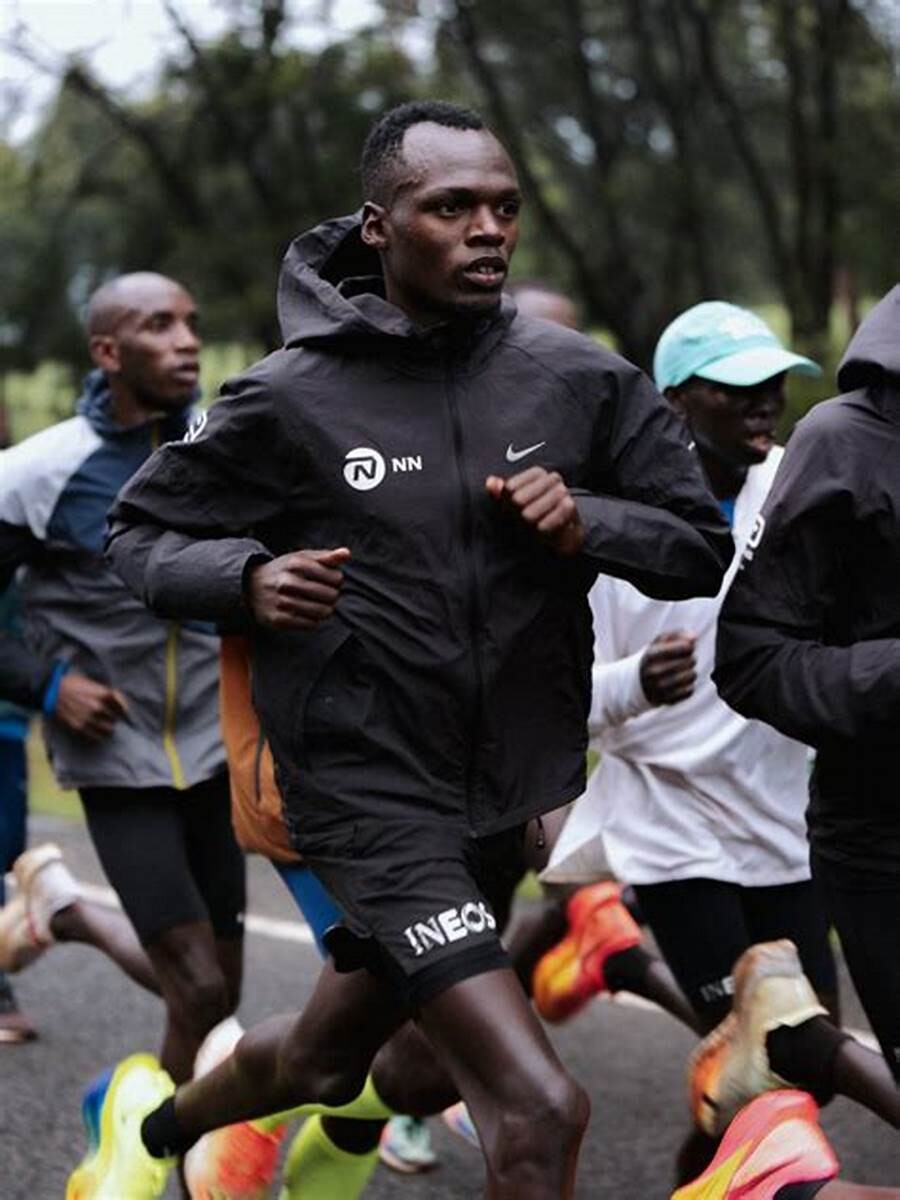
In an interview with Runner’s World, Eliud Kipchoge pointed out that Daniel Mateiko has all it takes to dominate and once he hits the ground running, people will be left dumbfounded in the stands.
“[He has] a huge, huge, future ahead of him. I’m putting all my money in Mateiko as the future,” Kipchoge said. “He’s the man to watch, actually, on the road,” Eliud Kipchoge said.
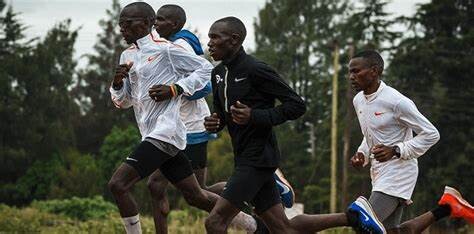
Meanwhile, Daniel Mateiko is one of the top half marathoners in the world with his personal best time of 58:26 he ran to finish third at the Valencia Half Marathon in 2021.
He is slowly following in the footsteps of his mentor, five-time Berlin Marathon champion Eliud Kipchoge, and he made his full marathon debut at the 2023 Chicago Marathon where he failed to finish the race but certainly had one of the best runs up to the 30km mark.
Before his full marathon debut, Daniel Mateiko was in action at the 2023 London Marathon as he helped pace the late Kelvin Kiptum to a course record of 2:01:25. This season, Mateiko hoped for a great outing at the London Marathon but also failed to finish the race.
However, he has attained a series of wins, like representing the country at the Paris Olympic Games in the 10,000m. However, Mateiko did not embrace his full potential as he could only manage an 11th-place finish in 26:50.83.
Before then, the 26-year-old had raced at the Prefontaine Classic where he won the race to secure a ticket to the Olympics and he had also won the Ras Al Khaimah Half Marathon prior to the London Marathon.
by Abigael Wafula
Login to leave a comment
Emmaculate Anyango faces four-year ban following provisional suspension over doping
Kenya’s long-distance runner Emmaculate Anyango faces the prospect of a four-year ban after being handed a provisional suspension for doping as the net nabs another big fish.
Kenya’s long-distance prodigy Emmaculate Anyango has joined the list of shame following her provisional suspension for a doping violation.
The Athletics Integrity Unit (AIU) announced Anyango’s provisional suspension on Friday for the presence/use of a prohibited substance (Testosterone and EPO).
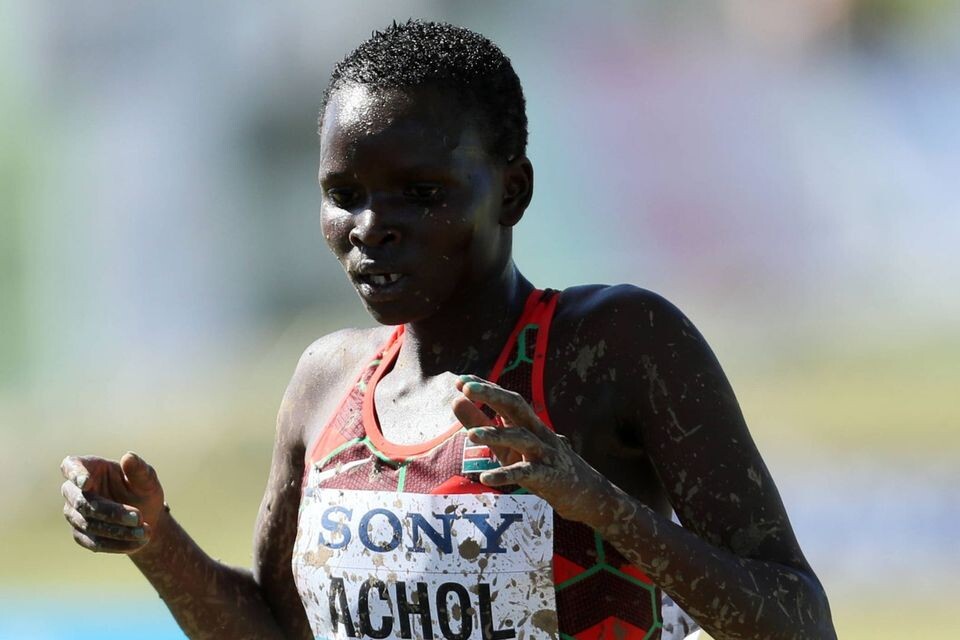
It means Anyango will remain suspended until her case is heard and determined and she faces a minimum of a four-year ban if she is found culpable.
It is a blow to the 24-year-old who was already making waves having been one of the standout athletes in the early months of the 2024 season.
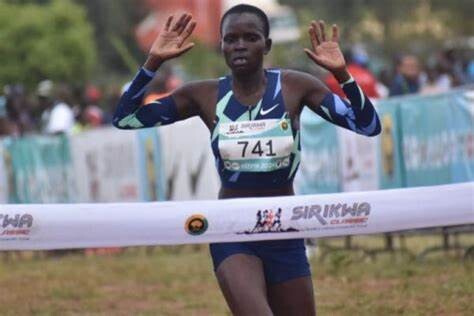
The Sirikwa Classic Cross-country champion was awarded the Sports Personality of the Month award for February by the Sports Journalists Association of Kenya (SJAK) after coming close to breaking the world 10km world record in February.
Anyango recorded the second fastest 10km time in history when she clocked 28:47 in Valencia, Spain, improving Ethiopian Yalemzerf Yehualaw’s world record (29.14) but unfortunately for her, compatriot Agnes Ngetich won the race in a better time of 28.46.
She would go on to finish fourth at the World Cross-Country Championships in Serbia followed by second place at the BAA 5k Road Run in Boston and in 10km Road in Bengaluru, India.
She, however, missed a place in team Kenya to the Paris Olympics after finishing sixth in the 10,000m trials which was held at the Prefontaine Classic, the Eugene Diamond League in May.
Back-to-back second places finishes would follow in 10km in Atlanta and in 15km in New York in July.
by Joel Omotto
Login to leave a comment
Prefontaine Memorial Run returns to coos bay to honor a running legend
The annual Prefontaine Memorial Run, a classic 10K run honoring one of Oregon’s most beloved athletes, is returning to the charming streets of Coos Bay on Saturday, September 21, 2024. The run celebrates Coos Bay’s own Steve Prefontaine, the famed Oregon runner who bolted onto the international running scene and helped ignite a running craze in the U.S. in the 1970s.
“Steve Prefontaine was a legend in the running world in the 1970s, and Coos Bay is where he was born and where he discovered his gift for and love of running,” said Janice Langlinais, Executive Director of the Coos Bay-North Bend-Charleston Visitor and Convention Bureau, more commonly known as Oregon’s Adventure Coast. “The annual Prefontaine Memorial Run not only honors Pre’s legacy here in his hometown, but it draws runners from around the region, the state and the country to come and experience the joy of running on Oregon’s Adventure Coast.”
The 2024 Prefontaine Memorial Run is a challenging 10K road race around the streets of Coos Bay that finishes on the Prefontaine Track at Marshfield High School following one of Pre’s favorite training routes. The event also includes a 2-mile walk and fun run. The 10K starts at 10 a.m., while a 5K high school team competition kicks off the events at 9:45 a.m.
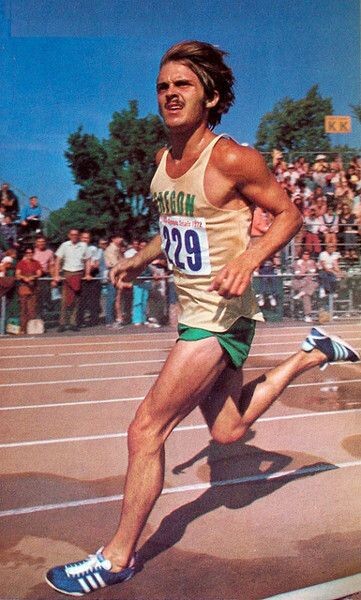
Other pre-related attractions for runners and visitors include a bronze likeness of the famed distance runner at the Coos Bay Visitor Information Center, the Prefontaine Gallery at the Coos Art Museum, which showcases his awards and memorabilia, and the stunning Pre Mural in downtown Coos Bay.
The Prefontaine run will again coincide with the annual Bay Area Fun Festival, a two-day celebration in downtown Coos Bay filled with live entertainment, a parade, food and drinks, vendors, arts, crafts and the Cruz the Coos classic auto cruise around downtown Coos Bay.
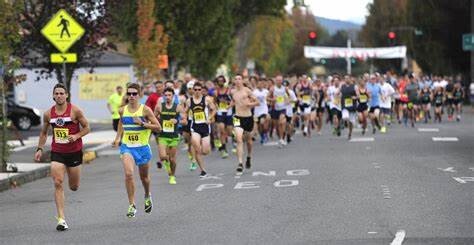
The 2024 Prefontaine Memorial Run
What: A 10K run, with a 2-mile walk or fun run option and a 5K high school competition, in honor of hometown hero and running legend, Steve Prefontaine.
When: 10 a.m. Saturday, September 21. (High school competition begins at 9:45 a.m.; wheelchair runners start at 9:50 a.m.)
Where: The corner of 4th and Anderson in downtown Coos Bay.
Cost: $40 for runners 19 and over before September 17; $50 after that date. $20 for runners 18 and under or those in the 2K walk. $13 per runner for the high school competition.
Registration: prefontainerun.net
For visitors coming from out of town for the Prefontaine Memorial Run, Oregon’s Adventure Coast has lodging options for all tastes, from unique hotels and motels to vacation rentals, RV parks and picturesque campgrounds.
by The Bandon Western World
Login to leave a comment
Prefontaine Memorial Run
During his brief 24-year lifespan, Steve Prefontaine grew from hometown hero, to record-setting college phenomenon, to internationally acclaimed track star. In a similar span of years since his death in 1975, Pre has become the stuff of enduring legend. His rare combination of talent, discipline, determination, and star-quality with a human touch made Pre the idol of those he called...
more...Chebet strikes a second gold and Kenya's first Olympic women's 10,000m title in Paris
Kenya’s Olympic 5000m champion Beatrice Chebet accomplished her double golden glory by winning the 10,000m at the Paris 2024 Games on Friday (9).
Just four days after striking gold in the 5000m final, Olympic debutant Chebet emerged victorious in the women’s 10,000m in 30:43.25 at the Stade de France.
Italy’s Nadia Battocletti, who was fourth in the 5000m, finished strong in a national record of 30:43.35 to secure the silver as Sifan Hassan of the Netherlands ran 30:44.12 for bronze – her second medal of that colour in Paris after her third-place finish in the 5000m.
The feat makes Chebet the first Kenyan woman to win Olympic 10,000m gold and only the third woman after Tirunesh Dibaba and Hassan to win the 5000m and 10,000m double at the Olympic Games.
The 24-year-old also became the first to win 5000m and 10,000m Olympic titles in addition to the world cross country title and the 10,000m world record.
Chebet, who shattered the world 10,000m record in May’s Prefontaine Classic, was no doubt the centre of focus in the final. She did the sign of a cross before taking off as part of a field that featured defending champion Hassan, 5000m world record-holder Gudaf Tsegay and Battocletti.
The rain had stopped and the sun was shining bright when the women took off in the 10,000m on a somewhat wet track.
Rahel Daniel of Eritrea had an early leading role with Battocletti behind her, taking the field through 1000m in 3:12. The main cast included Chebet and Tsegay tucked in the middle of the pack, while Hassan stayed behind.
The race was tactical and Daniel was in the lead until she dropped out of the competition and Rino Goshima of Japan took over, leading the pack through 3000m in 9:26.94 and 4000m in 12:38.12. Chebet had moved up to third position, and throughout the whole race she had no interest in going in front.
Thirteen athletes were still bunched together with eight laps remaining. This time it was Ethiopian Tsigie Gebreselama’s turn to lead, taking them through 7000m in 21:15.65. The pack had Chebet, Margaret Kipkemboi, Lilian Kasait Rengeruk, Fotyen Tesfay, Tsegay, Sarah Chelangat and Battocletti.
With two laps to go, Kenya’s Kipkemboi pushed the pace and just before the bell it was an East Africa contest. Kipkemboi stepped on the gas again after the bell, with Rengeruk on her shoulder. Their intention – to drop the rest, a move that made Chebet and Battocletti immediately respond. Hassan also covered the move.
With 200 metres to go, Chebet – who had run a very tactical race – overtook Kipkemboi, with Battocletti hot on her heels. But Chebet’s strong kick was enough to earn the 10,000m gold medal in 30:43.25, the slowest winning time since the 1996 Atlanta Olympic Games.
Battocletti crossed the line a tenth of a second after Chebet, taking home a silver medal and a national record of 30:43.35.
Hassan's triple quest in Paris amounted to a second podium finish, as she came home third in 30:44.12. She will next compete in the marathon on Sunday.
“I’m so happy," said Chebet. "To do the 5000m and 10,000m is not something easy. But just focus, and know that you can achieve. Just believe in yourself.
"I believed that I could do it. I just wanted to win the 10,000m for my country. My country has never won a gold medal (in the women’s 10,000m). So I said I wanted to be the first."
by World Athletics
Login to leave a comment
Paris 2024 Olympic Games
For this historic event, the City of Light is thinking big! Visitors will be able to watch events at top sporting venues in Paris and the Paris region, as well as at emblematic monuments in the capital visited by several millions of tourists each year. The promise of exceptional moments to experience in an exceptional setting! A great way to...
more...‘I Can. I Will. I Must:’ Mantras and Affirmations That Propel Olympic Athletes to Victory
These motivating words from Olympians—and the stories behind them—can help you get through any tough run.
For all the drama it contained—including a fall by defending Olympic champion Athing Mu—the final of the women’s 800 meters at the 2024 U.S. Olympic Track and Field Trials was over in less than 2 minutes.
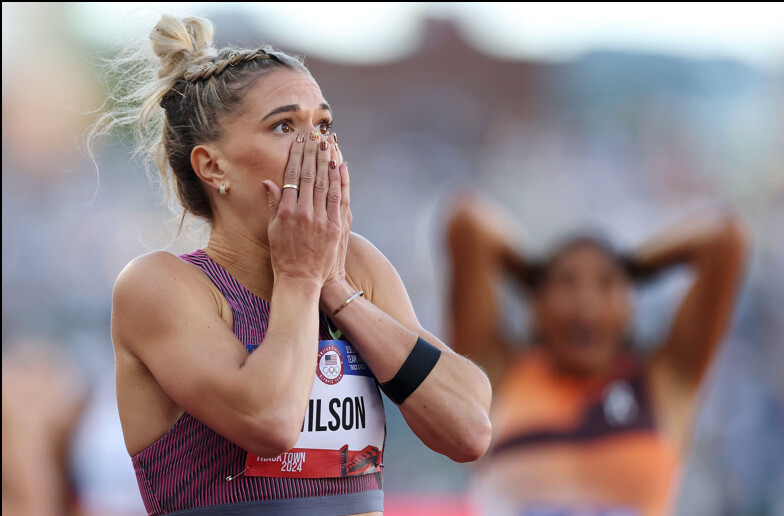
But for Allie Wilson, time stood still. “Everything, any mantra I’ve ever talked about, was rapid-fire flying through my brain,” she told Runner’s World. “‘Try to get top three.’ ‘Pass one more person.’ ‘1 percent.’ I was so calm, cool, and collected, like I’ve never felt before.”
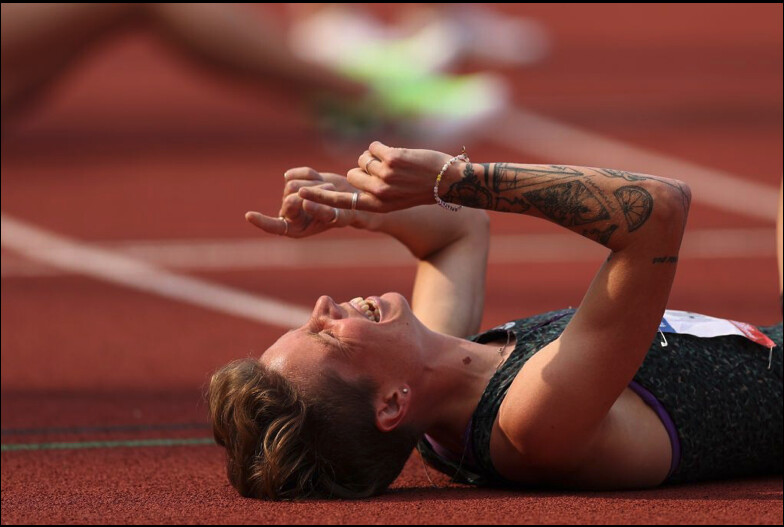
Buoyed by these confidence-boosting claims, Wilson placed second in a personal best 1:58.32 to earn a spot on Team USA.
She credits this flow state to her work with Bianca Martin, a mindset coach currently studying for her master’s degree in sport and performance psychology. Since meeting three years ago, the two have worked on many psychological aspects of performance. One of the most important, Wilson says, has been replacing negative thoughts with neutral or positive ones.
She’s far from the only track and field Olympian to use this approach to performance psychology. Many use spoken or written affirmations—statements that challenge negative thoughts and reinforce positive emotions—as well as mantras, a few words that might be repeated during a workout or race.
Here are the powerful phrases that got Wilson, 1500-meter champion Nikki Hiltz, and champion heptathlete Anna Hall to their first Olympics in Paris this summer. While mantras and affirmations tend to work best when they’re personal, you might find inspiration from their examples for your own big goals.
Looking for inspiration?
Swipe through the deck to find a mantra that resonates with you today!
Looking for inspiration?
Swipe through the deck to find a mantra that resonates with you today!
Allie Wilson’s Mantras“Just another race.”
Yes, the stakes at the Trials—and, before that, at the 2024 USA Indoor Track and Field Championships in Albuquerque in February—were higher than at most meets. But Wilson realized the more she kept her mindset and routine consistent, the better she performed.
“I’m running two laps around the track—that’s what I do every weekend,” says Wilson, a Nike athlete. “Why am I going to go berserk over it and start doing things all differently than I would, or freaking out? It’s the same thing at the end of the day; I’ve done it a million times.”
“I can win.”
In the days before the indoor championships, Wilson found herself nervously telling Martin she knew what was going to happen. Just like at every other major competition, she’d likely give it her all but come up just short. Martin stopped her and ordered her to say the opposite instead: “I can win.”
Wilson hesitated, but Martin insisted. “I would sit there and I wouldn’t speak for 10 seconds. And eventually, I would say it,” Wilson says.
Thanks to all that practice, it didn’t take nearly as long for the thought to surface during the race itself. “When it got really hard, all of a sudden, I was like, ‘Oh my god, I can win it,’” Wilson says—and she did, in 2:00.63.
“1 percent.”
With competition like Mu, who’s also the American record holder, in the race at the team trials, Wilson knew winning would take a fast time. And she wasn’t sure she could keep the pace—though her personal best was 1:58.09, in 2022, she’d only run one race faster than 2 minutes since that summer.
Martin had her calculate what time would result if she ran just 1 percent faster than her best time this season. Wilson figured out it was 1:59 with a few milliseconds. “That struck a chord with me. I was like, ‘Wow, 1 percent is so little, but it makes such a big difference,’” she says. After that, she told herself: “Even when you think you’re trying your hardest, try 1 percent harder.”
“Why not you?”
Thanks to all the work she’d done in the lead-up, Wilson says she had fewer negative thoughts during the Trials than she used to. But she still couldn’t help but express a few doubts. When she did, Martin reminded her that any three women in the final could go to the Olympics. “Why not you?” she asked Wilson.
“That was probably the one I was using on the starting line the most,” Wilson says. “I told myself, it could be any combination of three. I only have to beat six people and then I could be one of them.”
Allie Wilson’s Mantras
“Just another race.”
Yes, the stakes at the Trials—and, before that, at the 2024 USA Indoor Track and Field Championships in Albuquerque in February—were higher than at most meets. But Wilson realized the more she kept her mindset and routine consistent, the better she performed.
“I’m running two laps around the track—that’s what I do every weekend,” says Wilson, a Nike athlete. “Why am I going to go berserk over it and start doing things all differently than I would, or freaking out? It’s the same thing at the end of the day; I’ve done it a million times.”
“I can win.”
In the days before the indoor championships, Wilson found herself nervously telling Martin she knew what was going to happen. Just like at every other major competition, she’d likely give it her all but come up just short. Martin stopped her and ordered her to say the opposite instead: “I can win.”
Wilson hesitated, but Martin insisted. “I would sit there and I wouldn’t speak for 10 seconds. And eventually, I would say it,” Wilson says.
Thanks to all that practice, it didn’t take nearly as long for the thought to surface during the race itself. “When it got really hard, all of a sudden, I was like, ‘Oh my god, I can win it,’” Wilson says—and she did, in 2:00.63.
“1 percent.”
With competition like Mu, who’s also the American record holder, in the race at the team trials, Wilson knew winning would take a fast time. And she wasn’t sure she could keep the pace—though her personal best was 1:58.09, in 2022, she’d only run one race faster than 2 minutes since that summer.
Martin had her calculate what time would result if she ran just 1 percent faster than her best time this season. Wilson figured out it was 1:59 with a few milliseconds. “That struck a chord with me. I was like, ‘Wow, 1 percent is so little, but it makes such a big difference,’” she says. After that, she told herself: “Even when you think you’re trying your hardest, try 1 percent harder.”
“Why not you?”
Thanks to all the work she’d done in the lead-up, Wilson says she had fewer negative thoughts during the Trials than she used to. But she still couldn’t help but express a few doubts. When she did, Martin reminded her that any three women in the final could go to the Olympics. “Why not you?” she asked Wilson.
“That was probably the one I was using on the starting line the most,” Wilson says. “I told myself, it could be any combination of three. I only have to beat six people and then I could be one of them.”
Anna Hall’s Mantras“You’re one of the best athletes in the world—act like it.”
Hall has a history of winning. She’s claimed two NCAA titles and two previous national championships in the heptathlon, which involves seven different running, throwing, and jumping events.
But she broke her foot during the 2021 Trials, taking her out of contention for the Tokyo Games. And then, just this past January, she had knee surgery. The tight timeline for her return made it challenging to stay confident, and the first few weeks she was back at practice post-surgery, she would feel frustrated and cry frequently.
One night, she went home and took a step back. She asked herself: “How would the person who is where I am in sport act throughout this injury? How would they show up every day motivated and ready to go?” Her coaches noticed her mindset was more positive and even her body language improved, says Hall.
“I can, I will, I must.”
Hall has kept a journal ever since 2022, when she was returning from her foot injury. She typically writes in it a few times a week. Sometimes, she jots down technical cues that help her remember how she wants to feel when she’s tossing a shot put (“slide, twist, lift, HIT”) or leaping over hurdles (“tall tight shoulders down”).
But she also includes affirmations like this one, taken from her jumps coach in Florida, Nic Peterson. Hall uses it during every meet to remind herself not only of her own determination, but also the team behind her. The day of her last event the Trials, the 800 meters, it’s written three times on the top of a page of her journal, followed by the statement: “Today I will become an Olympian.”
“Prove them wrong.”
For all her winning, Hall prefers an underdog mentality. “No matter how much I’m favored to win something, in my head, I’m like, ‘Somebody thinks I’m not supposed to win this,’” she says.
This time, she had a concrete example: Early in the season, as she was regaining her post-injury footing, a prominent track and field competition ranked Hall third in early predictions for the Trials. Hall understands why they’d do that, but she still used it as fuel to outperform their projections.
“We are so back.”
The day after the Trials, Hall immediately picked up her journal again to acknowledge all she’d accomplished. In addition to a gold medal and a trip to Paris, the victory had given her a powerful mindset shift.
No longer was she questioning whether she was ready to compete after surgery—she’d done so, successfully. She’ll keep that feeling and phrase in mind, and in her journal, at the Games, where she hopes to be in contention for the win.
Anna Hall’s Mantras
“You’re one of the best athletes in the world—act like it.”
Hall has a history of winning. She’s claimed two NCAA titles and two previous national championships in the heptathlon, which involves seven different running, throwing, and jumping events.
But she broke her foot during the 2021 Trials, taking her out of contention for the Tokyo Games. And then, just this past January, she had knee surgery. The tight timeline for her return made it challenging to stay confident, and the first few weeks she was back at practice post-surgery, she would feel frustrated and cry frequently.
One night, she went home and took a step back. She asked herself: “How would the person who is where I am in sport act throughout this injury? How would they show up every day motivated and ready to go?” Her coaches noticed her mindset was more positive and even her body language improved, says Hall.
“I can, I will, I must.”
Hall has kept a journal ever since 2022, when she was returning from her foot injury. She typically writes in it a few times a week. Sometimes, she jots down technical cues that help her remember how she wants to feel when she’s tossing a shot put (“slide, twist, lift, HIT”) or leaping over hurdles (“tall tight shoulders down”).
But she also includes affirmations like this one, taken from her jumps coach in Florida, Nic Peterson. Hall uses it during every meet to remind herself not only of her own determination, but also the team behind her. The day of her last event the Trials, the 800 meters, it’s written three times on the top of a page of her journal, followed by the statement: “Today I will become an Olympian.”
“Prove them wrong.”
For all her winning, Hall prefers an underdog mentality. “No matter how much I’m favored to win something, in my head, I’m like, ‘Somebody thinks I’m not supposed to win this,’” she says.
This time, she had a concrete example: Early in the season, as she was regaining her post-injury footing, a prominent track and field competition ranked Hall third in early predictions for the Trials. Hall understands why they’d do that, but she still used it as fuel to outperform their projections.
“We are so back.”
The day after the Trials, Hall immediately picked up her journal again to acknowledge all she’d accomplished. In addition to a gold medal and a trip to Paris, the victory had given her a powerful mindset shift.
No longer was she questioning whether she was ready to compete after surgery—she’d done so, successfully. She’ll keep that feeling and phrase in mind, and in her journal, at the Games, where she hopes to be in contention for the win.
Nikki Hiltz’s Mantras
“I am capable.”
Hiltz, the Lululemon-sponsored runner who won the women’s 1500 meters in a meet-record 3:55.33, began journaling in 2023 as part of a New Year’s resolution. One part of that has been writing down affirmations like this one, followed by specific workouts and races that offer data points to back them up.
For example, Hiltz won their semifinal with the fastest time of all the heats, 4:01.40. Although that was their personal best time less than a year ago, at the Trials, “it felt like 6/10,” they wrote—far from an all-out effort. And a month before, they ran 3:59 at the Prefontaine Classic, despite doing a hard double-threshold workout the same week.
“You’re going to perform how you practice.”
In addition to a written journal, Hiltz uses the Notes app to jot down motivating, calming, or confidence-boosting sentiments. Inspiration can come from anywhere—sometimes it’s a coach or sport psychologist, but in this case, it’s from Netflix’s docuseries America’s Sweethearts: Dallas Cowboys Cheerleaders.
Hearing the coach say it to the cheerleaders before a performance—reminding them to “just go out there and do what you’ve already been doing”—caused Hiltz to think about how all their hard work in training would translate into success when it mattered.
“I have all the tools.”
Hiltz headed into the finals particularly confident of their ability not only to run fast, but to shift gears and kick hard. In their journal, they wrote that they thought they were now capable of accelerating off a 3:57 pace.
And that’s exactly what happened—after Elle St. Pierre led for the first three laps in 3:08.77, Hiltz swung wide and surged in the final 100 meters to take the win. “Every time I’ve written something like that in my journal, it kind of comes true,” Hiltz says. “That’s the power of putting it out to the world.”
“Respect everybody, fear nobody.”
Hiltz knew the field in the 1500 meters was deep, and that multiple athletes could run faster than 4 minutes. But they didn’t let that rattle them.
They’ll carry that approach over to the Games, too. Exactly a week after the Trials, Kenya’s Faith Kipyegon broke her own world record in the event, running 3:49.04—and Australia’s Jess Hull stuck with her, finishing in a new national record of 3:50.83.
While it would be easy to find this intimidating—and in moments, Hiltz does—their mental work allows them to quickly see the flip side. “We’ve all beat Jess Hull at some point or another,” they say. “Jess doing that was badass and impressive, and she’s inspiring me to go out at a faster pace than I ever have before.”
That ability to reframe is exactly why Hiltz—along with Hall and Wilson—say they’ll keep using affirmations and mantras as they head into their big races in Paris.
“When you’re on the starting line of the Olympic final, no one’s doing anything more or less than anyone else. We all have incredible coaches, and we’ve done incredible training,” Hiltz says. “What’s going to separate us from each other is the belief and the mental stuff.”
Nikki Hiltz’s Mantras
“I am capable.”
Hiltz, the Lululemon-sponsored runner who won the women’s 1500 meters in a meet-record 3:55.33, began journaling in 2023 as part of a New Year’s resolution. One part of that has been writing down affirmations like this one, followed by specific workouts and races that offer data points to back them up.
For example, Hiltz won their semifinal with the fastest time of all the heats, 4:01.40. Although that was their personal best time less than a year ago, at the Trials, “it felt like 6/10,” they wrote—far from an all-out effort. And a month before, they ran 3:59 at the Prefontaine Classic, despite doing a hard double-threshold workout the same week.
“You’re going to perform how you practice.”
In addition to a written journal, Hiltz uses the Notes app to jot down motivating, calming, or confidence-boosting sentiments. Inspiration can come from anywhere—sometimes it’s a coach or sport psychologist, but in this case, it’s from Netflix’s docuseries America’s Sweethearts: Dallas Cowboys Cheerleaders.
Hearing the coach say it to the cheerleaders before a performance—reminding them to “just go out there and do what you’ve already been doing”—caused Hiltz to think about how all their hard work in training would translate into success when it mattered.
“I have all the tools.”
Hiltz headed into the finals particularly confident of their ability not only to run fast, but to shift gears and kick hard. In their journal, they wrote that they thought they were now capable of accelerating off a 3:57 pace.
And that’s exactly what happened—after Elle St. Pierre led for the first three laps in 3:08.77, Hiltz swung wide and surged in the final 100 meters to take the win. “Every time I’ve written something like that in my journal, it kind of comes true,” Hiltz says. “That’s the power of putting it out to the world.”
“Respect everybody, fear nobody.”
Hiltz knew the field in the 1500 meters was deep, and that multiple athletes could run faster than 4 minutes. But they didn’t let that rattle them.
They’ll carry that approach over to the Games, too. Exactly a week after the Trials, Kenya’s Faith Kipyegon broke her own world record in the event, running 3:49.04—and Australia’s Jess Hull stuck with her, finishing in a new national record of 3:50.83.
While it would be easy to find this intimidating—and in moments, Hiltz does—their mental work allows them to quickly see the flip side. “We’ve all beat Jess Hull at some point or another,” they say. “Jess doing that was badass and impressive, and she’s inspiring me to go out at a faster pace than I ever have before.”
That ability to reframe is exactly why Hiltz—along with Hall and Wilson—say they’ll keep using affirmations and mantras as they head into their big races in Paris.
“When you’re on the starting line of the Olympic final, no one’s doing anything more or less than anyone else. We all have incredible coaches, and we’ve done incredible training,” Hiltz says. “What’s going to separate us from each other is the belief and the mental stuff.”
by Runner’s World
Login to leave a comment
Olympic Track and Field Stars Are Wearing Luxury Watches. Why?
IN TRACK AND FIELD, tenths (and even hundredths) of a second can make or break a race. Performance depends on extremely precise measurements and time rules all. So it makes sense that luxury watch brands would look to those athletes as natural billboards, placing their timepieces on the wrists of some of the sport's top performers.
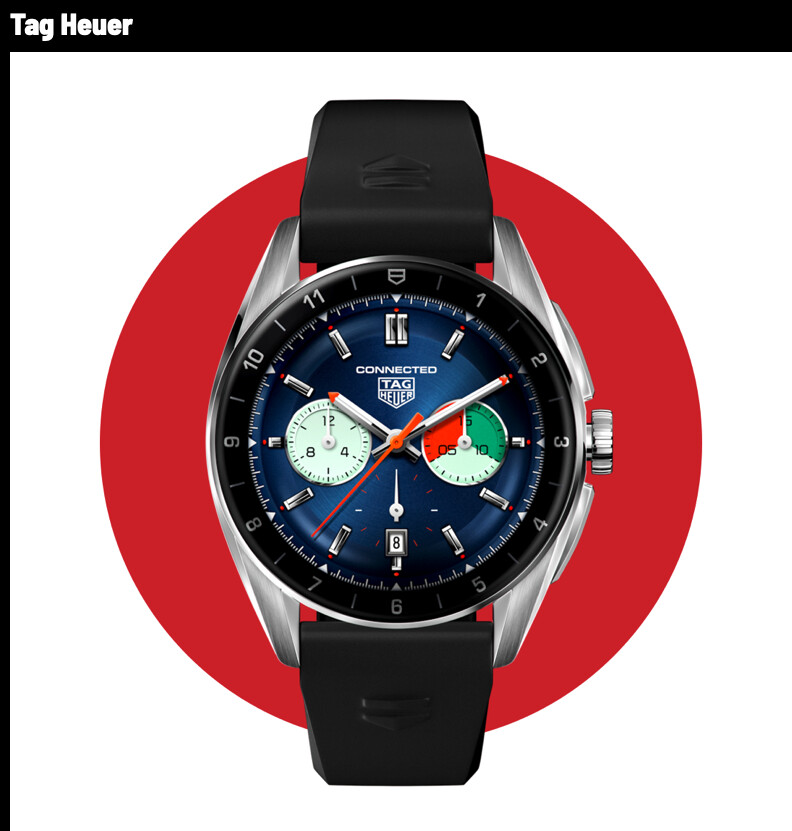
When Noah Lyles, the fastest man in the world, settled into the blocks for the 200-meter finals at the U.S. Olympic Trials in June, 4.5 million viewers tuning in via NBC and Peacock could see the glint of the sun off what appeared to be a $50,000 Omega watch.
Wearing this type of timepiece during a 19.53-second sprint is clearly a flex, since “there’s no performance reason for [these athletes] to wear luxury watches,” explains Aaron Rapf, the founder and CEO of Advantage Sports Marketing Group, a sports agency that connects brands with athletes.
Runners are no stranger to pricy performance watches (a high-end Garmin can cost upwards of $900), and luxury watch companies are increasingly aligned with elite runners to “connect their company values to the sports landscape—which is one of the last bastions of true culture,” he adds. “If you want to be in a moment where you attract millions of people’s eyeballs at one time, it’s sports.”
These race day cameos are part of a more subtle approach to marketing, says Pierre-Loïc Assayag, CEO and co-founder of Traackr, an influencer marketing software company. “In the past, luxury brands were more focused on the product and the luxury associated with that product,” he says. “Now, these companies are taking the top athletes and putting them in front of their target audience, or one close to it, to demonstrate by proximity that ‘we are the precision brand’ or ‘we are the endurance brand.”
The kind of maneuvering uses a third party—one that’s fast, flashy, and accomplishing amazing feats—to craft an image the brand wants audiences to respond to. And by choosing athletes as brand champions, companies deftly align themselves with the hallmarks of high performance: precision, prestige, innovation, exclusivity, heritage, and craftsmanship.
In the past, those buzzwords were more likely to call to mind country club-esque activities (think: tennis or horseback riding) or auto racing, where the traditional consumer has been very upper class, living a high-cost lifestyle. But as culture skews more towards sport, health, and wellness, leaning into the popularity of running opens companies up to a new class of consumers, says Jessica Quillan, a luxury fashion brand and content strategist. “Track and field seems more accessible, because even though these athletes are performing at a super elevated level, anyone can go out and run,” she explains.
By association, watches become a more accessible form of wearable luxury. You may not wear one to train or on race day like the elite, sponsored atheltes, but a sporty aesthetic can translate into your everyday life; post-run, you can still swap your COROS smartwatch for a sleek, sporty timepiece from a brand like Omega (which happens to sponsor the Diamond League, an annual series of pro track and field competitions). And though you may not be ready to buy a five-figure watch now, these companies are playing the long game; by connecting themselves with major players in sport, they’re hoping to build brand recognition and loyalty among potential future customers.
The Watch Brands Olympic Runners Are Wearing
For those looking to upgrade their Garmin—now or as a future reward for finally achieving that personal best—these are a few of the luxury watches your favorite track and field stars have been sporting.
Two-time Olympic gold medalist Sydney McLaughlin-Levrone, who will represent Team USA in Paris again after breaking her own World Record in the 400-meter hurdles in June, has been sponsored by Tag Heuer since 2021.
Tag Heuer is often considered the Cadillac of luxury watches, and McLaughlin-Levrone’s preferred watch, the Connected Calibre E4, is closest to the average runner’s GPS smartwatch: It operates on Wear OS by Google; has a 1.28-inch AMOLED display with crisp resolution; houses a heart rate sensor, barometer, and compass; and holds a 24-hour charge, including a one-hour sports session. The basic model, which includes a rubber strap, starts at $1,250.
Olympic bronze medalist Josh Kerr is a double World Champion—in the 1,500-meter and 3,000-meter—which made him a natural representative for Swiss watch brand Longines, the official partner and timekeeper of the 2022 Commonwealth Games in Birmingham. Kerr, who is not currently working with Longines, recently ran a 3:45.34 in the Bowerman Mile, a historic and prestigious race held annually at the Prefontaine Classic in Eugene, OR, to set a new world-leading time in the event and a new British record. Back in 2022, Kerr wore the-limited edition HydroConquest XXII Commonwealth Games, a sporty steel dive watch with an automatic caliber, or engine, one-directional ceramic bezel, luminescent indices and hands, and an anti-reflective coating for crystal clear readability in any situation.
In addition to their Paris 2024 partnership, Omega is the official sponsor of the Diamond League (an annual series of elite track and field competitions) and counts Noah Lyles—one of the biggest personalities in track and field—as an ambassador. Lyles, who earned a bronze medal in the 200-meter race at the 2020 Tokyo Games and has his sights on breaking Usain Bolt’s records in the 100- and 200-meter races, wears Omega’s iconic Speedmaster Moonphase.
This style was introduced in the 1980s, but the latest model—an oversized, steel-on-steel timepiece—was the first to earn a Master Chronometer certification thanks to a self-winding engine designed to withstand temperature fluctuations, water immersion, and electromagnetic frequencies. The timepiece can also hold up to the shock that comes with covering 100 meters in less than 10 seconds (when it's on Lyles's wrist, at least).
Sprinter Dina Asher-Smith is the fastest British woman on record, with two Olympic bronze medals from the 4 x 100-meter relay to her name. She’s also no stranger to luxury partnerships, having previously modeled for Louis Vuitton, Valentino, and Off-White, and has been working with Hublot since 2018. Asher-Smith has promoted a variation on Hublot’s flagship model, the Big Bang One Click, which starts at $14,200.
Its smaller face was designed for slimmer wrists, and uses the brand’s patented “One Click” fastening system so wearers can swap out the straps for other colors or materials. The sporty, semi-skeletonized hands balance out flashiness of the diamonds on the bezel, and a self-winding caliber packs plenty of power into the compact timepiece.
Ahead of what she says will be her final Olympic Games, Jamaican sprinter Shelly-Ann Fraser-Pryce—the most decorated athlete in 100-meter history—announced a partnership with Richard Mille. Fraser-Pryce wears the RM 07-04 Automatic Sport, the first women’s sports watch from the McLaren of watch brands, which retails at $185,000 (it’s the same watch Nafi Thiam, a double Olympic champion from Belgium, wore while setting a new pentathlon world record in 2023). The skeletonized aesthetic is housed in a compact case with rigid finishings for shock-resistance, and the button on the side allows the wearer to switch between winding, neutral, and time setting modes for the crown. While it would be nearly impossible to read during a race, at 36 grams it’s lighter than most standard running watches.
by Men’s Health
Login to leave a comment
Kenya's hopes rest on Daniel Mateiko, Nicholas Kimeli & Bernard Kibet to win 10,000m gold since 1968
Daniel Mateiko, Nicholas Kimeli, and Bernard Kibet will have the pressure to deliver Kenya's gold medal since Naftali Temu's exploits at the 1968 Mexico City Olympics.
The trio of Daniel Mateiko, Nicholas Kimeli and Bernard Kibet are tasked with a daunting task to reclaim Kenya’s 10,000m title once they toe the line at the Stade de France on Friday, August 2.
The men’s race starts at 10:20 p.m. East African Time with the trio taking on one of the strongest fields in history with the main aim to reclaim Naftali Temu’s title won at the 1968 Mexico City Olympics.
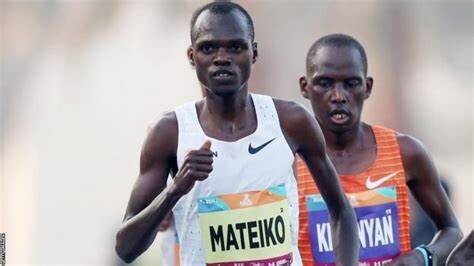
Kenyans have had a rough time of winning the gold medal following the emergence of Ethiopians and Ugandans who have dominated the race. Kenenisa Bekele, Mo Farah, Joshua Cheptegei have dominated the global stage with Bekele and Farah winning two titles each.
Selemon Barega won the title at the delayed 2020 Tokyo Olympic Games with Cheptegei and Jacob Kiplimo taking second and third place respectively.
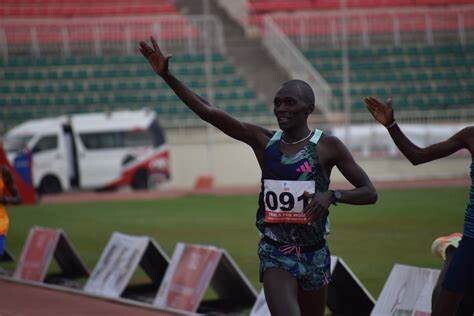
Mateiko made headlines, winning the Prefontaine Classic to secure his slot to the Olympic Games with Kimeli and Kibet finishing second and third respectively. The trio has the much-needed confidence to impress following their training sessions that have been extensive so far.
Mateiko and Kimeli train with Eliud Kipchoge and they certainly draw inspiration from the two-time Olympic champion who will also be chasing his third Olympic title.
However, they will not have an easy task in title reclamation as they go up against very strong opponents. Defending champion Barega will be out to defend his Olympic gold with Cheptegei also in the mix.
Being the world record holder and a three-time world champion, Cheptegei will going for the only title missing in his decorated CV. The Ethiopians have fielded their best, with world leader Yomif Kejelcha and Berihu Aregawi also in the mix. Paris marks the first Olympics for Kejelcha who will have the pressure on him after the world lead.
Cheptegei has raced sparingly, making it difficult to gauge his shape. He will be competing for the first time since end of May when he finished ninth in the 5000m at the Diamond League Meeting in Oslo.
The American duo Grant Fisher and Nico Young have also been entered and they will also be chasing history for the US. Young will b debuting at the Olympics and the race will just be his third 10,000m race on a track.
On his part, Fisher has great experience racing on the global stage and after finishing fifth at the delayed 2020 Tokyo Olympics, he will be out to improve on that.
by Abigael Wafula
Login to leave a comment
Paris 2024 Olympic Games
For this historic event, the City of Light is thinking big! Visitors will be able to watch events at top sporting venues in Paris and the Paris region, as well as at emblematic monuments in the capital visited by several millions of tourists each year. The promise of exceptional moments to experience in an exceptional setting! A great way to...
more...Chepkoech believes she will be lucky at the Olympics on her third attempt
The third time is the charm. This is what 2019 World 3,000m steeplechase champion Beatrice Chepkoech is banking on as she braces up for a podium finish at the Olympic Games in Paris.
Chepkoech narrowly missed the podium in Rio 2016, finishing fourth (9:16.05) and placed seventh (9:16.33) in Tokyo 2021.
Tokyo saw Uganda's Peruth Chemutai (9:01.45), USA's Courtney Frerichs (9:04.79) and Hyvin Kiyeng (9:05.39) seal the podium while Rio Olympics top spots went to Bahrain’s Ruth Jebet (8:59.72), Kiyeng (9:07.12) and USA's Emma Coburn (9:07.63).
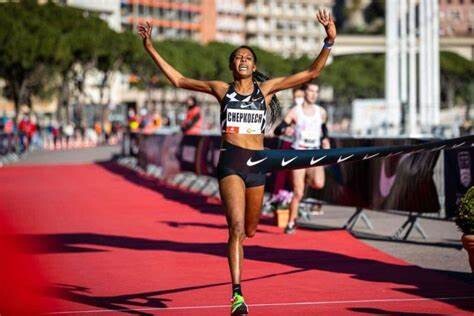
After heartbreaks in Rio and Tokyo, the 33-year-old is laser-focused on clinching the elusive Olympic medal.
“I have missed the podium in my last two Olympic appearances but I am optimistic on my third attempt. I will secure a podium finish,” Chepkoech revealed.
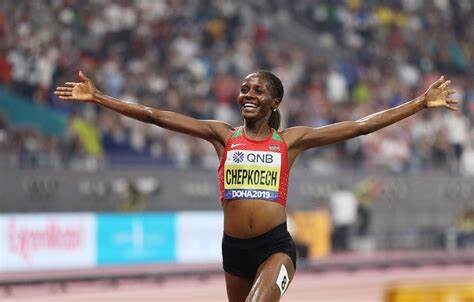
She also highlighted the importance of an Olympic medal to add to her rich trophy cabinet. “It is everybody’s dream to win an Olympic medal. I will be more than happy if I secure a podium in Paris,” she added.
Chepkoech’s impressive resume includes the 2019 world title in Doha, where she set a course record of 8:57.84 while leading Coburn (9:02.35) and Germany’s Gesa Felicitas (9:03.30) to the podium.
She also holds the African title having clocked 9:15.61 in Accra last year with Chemutai (9:16.07) and Ethiopia’s Lomi Muleta (9:26.63) sealing the podium.
Chepkoech is a bronze medallist in the 3,000m at the World Indoor Championships in Glasgow. She finished third in 8:22.68 behind Ethiopia’s Gudaf Tsegay (8:21.13) and USA’s Elle Purrier (8:20.87).
Despite strong competition from World Champion Winfred Yavi and Uganda’s Chemutai at the Paris Olympics, Chepkoech remains unfazed.
“Anything can happen in Paris, I can’t say I fear anyone. I am going to run my race and do my very best,” she stated.
Yavi edged out Chepkoech at the 2023 Championships in Budapest beating her to the title in 8:54.29 with Chepkoech settling for second in 8:58.98 and Faith Cherotich (9:00.69) sealing the podium.
Chemutai beat her to the Prefontaine Classic title on May 25, clocking 8:55.09 with Chepkoech clocking 8:56.51. At the Paris Diamond League earlier this month, Chepkoech finished ninth place in 9:27.21.
Yavi (9:03.68), Alice Finot (9:05.01) and Britain’s Elizabeth Bird (9:09.07) claimed the podium.
Chepkoech has been honing her skills at the Nyayo Stadium, where she has been training three times a week ahead of Paris.
“Training has been intense but rewarding. I do training on Monday, Wednesday and Friday and I have been focusing on my weaknesses to ensure peak form in Paris,” she shared.
In Paris, she will be joined by world U20 champions Jackline Chepkoech (2021) and Faith Cherotich (2022). The duo have been intensifying their training in Eldoret.
Chepkoech highlighted that training alone has been lonely but reiterated her desire to put in more effort.
“The other athletes are training in Eldoret so I am alone. It’s a challenge but I have to do my best to be ready for the Olympics,” Chepkoech stated.
She further highlighted the importance of having her coach along with the assigned coaches from the National Olympics Committee of Kenya.
“Training with my coach has been good because we can strategise on the areas we see weaknesses. It was a good initiative from the federation to have me train with my coach along with the assigned coaches,” she revealed.
by Teddy Muley
Login to leave a comment
Paris 2024 Olympic Games
For this historic event, the City of Light is thinking big! Visitors will be able to watch events at top sporting venues in Paris and the Paris region, as well as at emblematic monuments in the capital visited by several millions of tourists each year. The promise of exceptional moments to experience in an exceptional setting! A great way to...
more...Daniel Simiu aware of tough competition as he gears up for full marathon debut in Chicago
Daniel Simiu has shifted focus to making his full marathon debut later this year after missing out on the Olympic Games 10,000m team to the Olympics.
Daniel Simiu is bracing up for a tough show as he eyes a successful full marathon debut at the Chicago Marathon scheduled for Sunday, October 13.
The world 10,000m silver medalist noted that it is a new venture and he will approach the race with respect. He added that is a rare opportunity for athletes to make their debuts in a World Marathon Major and expressed gratitude to the race organizers and his sponsors, Nike, for the opportunity.
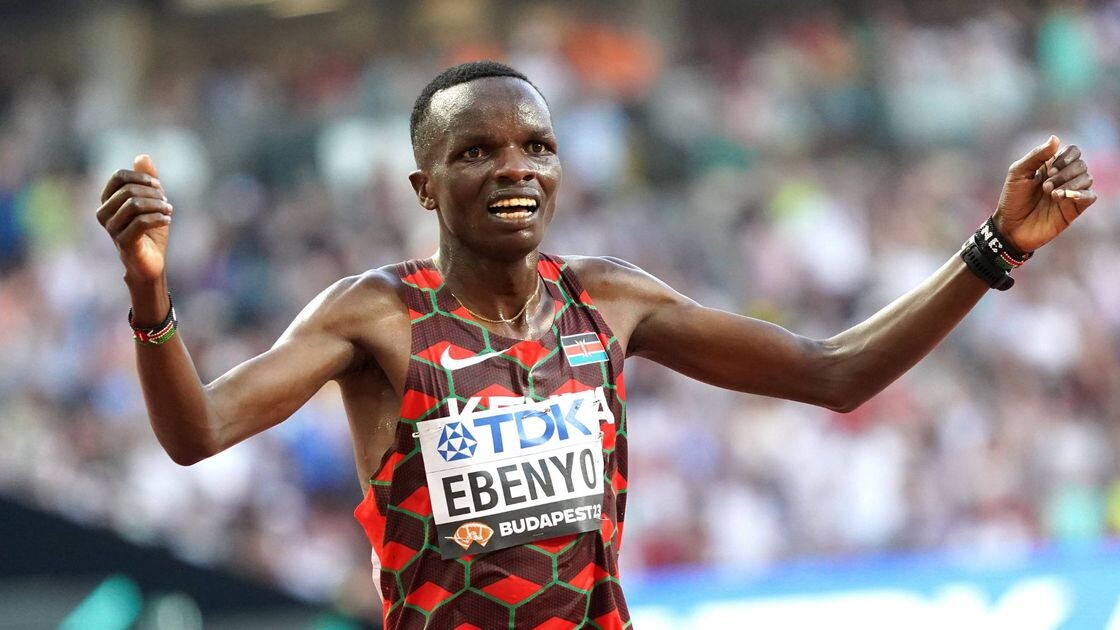
Simiu will be hoping to impress and hopefully finish the race successfully without any major challenges noting that it is a longer distance and not what he is used to.
“I’m much more excited to be a part of the Bank of America Chicago Marathon and I know it’s very tough and it’s a very long distance because it is 26.2 miles,” Simiu said.
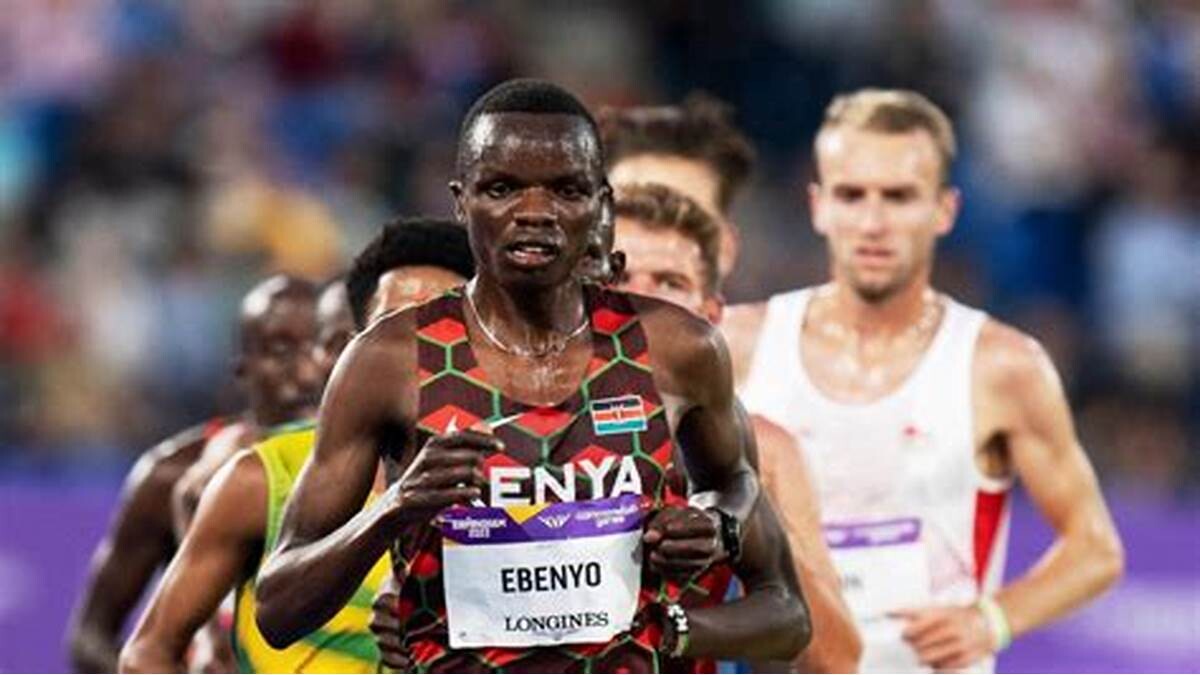
“I will be approaching the marathon with huge respect because I’m new there and I hope to do my best. Starting with the world majors is exciting and it’s not for everybody to be there but I thank the organizers for giving me a chance and the Nike running group and I know it has big names but my name is also big,” Simu added.
The 28-year-old was hoping to make the Kenyan Olympic team in the 10,000m but encountered a visa hitch that saw him arrive in the US for the Prefontaine Classic a few hours to the race.
During the race, he fell and could only afford an eighth-place finish in 27:24.33. The top two athletes were guaranteed a spot in the Olympic team but the third athlete would be selected at the discretion of the selection panel.
Athletics Kenya decided to pick the top three athletes who crossed the finish line, meaning Daniel Mateiko, Nicholas Kimeli and Bernard Kibet would fly Kenya’s flag high.
Following his exclusion from the team, Simiu has now shifted focus to making the full marathon debut at the Chicago Marathon.
by Abigael Wafula
Login to leave a comment
Edwin Kurgat confident of ending Kenya's 36-year wait for Olympics 5,000m title
Little-known Edwin Kurgat is inspired by his London Diamond League performance to win the 5,000m Olympics title that the country last claimed in 1988 Seoul Games.
Edwin Kurgat is now ready to stun the masses at the Paris Olympic Games and reclaim Kenya’s gold medal in the men’s 5000m following his London Diamond League Meeting third-place finish.
Kurgat, competing in the men’s 3000m, crossed the finish line third in 7:28.53 as Dominic Lobalu set a Swiss record, clocking a personal best time of 7:27.68 to win the race. Grant Fisher finished second in the hotly-contested race, clocking 7:27.99.
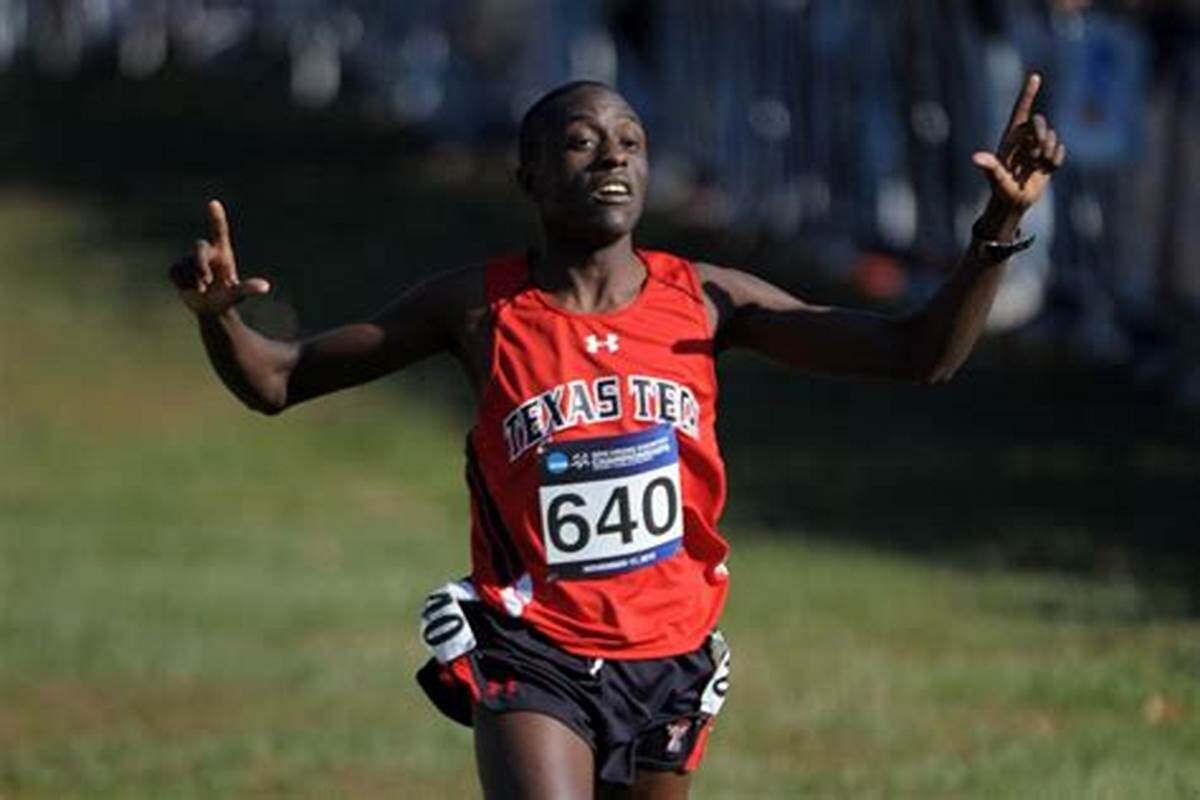
Kurgat admitted that the race is very vital as he heads to the Olympic Games. He disclosed that throughout the race, his body was feeling good and going under 7:30 is a sign of fireworks at the Olympic Games.
The last time Kenya won a gold medal at the Olympic Games in the men’s 5000m was at the 1988 Seoul Olympic Games courtesy of the late John Ngugi.

“Throughout the race I was feeling good, really composed. This was the race where I wanted to run good to get ready for the Olympics so I'm glad with how I ran,” Kurgat said.
“I'm feeling confident going in to Paris, running under 7:30 is a big achievement for me and now I'm just ready for what's to come. The crowd was amazing, they helped push me to get it finished,” he added.
The 28-year-old has been impressive this season, starting from his indoor campaign to the outdoor races. He opened his season with the 3000m and 5000m indoor races at the New Balance Indoor Grand Prix and Boston University John Thomas Terrier Classic respectively finishing second and first.
Kurgat finished fourth in the men’s 10,000m at the Prefontaine Classic, missing out on the Olympic team shortly but bounced back in the 5000m to finish third and automatically qualify for the event.
by Abigael Wafula
Login to leave a comment
Paris 2024 Olympic Games
For this historic event, the City of Light is thinking big! Visitors will be able to watch events at top sporting venues in Paris and the Paris region, as well as at emblematic monuments in the capital visited by several millions of tourists each year. The promise of exceptional moments to experience in an exceptional setting! A great way to...
more...Winfred Yavi eager to win Bahrain a second steeplechase Olympic gold medal at Paris Olympics
Winfred Yavi will be out to claim a second Olympic gold medal for Bahrain at the Paris Olympics after Ruth Jebet set the pace at the 2016 Rio Olympic Games.
Kenyan-born Bahraini Winfred Yavi has plans to emulate Ruth Jebet and win Bahrain the second Olympic gold medal as she heads to the Paris 2024 Olympic Games.
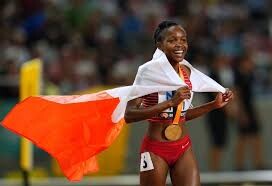
Jebet claimed Bahraini’s first gold medal in the women’s 3000m Steeplechase at the delayed 2016 Rio Olympic Games and Yavi will be looking to reclaim the title after they lost it to Uganda through Peruth Chemutai at the delayed 2020 Tokyo Olympic Games.
The reigning world champion noted that this season, their main focus will be to surprise fans at the Stade de France with her impeccable run to win the women’s steeplechase. At the moment, Yavi is working on every aspect of her training as she looks to dine with the finest steeplechasers from across the globe.
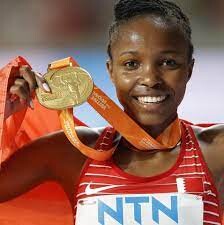
The 24-year-old added that she knows every athlete who makes it to the Olympic Games has worked for that spot and she has a lot of respect for all of them.
“I have a lot of respect for each and every competitor who has qualified for the Olympic Games. My team and I are focusing on getting ready,” Yavi told Gulf Daily News.
“The Olympic Games are one of the biggest arenas in the world, and it is a proud moment for me. The best athletes in the world are at the Olympic Games. You have to prepare well.”
Yavi added that it’s incredible to fly the Bahrainian flag high once again as she looks to make an impact just like she did at the World Championships in Budapest, Hungary and the Prefontaine Classic, the Diamond League Meeting in Eugene.
This season, she claimed her first win of the season at the Diamond League Meeting in Paris and will be looking to maintain her form to the Olympics. She had a faulty start to her season, finishing ninth at the Prefontaine Classic but managed a bounce back in Paris.
“It is an honor to have a team and a coach who I can collaboratively work together with. I am looking forward to the Olympic Games, and I am trusting the process. It’s incredible!” Yavi said.
by Abigael Wafula
Login to leave a comment
Paris 2024 Olympic Games
For this historic event, the City of Light is thinking big! Visitors will be able to watch events at top sporting venues in Paris and the Paris region, as well as at emblematic monuments in the capital visited by several millions of tourists each year. The promise of exceptional moments to experience in an exceptional setting! A great way to...
more...Gudaf Tsegay, Lamecha Girma head Ethiopia's 43-athlete squad to battle Kenya in Paris Olympics
In the 2021 Tokyo Olympics, Kenya bested Ethiopia as the top African nation, finishing 19th overall with 10 athletics medals.
World record-holders Gudaf Tsegay and Lamecha Girma are set to lead a formidable Ethiopian squad of 43 athletes at the upcoming Paris Olympic Games.
The robust team comprising top-tier talent across various track and field events promises to offer fierce competition to their long-time rivals Kenya in the race for Olympic medals.
Tsegay will be competing in the 10,000 meters, 5,000 meters, and 1,500 meters events.
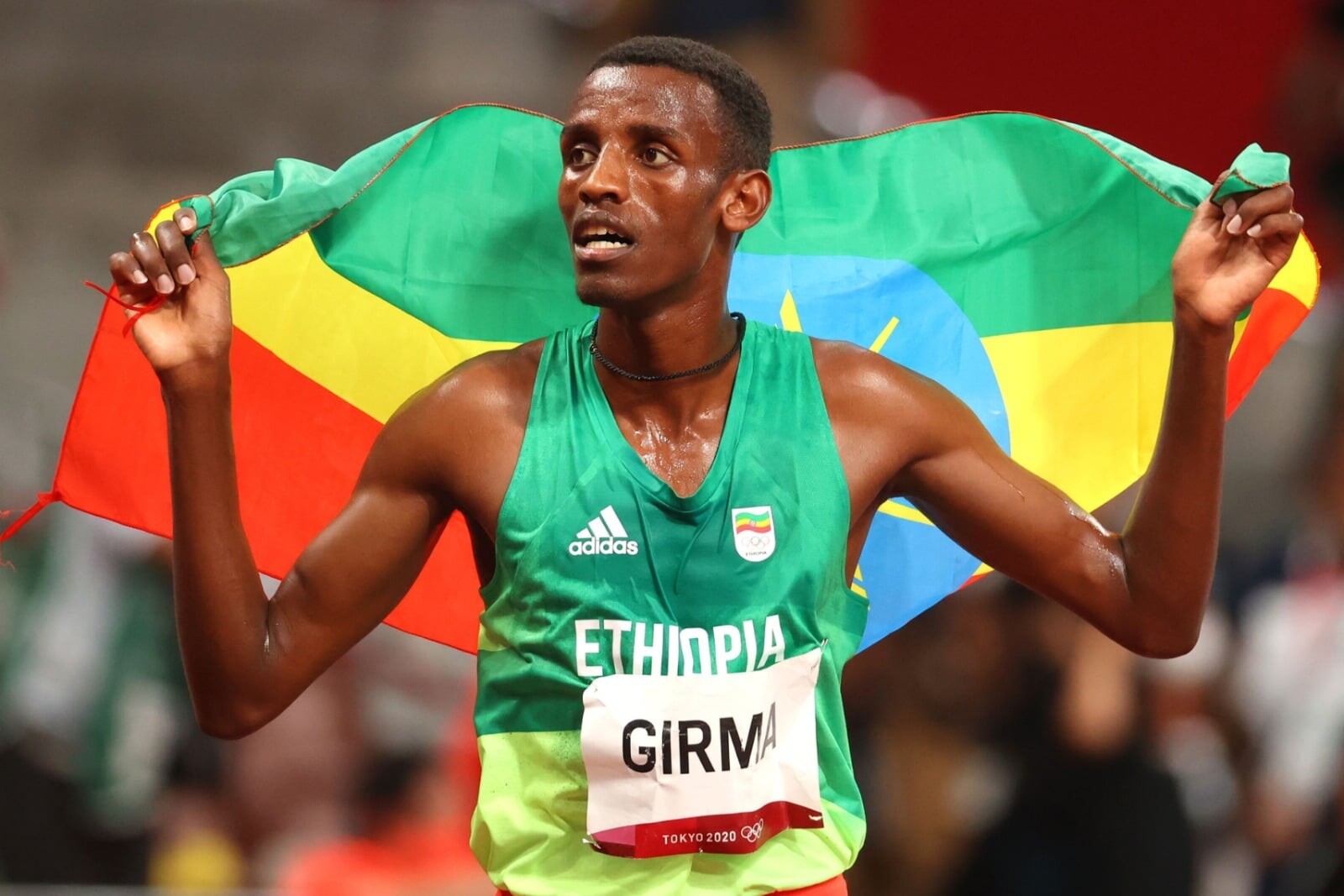
The 27-year-old athlete's standout performance at the Prefontaine Classic, where she shattered the world record in the 5,000 meters with an astounding time of 14:00.21, means she will be challenging rival Kenya's Faith Kipyegon who will chase two gold medals after winning the 1500m and 5000m.
The women's team also boasts an impressive lineup in the 800 meters, featuring Tsige Duguma, Habitam Alemu, and Werknesh Mesele, with Nigist Getachew as the reserve.
In the 1,500 meters, Tsegay will be joined by Birke Haylom and Diribe Wolteji, with Hirut Meshesha on standby. Medina Eisa and Ejgayehu Taye will support Tsegay in the 5,000 meters, with Freweyni Hailu as reserve, while Fotyen Tesfay, Tsigie Gebreselama, and Aynadis Mebratu will compete in the 10,000 meters.
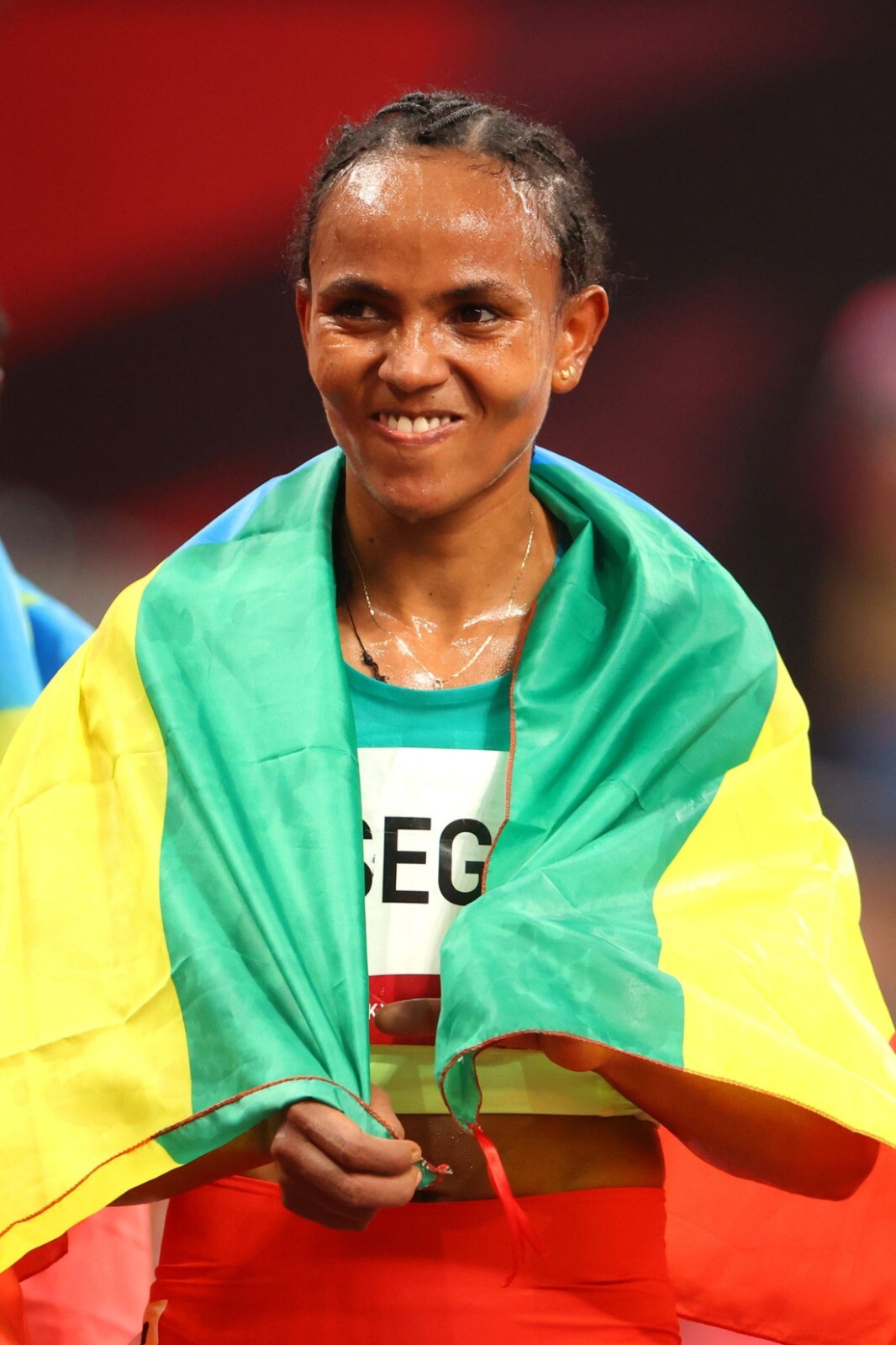
The 3,000 meters steeplechase will see Sembo Almayew and Lomi Muleta in action, and the marathon team includes Tigst Assefa, Amane Beriso, and Megertu Alemu, with Gotytom Gebreslase as reserve.
On the men's side, the team is equally impressive as Abdisa Fayisa, Samuel Tefera, and Ermias Girma will compete in the 1,500 meters.
The 5,000 meters team includes Hagos Gebrhiwet, Yomif Kejelcha, and Addisu Yihune, with Selemon Barega as reserve.
Kejelcha will also contest the 10,000 meters alongside Berihu Aregawi and Biniam Mehari, with Barega again as a reserve.
Lamecha Girma, alongside Samuel Firewu and Getnet Wale, will vie for victory in the men's 3,000 meters steeplechase, with Abrham Sime as reserve.
Ethiopia team to Paris
Women
800 meters: Tsige Duguma, Habitam Alemu, Werknesh Mesele, Nigist Getachew (Reserve)
1500 meters: Gudaf Tsegay, Birke Haylom, Diribe Wolteji, Hirut Meshesha (Reserve)
5000 meters: Gudaf Tsegay, Medina Eisa, Ejgayehu Taye, Freweyni Hailu (Reserve)
10,000 meters: Gudaf Tsegay, Fotyen Tesfay, Tsigie Gebreselama, Aynadis Mebratu (Reserve)
3000 meters Steeplechase: Sembo Almayew, Lomi Muleta
Marathon:Tigst Assefa, Amane Beriso, Megertu Alemu, Gotytom Gebreslase (Reserve)
Men
1500 meters: Abdisa Fayisa, Samuel Tefera, Ermias Girma, Teddese Lemi (Reserve)
5000 meters: Hagos Gebrhiwet, Yomif Kejelcha, Addisu Yihune, Selemon Barega (Reserve)
10,000 meters: Yomif Kejelcha, Berihu Aregawi, Selemon Barega, Biniam Mehari (Reserve)
Men's 3000 meters steeplechase: Lamecha Girma, Samuel Firewu, Getnet Wale, Abrham Sime (Reserve)
Marathon: Sisay Lemma, Deresa Geleta, Kenenisa Bekele, Tamirat Tola (Reserve)
20 km Race walk: Misgana Wakuma
by Festus Chuma
Login to leave a comment
Paris 2024 Olympic Games
For this historic event, the City of Light is thinking big! Visitors will be able to watch events at top sporting venues in Paris and the Paris region, as well as at emblematic monuments in the capital visited by several millions of tourists each year. The promise of exceptional moments to experience in an exceptional setting! A great way to...
more...Faith Kipyegon offers success tip to upcoming athletes
Faith Kipyegon has revealed the challenges of being a track athlete and how she manages to keep the focus ahead of the Olympic Games.
Double world record holder Faith Kipyegon has opened up on the struggles of running and disclosed how she manages to keep going through the tough times.
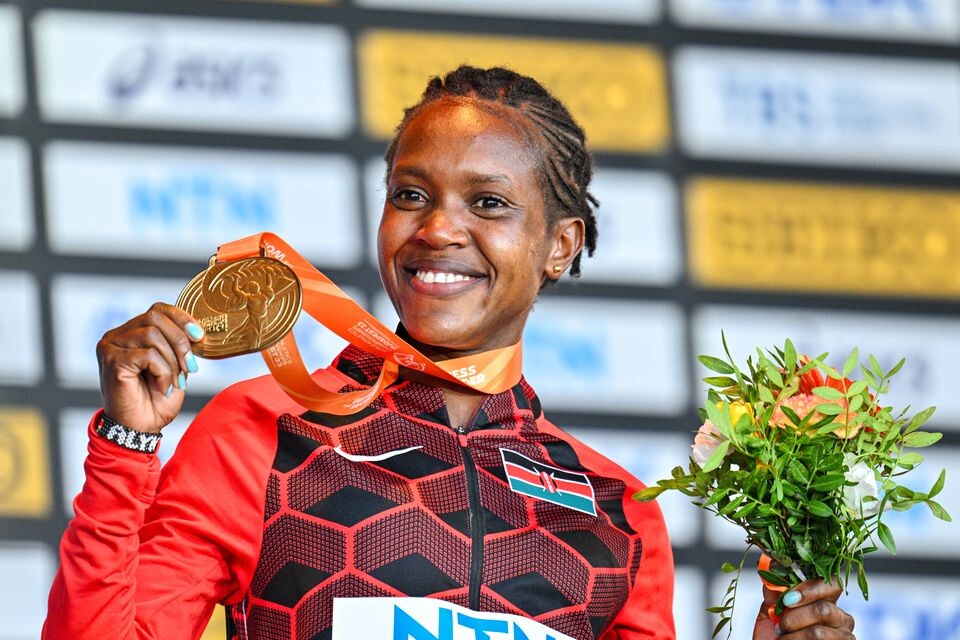
The three-time world 1500m champion explained that it’s not a smooth sailing and just like any other athlete, she faces hurdles in her pursuit for success but she does not allow challenges to pull her back.
She added that her main goal is to work hard and put in the effort as she looks to achieve the goals she has set. She is a testimony that nothing comes easy and from time to time, Kipyegon has also insisted on athletes working hard.
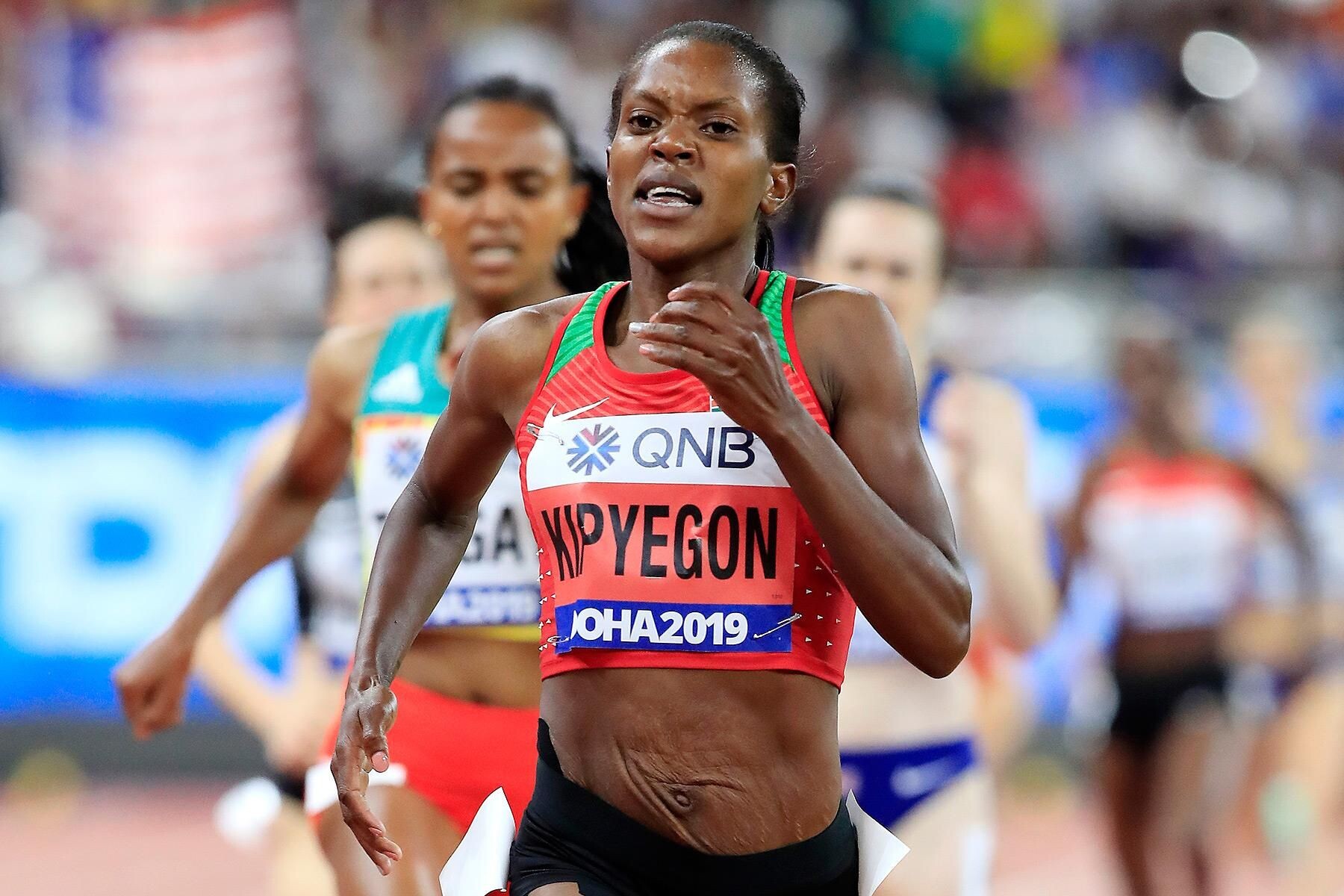
“It’s not a smooth sailing…it’s only that hard work and being patient is the most important thing. I know being patient and training hard will get me where I want to be,” the two-time Olympic champion said.
She opened her season at the Kenyan Olympic trials, where she punched the 1500m and 5000m tickets to the Paris Olympics, dominantly winning both races.
This comes after her final track race that was at the Prefontaine Classic, the Diamond League Meeting in Eugene in 2023. She intended to open her season at the Diamond League Meeting in Xiamen but was forced to withdraw due to an injury setback.
The 30-year-old was then confirmed for the Prefontaine Classic but could not compete there due to the injury. After sealing tickets to the Olympics, she will be chasing history on the global stage, hoping to become the first woman to win three successive Olympic trials in the 1500m.
She will also be keen to win the 5000m gold medal, and etch her name in the annals of history. She made history at last year’s World Championships in Budapest, Hungary to win her third 1500m title and also claim top honours in the 5000m.
“It will be history to win the 1500m for the first time and focus on the 5000m…I know it will not be easy but I’m going to try and see what will be possible,” Kipyegon said.
Her next stop will be at the Diamond League Meeting in Paris, France, where she intends to have a great build up to the Olympics.
by Abigael Wuafula
Login to leave a comment
How to Run in the Heat Like the Pros
Over the past decade, training for the heat has gone from a nice-to-have to an absolute necessity for top runners. Professor Chris Minson is attempting to perfect the science.
After a few pleasant hours sitting in the sun watching the Prefontaine Classic in Eugene, Oregon last month, I headed down into the bowels of Hayward Field for a grueling test for running in the heat. Chris Minson, a professor of human physiology at the University of Oregon, had invited me to try the heat adaptation protocol he has developed for elite athletes from the university and from local pro teams like the Bowerman Track Club. I’ve written about Minson’s research several times, so experiencing the protocol first-hand seemed like a good idea… at the time.

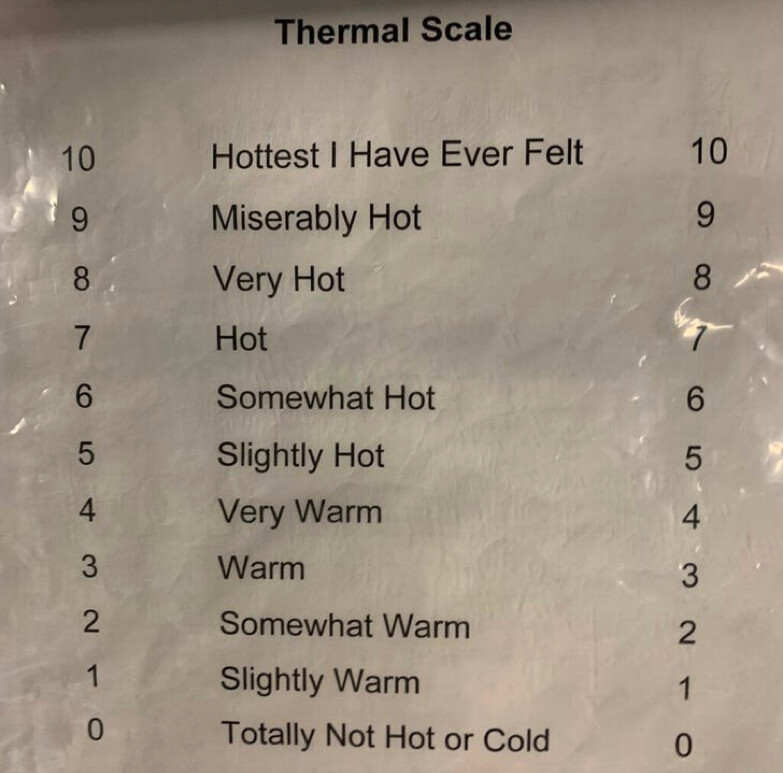
Heat is a big deal in sports these days, and it’s only getting bigger. In recent years we’ve had major events like the world track and field championships in insanely hot places, like Qatar, where the marathons had to be started at midnight. But summertime in Eugene (where the Olympic Track Trials will take place later this month) and Paris (where the Olympics will be held) can also be sizzling. Over the past decade, heat preparation has gone from a nice-to-have to an absolute necessity for top athletes. The details of how to prepare remain more art than science, though, so I was interested to see how Minson put theory into practice.
Back in the 1920s and 1930s, scientists developed the first heat adaptation protocols for workers in South Africa’s sweltering gold mines. The gold standard for heat adaptation evolved from that work: spend at least an hour a day exercising in hot conditions, and after 10 to 14 days you’ll see a bunch of physiological changes. Your core temperature will be lower, your blood volume will be higher, you’ll begin sweating and dilating your blood vessels at a lower temperature threshold, you’ll sweat more, and so on. Put it all together and you’ll be able to stay cooler and run faster in hot conditions.
In fact, there’s even evidence that this type of heat adaptation can make you faster in moderate weather, perhaps as a result of the extra blood plasma. In the lead-up to the 2008 Olympics, Minson was working with American marathoner Dathan Ritzenhein, helping him prepare for the expected hot conditions in Beijing. But he started to worry about what would happen if it wasn’t hot: would all the heat training actually make Ritzenhein slower? Minson and his colleagues ran a study to find out; the results, which they published in 2010, suggested that heat adaptation helps even in cool conditions. That’s the study that really kicked interest in heat training into higher gear.
The problem with the classic approach, though, is that training for an hour in hot, muggy conditions is exhausting. If you’re trying to do a hard workout, you won’t be able to hit the splits you want. If you’re trying to do an easy run, it’s going to take more out of you than it usually does, potentially compromising your next hard workout or raising your risk of overtraining. So how do you get the benefits of heat adaptation without tanking the rest of your training plan?
Minson’s Exercise & Environmental Physiology Lab at the University of Oregon, which he co-runs with fellow physiologist John Halliwill, is located in the Bowerman Sports Science Center, a state-of-the-art facility located under the northwest grandstand of Hayward Field. The key piece of equipment, for my purposes, is an environmental chamber that can take you down to 0 degrees Fahrenheit or up to 22,000 feet of simulated altitude, deliver simulated solar radiation, or blast you with wind. For my heat run, Minson set the dials to 100 degrees Fahrenheit and 40 percent humidity.
Earlier that day, Minson had given me a thermometer pill to swallow, which would enable him to wirelessly track my core temperature as the run progressed. “I’ll need that back,” he warned me, poker-faced. Fortunately, he was joking.
Before I entered the chamber, I peed in a cup so that Minson could check my urine-specific gravity, the ratio of how dense your urine is compared to water. I clocked in at 1.025, marginally above Minson’s threshold of 1.024 for mild dehydration. I blame it on having spent a few hours sitting in the sun watching the track meet. Then he checked my weight, so that he’d be able to figure out how much I sweated during the test.
When I stepped into the chamber, wearing nothing but shorts and running shoes, I could feel the blast of heat, but it wasn’t too oppressive—like a really hot day at the beach but under an umbrella. I started with a five-minute warm-up at a slow pace, gradually ramping up until I hit 7:30 mile pace. Then the formal protocol started: 30 minutes at that pace.
The pace was self-chosen; Minson refused to tell me the pace I “should” run. The goal was to settle in at an effort that I could comfortably maintain for half-an-hour, and that would get me hot enough to trigger adaptations—a core temperature of about 101 degrees Fahrenheit is thought to be about right—without overshooting and roasting myself. Most of the elite runners he works with end up choosing paces between 7:00 and 8:00 per mile. I slotted myself in the middle of that range—which, let’s be honest, was a dumb thing to do for an aging non-elite runner.
Still, the running itself felt easy to me. Every five minutes or so, Minson had me rate my perceived effort on the Borg scale, which runs from 6 to 20, and also rate how hot I felt. For this, he used his own 0 to 10 thermal scale.
I started out at the effort of 10 (“very light”) and thermal sensation of 3 (“warm”). After 15 minutes, my effort had crept up to 12 (“somewhat hard”), but my thermal sensation was still 3. By this point I was sweating up a storm, watching with interest as my splatters of sweat made a distinctly asymmetric pattern on the treadmill’s control panel. (Clearly I needed to visit the biomechanics lab down the hallway to sort out my stride asymmetries.)
In the latter part of the test, my sweat rate seemed to drop—not a great sign, since it could signal dehydration. My effort topped out at 13, but my thermal sensation crept up to 4 (“very warm”), then 5 (“slightly hot”), then 6 (“somewhat hot”). I still felt under control, though. Then the test ended, and Minson ushered me off the treadmill, into the next room, and into the hot tub, where he asked me to submerge myself up to my neck. The water was set to 104 degrees Fahrenheit, and it was awful. My thermal sensation immediately spiked up to 8 (“very hot”) and then 9 (“miserably hot”).
The odd thing is that the water was basically the same temperature as I was. My core temperature had crept up to 103.2 degrees towards the end of the run, and hit 103.7 shortly afterward. The water wasn’t warming me up in any significant way, but it was robbing me of the superficial perception of coolness that I got from air currents and the evaporation of sweat. It’s a good reminder of why cooling techniques like ice towels or simply dumping water on your head can be valuable: they can dramatically change your perception of how hot you are.
Sitting in that hot tub wasn’t fun, but it’s a key tool for Minson in his efforts to help athletes adapt to heat without interfering with their normal training. It extends the period of thermal stress without trashing their legs. A half-hour easy run, even in hot conditions, isn’t that draining for a well-trained athlete. At least, it’s not supposed to be.
After I’d had a cold shower and chugged a few bottles of sports drink, Minson went over the results with me. The good news is that I hadn’t seemed very bothered by the heat. I’d sweated out 2.2 pounds of fluid, indicating a fairly high sweat rate of around 2 liters per hour. That suggests that I should already be reasonably well equipped to race in warm conditions.
The bad news, though, was that my numbers didn’t make sense. There are no “wrong” answers on a subjective scale, but mine were puzzling. As the test proceeded and my core temperature drifted over 100 degrees, I kept claiming that I felt merely 3-out-of-10 “warm.” That might mean that I’m immune to heat—but more likely, it suggests that I wasn’t properly attuned to my body’s condition. If you’re running in the heat but you’re totally oblivious to how hot you’re getting, that can be a recipe for disaster.
In fact, my subjective numbers were strikingly similar to those of an elite runner Minson has worked with—one who has struggled in the heat. Minson helped the athlete renormalize his heat perception, so that conditions he originally labeled as 3 out of 10 became a more realistic 5 or 6 out of 10.
The ability to accurately gauge how hot you are is important even in training, because those core temperature pills are about $70 a pop. Once athletes have a sense of how hot they should feel during heat adaptation runs, Minson has them judge their half-hour efforts by feel. If they start getting too hot—above 7 on the Minson Scale—they can turn a fan on in the heat chamber to avoid overheating. There’s no rigid schedule of when they do these heat runs: they fit them in around their other training and racing and travel plans.
In practice, of course, most of us don’t have access to a high-tech heat chamber and temperature-controlled hot tub. But studies in recent years have shown that you can use a variety of approaches to get your core temperature up: hot baths, saunas (Minson has one in his lab, and another in his backyard), overdressing during runs. The big-picture takeaway from Minson’s approach is that you can find ways of getting a heat stimulus without disrupting the rest of your training.
To do that, though, you need to be able to gauge when you’re getting overcooked. When I got back to my hotel room that afternoon, I realized that I was feeling wrung out, as if I’d done a long, hard workout rather than a half-hour jog. I’d missed the mark. I decided to take the next day off, and dreamed that night of Minson’s other recent research focus: ice baths.
by Outside Online
Login to leave a comment
After Double Knee Surgery, This Runner is Poised to Make Team USA for the Paris Olympics
Val Constien has surmounted obstacles along every step of her career—including a devastating knee injury just 13 months ago. Now the 28-year-old is a favorite to make her second Olympic team in the 3,000-meter steeplechase heading into the U.S. Track and Field Olympic Trials.
Val Constien started 2023 in the best shape of her life. She had been an Olympian in the 3,000-meter steeplechase at the Tokyo Olympics. And yet, she had no professional sponsorships.
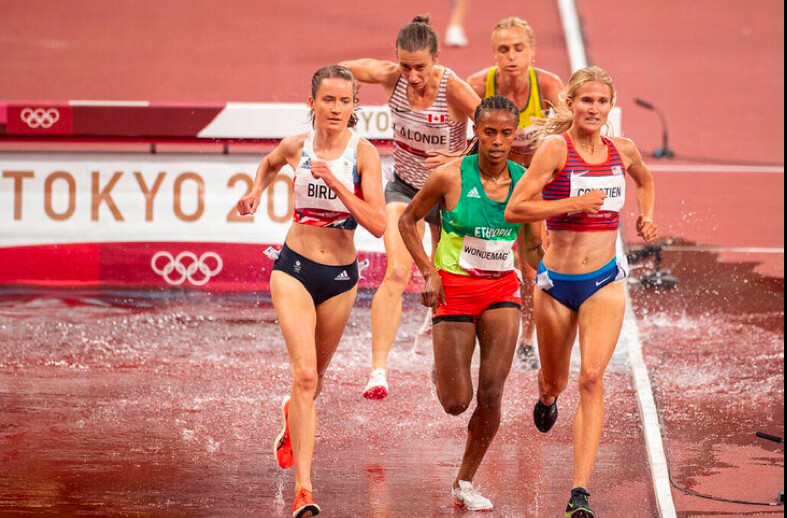
Constien, then 26, had spent the several years after graduating from the University of Colorado in 2019 continuing to train for the steeplechase under her college coaches while working a full-time job mostly because she loved it, and partly because she was betting on herself that she could continue to progress to a higher level.
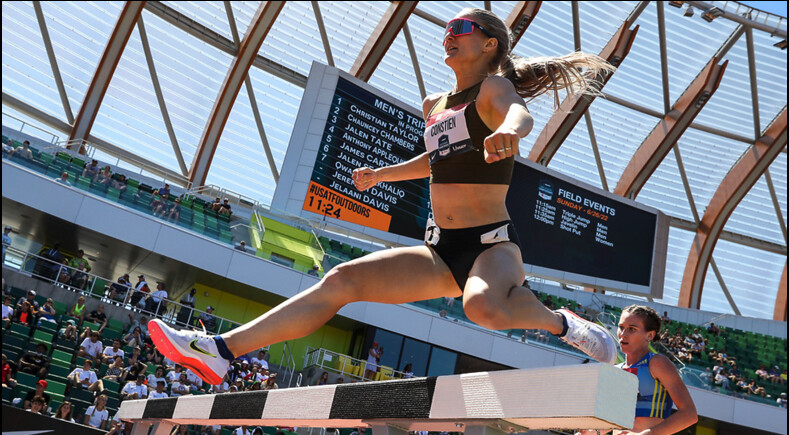
While studying environmental engineering at CU, Constien twice earned All-American honors in the steeplechase and helped the Buffaloes win a NCAA Division I national championship in cross country. She then finished 12th in the steeplechase at the Tokyo Olympics in 2021. And yet the Boulder, Colorado-based runner hadn’t been able to attract a sponsorship deal from a shoe and apparel brand. She squeezed her workouts in before work, paid for her travel to races, and remained determined and hopeful.
But then, after winning a U.S. indoor title in the flat 3,000 meters in early 2023, she caught the attention of Nike, which signed her to a deal that would lead into the 2024 Olympic year. Finally, it was the break she’d be hoping for.
However, less than three weeks after signing the contract, while running the steeplechase in a high-level Diamond League meet in Doha, Qatar, Constien landed awkwardly on her right leg early in the race and immediately knew something was wrong. She could be seen visibly mouthing “Oh no!” on the livestream, as she hobbled to the side of the track out of the race.
It was a worst case scenario: a torn ACL in her right knee. That meant surgery and a long road back to running fast again.
“That was awful,” said Kyle Lewis, her boyfriend who was watching the race online from Boulder. “The doctors over there initially told her they thought it was a sprain, but she came home and two days later she got an MRI and found out that it was a completely torn ACL, and she was obviously very upset. That was only a couple of weeks after she signed the Nike deal. But that’s just kind of been like with Val’s whole career. Nothing has ever come easy to that girl.”
How Constien, now 28, returned to top form a year later to become one of the top contenders to make Team USA in the steeplechase heading into the June 21-30 U.S. Olympic Trials in Eugene, Oregon—her preliminary race on June 24 will be only 398 days after her knee was surgically repaired—is a testament to the grit and confidence Constien possesses.
“It’s all just an extension of how tough I am and how willing I am to make hard decisions, and how badly I want it,” Constien said. “I love running. If I didn’t love running this much, I would’ve quit a long time ago.”
Constien had surgery last May 2023 at the Steadman Clinic in Vail, Colorado, not far from where she grew up. But that also presented a challenging twist.
One of the most popular types of ACL reconstructions for athletes is called a patella tendon graft, in which the doctor cuts off pieces of bone from the patient’s tibia and patella and several strands of the patella tendon and uses those materials to replace the ACL. Usually those grafts are harvested from the same injured leg, but doctors determined Constien’s right patella had a bone bruise on it and wasn’t healthy enough to use. So instead, they grafted the replacement materials from her left leg. That meant undergoing surgery on both legs, rendering her recovery even more difficult.
For the first two weeks after surgery, she couldn’t stand up or sit down on her own. She had trouble moving around and even had to sit down to take a shower. It took a full month until she started to get comfortable enough to go on short, easy walks and start to regain her mobility.
“The first month post-op was really devastating,” she said. “I was in a lot of pain, and it was hot and I was uncomfortable. I’m glad he did it the way he did it, but it was a really, really challenging recovery.”
All the while, though, Constien never stopped thinking about getting back to racing and the prospect of what 2024 might hold. That’s what helped her make a huge mental shift two weeks after the surgery and refocus all of her energy into returning to peak form and chasing another Olympic berth.
That was obviously easier said than done, but Constien has grown used to working hard and battling adversity. Her college career had been disrupted by injuries and slow progress. She was overlooked by brands when she got out of school in 2019 and again in 2021 after she slashed 7 seconds off her personal best time to finish third at the U.S. Olympic Trials and earn a spot in the Tokyo Olympics. And after she ran two strong races in Tokyo—the first international races of her career—to make it to the final and place 12th overall.
Even when she’s been overlooked or discounted, Constien has always believed in her potential. And that’s why, after a year of hyper-focused dedication, she’s on the brink of making it back onto Team USA to compete in this summer’s Paris Olympics.
“I’ve told her many times, no matter what happens after this point, what a comeback it’s already been,” Lewis said. “But what’s amazing about her is that, after that initial rough part, when she wasn’t able to walk, she just did an incredible job of compartmentalizing and being focused. I never saw her get sad or upset. She was always just super clinical about everything and really happy. It’s been incredible to watch.”
All last summer and fall, she continued building strength and began rejuvenating her aerobic strength—running more miles, getting stronger and getting faster. And that was amid working full-time doing quality assurance work for Stryd, a Boulder-based company that makes a wearable device to monitor running power and gait metrics. Heather Burroughs and Mark Wetmore, who have coached Constien since 2014, knew she had made considerable progress. But it wasn’t until early February that they began to realize the magnitude of her comeback.
“There was a point this winter, when she wasn’t running races, yet but she had some workouts that impressed me,” Burroughs said. “I wasn’t really worried about her ability to get fit enough the last four months, but it was whether her knee could handle the steeple work, especially the water jump.”
They never discussed that—because there was no point—and Constien went boldly into the outdoor season with her goal of breaking the 9:41.00 Olympic Trials qualifying standard. She started training outdoors in March and started her season by running a strong 1500-meter race on April 12 near Los Angeles (she won her heat in 4:12.27). But it wasn’t until May 11—roughly a year after she blew out her knee in Doha—that she ran her first steeple race.
At the Sound Running Track Fest, she ran patiently (with a smile on her face most of the way) just off the lead for the seven-and-a-half-lap race. She then unleashed an explosive closing kick to outrun Kaylee Mitchell down the homestretch and win in 9:27.22—securing her place in the Olympic Trials. That got her an invitation to the Prefontaine Classic, an international Diamond League meet on May 25 in Eugene, where she ran the best race of her life and finished fifth—and first American—in a new personal best of 9:14.29.
That put Constien at No. 7 on the all-time U.S. list. But more importantly, Constien closed hard after Uganda’s Peruth Chemutai had split the field apart en route to a world-leading 8:55.09, the sixth-fastest time in history.
“I’m more impressed by her comeback than she is, and it’s because I think she expected it,” Burroughs said. “It’s not that I didn’t expect it, but it was still improbable. But even now that she’s come back, she’s not impressed with herself at all. After the Prefontaine meet, I texted her about the race, and I got a five-word response—‘Let’s get back to work’—just very businesslike. She’s just dialed in and, to me, that says, ‘My big goal is yet to come.’”
For the last decade-plus, Emma Coburn and Courtney Freirichs have dominated the U.S. women’s steeplechase. They both suffered season-ending injuries this spring (broken ankle and torn ACL, respectively). Their absence leaves the event wide open for the likes of Constein, who is ranked second, and Krissy Gear, who enters the meet at the top seed (9:12.81) and as the defending national champion. But rising stars Courtney Wayment (9:14.48), Olivia Markezich (9:17:36), Gabrielle Jennings (9:18:03), and Kaylee Mitchell (9:21.00) are among several fast, young runners eager to battle for a spot on the Olympic team.
Constien knows she has two just goals to execute: run smart and fast enough to qualify for the finals on June 27, and then do whatever it takes to finish among the top three in that race.
Burroughs believes she’s as fit and as strong as she’s ever been, much improved since 2022, when she finished a disappointing eighth at the U.S. championships (9:42.96) while recovering from Covid. In fact, she’s even much better than her breakout year in 2021.
Over the past several weeks in Boulder, Constien has sharpened her fitness, including a final tuneup on June 12: a robust tempo run on the track with two hurdles per lap, which was preceded and followed by several fast 200-meter repeats. She’s also sharpened her perspective.
“There were definitely some dark times where I doubted myself and I doubted the process,” Constien said. “But I kind of just had to lock those thoughts away and just try to focus on the positive. And it’s really paid off.
“I never gave up when I didn’t have a sponsor and had to figure it all out on my own,” she added. “So tearing my ACL, yeah, that really sucks. That was really, really hard. But a part of me was like, ‘I’ve already done the hardest thing ever’ just by staying in the sport on my own. I look at it like, ‘I am the toughest person out here regardless of that ACL.’”
Login to leave a comment
Why Daniel Simiu was not selected for the men's 10,000m for Paris Olympics
The selection panel has given a candid explanation of why Daniel Simiu was left out of the men's 10,000m team at the Paris 2024 Olympics.
The selection panel, led by Athletics Kenya Nairobi Chair Barnaba Korir has explained why world 10,000m silver medallist Daniel Simiu was snubbed from the men’s 10,000m team to the Paris 2024 Olympics.
As per the International Olympic Committee, the first two athletes to cross the finish line automatically qualify for the event with the third athlete being chosen by a panel of selectors.
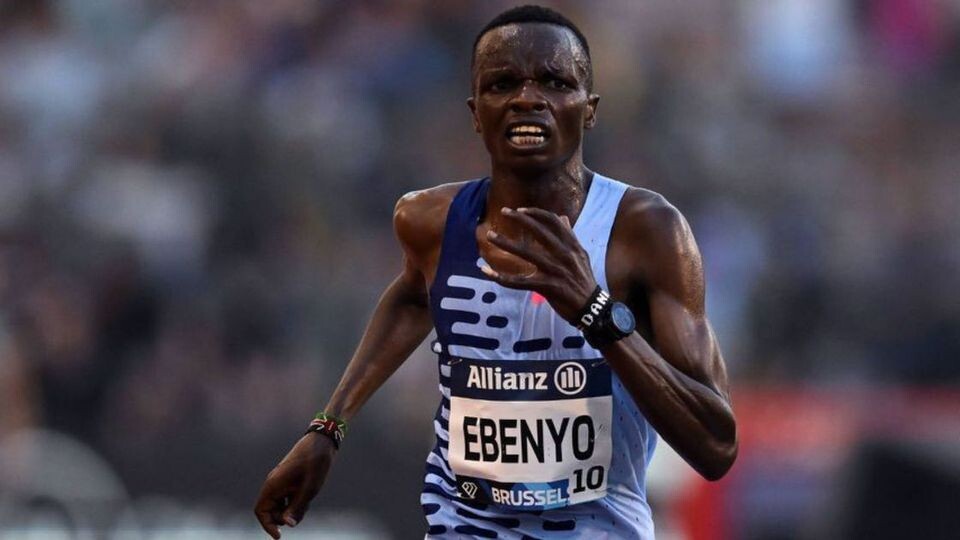
Daniel Mateiko and Nicholas Kimeli finished first and second respectively with Bernard Kibet finishing third in the race. Simiu stumbled and fell, but he had to push himself and could only afford an eighth-place finish at the event.
Athletics Kenya president Jack Tuwei weighed in and explained that all athletes had a n equal chance of qualifying and they all arrived at Oregon in good time ahead of the race.
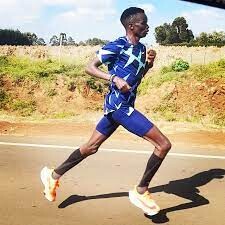
“We had a bit of a challenge with the travel documents but made sure that all the athletes who had been selected to go to Oregon to go there for the trials, Ebenyo included. There was a challenge but we made sure they all ended up there and they came back safely,” Tuwei said.
Meanwhile, Korir explained that Simiu arrived in Oregon, two days before the race, and had enough time to rest and also prepare himself for the race.
He added that there was tough competition since most athletes had qualified and they scratched their heads to come up with that decision.
“The preparation of the team to go to Oregon was very rigorous and the team that was selection process was done by the technical bench and the coaches who have been engaging with these athletes.
“Every athlete who had the opportunity to go and compete was contacted and nobody was left out in this process. The athletes who have been selected have all qualified and the 10,000m is currently limited and they have very few races in Europe.
“The decision was that most athletes had qualified and give them an opportunity to race and give them a feel of the track before the Paris Olympics. The selection had some problems but every athlete that was supposed to go there made it.
“Ebenyo made it there two days prior to the competition and he had an opportunity to rest and he had an advantage. All of them were okay and ready and the coaches prepared the athletes very well,” Korir said.
He added the committee had to check the performance of Kibet and Simiu and they realised that the former had also been performing well and there was no way he could have been left out.
He added that they did not want to name the team in Oregon since making the decision would be tough and they had to come back to the country to sit down and come up with a team.
“The committee realised that the third athlete had been performing well in other championships and there was no way he would be dropped. Selecting the men was very tough.
“We did not name the team since we had to sit down and rigorously decide on who was going to make the team. They made the decision according to many other reasons and the 10,000m was superb and the run was amazing,” Korir said.
Meanwhile, Milcah Chemos added that Kibet has shown impressive performances in previous races and he also played a huge role in Team Kenya winning silver at the World Championships in Budapest, Hungary.
She added that at the Prefontaine Classic, he fought hard for the third place and he deserves a chance. Chemos also believes that Kibet will not disappoint at the Paris 2024 Olympics.
“I was in Oregon and I witnessed all that was going on, so for the number three, we came up with them because of their performance. All athletes had an equal chance in Oregon and we all saw how Bernard did his best especially when the light had gone, he tried so had to close the gap.
“In Budapest, he also played a huge role in ensuring Kenya won the silver medal. It was hard to give out the number three but at least we sat, almost 10 of us, and we came up with the number three and I believe he deserves the position,” Chemos said.
by Abigael Wuafula
Login to leave a comment
Paris 2024 Olympic Games
For this historic event, the City of Light is thinking big! Visitors will be able to watch events at top sporting venues in Paris and the Paris region, as well as at emblematic monuments in the capital visited by several millions of tourists each year. The promise of exceptional moments to experience in an exceptional setting! A great way to...
more...Jakob Ingebrigtsen sends Josh Kerr message in statement 1,500m victory at European Championships
The Norwegian completed the double in Rome after victory in the 5,000m and will resume his rivalry with world champion Kerr at the Paris Olympics in one of the sport’s most gripping rivalries
Norway's Olympic champion Jakob Ingebrigtsen won the 1,500 metres in Rome on Wednesday for a record sixth European Championship gold.
The 23-year-old charged down the final metres and was all by himself when he crossed the finish in 3:31.95, a championship record, to become the most decorated male athlete ever in the continental championship.
Belgian Jochem Vermeulen took the second spot on the podium in 3:33.30 while Italian Pietro Arese was third in 3:33.34.
"Today it's about winning. At the same time, I'm looking for answers in every single question I'm asked. Today I got a lot of good answers," he told a Norwegian broadcaster.
Ingebrigtsen is expected to form one of the most compelling rivalries of this year's Paris Olympics against Briton Josh Kerr, who denied him the gold in Budapest last year.
Ingebrigtsen hurled himself over the finish to win last month's Oslo Diamond League meet, after finishing second to Kerr over the mile race days earlier at the Prefontaine Classic.
Login to leave a comment
Sha'Carri Richardson looking to make her Olympic debut
At the very end of Sha’Carri Richardson's road to redemption lies a gold medal.
The track and field star, whose 2021 disqualification cost her a chance to compete in the Tokyo Olympics, is quickly making her way down that road as she looks to secure her spot on Team USA for the 2024 Olympics in Paris.
"What would it mean to make it to Paris? Just literally all the training, all of the support, all of the naysayers, it pays off," Richardson told NBC. "It pays off in that moment when you realize when you made that Olympic team."

Richardson, a Dallas native, made the 2021 Olympic team after winning 100m event at the trials to qualify, but she later test positive for THC, the chemical in cannabis. She was disqualified for one month, which prevented her from competing in on sports' grandest stage during the Tokyo Games.
The Olympics went on without her.

She returned to the track at the 2021 Prefontaine Classic, finishing ninth. She returned to Olympic form nearly two years later, officially kicking off her revenge tour.
She won the 100m at the U.S. Track and Field Championships in a time of 10.82 seconds. She then claimed the title of fastest woman in the world with her 100m win at the 2023 World Athletic Championships in Budapest. She went on to kick off the Olympic year with a win at the Prefontaine Classic in a time of 10.83 seconds.
"I'm better, I'm stronger and I'm wiser," Richardson said. "I just knew that I was in a different position that I've never been in my entire life."
That soon could lead the 24-year-old to other places she has not yet been: the Olympics, and possibly the top of the podium.
Richardson is scheduled to run in her first Olympic trials preliminary on June 21 in Eugene, Oregon.
If she qualifies for the Games, she'll look to become the first American woman to win gold in the 100 meter since Florence Griffith-Joyner in 1988.
Richardson is back on track, literally and figuratively, and she credits her family for helping to lead her down the road to Paris.
"My family is so special to me, only for the fact that they know me, supported me and been there for me much longer than I even knew I was going to be who I was," Richardson said. "They knew who I was going to be before I even put it together."
by Mike Gavin
Login to leave a comment
Paris 2024 Olympic Games
For this historic event, the City of Light is thinking big! Visitors will be able to watch events at top sporting venues in Paris and the Paris region, as well as at emblematic monuments in the capital visited by several millions of tourists each year. The promise of exceptional moments to experience in an exceptional setting! A great way to...
more...Abel Kipsang puts slow start to season behind as he gears up for tough Olympic trials
Africa 1500m champion Abel Kipsang has disclosed the reason behind his slow start to the season and exuded confidence ahead of the Olympic trials scheduled for this weekend.
Africa 1500m champion Abel Kipsang has exuded confidence ahead of the Olympic trials scheduled for Friday and Saturday at the Nyayo National Stadium.
Kipsang has been off to a mixed start to his season and he explained that his body took sometime to respond to training hence the slow start to his season. He opened his season at the national cross-country championships before make his season debut on the track during the African Games national trials.
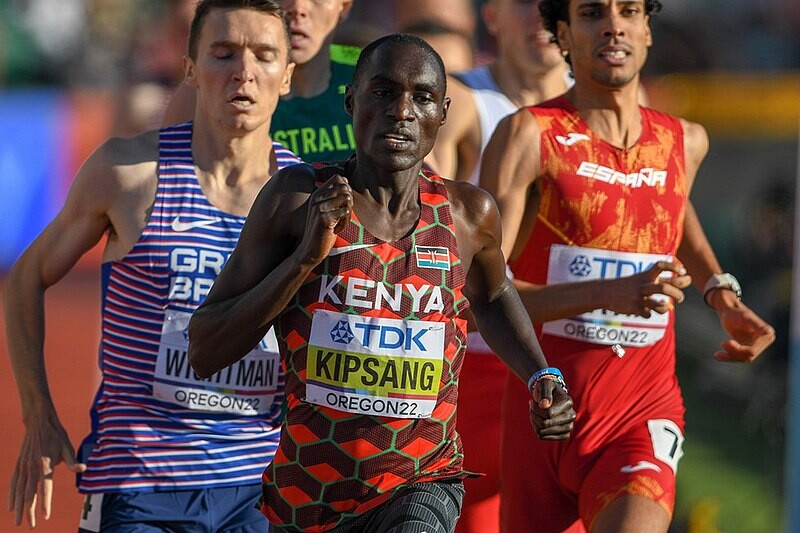
He went to the African Games in Accra, Ghana where he finished second behind Brian Komen and then jetted back into the country for the Kip Keino Classic where she finished fifth in the 800m.
Kipsang then competed in the National Police Service Championships, where he won the race, before finishing 13th at the Diamond League Meeting in Doha. The Kenyan then finished 14th at the USTAF Los Angeles Grand Prix.
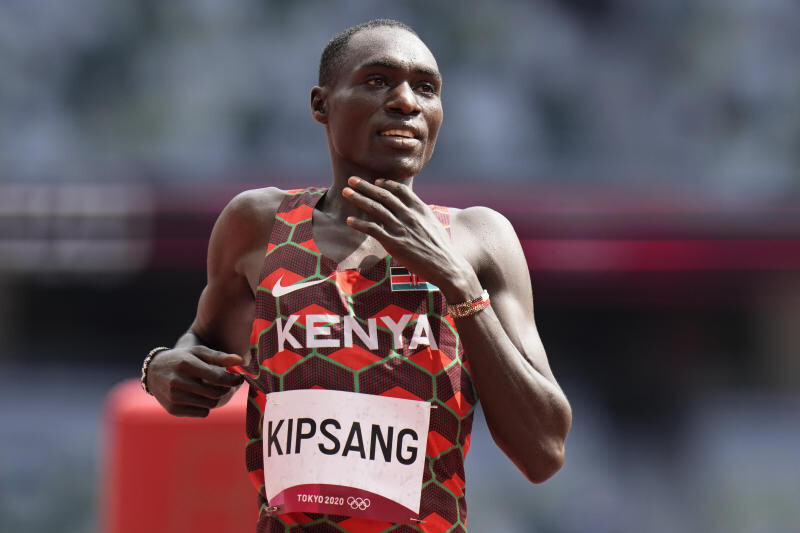
The 27-year-old also competed in the mile at the Prefontaine Classic, the Diamond League Meeting in Eugene, where he finished 12th.
“I know the trials are coming and this season I have not been at my best but I will fight hard and I’m very confident that I’ll make the cut to the Olympics team,” he told Pulse Sports.
“I didn’t have an injury but my body struggled to keep up the pace and was not responding to training the way I wanted. I sat down with my coach and trained well and I feel like my body is doing well at the moment."
The Alex Sang-coaches athlete added that the 1500m at the moment is very unpredictable and anyone can carry the day.
“You cannot win everyday because now in the 1500m, everybody is doing well and they will all be fighting for that Olympic slot,” Kipsang said.
“If I make the cut to the Olympics team, it will be something very nice. I can’t promise right now because I’m yet to qualify but if I do, I will work very hard.”
by Abigael Wuafula
Login to leave a comment
Paris 2024 Olympic Games
For this historic event, the City of Light is thinking big! Visitors will be able to watch events at top sporting venues in Paris and the Paris region, as well as at emblematic monuments in the capital visited by several millions of tourists each year. The promise of exceptional moments to experience in an exceptional setting! A great way to...
more...Eugene mile clash intensifies Kerr-Ingebrigtsen rivalry ahead of Paris
With a lap and a half to go in the Bowerman Mile at last month’s Prefontaine Classic, Josh Kerr made what he described as a “dumb decision” – on purpose.
The world 1500m champion raced to the front at the Wanda Diamond League meeting, ahead of Jakob Ingebrigtsen and Yared Nuguse, the third- and fourth-fastest milers of all time, a move whose intention was daring them to chase him down. When neither could, Kerr burst through the line with a world-leading British record of 3:45.34 and bragging rights – for now.
Having said at the pre-event press conference that he was racing to win, not settle tension between himself and Ingebrigtsen after months of banter between the overnight rivals, Kerr settled who was best over one mile at least on this day at Hayward Field. As to who will be the best in the long run, that remains to be seen – because each runner left declaring confidence for their presumed rematch at the Paris Olympics.
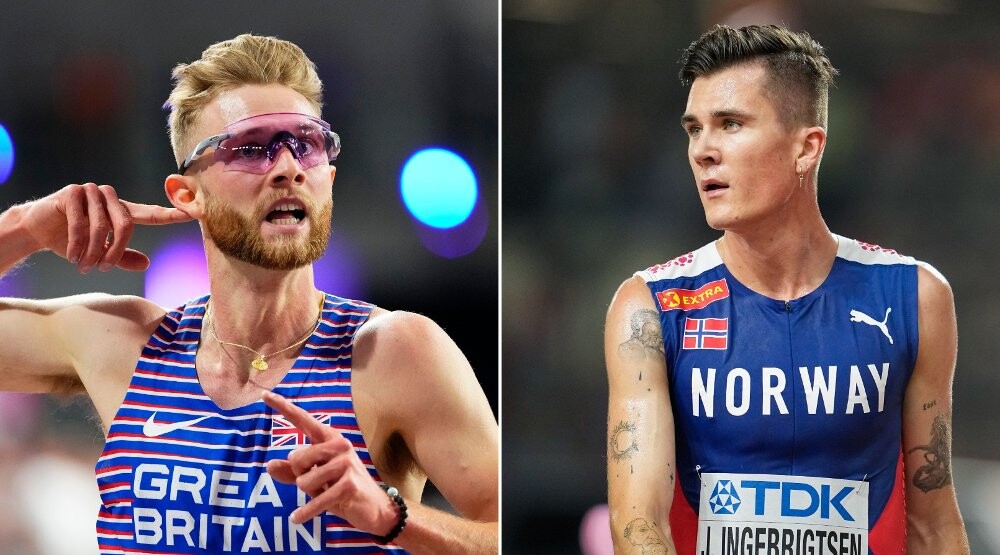
“I was just excited to go out and race against a world-class field and show that I’m still the best 1500m runner in the world,” Kerr said. “The training I’ve done is not anywhere near my peak. 3:45 right now is good enough but we’ve got to make some progress moving from here.”
“It’s a good fight,” Ingebrigtsen said. “Some of my competitors have clearly taken a step in the right direction but not a big step – not as big of a step that maybe is needed to be the favourite in Paris. But I think if anything, this is going to be an exciting summer. For me, I think it’s very good.”
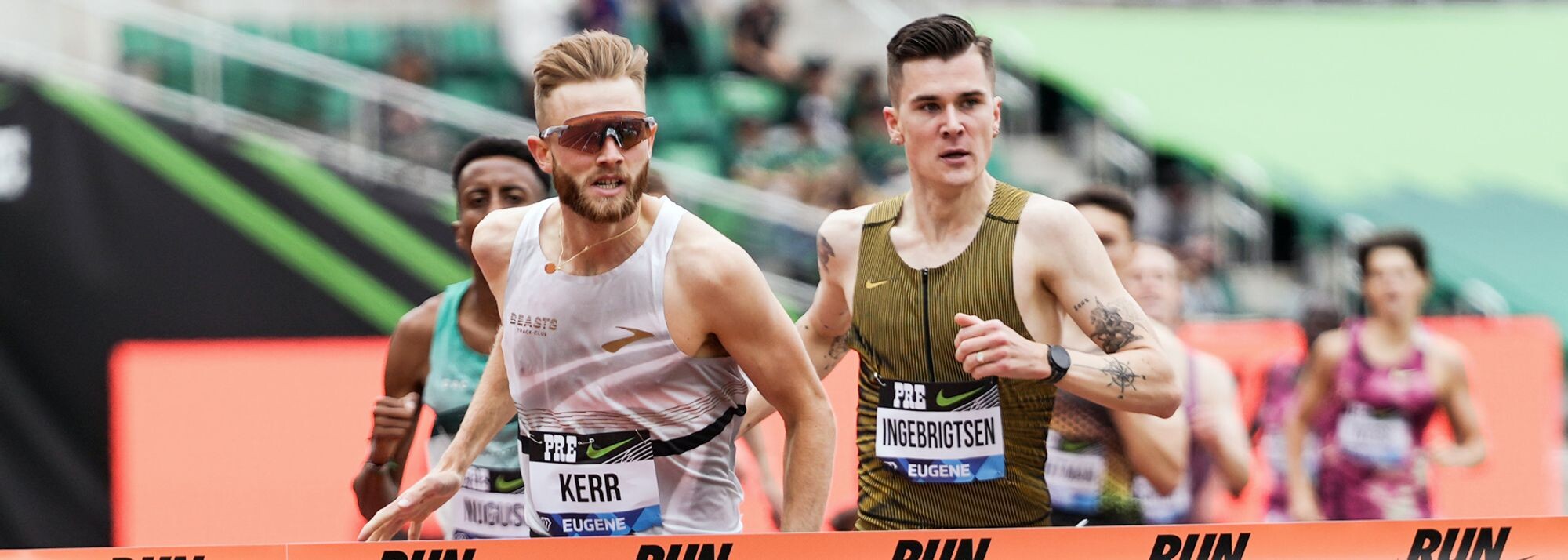
Kerr entered the race with full health and full confidence. After outkicking Ingebrigtsen, the Olympic champion, to win the world title in Budapest last year, Kerr set a world indoor best over two miles in February, then won the world indoor 3000m title in March in front of fans from his native Scotland.
Ingebrigtsen ended last season by winning the Prefontaine Classic mile in 3:43.73, just ahead of Nuguse, but then battled an achilles tendon injury during the winter. That did not necessarily mean he kept a low profile. Comments in the press by Ingebrigtsen began a back-and-forth.
When asked about his relationship with Ingebrigtsen at the press conference ahead of their recent clash in Eugene, Kerr responded: “I wouldn’t say this is a counselling session.”
No, but the race did prove to be a strategy session. The athletes at the front felt that the time through 800m, 1:53, was not too fast. With 600 metres to go, Kerr made his move.
“I thought it was a dumb decision and I knew if I thought it was a dumb decision then it probably was and that was going to scare myself and everyone else around me,” said Kerr, whose previous personal best of 3:48.87 was set two years ago.
Did such an early move surprise Ingebrigtsen?
“A little bit,” he said. “Because historically people have a tendency to not do what they say they’re going to do so they can feel very confident when they have to hold their mask but when we start racing everybody’s very insecure so I think it says a lot about their preparations. I think it was as expected but maybe still surprised that someone is deciding to all of a sudden start racing so I think that’s very good.”
Considering his delayed start to training, Ingebrigtsen was pleased with the time.
"If you do the conversion [to 1500m] it’s a pretty good start," he said. "I’m not a fan of the mile event by itself because it has nothing to do with my culture, definitely something British and American, which I’m not that familiar with, but I think it’s a very good start. I have lost quite a lot of training this winter."
While commentating inside the stadium for the BBC, Steve Cram watched as Kerr broke his 1985 British record of 3:46.32, then had a word with Kerr following the race.
“He said it was a long time coming and he was very proud of me and the way I raced today,” Kerr said.
Jake Wightman, the 2022 world champion at 1500m who missed nearly all of last season due to injury, was fifth in 3:47.87, just behind another British middle-distance specialist, Neil Gourley. Those fast times and gold medals since 2022 were the background to why Kerr said the sport is “heading into the golden era of 1500m running in the UK and in Europe”.
Ingebrigtsen, the day before, had said that being available to race often against top competition was something he considered part of an athlete’s job. Asked if he needed to reassess how to race Kerr tactically given Kerr’s bold and somewhat surprising early move to the front, Ingebrigtsen pointed to his literal track record.
“The last couple of years obviously I have been the only one racing for many of the races so when someone all of a sudden decides to participate other than just following, it’s something different,” Ingebrigtsen said. “So it’s not surprising but it’s just something different.”
Asked if he was suggesting Kerr – who claimed his first Diamond League victory Saturday – had not raced often enough, Ingebrigtsen asked a reporter about the September 2023 meeting in Eugene, when Nuguse was in the field, but not Kerr.
“What about the last time we were here?” Ingebrigtsen said.
Nuguse was third in Eugene in 3:46.22, and while that was behind his 3:43.97 personal best from September, that race occurred at the season’s very end. To run 3:46 in May, at the start of a long season, left Nuguse smiling afterwards, even as he noted he needs to train to be more capable of closing quicker in the final 100m.
“I definitely feel a lot stronger and more comfortable being closer to the front,” Nuguse said. “In a race with so many great guys I think just to come out with third and still be pulling away from it is really huge. I’m feeling really good compared to last year.”
by Andrew Greif for World Athletics
Login to leave a comment
Paris 2024 Olympic Games
For this historic event, the City of Light is thinking big! Visitors will be able to watch events at top sporting venues in Paris and the Paris region, as well as at emblematic monuments in the capital visited by several millions of tourists each year. The promise of exceptional moments to experience in an exceptional setting! A great way to...
more...Youngster Simon Koech is plotting an Olympic debut
Steeplechaser Simon Koech is plotting an Olympic debut as he fights for a slot at the upcoming national trials.
African Games bronze medallist Simon Koech will be looking to bounce back as he eyes the Paris 2024 Olympic Games.
Koech’s main focus will be to qualify for the event at the Olympic trials coming up this weekend at the Nyayo National Stadium. The 21-year-old has been in fair shape this season, and he has hopes to rewrite history in the city of love.
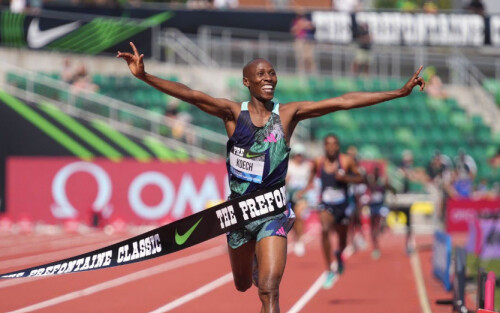
The former world under-20 bronze medallist is aware of the tough opposition awaiting him in the trials and he is ready to striker.
“For now, the most important thing for me is to work extra hard and get into the Kenyan team,” Koech said following his second-place finish at the National Championships that were held at the Ulinzi Sports Complex.
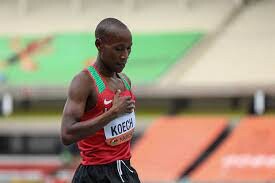
The event was also used as trials for the Africa Senior Athletics Championships in Douala, Cameroon, and Koech intends to also improve on his bronze medal from the African Games.
He opened his season with a second-place finish at the African Games trials before finishing third at the African Games. He also competed in the 5000m, where he finished eighth.
“Whenever I step foot on the track, I usually start planning on the best way to execute a race. It depends on the pace and hoe each lap is going. I expect to do much better with the help of God,” he added.
Meanwhile, Koech made an impact last season, with a qualification to the World Championships in Budapest, Hungary but did not live up to the billing, fading to finish seventh.
However, he bounced back at the Prefontaine Classic, the Diamond League Meeting final in Eugene, Oregon, where he claimed his first trophy. Koech clocked a stunning 8:06.26 to win the race, sending warning shots to Ethiopians and Moroccans this Olympic season.
The youngster launched his career in 2021, where he made his first national team, competing at the World Under-20 Championships. In 2022, Koech did not compete in any race and he made a comeback in 2023.
by Abigael Wuafula
Login to leave a comment
Paris 2024 Olympic Games
For this historic event, the City of Light is thinking big! Visitors will be able to watch events at top sporting venues in Paris and the Paris region, as well as at emblematic monuments in the capital visited by several millions of tourists each year. The promise of exceptional moments to experience in an exceptional setting! A great way to...
more...Daniel Mateiko explains why teaming up with Nicholas Kimeli guarantees Kenya an Olympic medal
Daniel Mateiko has given a reason why he believes teaming up with Nicholas Kimeli will earn Kenya the coveted gold medal.
The reigning Ras Al Khaimah Half Marathon champion Daniel Mateiko has explained why teaming up with Nicholas Kimeli guarantees Team Kenya an Olympic medal in the men’s 10,000m.
Mateiko and Kimeli got direct Olympic qualification following their impressive runs at the Prefontaine Classic, the Diamond League Meeting in Eugene, which also served as the Kenyan trials for the 10,000m.
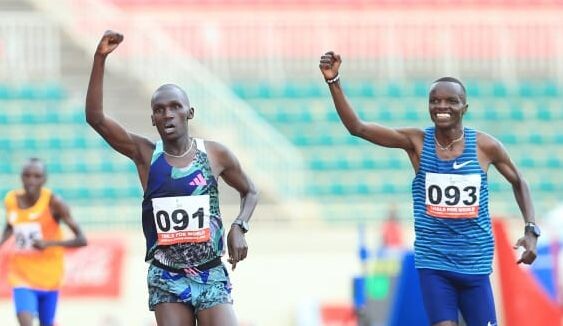
The 25-year-old clocked a stunning world leading and personal best time of 26:50.81 to win the race as Kimeli finished second in a personal best time of 26:50.94. The third participant will be selected by a panel of selectors.
The 2022 Antrim Coast Half Marathon champion noted that he trains with Kimeli, something that places them at a greater level of winning the gold medal that was last won during the 1986 Olympic Games by Naftali Temu.
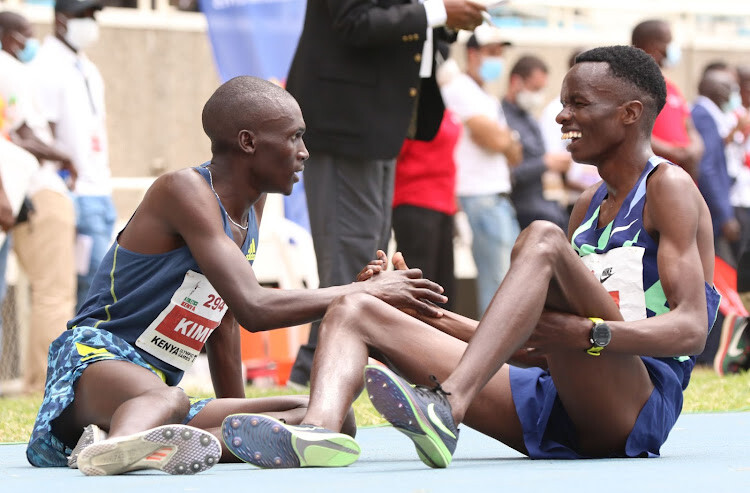
“Firstly, Kimeli and I train together, so I think we make a great team since we have been training together and we are going to Paris together, so we shall do well. It’s all about working on the confidence and believing in yourself that you can win.
“Actually, my journey in athletics has had ups and downs, sometimes you fail sometimes you succeed. Both of them are important in my career because when you fail, you grow,” he said.
The Kenyan also insisted that he will not change any of his training techniques in the build up to the global bonanza. He admitted that training with some of the greatest long-distance runners including Eliud Kipchoge and Geoffrey Kamworor has helped him gain confidence and helped him learn a lot of skills.
“I believe my preparation will be good and I have no plans of changing any program that I have been doing so I go and do my best there. I hope to do my best.
“It’s a great motivation for me to be training with great athletes like Eliud Kipchoge and Geoffrey Kamworor and I have learnt a lot of tactics and resilience from them,” Mateiko said.
by Abigael Wuafula
Login to leave a comment
Paris 2024 Olympic Games
For this historic event, the City of Light is thinking big! Visitors will be able to watch events at top sporting venues in Paris and the Paris region, as well as at emblematic monuments in the capital visited by several millions of tourists each year. The promise of exceptional moments to experience in an exceptional setting! A great way to...
more...Why the "Norwegian Method" Training Craze Is Here to Stay
In a highly anticipated race at the 2024 Prefontaine Classic, Jakob Ingebrigsten pitted his revolutionary "Norwegian method" of training against some of the best milers in the world.
The “Mile of the Century”—of the twentieth century, that is—was a duel between John Landy and Roger Bannister at the 1954 Empire Games in Victoria. The two men were, at the time, the only two sub-four-minute milers in the world: Bannister had beaten Landy to the punch by 46 days, but Landy was the reigning world record holder. Their end-of-season clash was as heavily anticipated as any heavyweight boxing duel. Landy led until the final bend, at which point he famously glanced over his left shoulder at precisely the moment that Bannister surged past on his right.
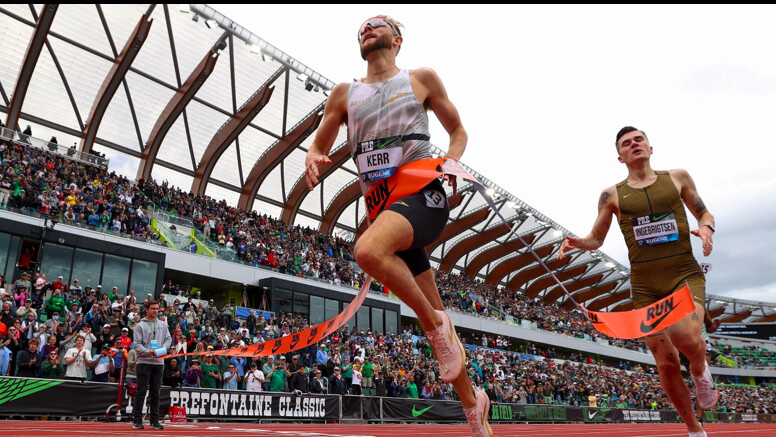
The mile of the current century, at least in terms of pre-race hype and intriguing storylines, took place on Saturday at the Prefontaine Classic track meet in Eugene. It was a gigantic multidimensional grudge match between Jakob Ingebrigsten, the blunt-speaking Norwegian wunderkind who won the 2021 Olympics at the tender age of 20 and whose training methods have sparked wholesale upheaval in the endurance world, and almost every runner who has beaten him or come close to it in recent years—most notably Josh Kerr, the Scotsman who upset him at last summer’s World Championships and has been engaged in an increasingly testy war of words with him ever since.
What gave the race an extra layer of significance, beyond the usual battle for personal supremacy, was that clash of training ideas. Ingebrigtsen is the foremost exponent of what has come to be known as the “Norwegian method” of endurance training. Its hallmark is carefully controlled workout intensities, pushing just hard enough to stimulate adaptation without incurring fatigue that would compromise the next workout. In Ingebrigtsen’s hands, that involves twice-a-week double threshold sessions: workouts like ten times a kilometer with one minute recovery in the morning and evening, with regular ear pricks to check lactate levels and keep the intensity in the right zone, on Tuesdays and Thursdays.
A similar approach has also taken Norwegians to the top of the podium in other sports like triathlon and cross-country skiing, and athletes from other countries have begun emulating it. Norwegian-style training is “the big, sexy thing,” as U.S. miler Hobbs Kessler put it. It might even be “the next step in the evolution of distance running training,” as a group of sports scientists suggested in an academic paper last year (which I wrote about here). It’s very hard to do controlled studies of entire training philosophies, as opposed to specific workouts. So the best litmus test, I suggested, would be clashes on the track leading up to the Paris Olympics. Saturday in Eugene was the first such test.
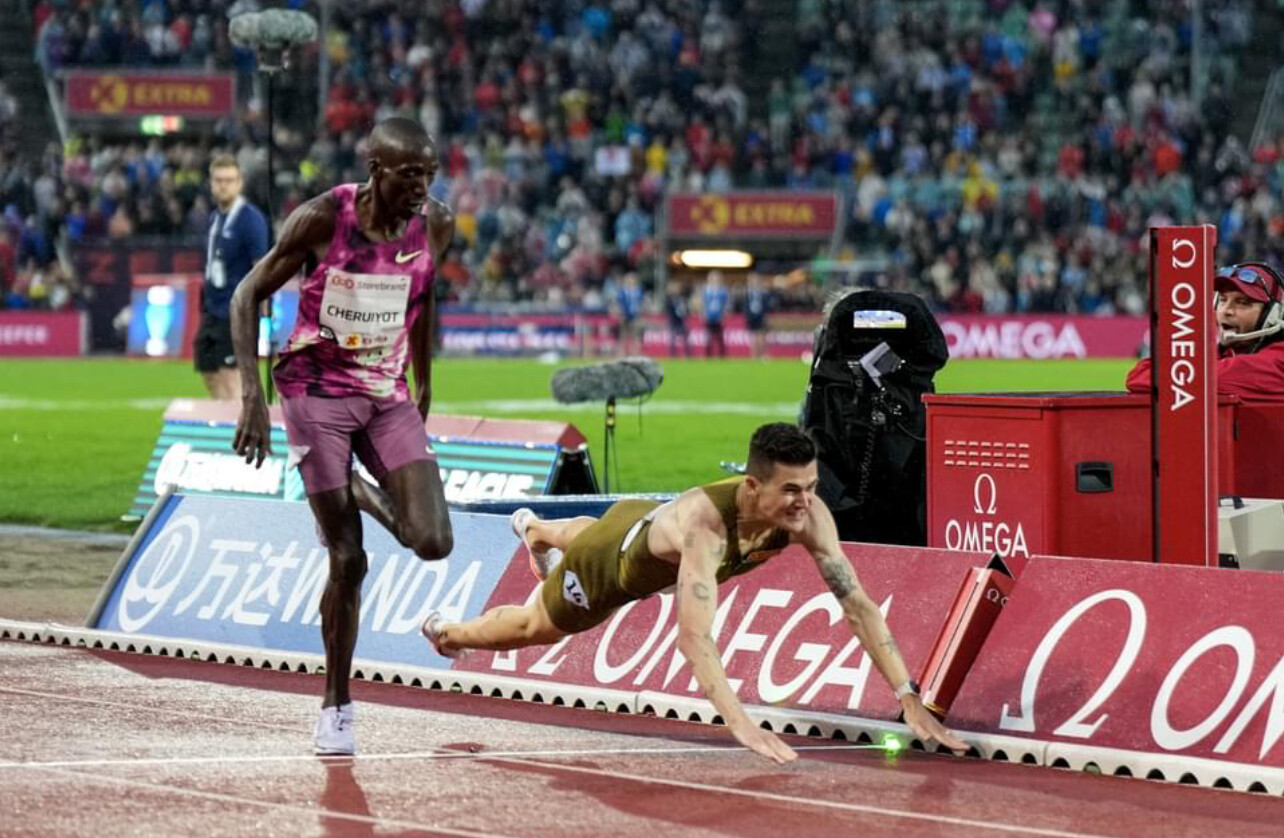
Sexy new things don’t stay sexy and new forever, and it’s fair to say that some of the shine of Norwegian training has worn off since last year. The most notable reputational hit was Kerr’s 1,500-meter win at last summer’s World Championships, kicking past Ingebrigtsen in the final lap after the Norwegian had led most of the race. One loss could be blamed on bad luck, but that made three times in a row: another Scottish runner, Jake Wightman, had outkicked Ingebrigtsen in strikingly similar fashion at the 2022 World Championships, and Ethiopian star Samuel Tefera did the same at the 2022 World Indoor Championships. That starts to look like a systemic flaw in the training approach. While Ingebrigtsen was carefully monitoring his moderate-intensity threshold intervals, Kerr and Wightman and Tefera were presumably ripping off all-out sprints—and they had a racing gear that he seemed to lack.
In Eugene, a rabbit led the field through a quick first half-mile. When he stepped off, it was Kenyan runner Abel Kipsang who pushed onward, with Ingebrigtsen following patiently behind. This was already a surprise: Ingebrigtsen is usually the one pushing the pace. Then, with a lap and a half still remaining, it was the fast finisher Kerr who surged into the lead and made an early bid for victory. Each man, it seemed, was playing the other’s game. The last lap ticked by in slow motion, Kerr unable to pull away and Ingebrigtsen unable to close the gap. That’s how it finished: Kerr in 3:45.34, Ingebrigtsen in 3:45.60, and then seven more men under the once-impregnable 3:50 barrier. In 11th place was Cam Myers, a 17-year-old from Australia, with a time of 3:50.15—two seconds faster than Ingebrigtsen himself ran at Pre as a 17-year-old in 2018.
It would be as foolish to give up on Norwegian training based on a few individual losses as it would be to anoint it the “next step” on the basis of a few individual wins. But if Ingebrigtsen keeps losing, that’s going to reinforce doubts about whether his approach is as effective for head-to-head racing as it is for time trials. There are plenty of caveats: for example, an Achilles injury disrupted Ingebrigtsen’s training for several months over the winter. But there are also other questions. What has happened to his older brothers Henrik and Filip? Both were world-class milers in their own right, but both have been struggling in recent years, as have other prominent Norwegian athletes like Olympic triathlon champion Kristian Blummenfeld, raising questions about the sustainability of the Norwegian approach.
And then there’s the fact that, despite all the hype about the mile, the real marquee event at Pre turned out to be the women’s 10,000 meters, where Kenya’s Beatrice Chebet became the first woman to dip under 29 minutes with a world-record clocking of 28:54.14. Kenyan runners (and their Ethiopian rivals) have been at the top for so long that it’s easy to take their dominance for granted. When I was in college in the 1990s, we were all fascinated by “the Kenyan Way.” That was the subtitle of Toby Tanser’s 1997 book, Train Hard, Win Easy. The secret, of course, was that there was no secret. There was a famous (and almost certainly apocryphal) anecdote about a Kenyan coach who was asked what separated his top runners from the merely good ones. All of them had grown up running to and from school each day, he explained; the champions also went home for lunch.
Part of the current fascination with the Norwegian training method is the suggestion that there is, in fact, a secret—a quantifiable formula, expressed in milimoles per liter of lactate in your blood, to optimize your training, rather than simply an admonition to work hard. But that’s a reductive view of what Ingebrigtsen and his Nordic peers are aiming for. The underlying philosophy of Norwegian training is that a harder workout isn’t always a better one, because it will take too long to recover from. This is hardly a new insight, but in the great merry-go-round of training fads, it was perhaps overdue for a resurgence.
In fact, the original Mile of the Century had a similar subtext. Bannister was the light-training amateur who ran on his lunch hour; Landy was a workout hero with “an insatiable appetite for interval running,” as Bannister wrote. “The great contrast in our training methods was not lost of the Press.” Bannister won the race, but it’s Landy’s training approach that proved to be more influential on subsequent generations. As Ingebrigtsen’s final showdown with his rivals in Paris looms, that’s worth remembering: even if he loses, and even if we decide that lactate meters are unnecessarily complicated, we might still have something to learn from his unorthodox training.
by Outside Online
Login to leave a comment


